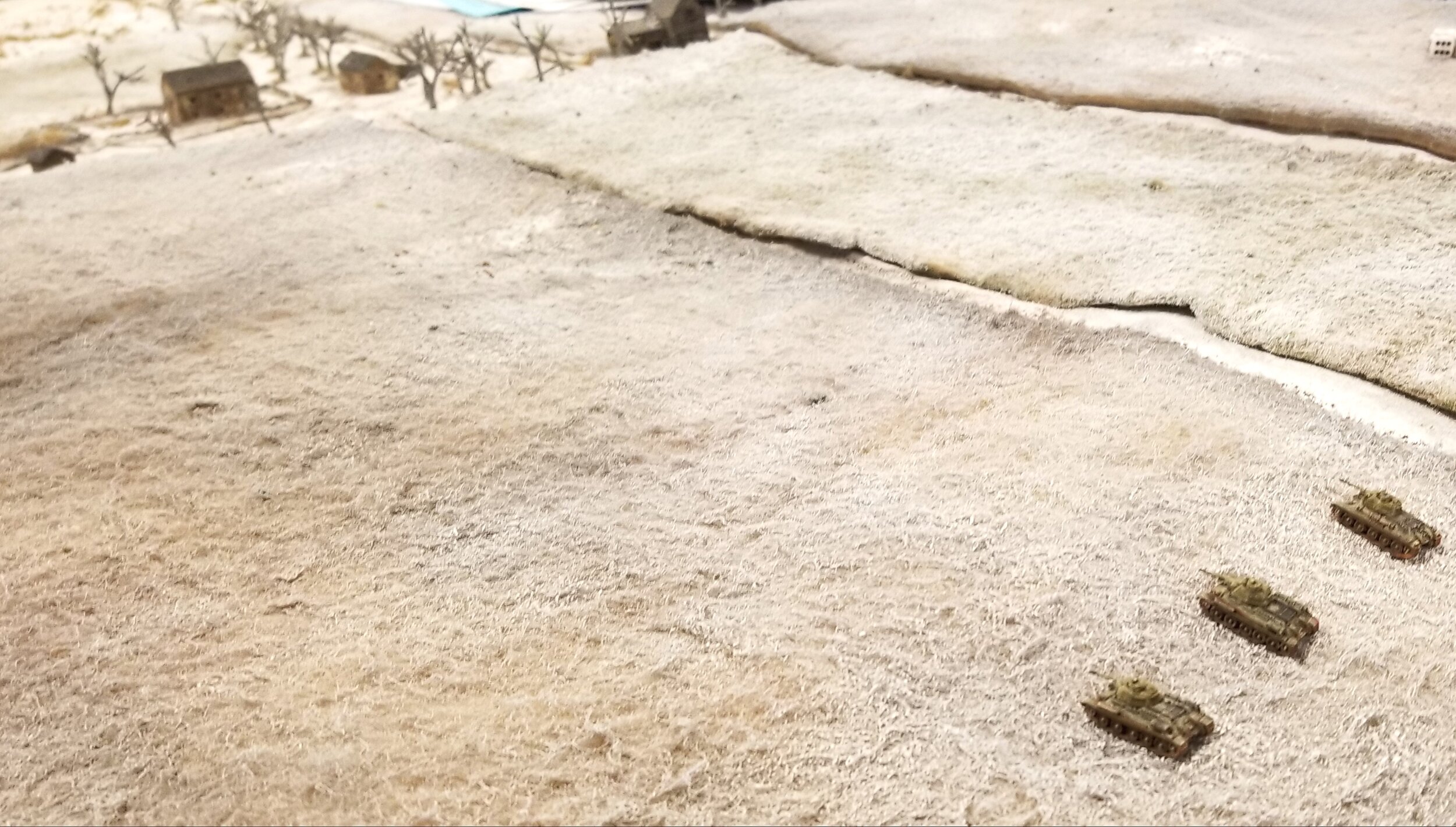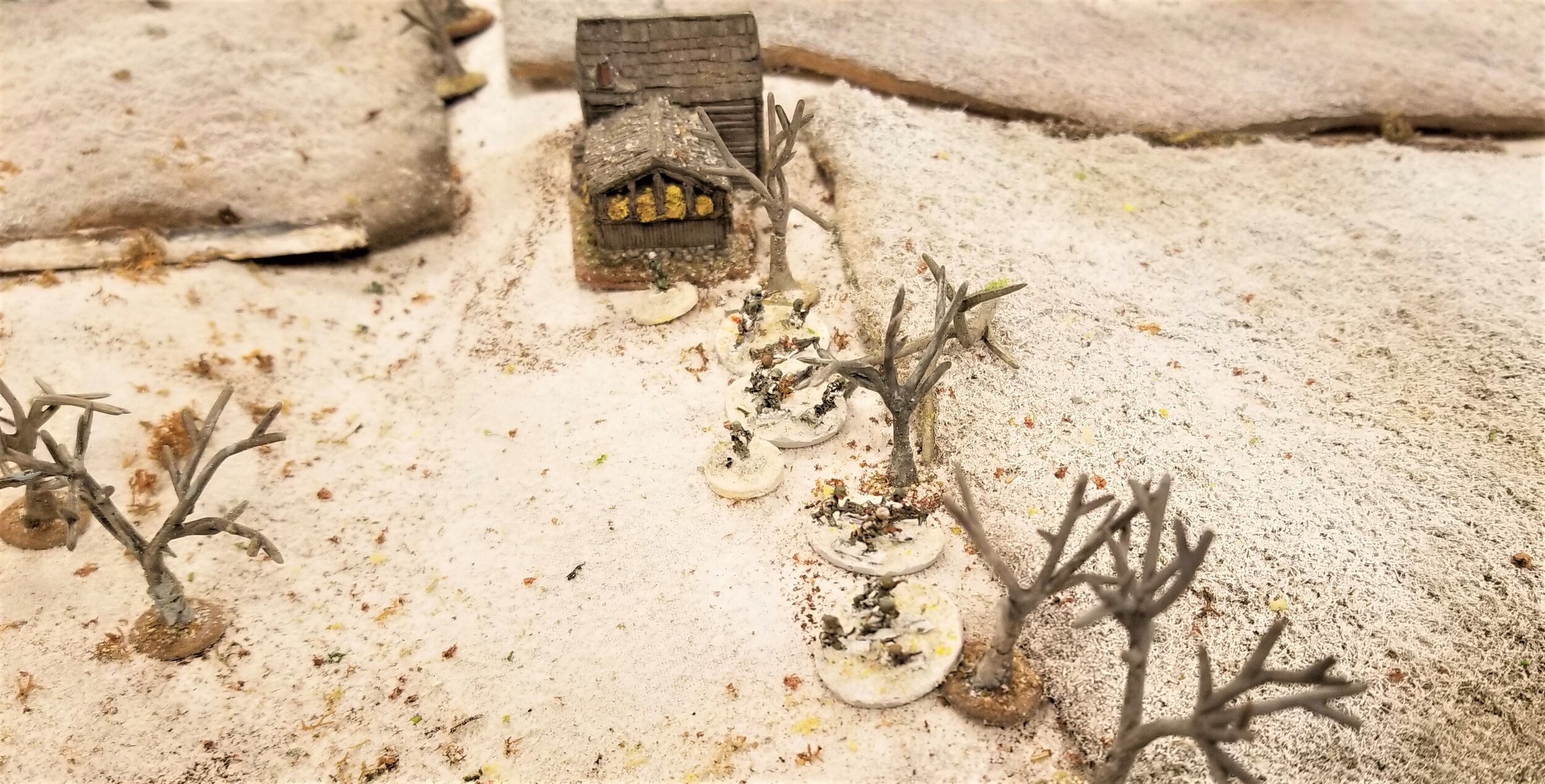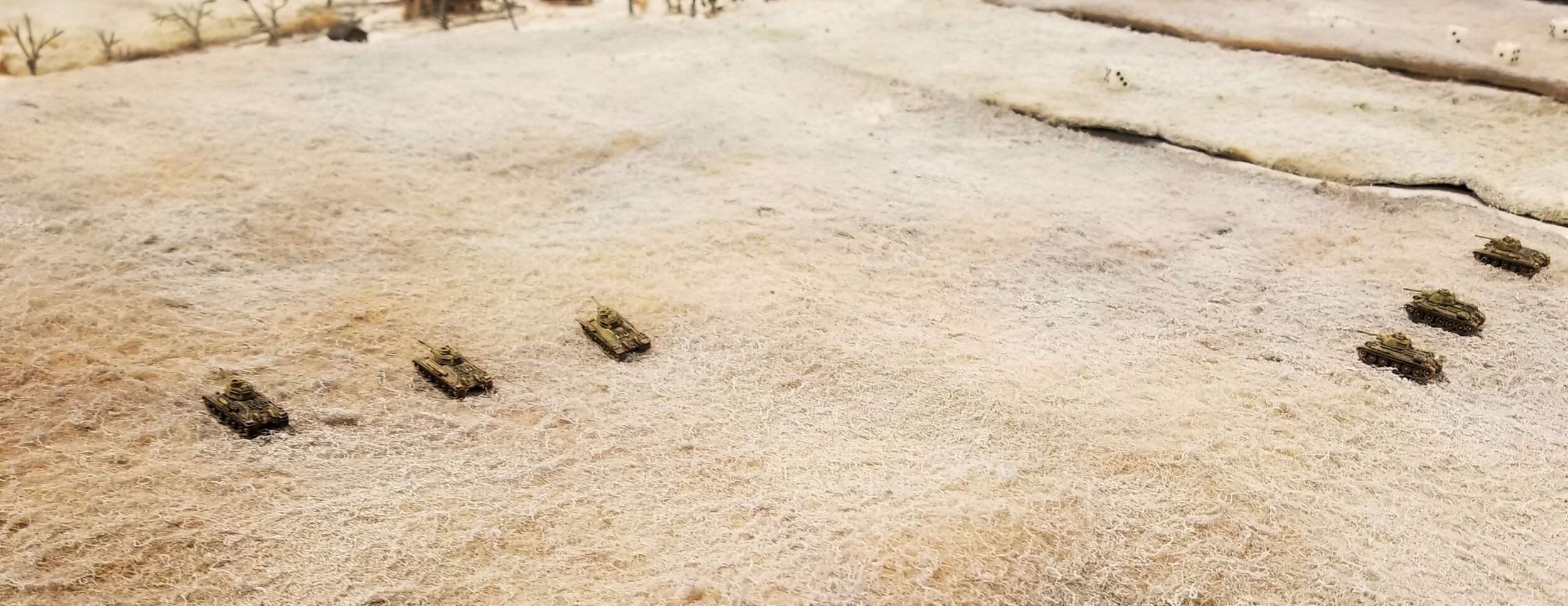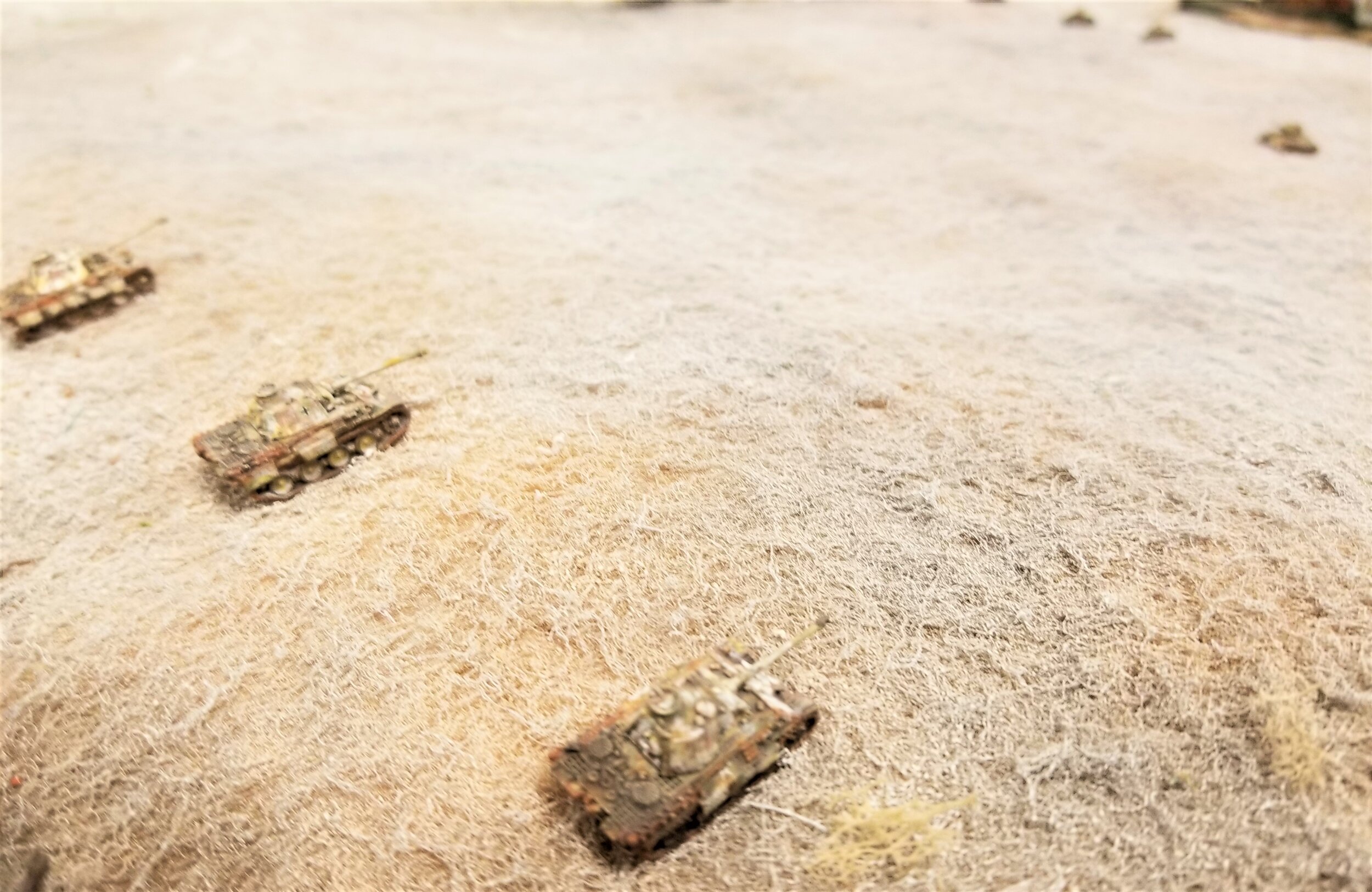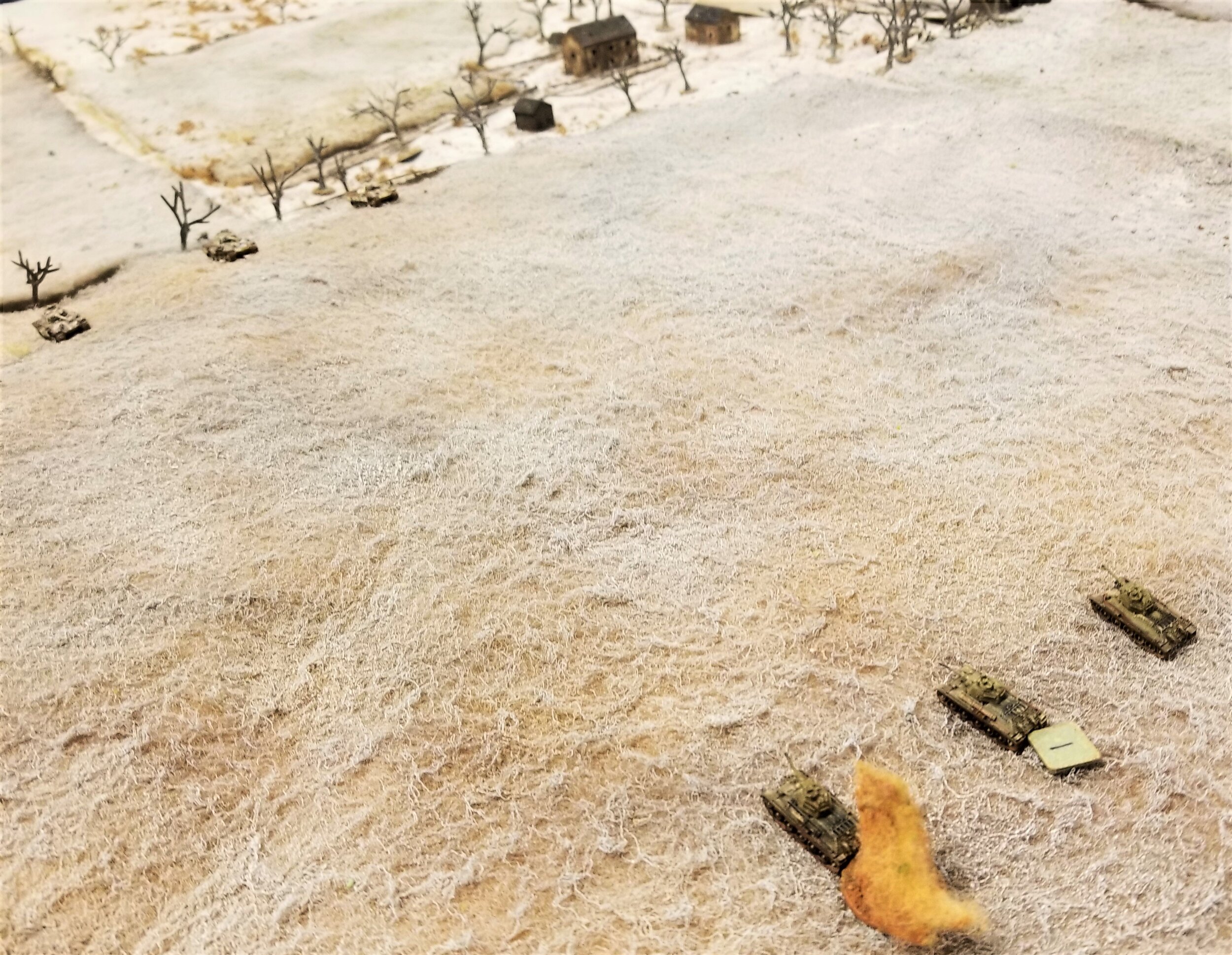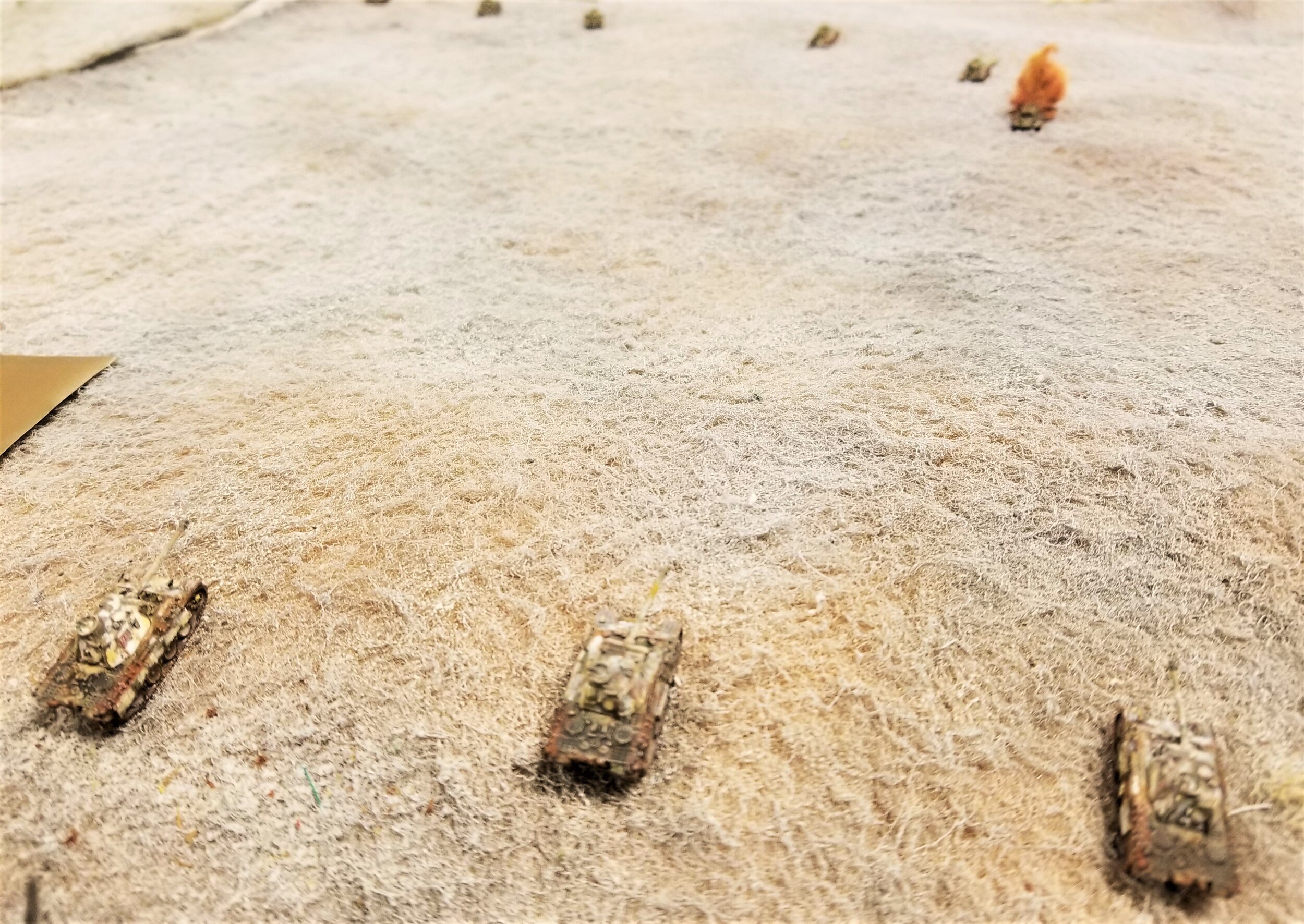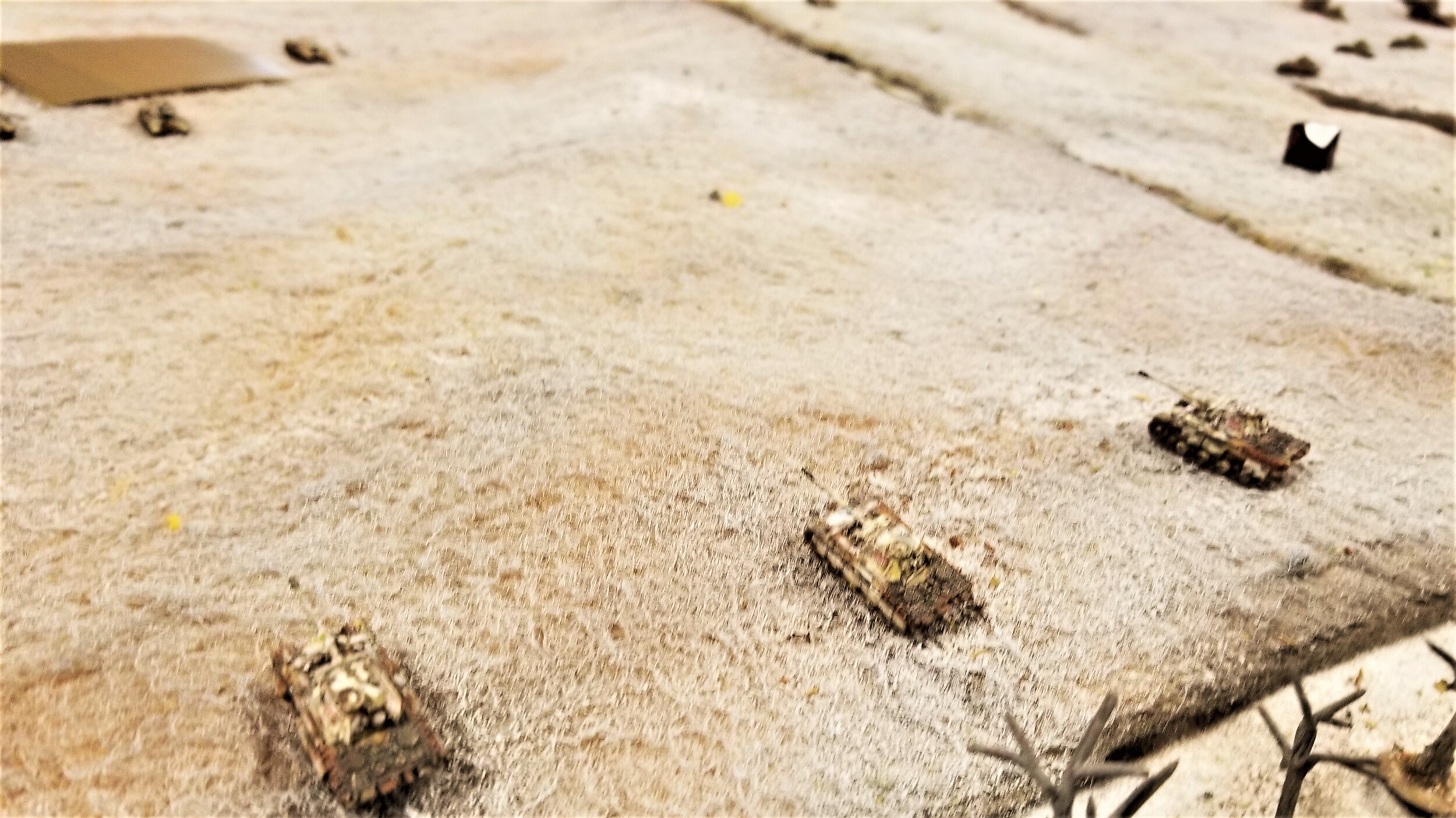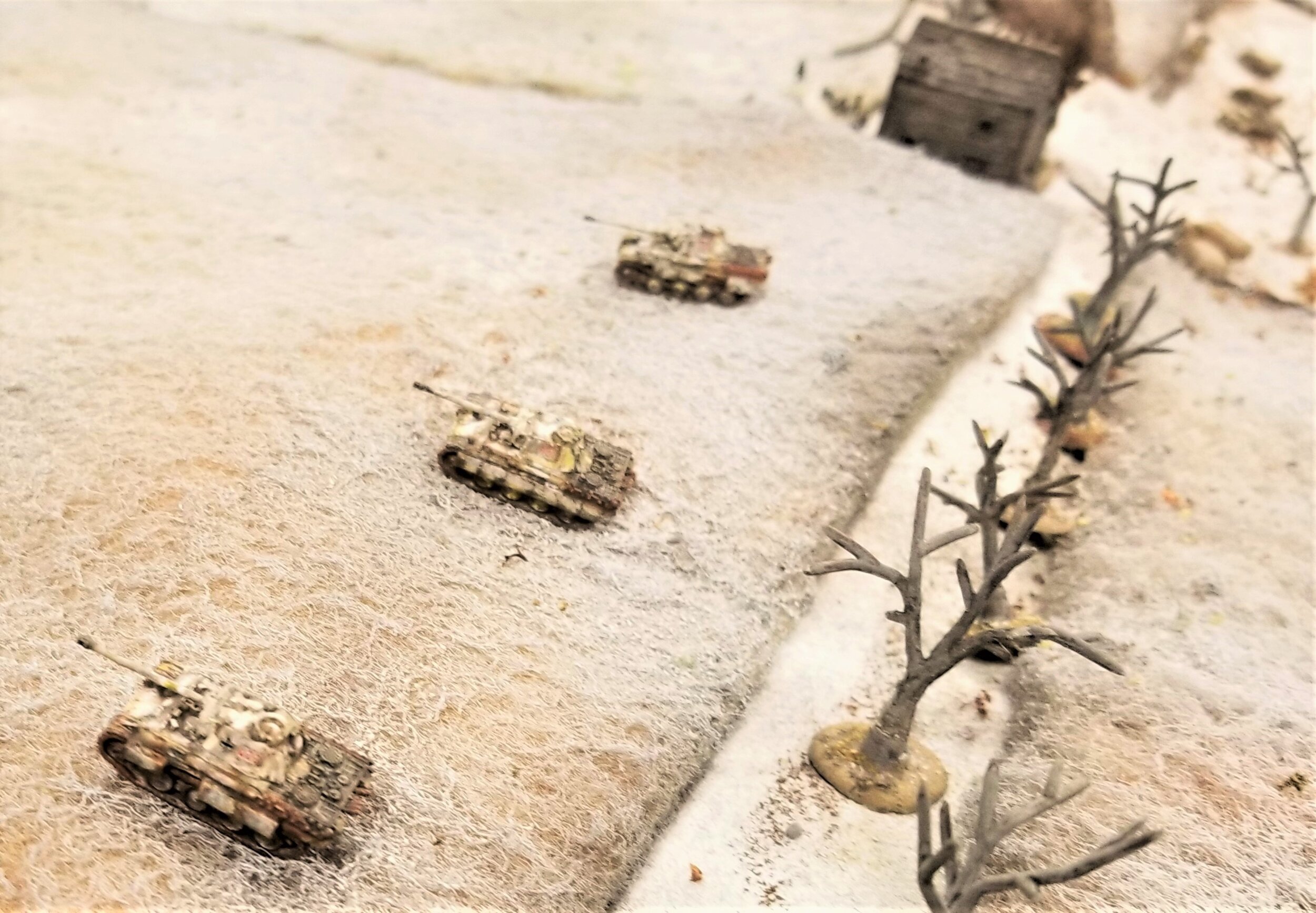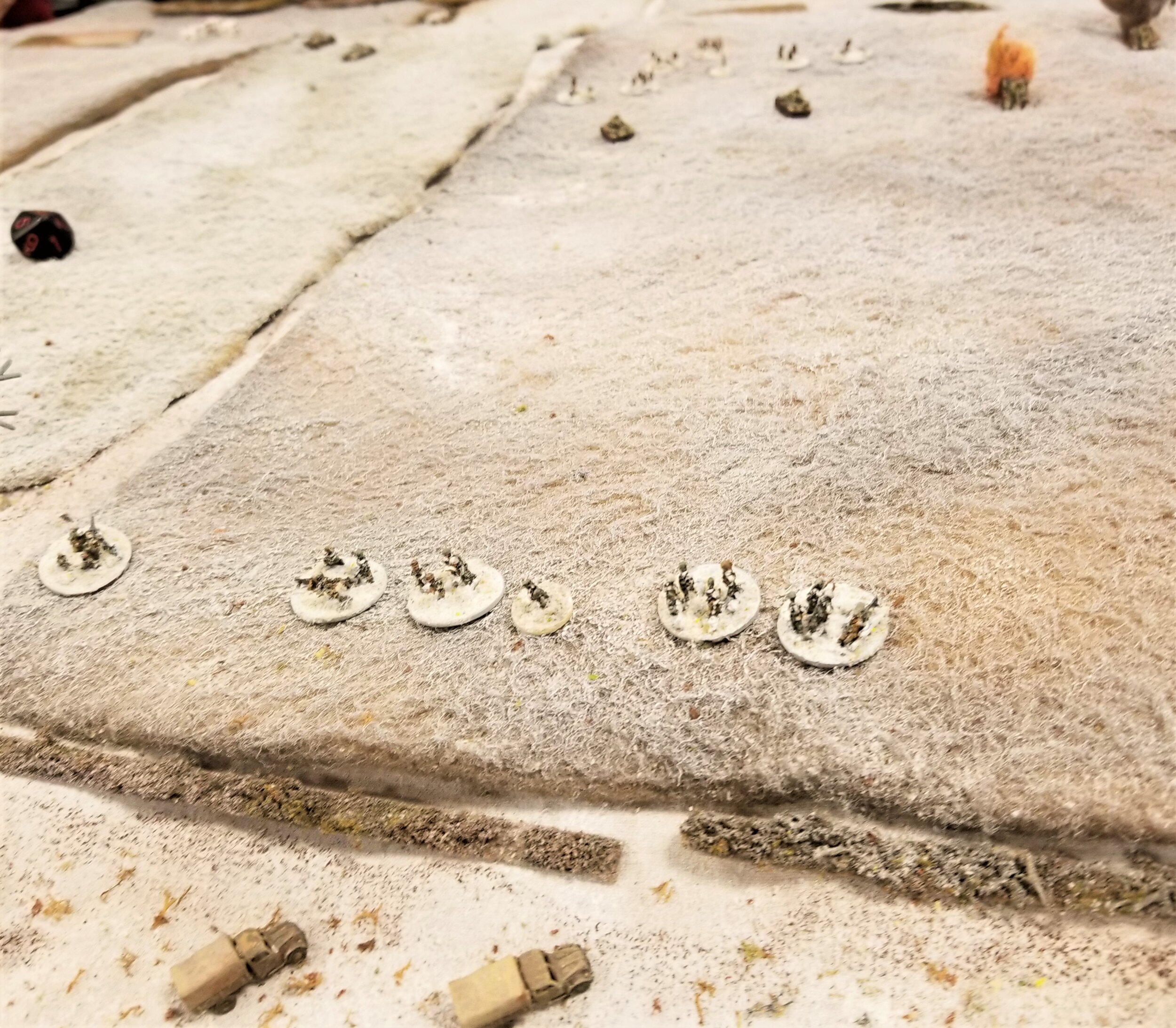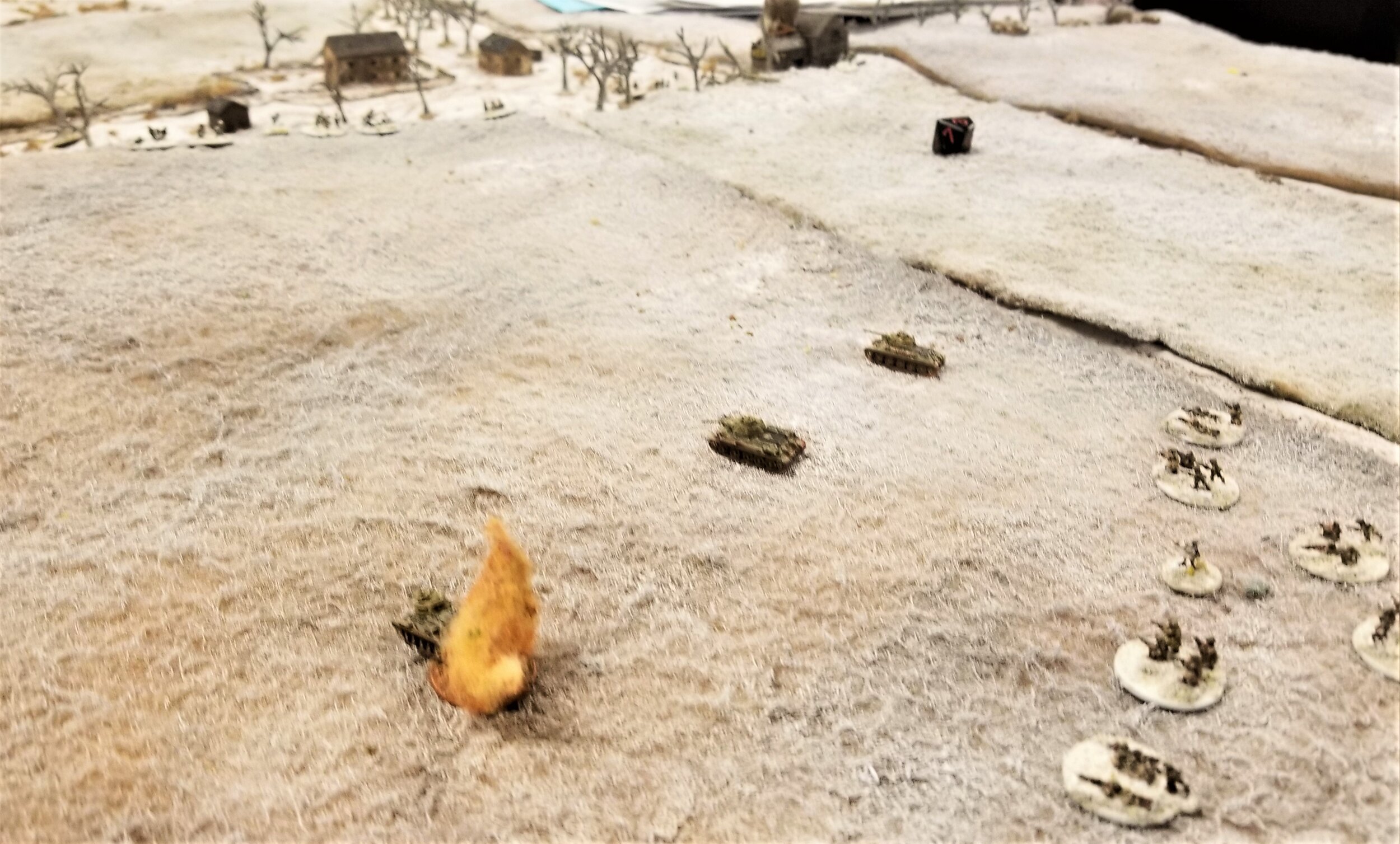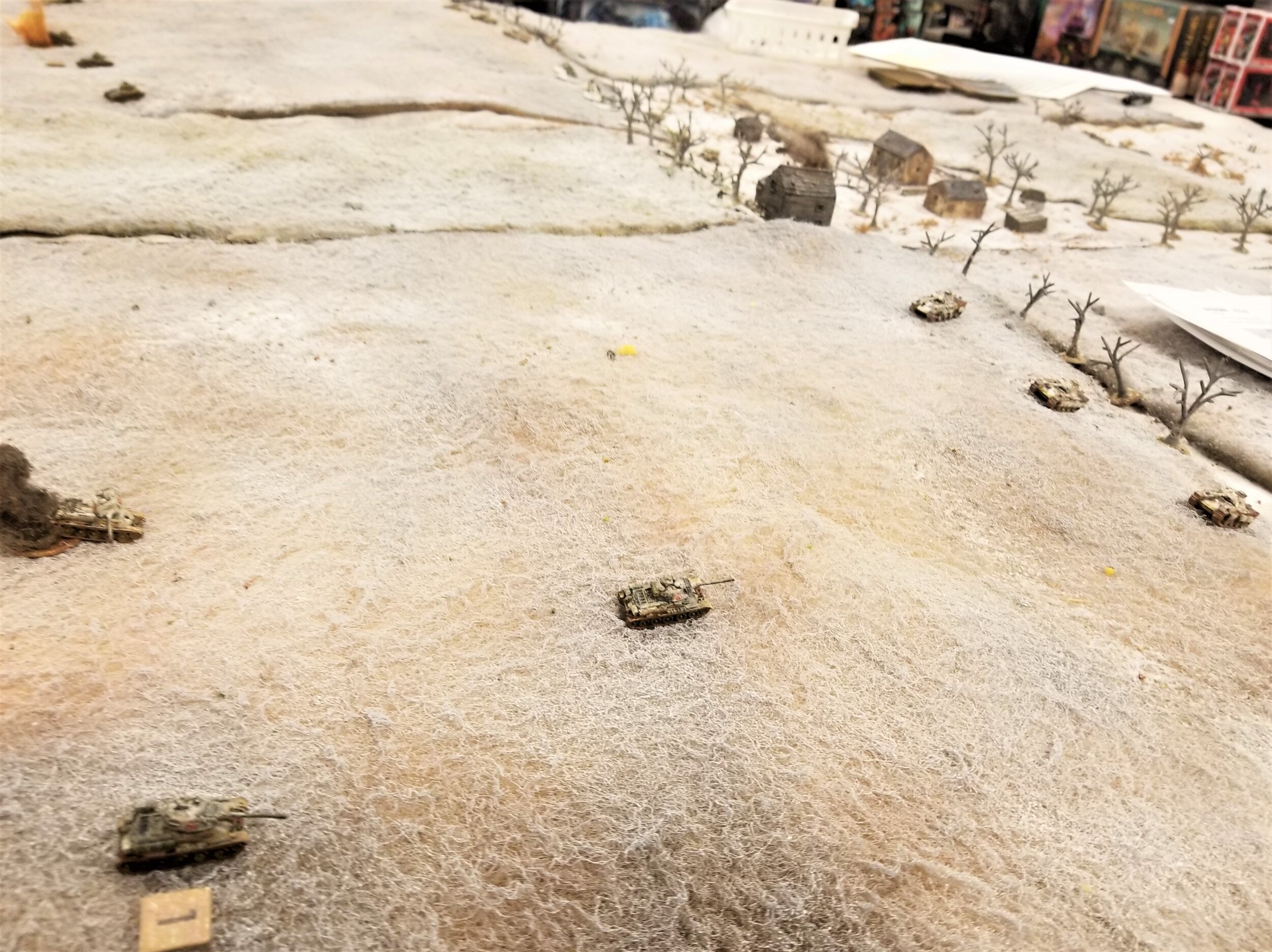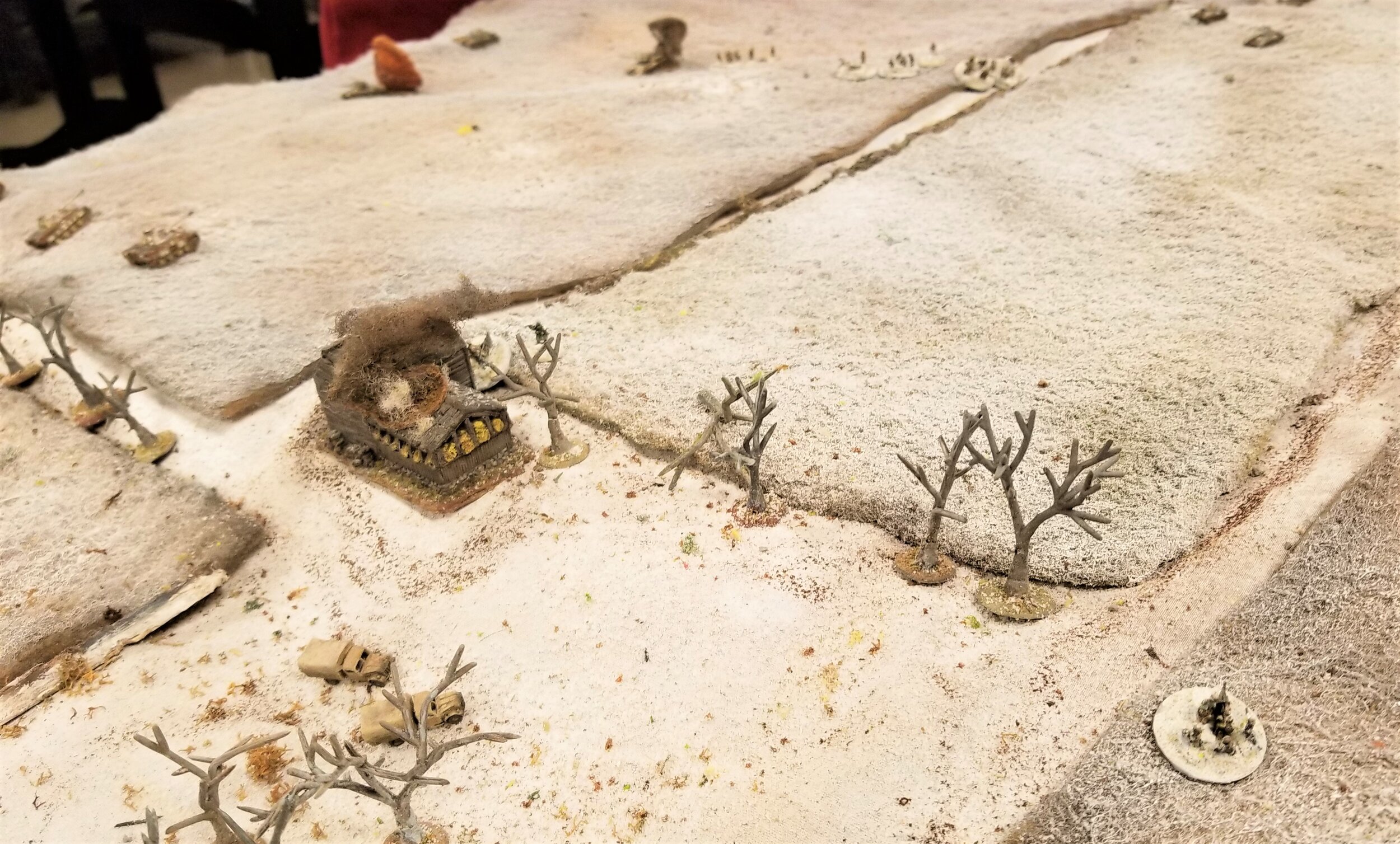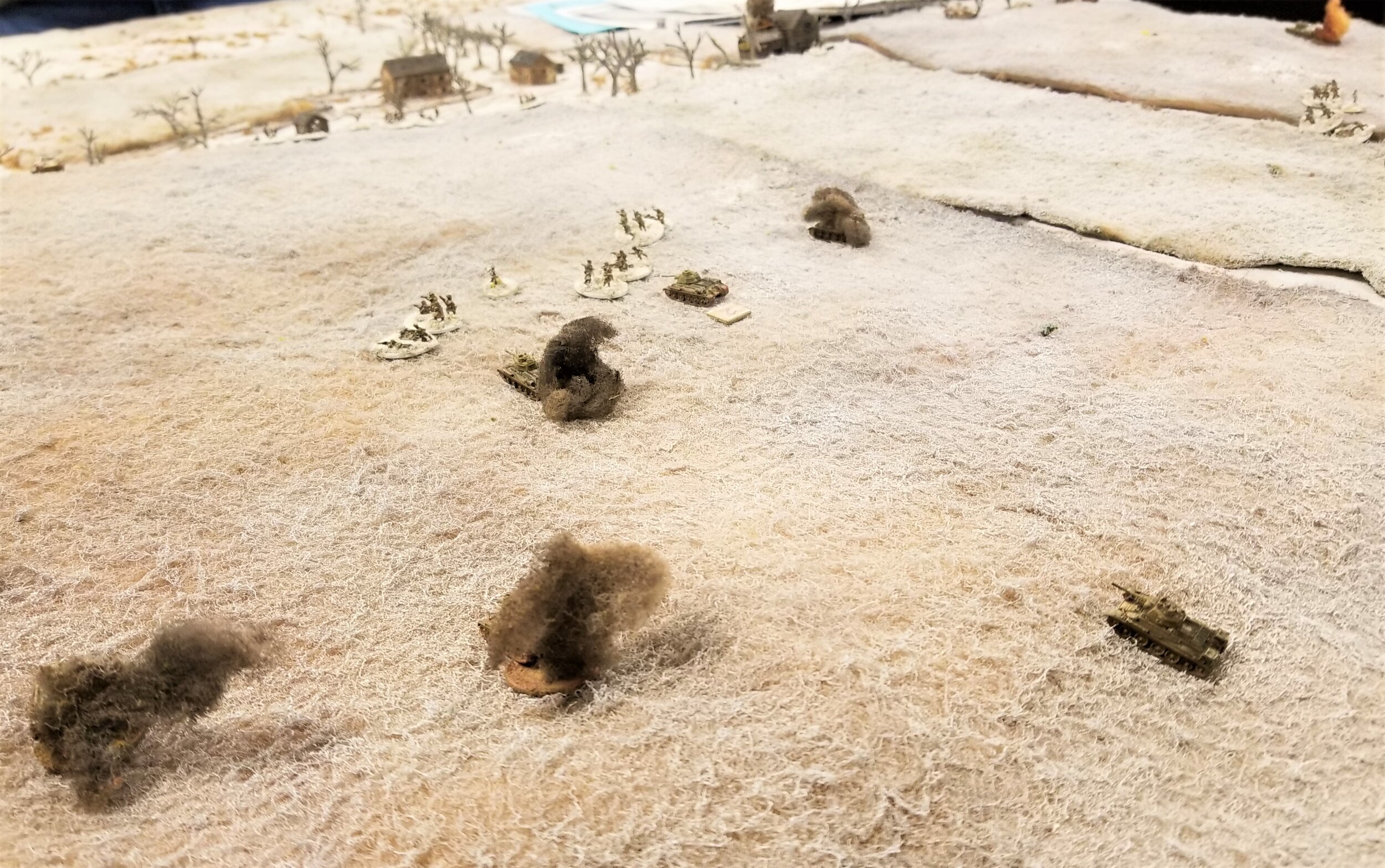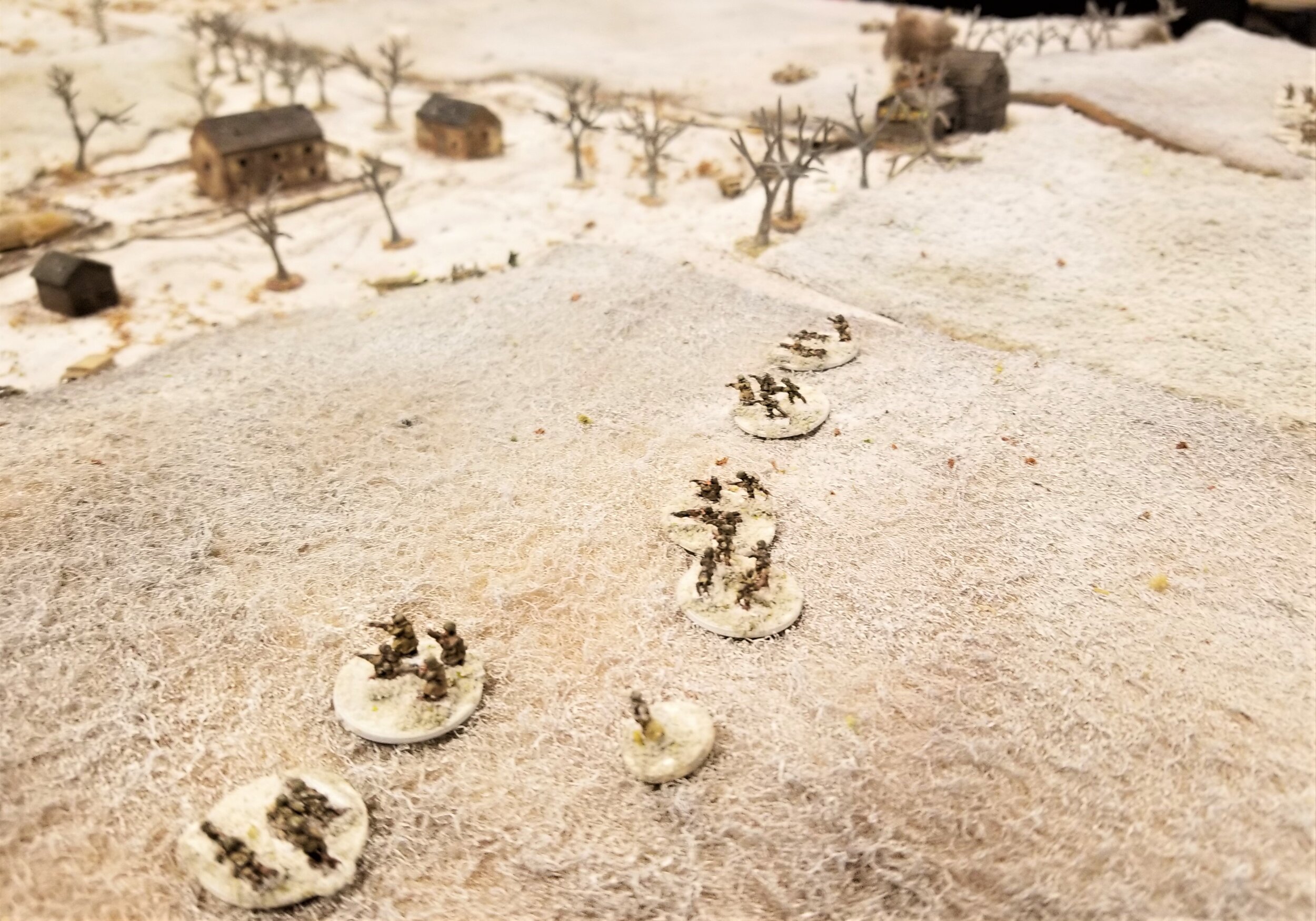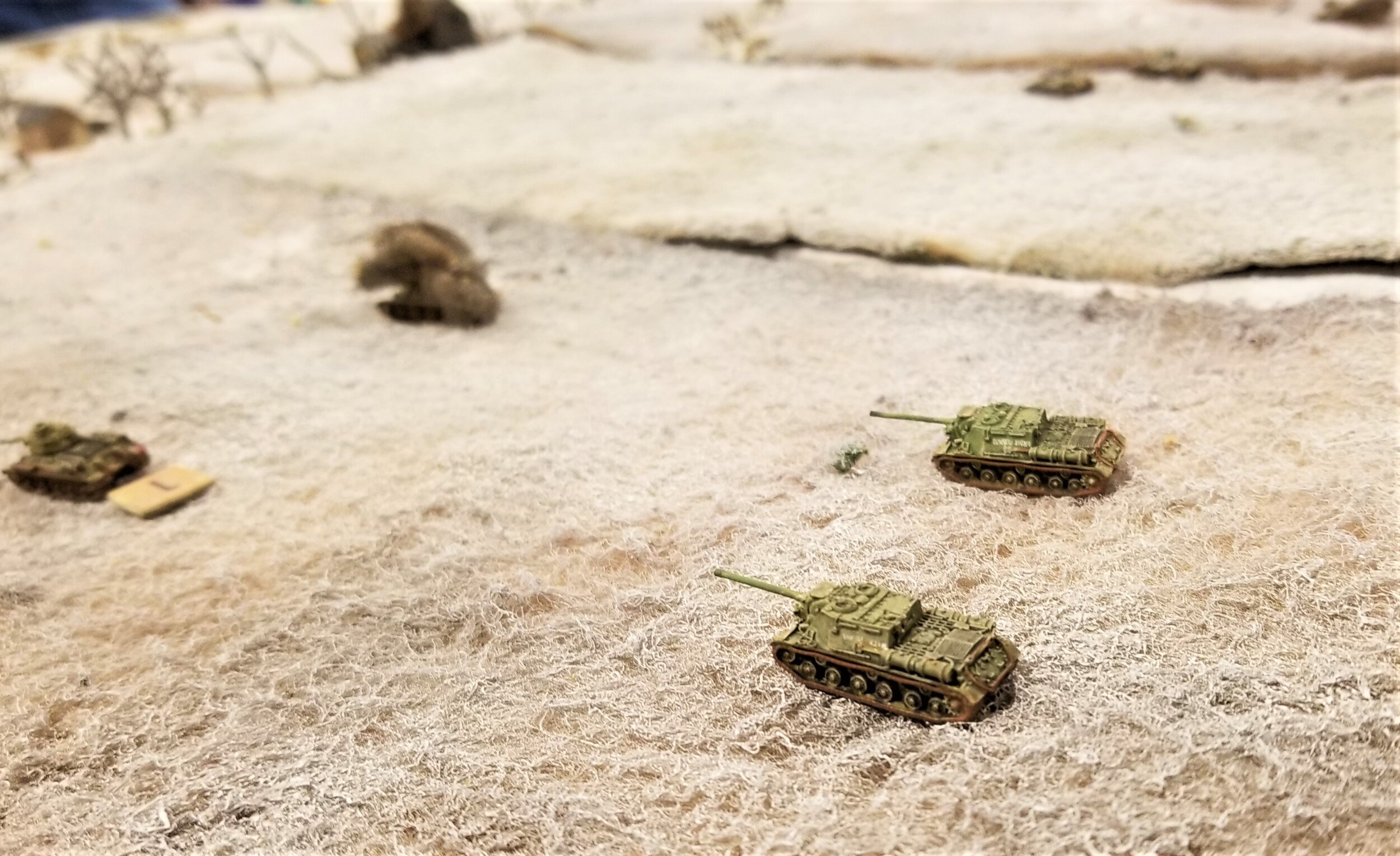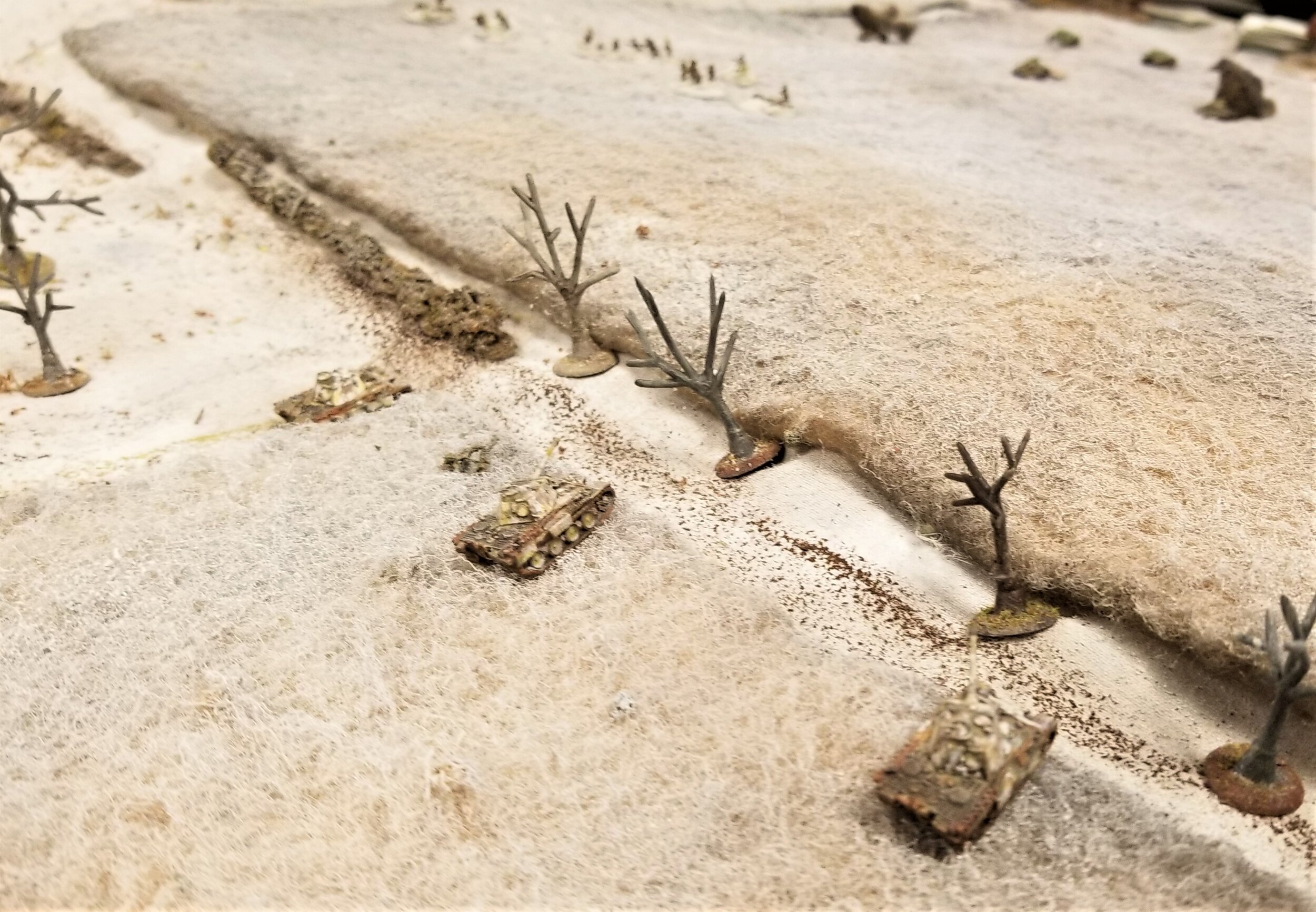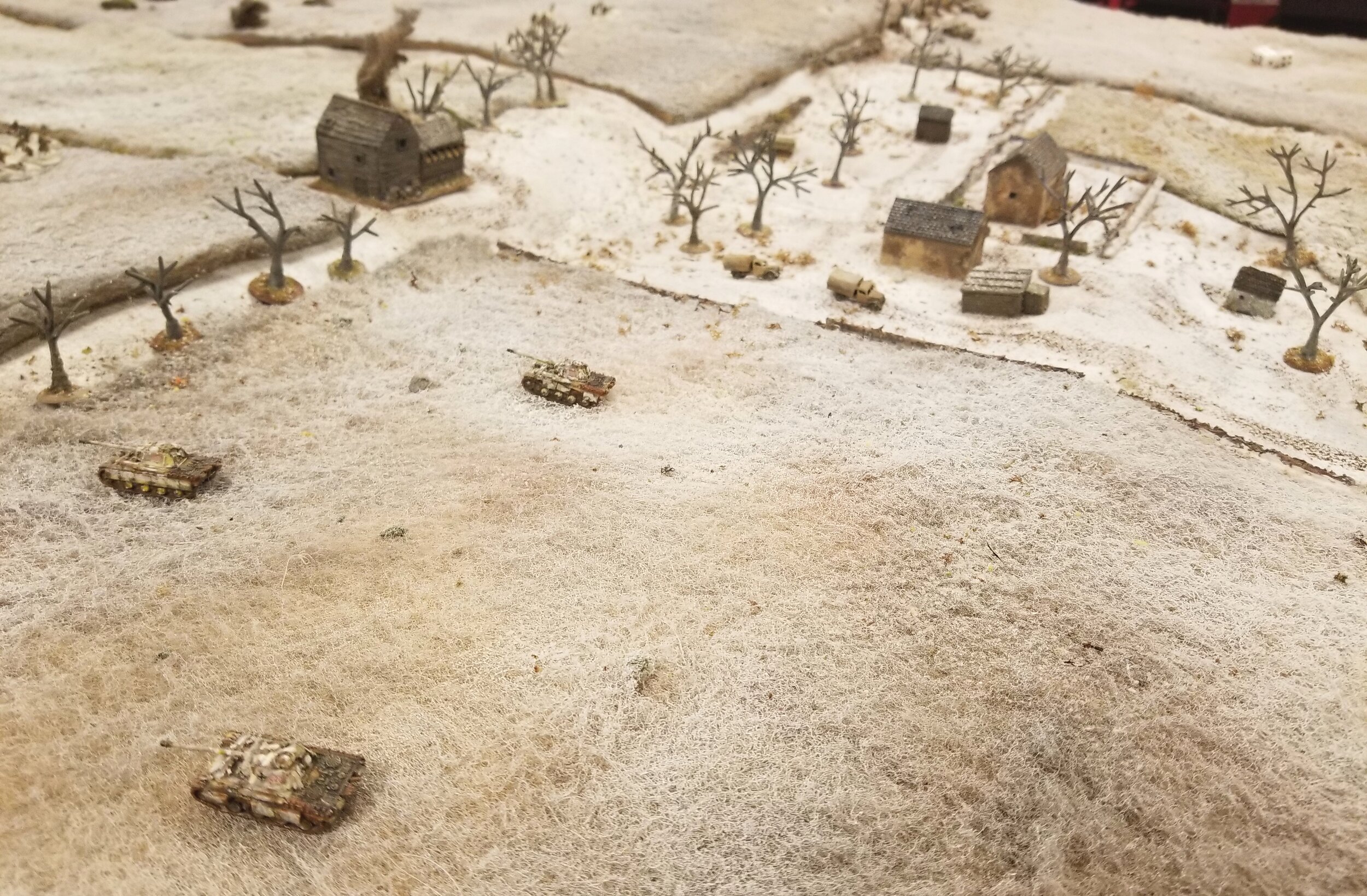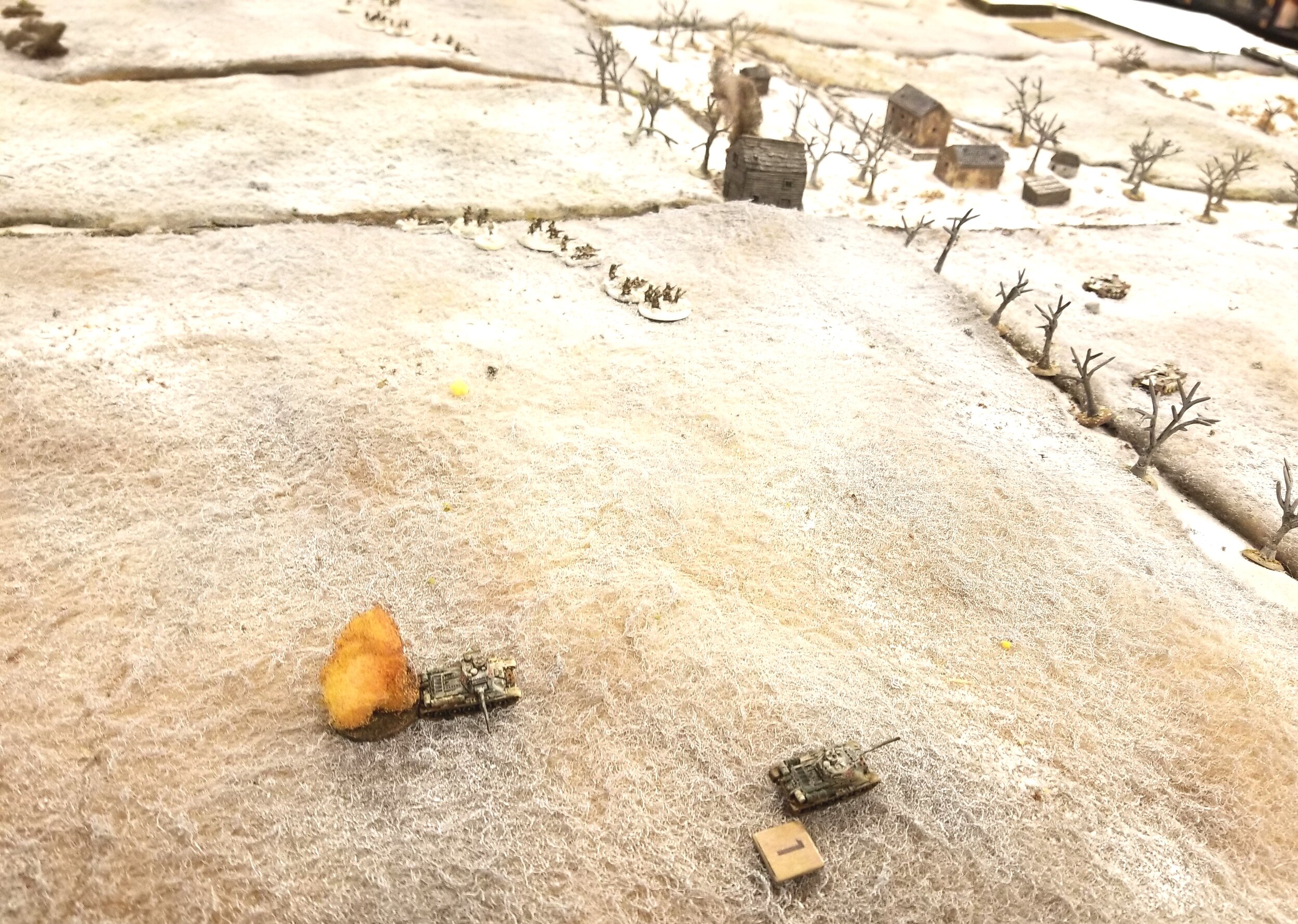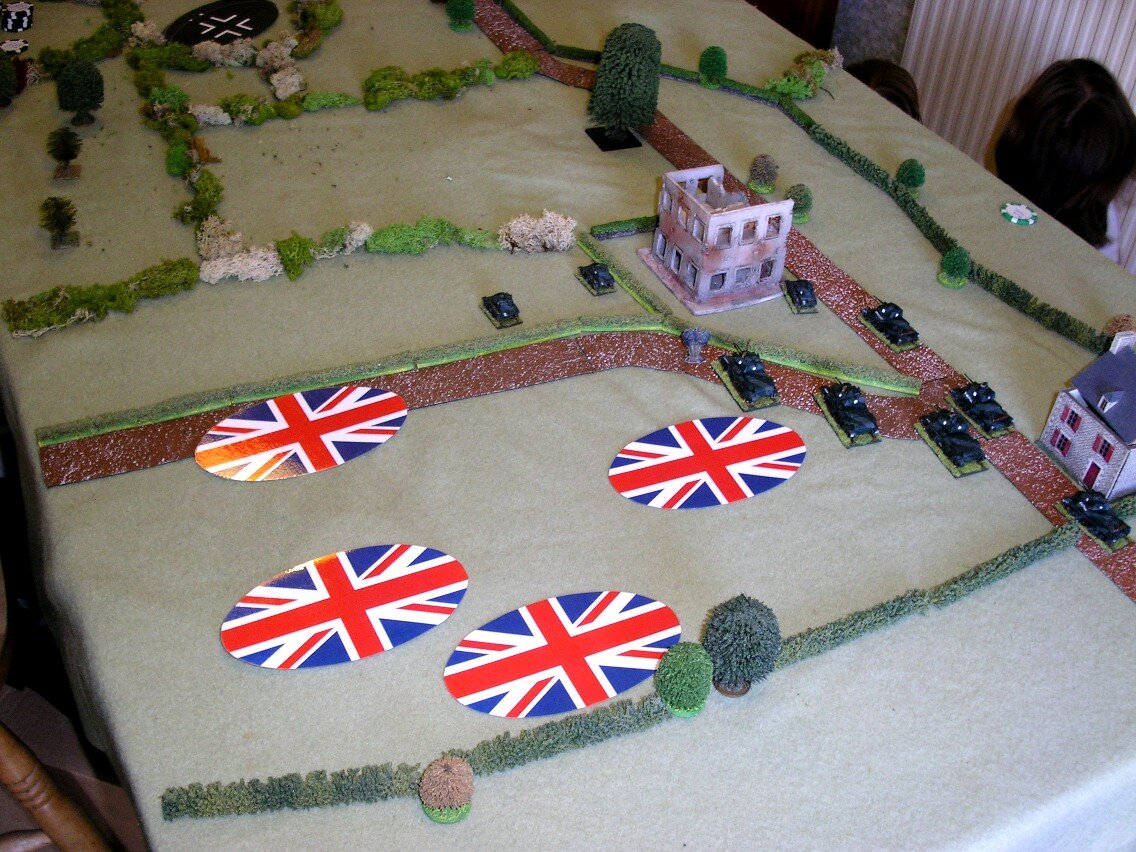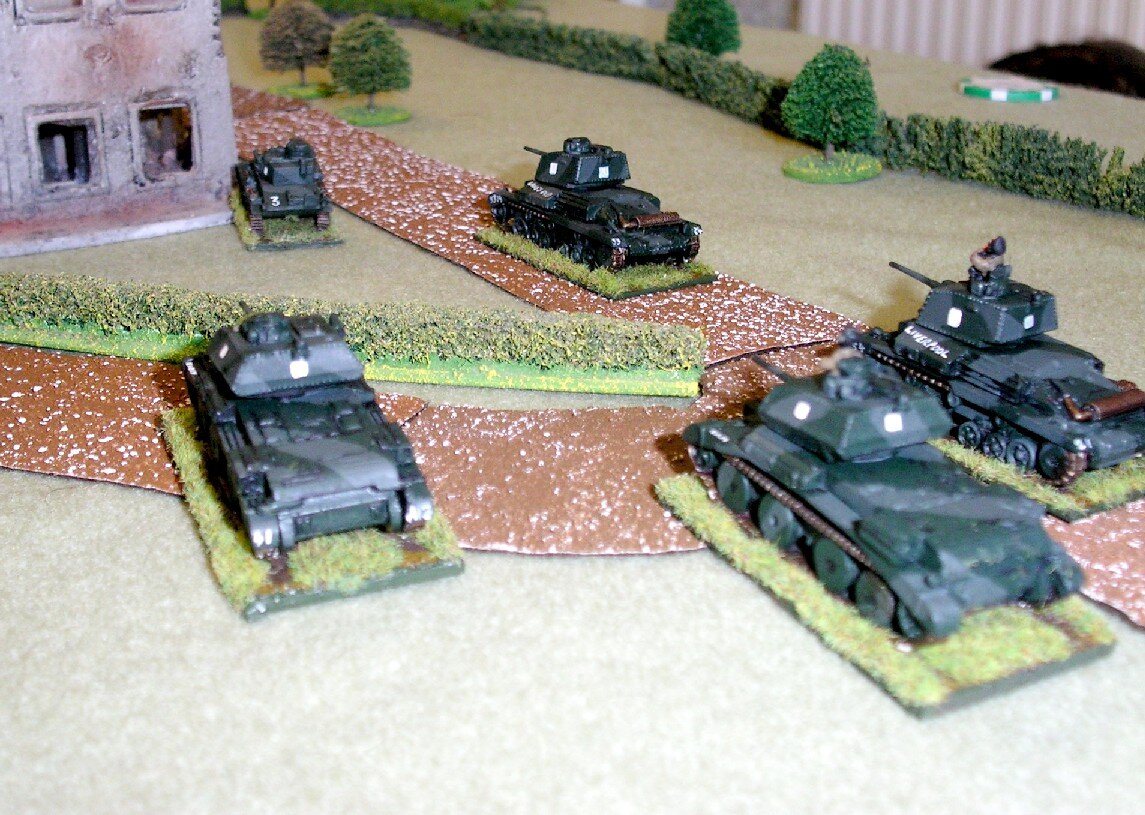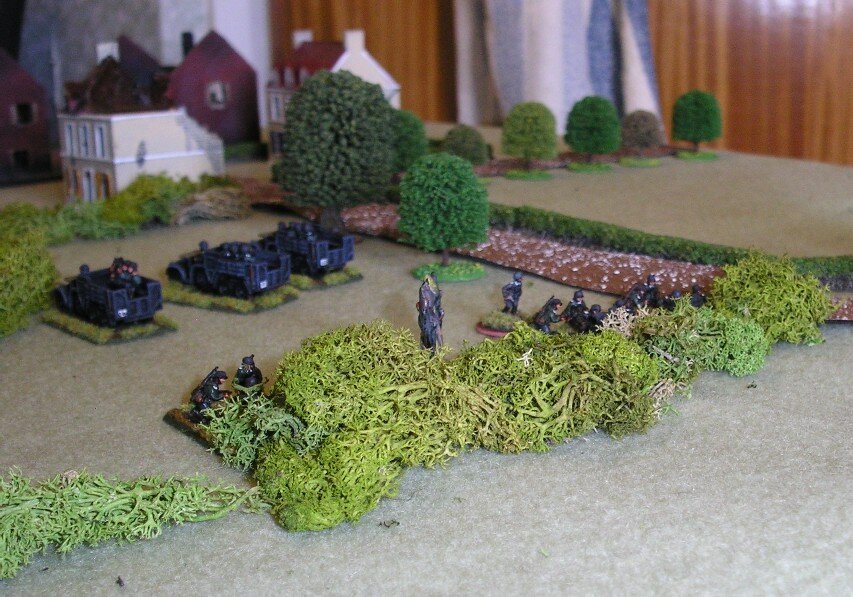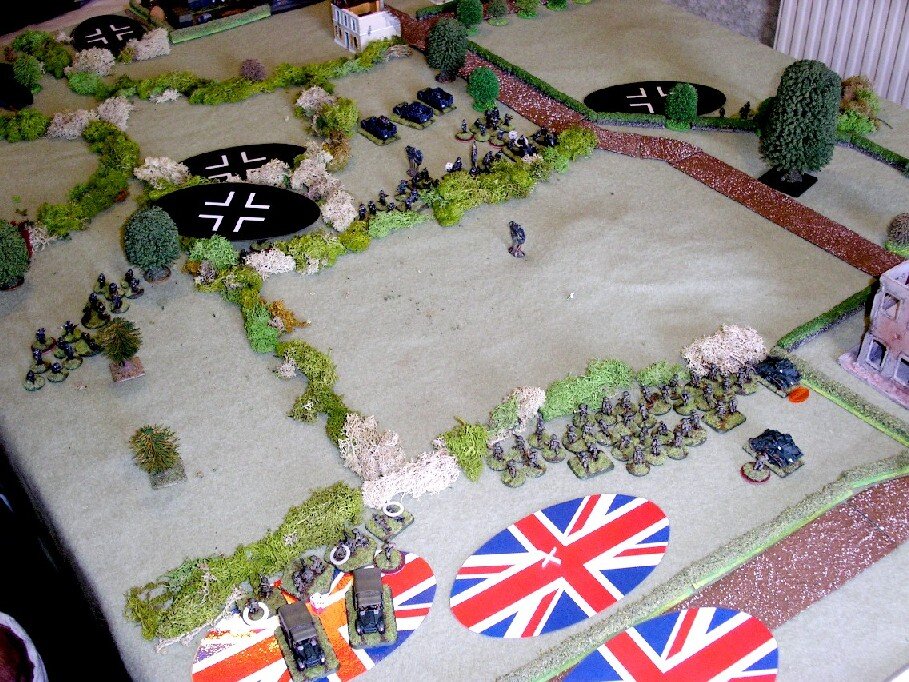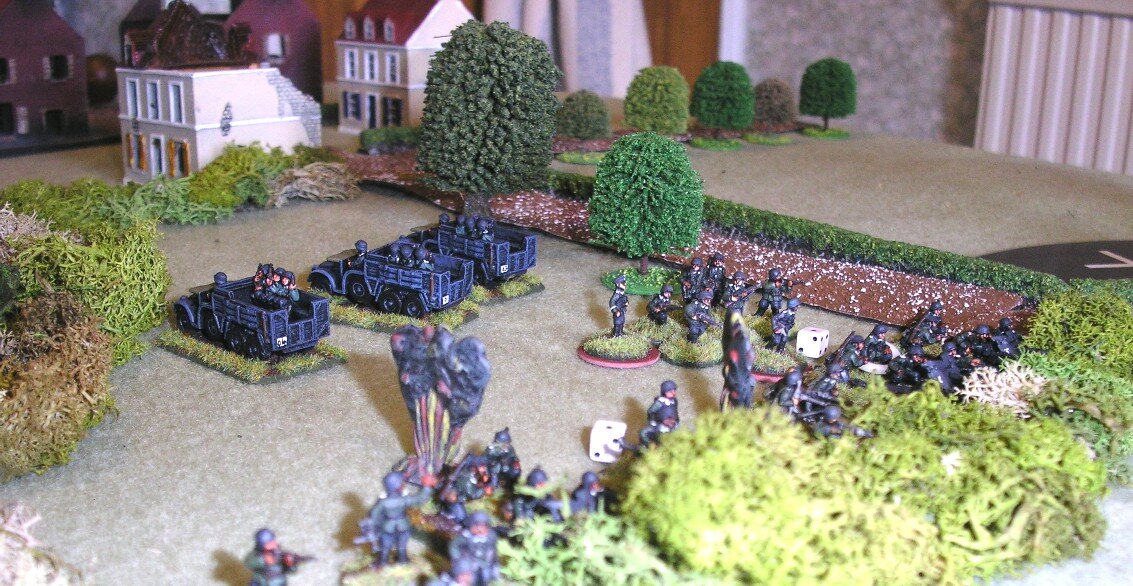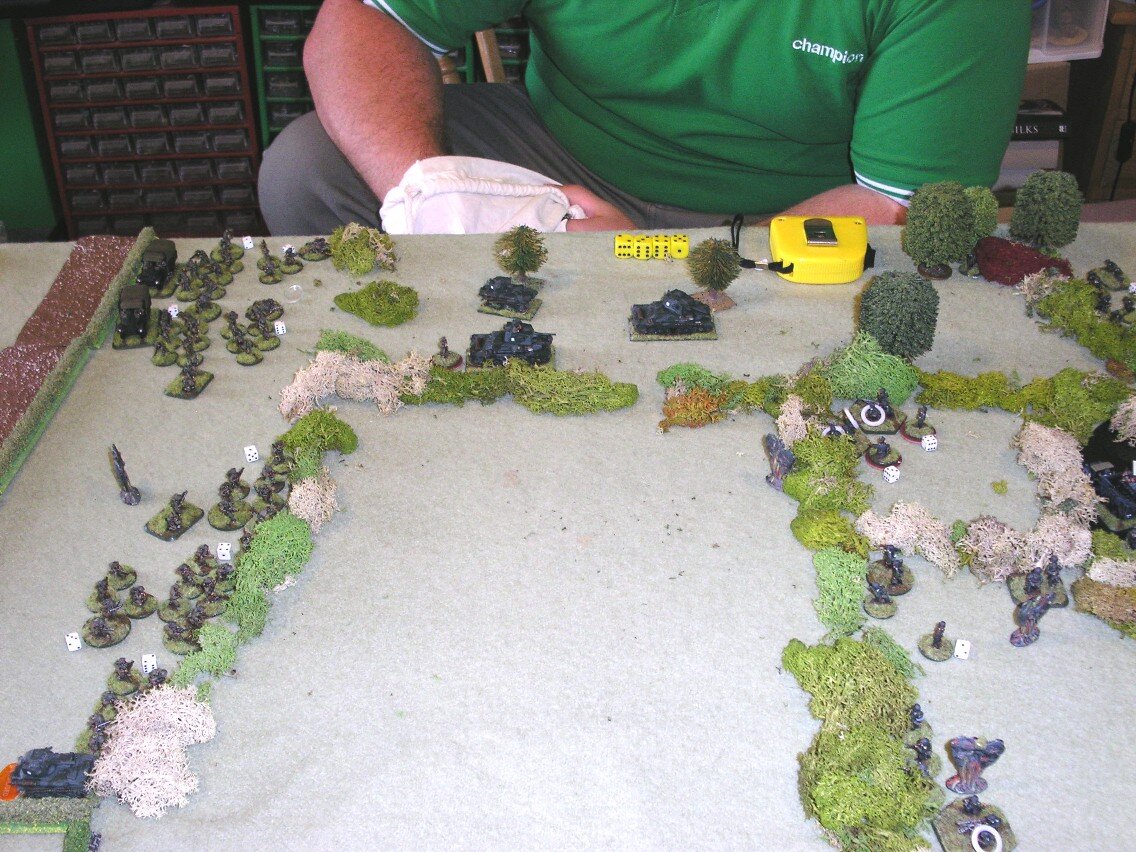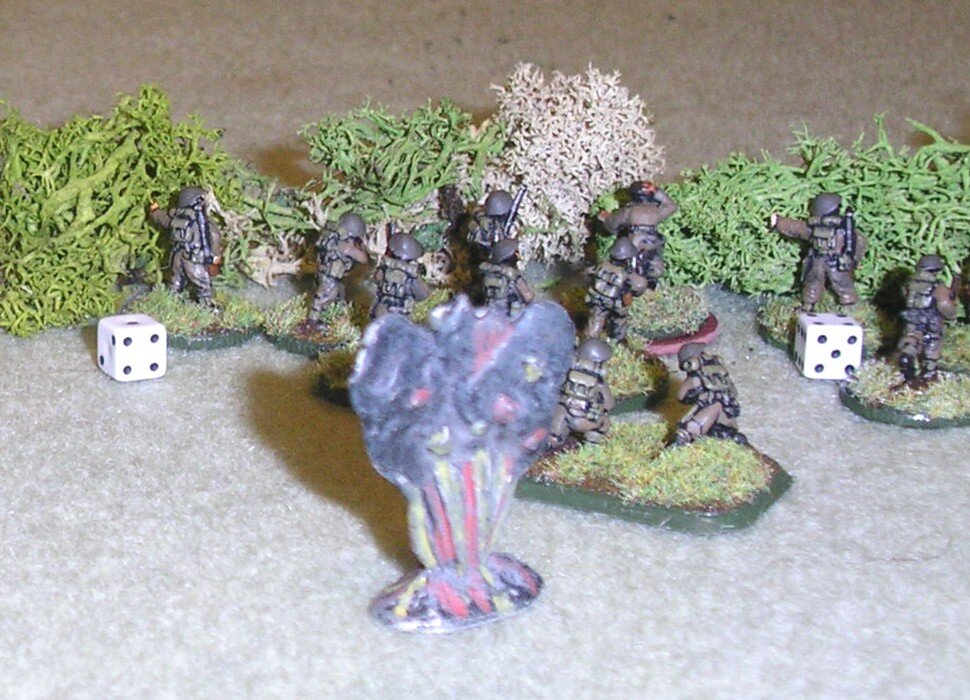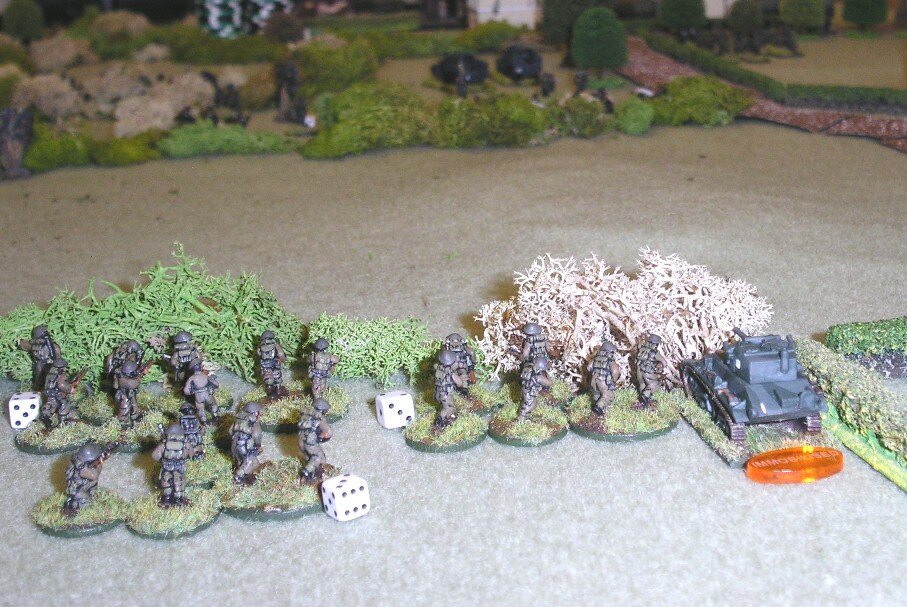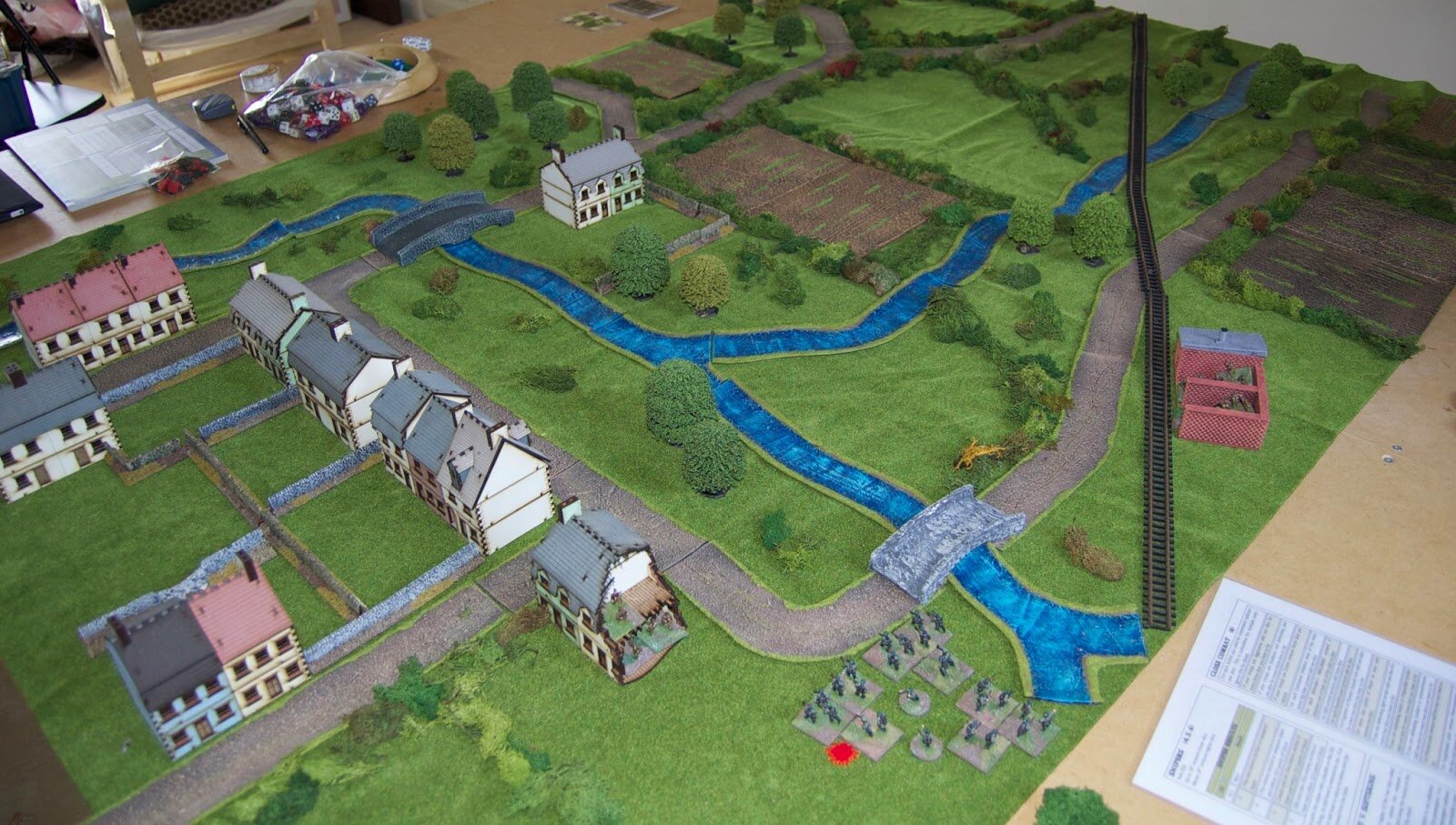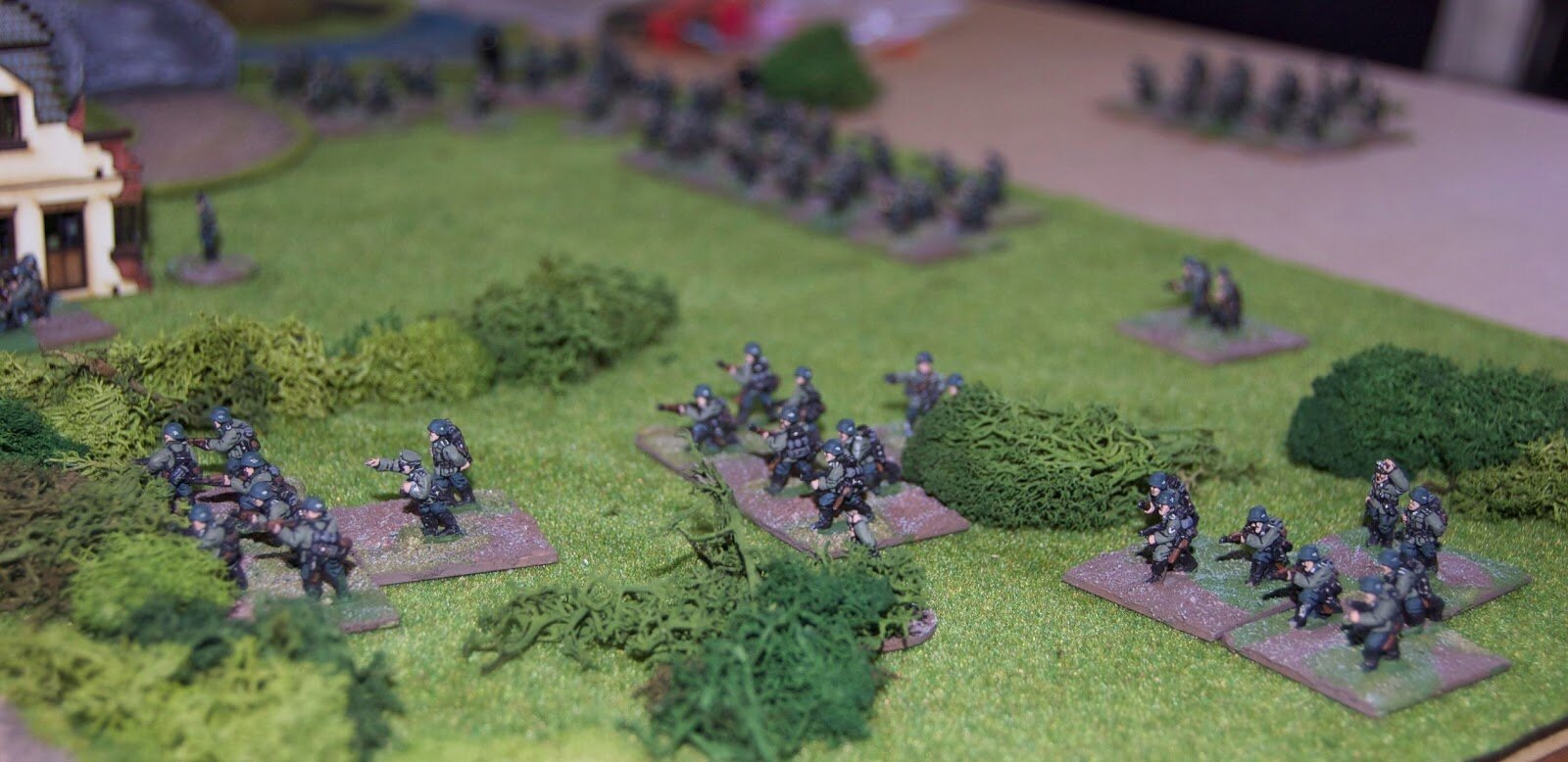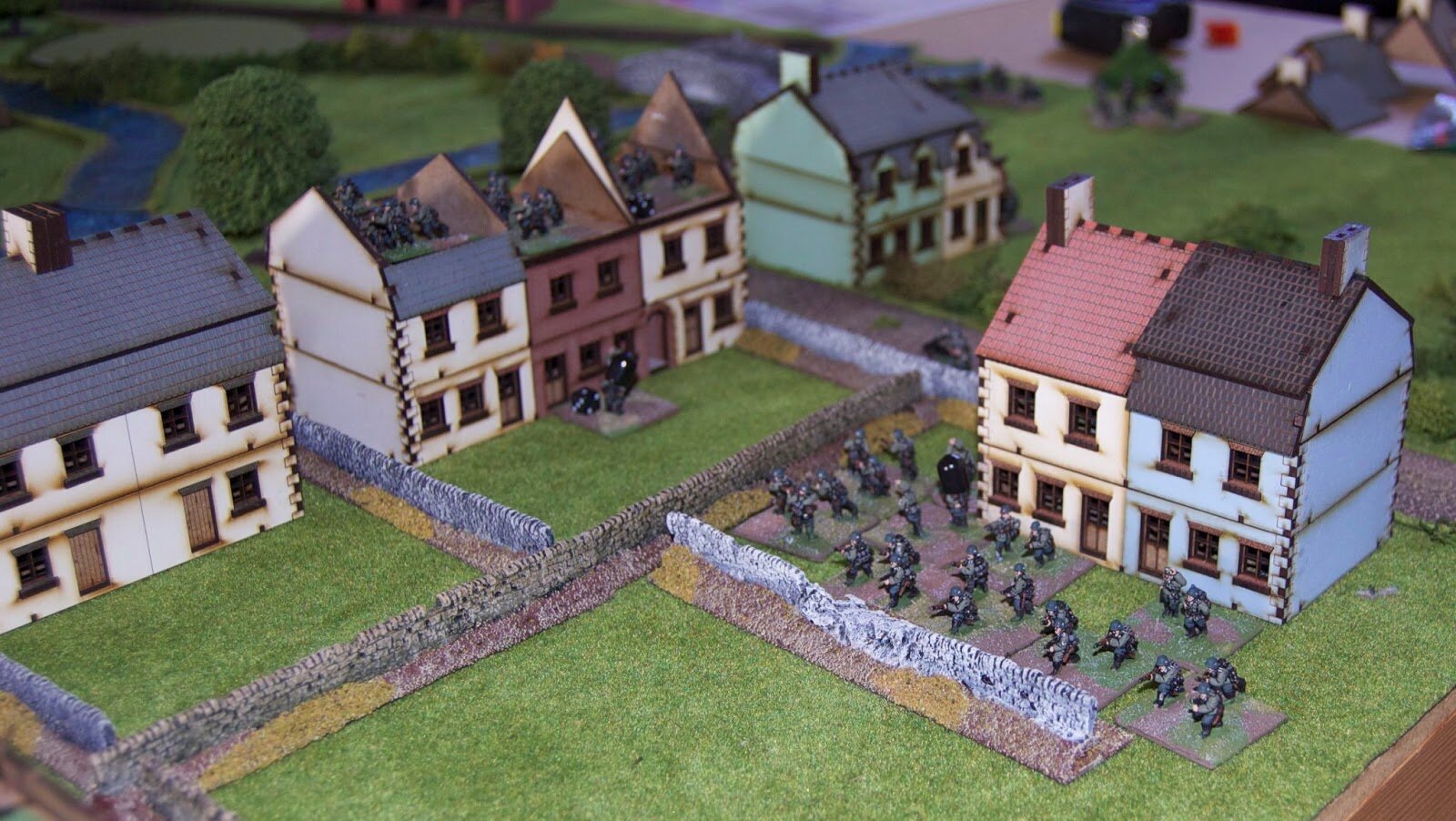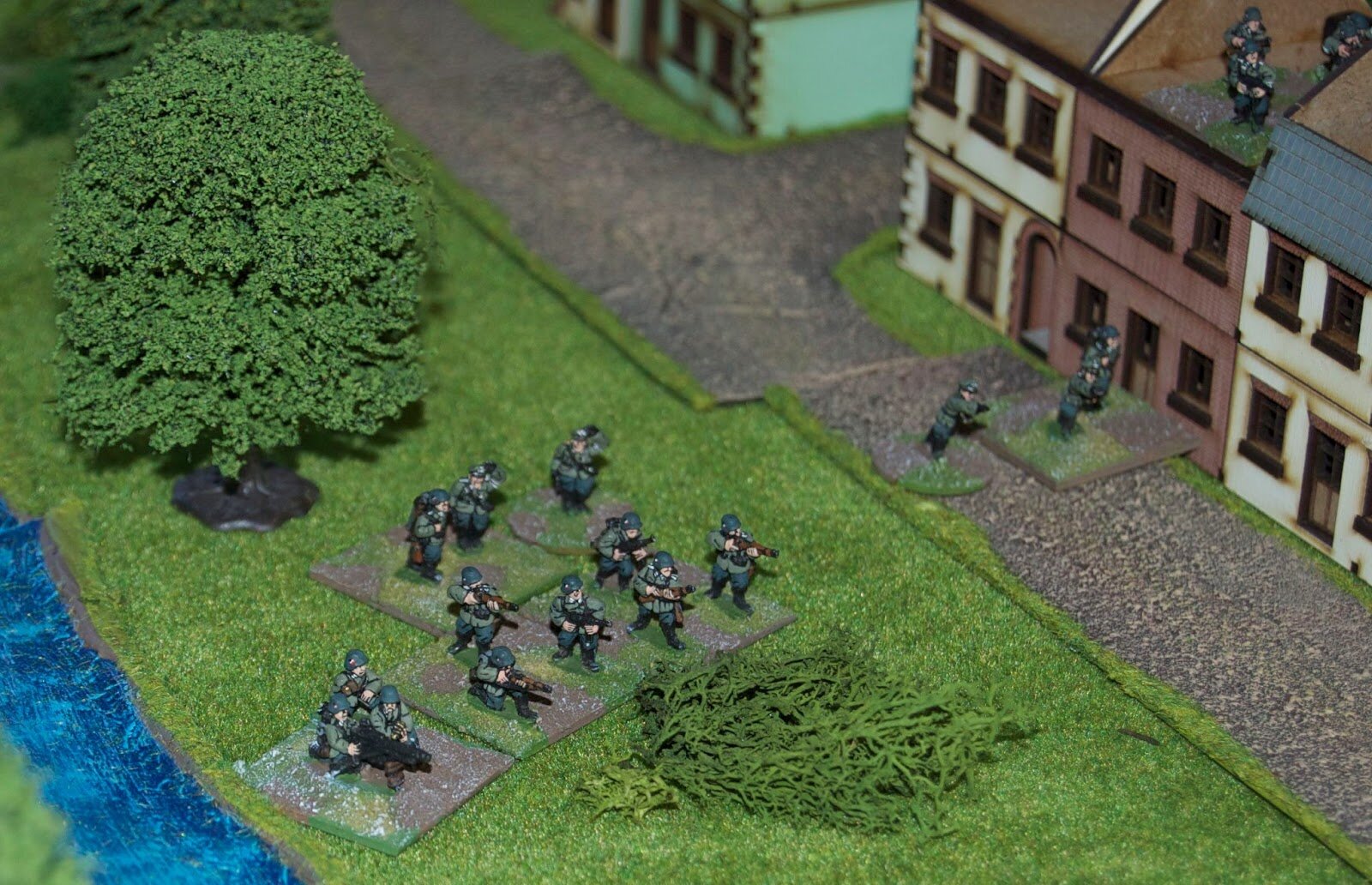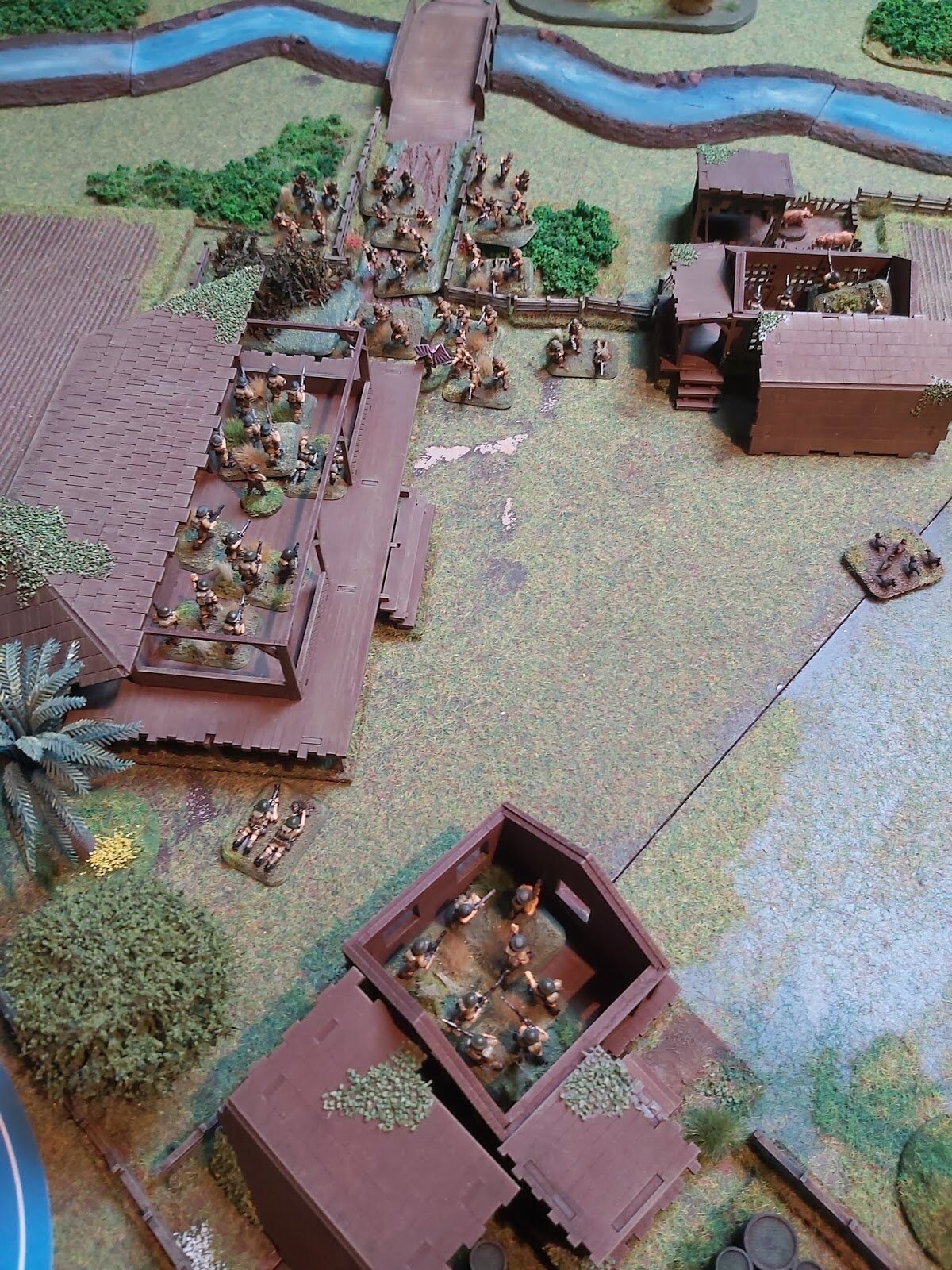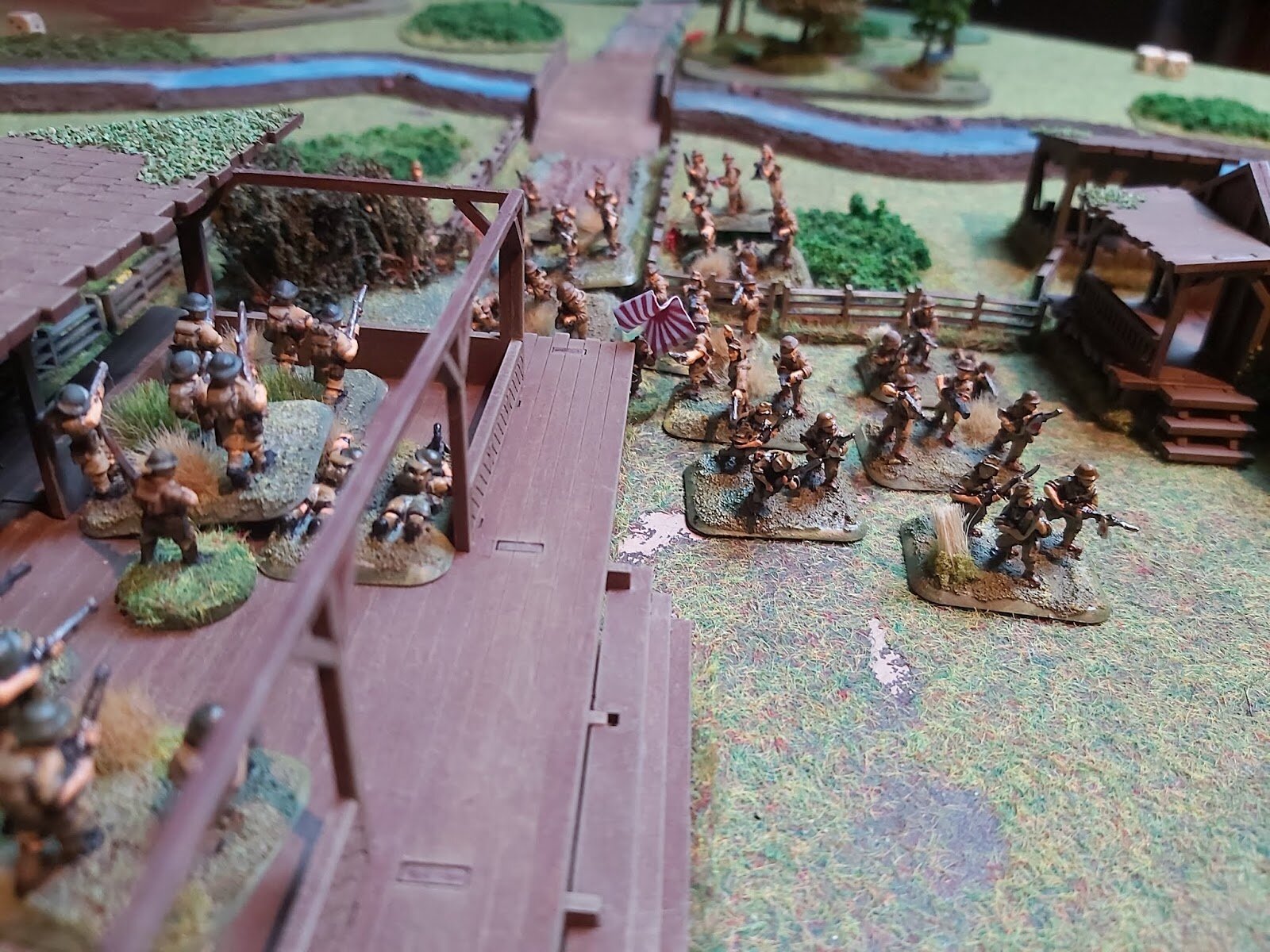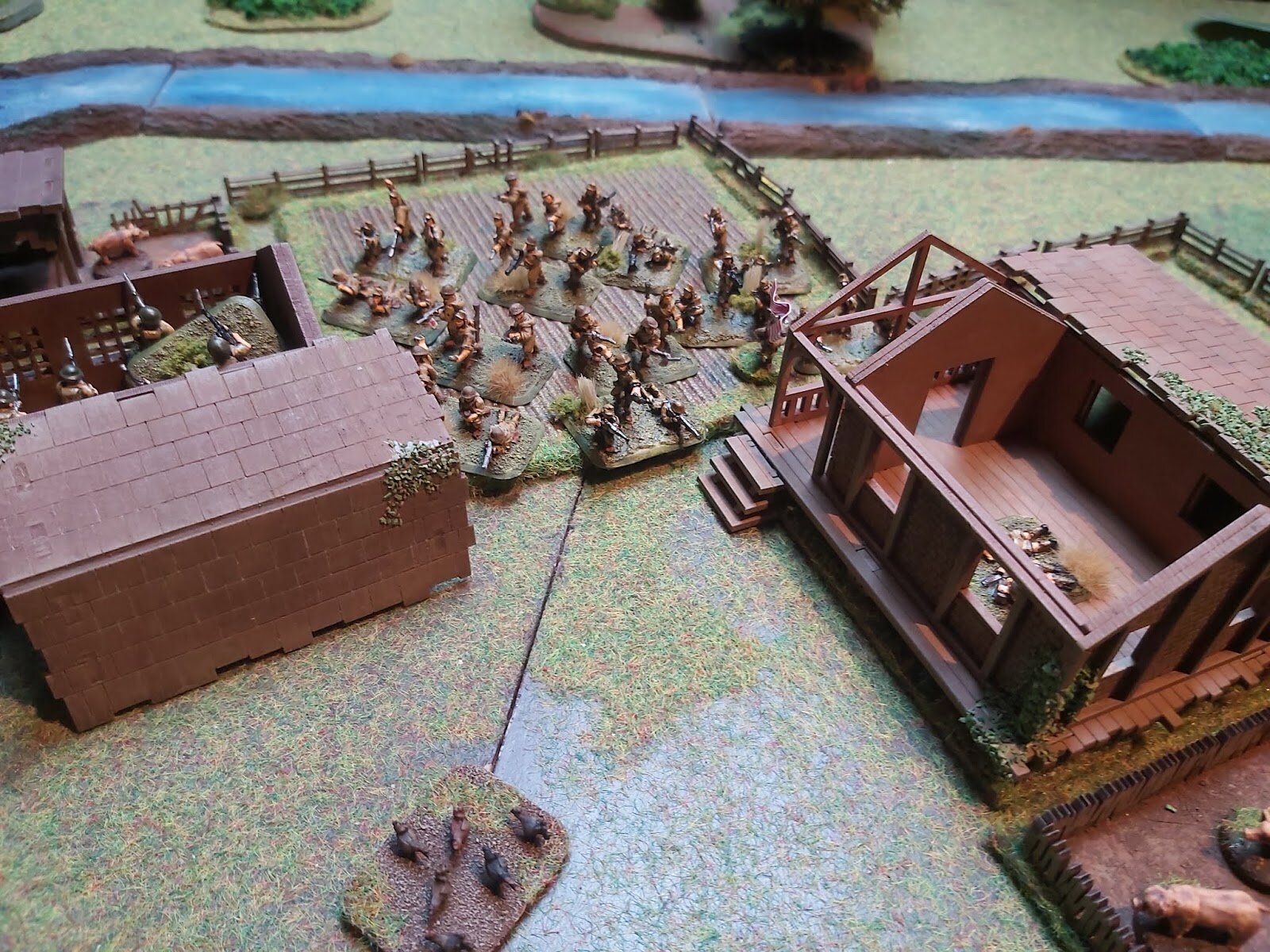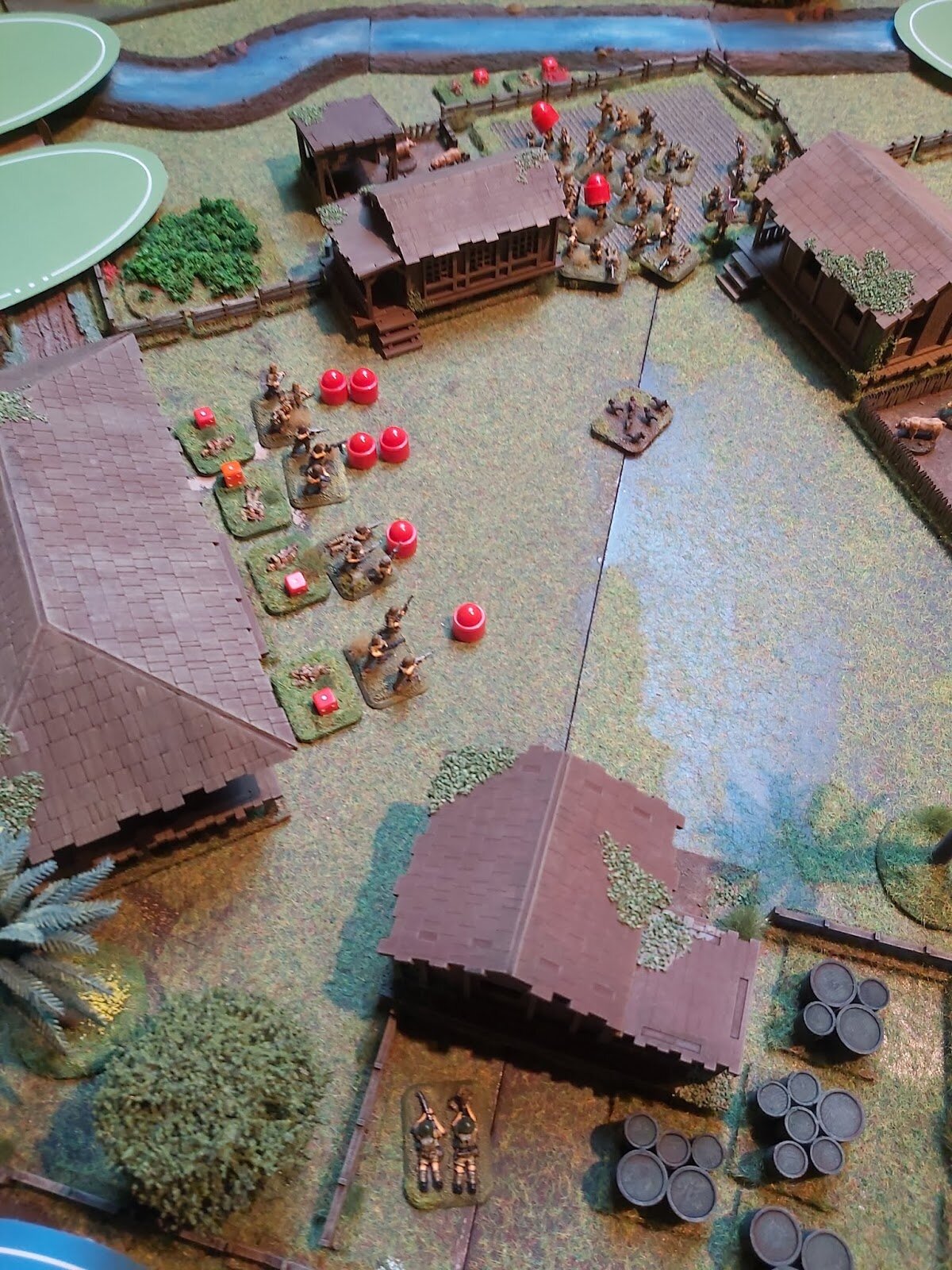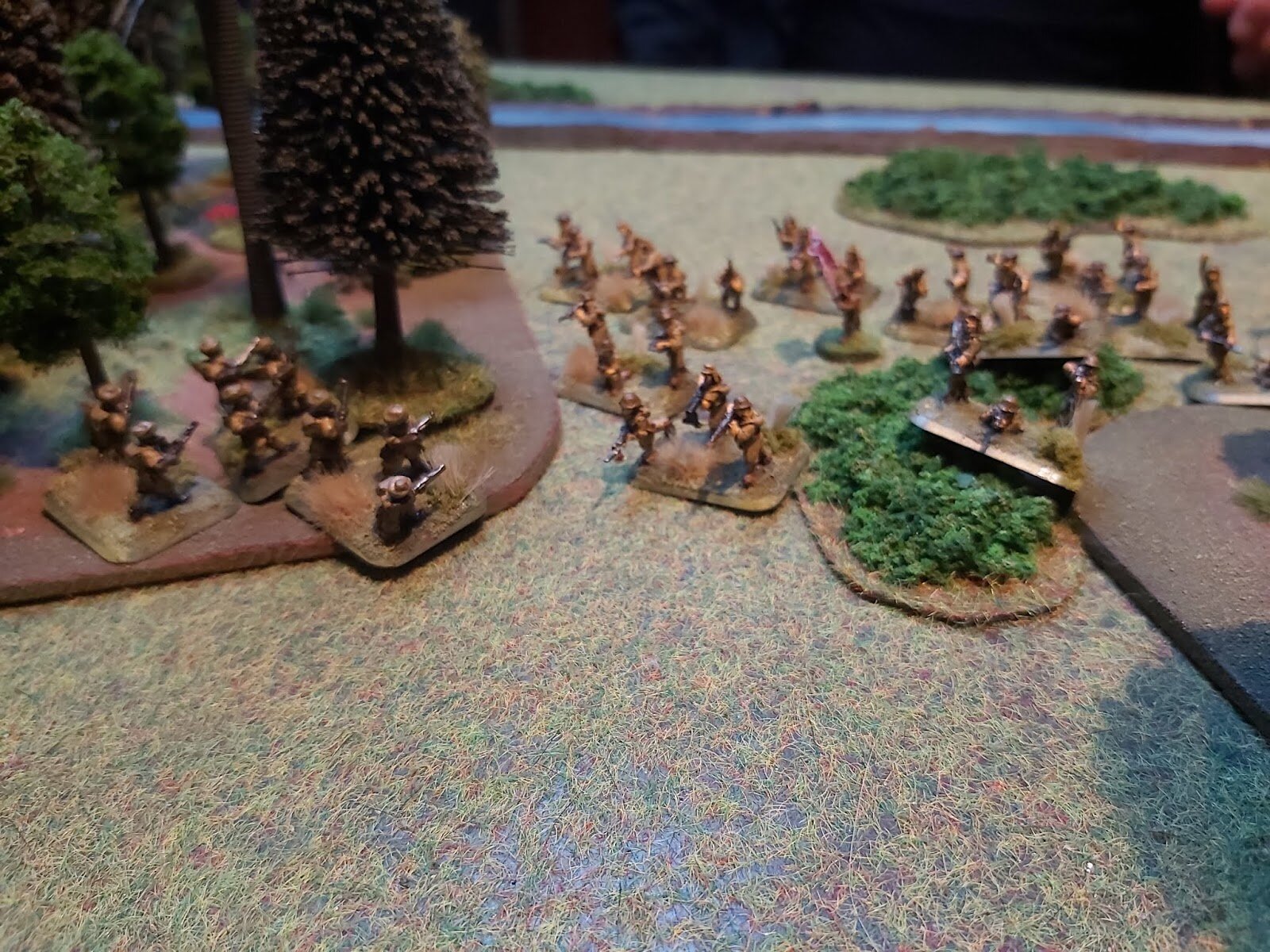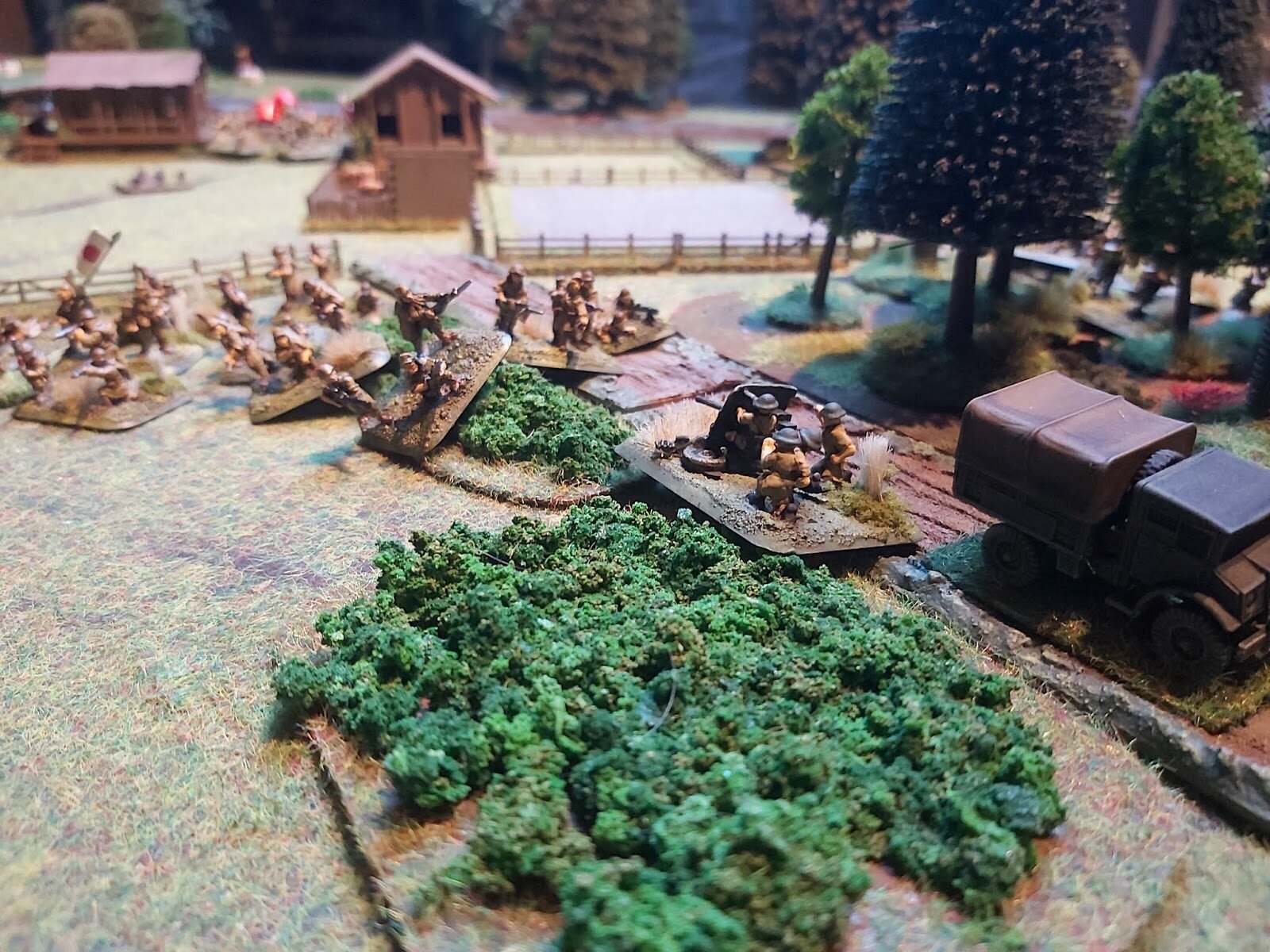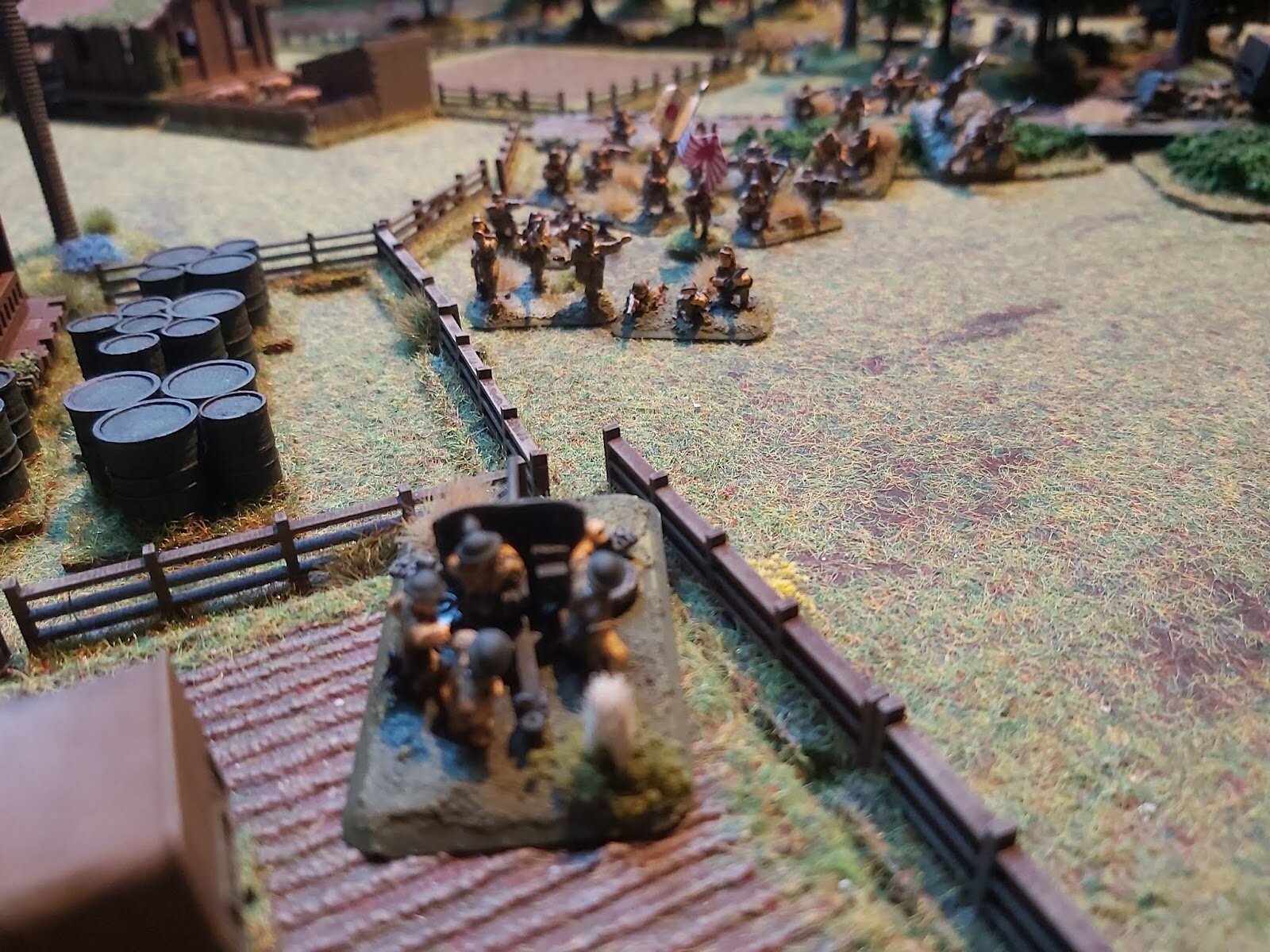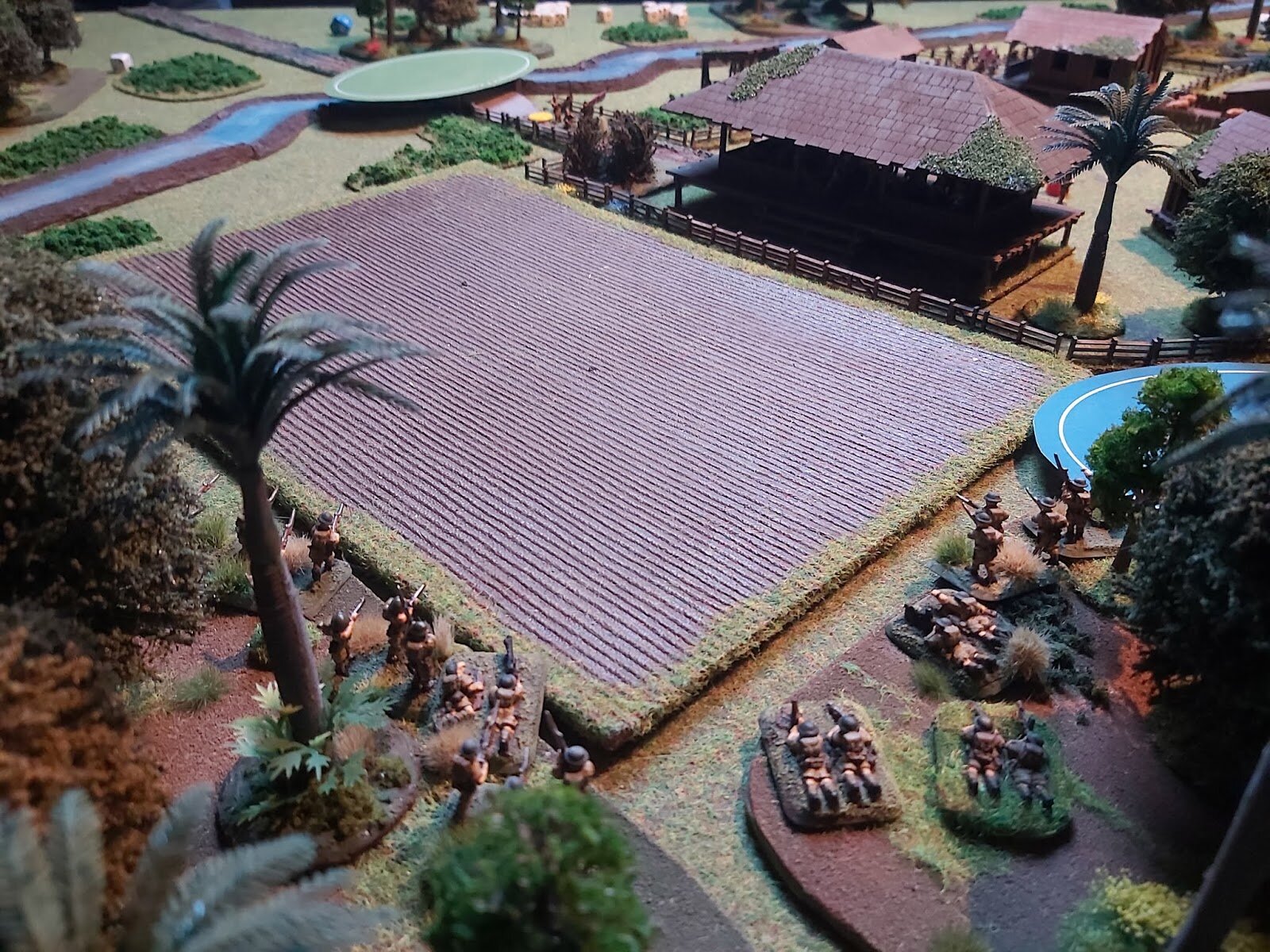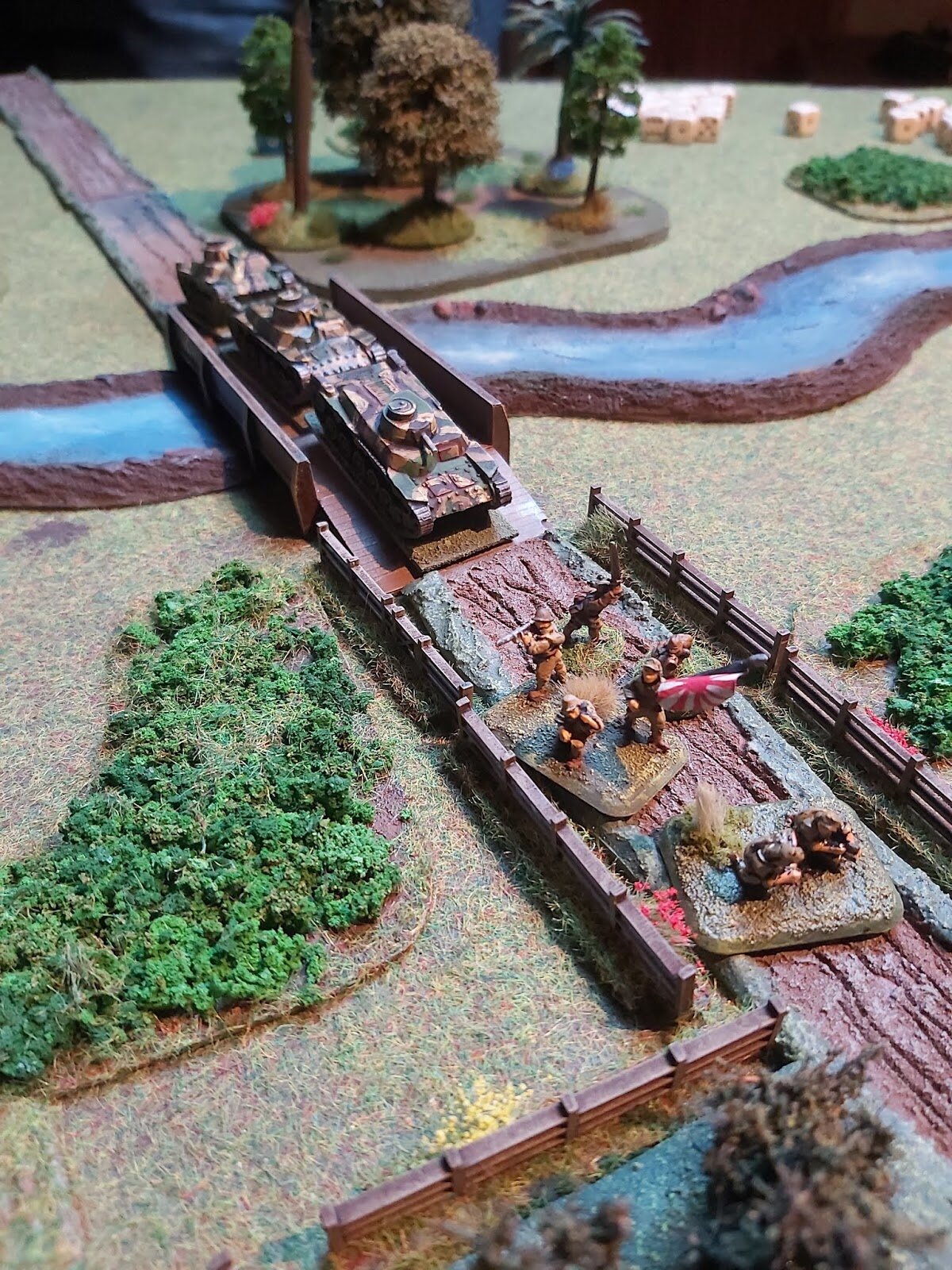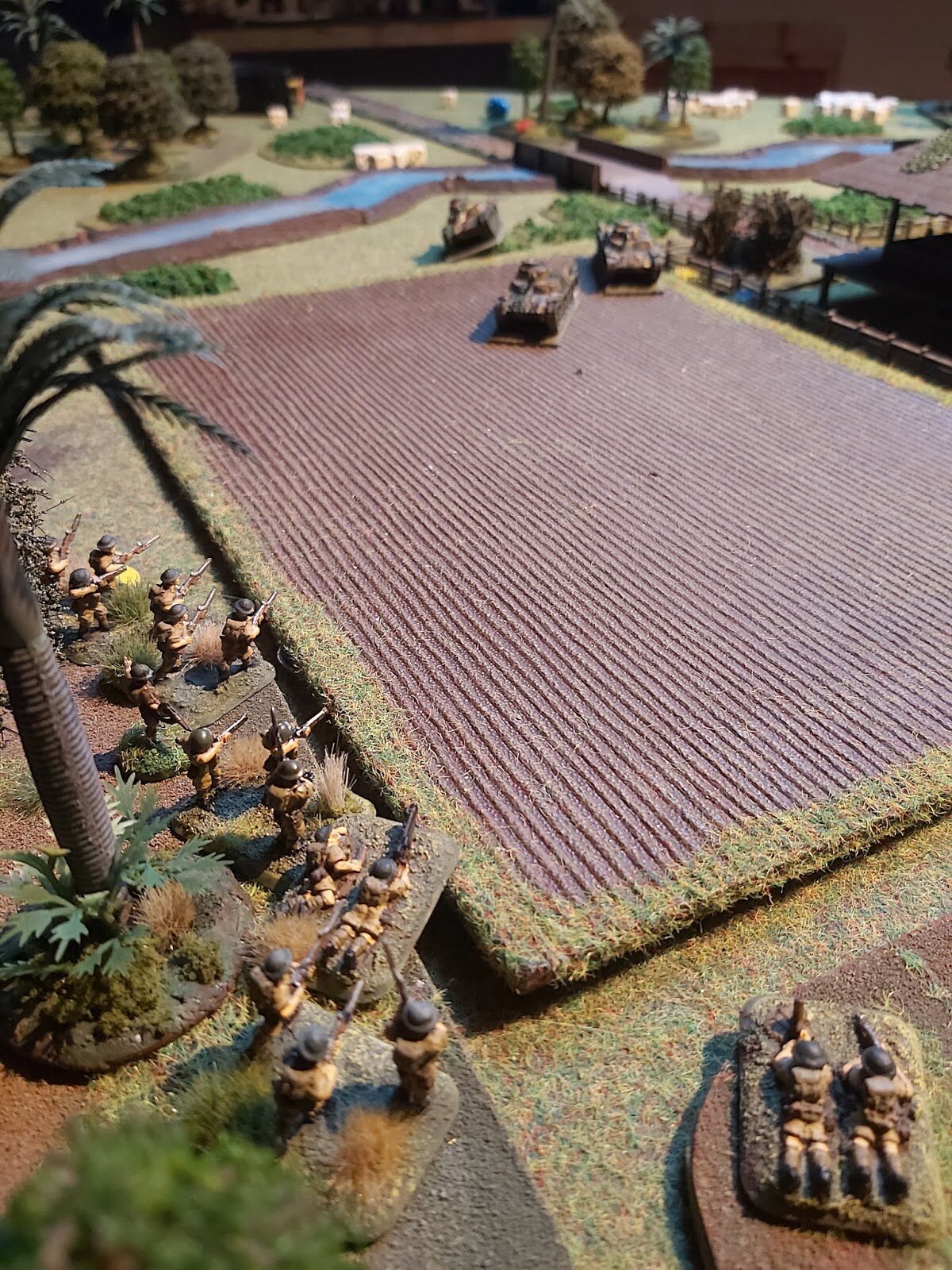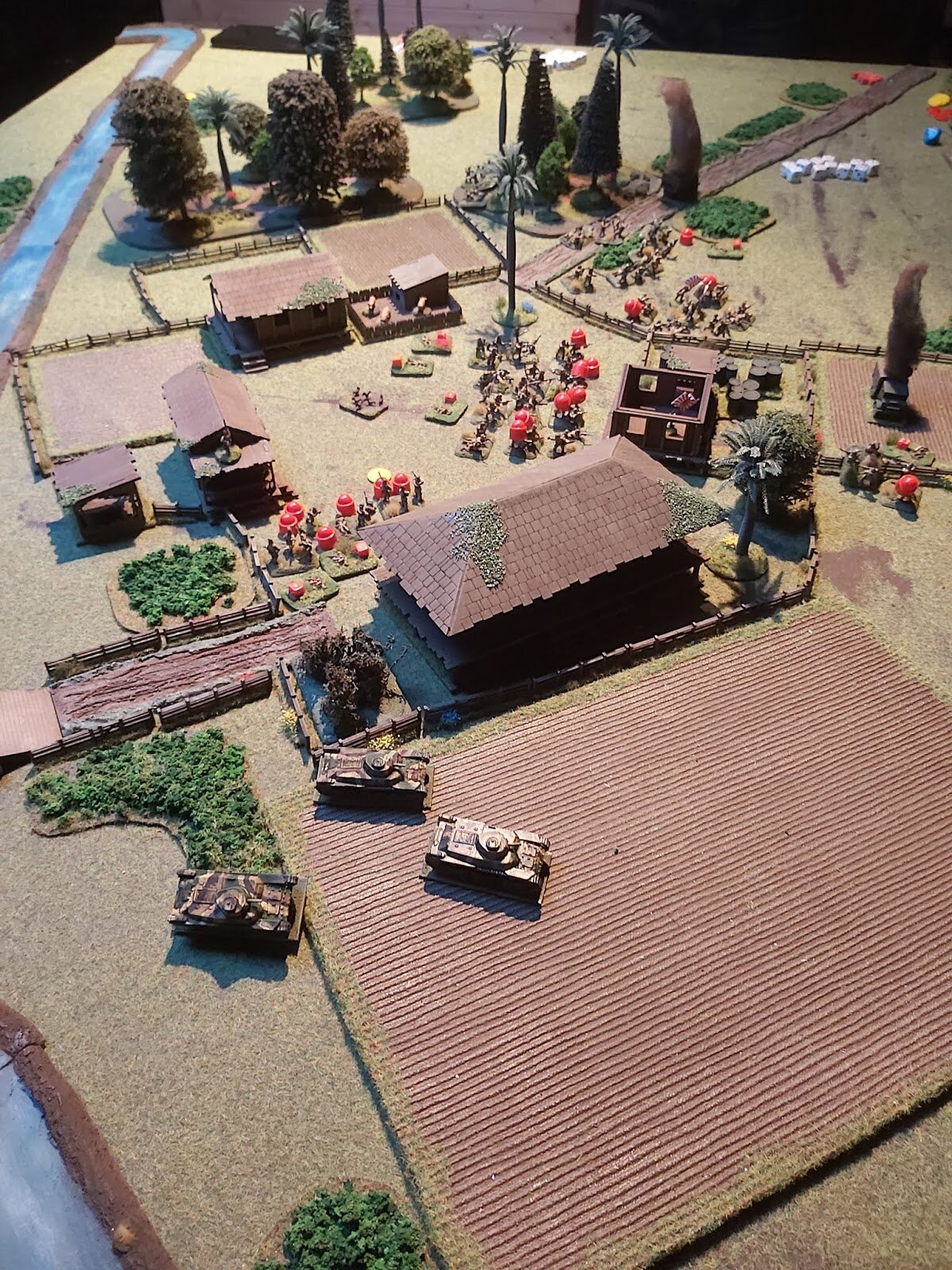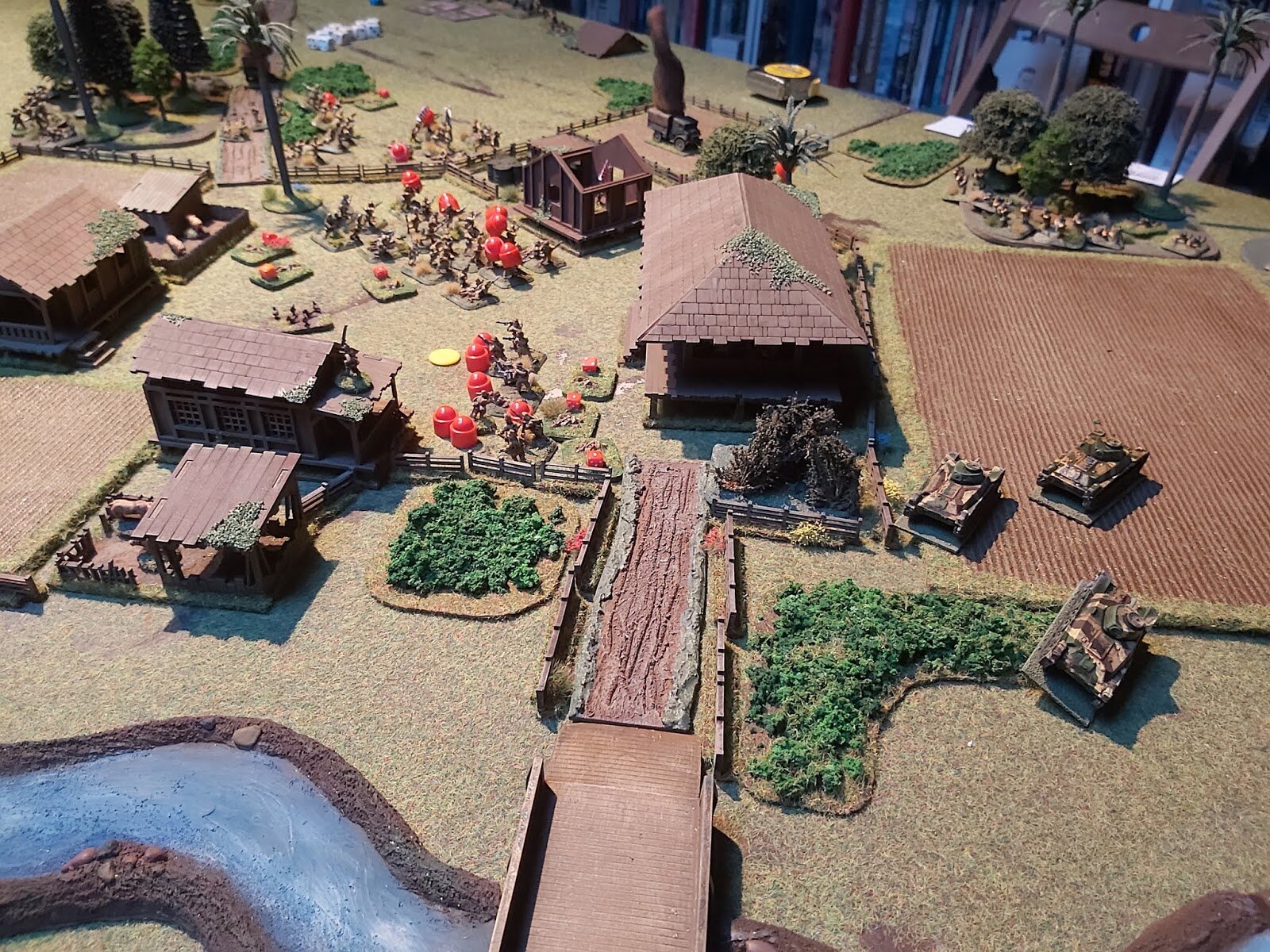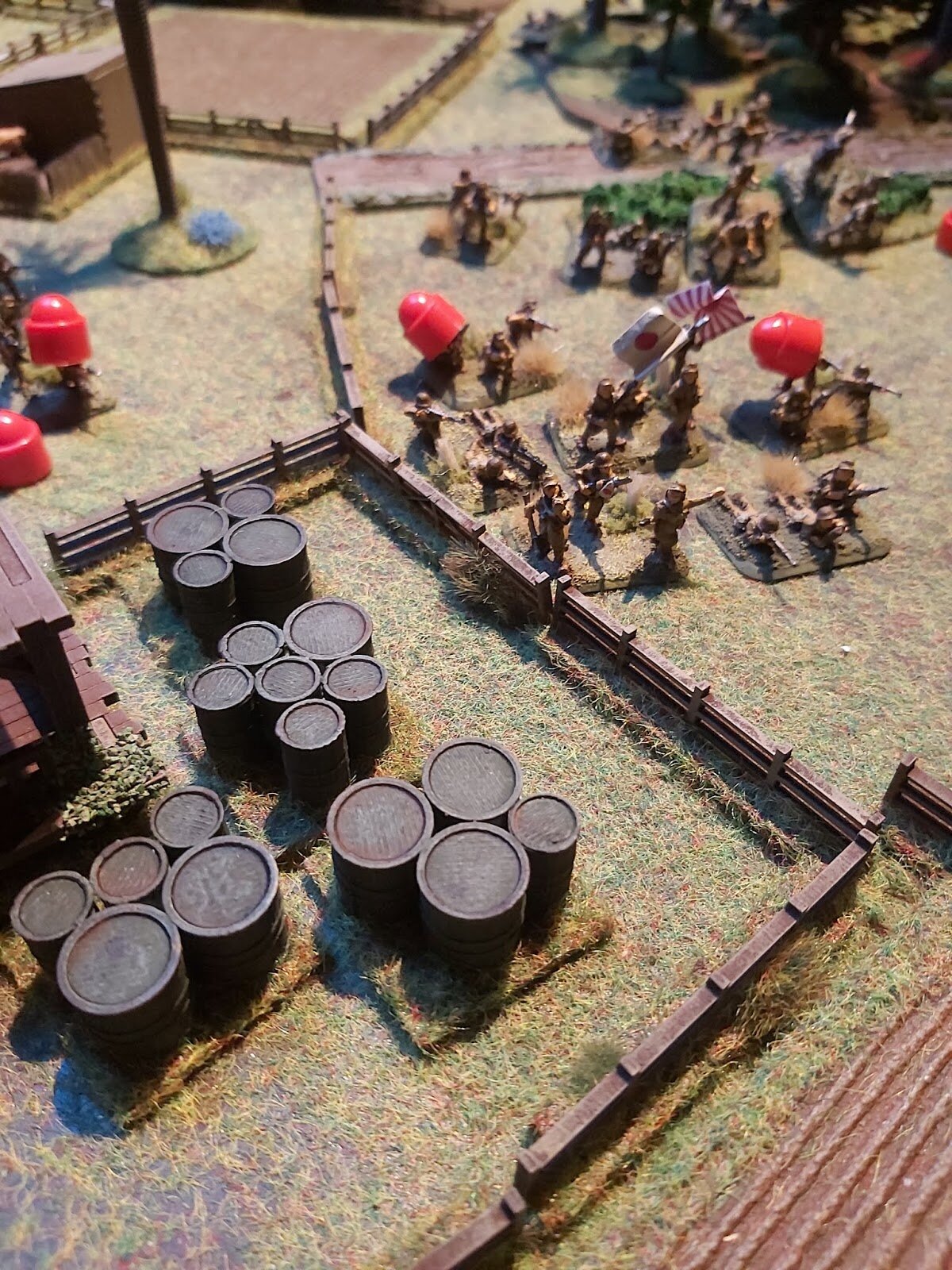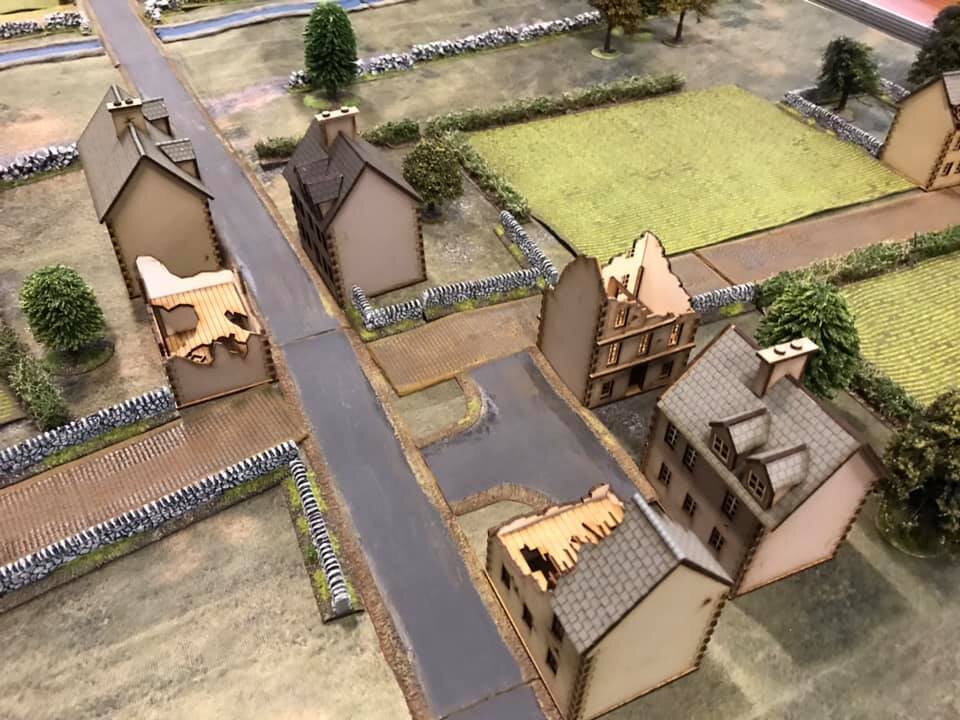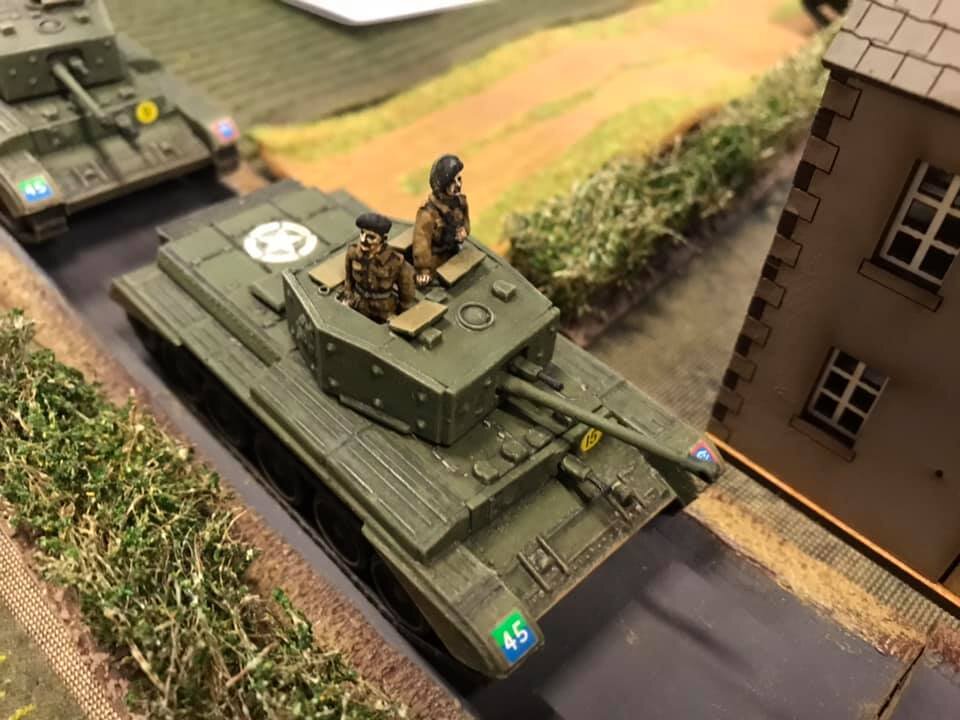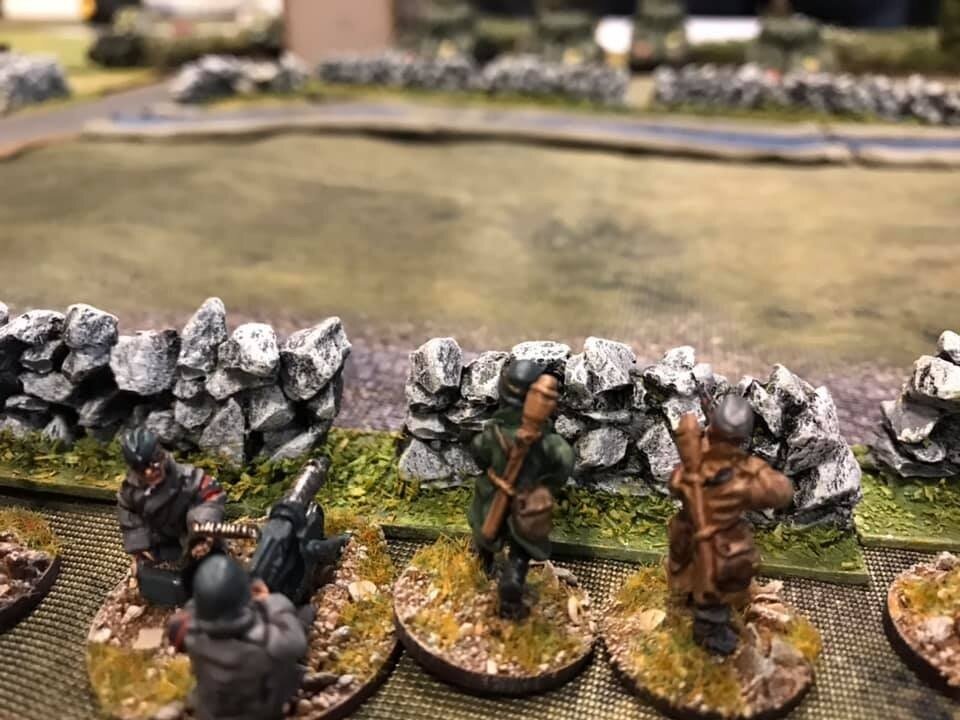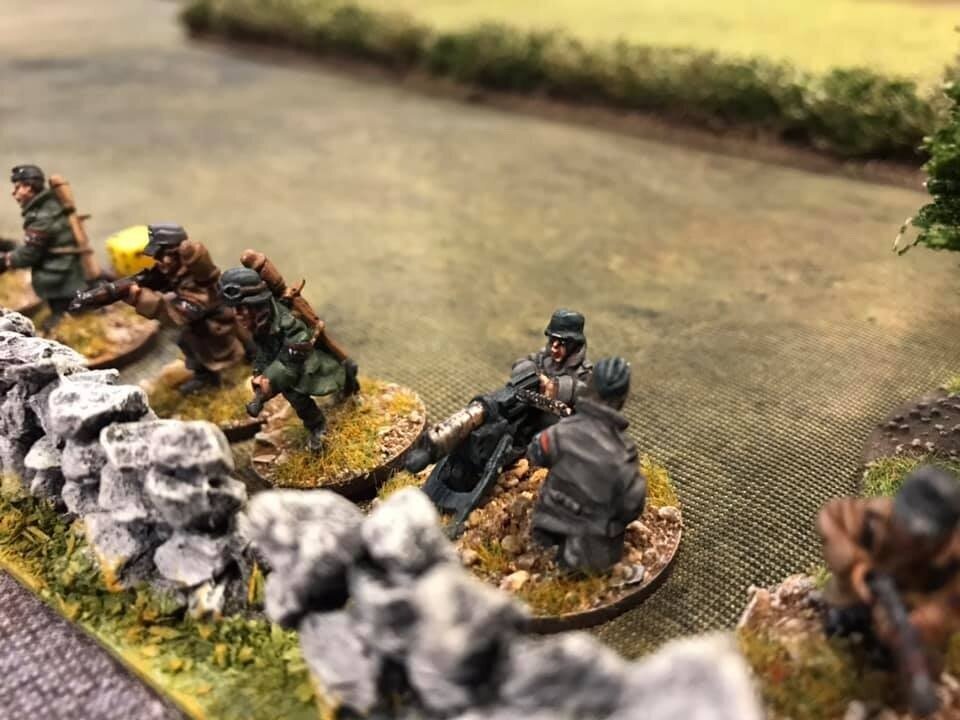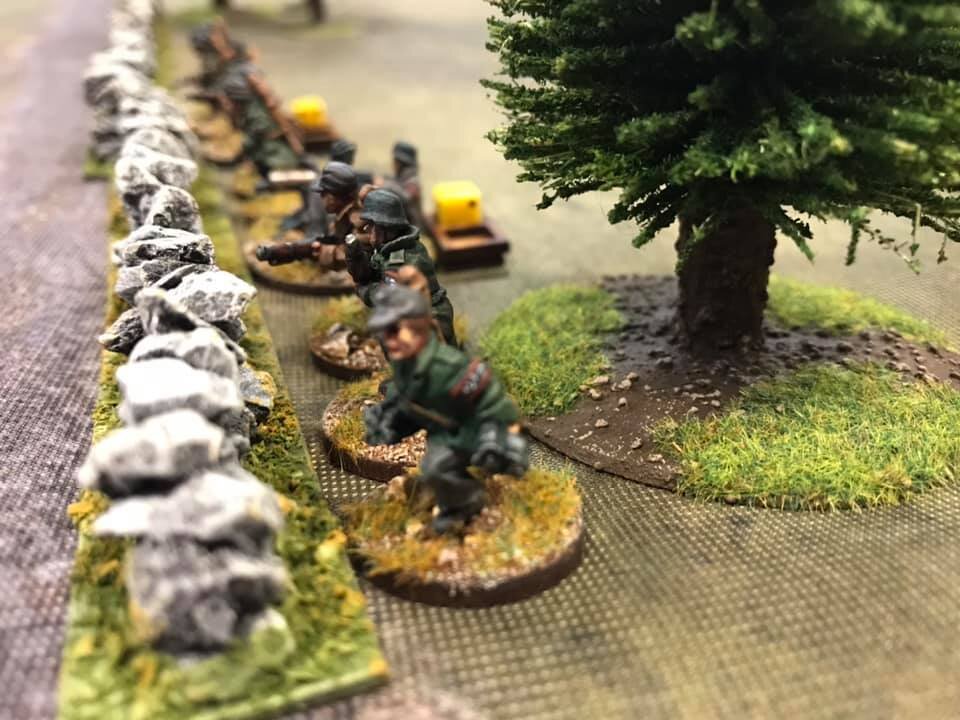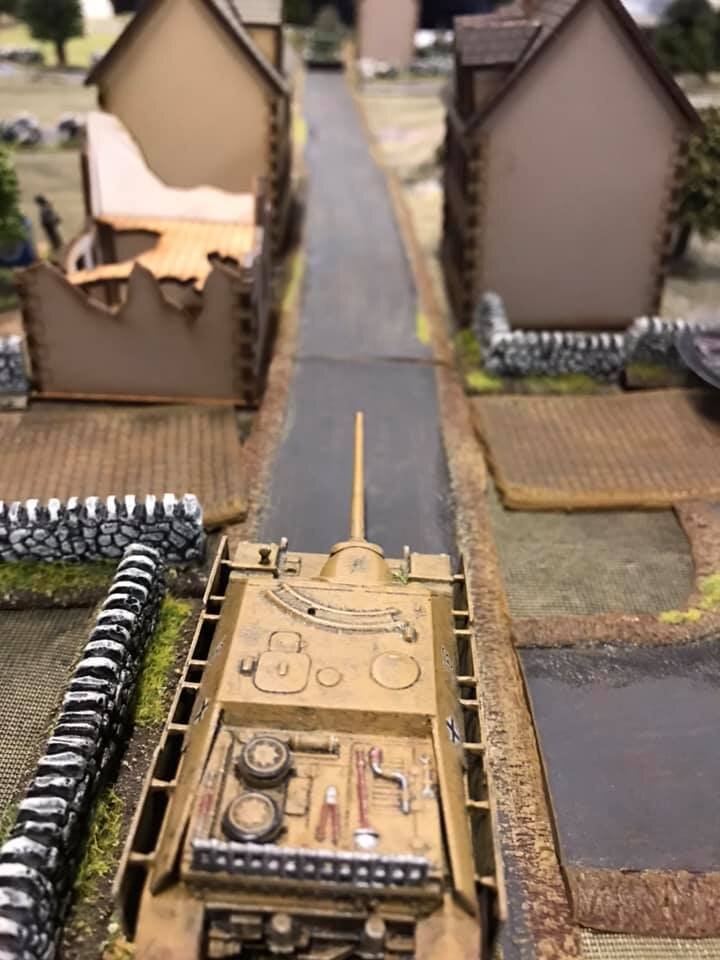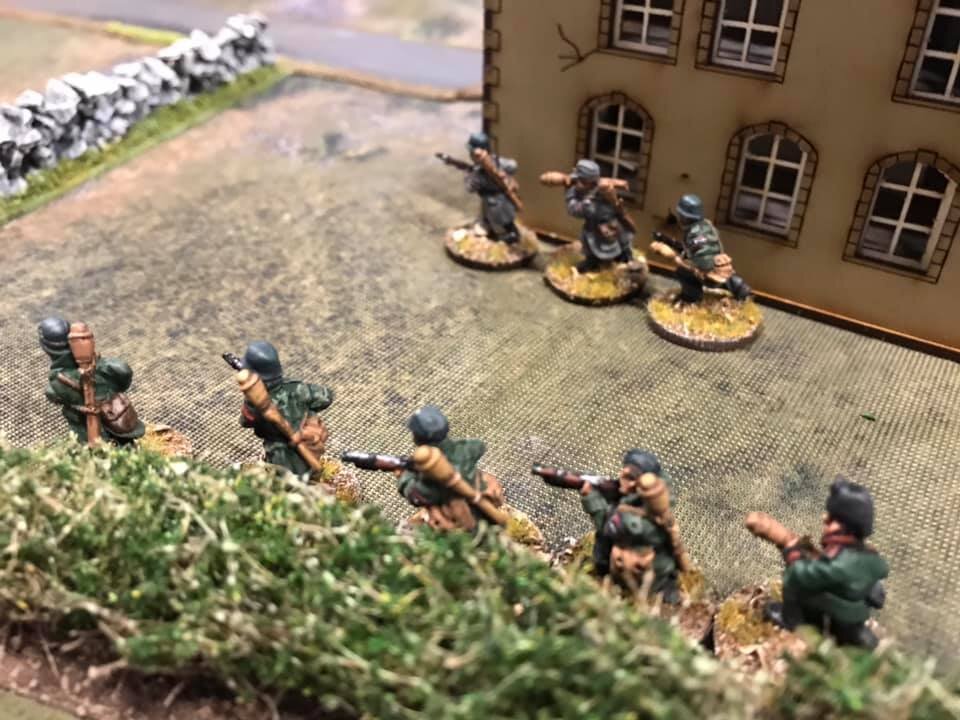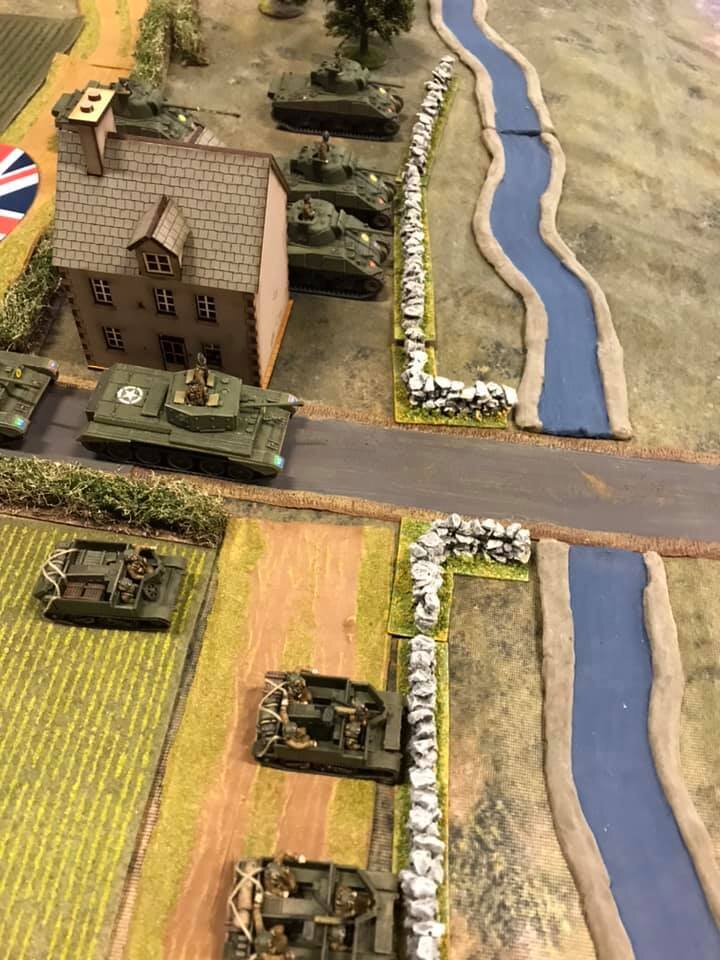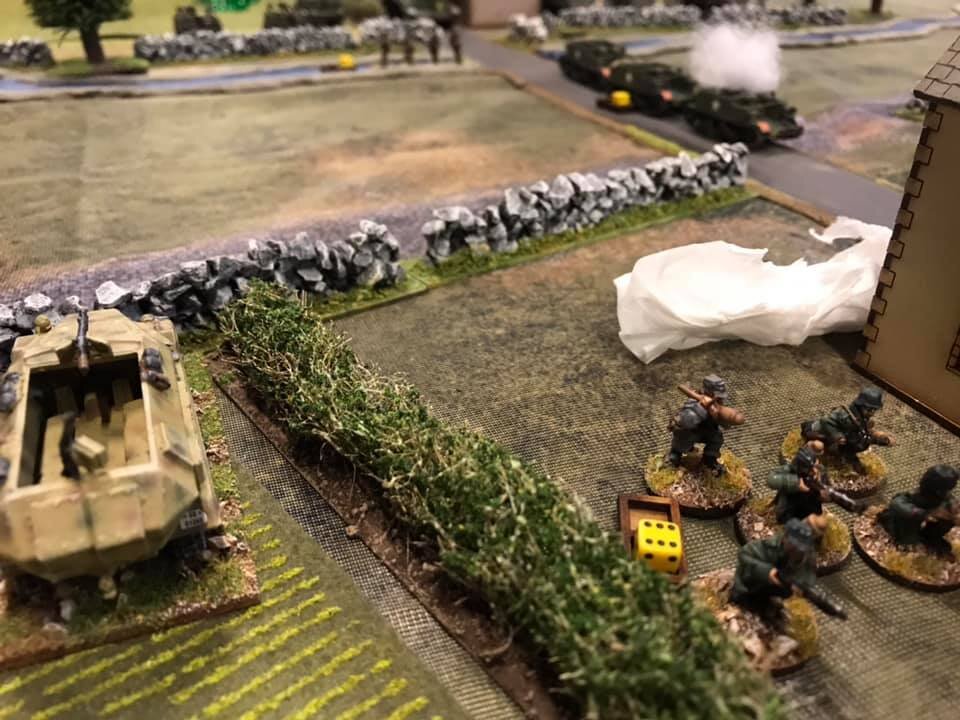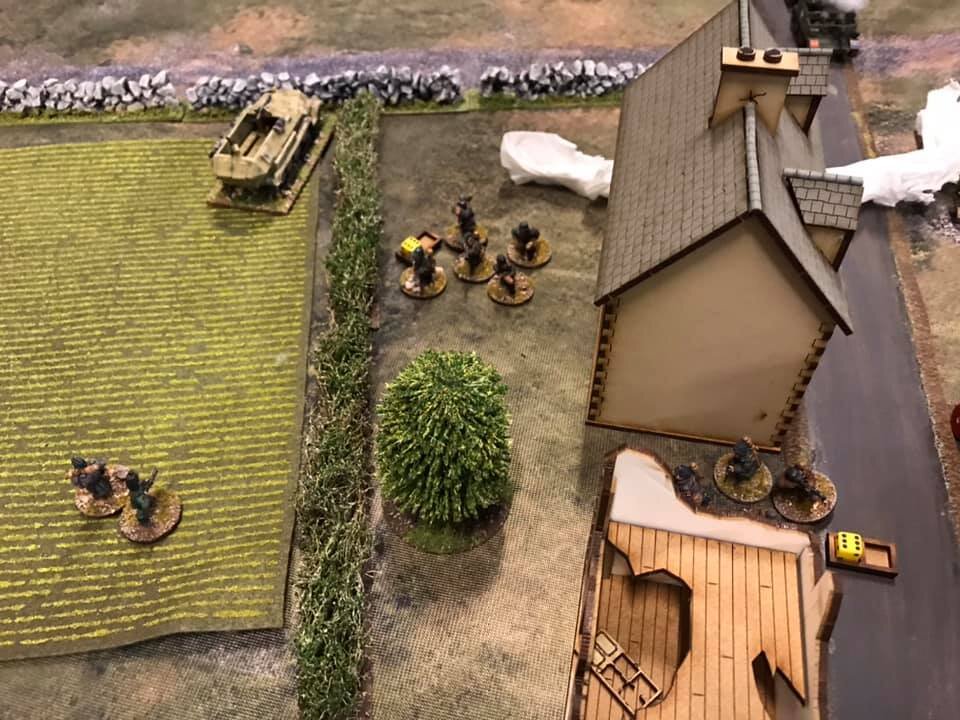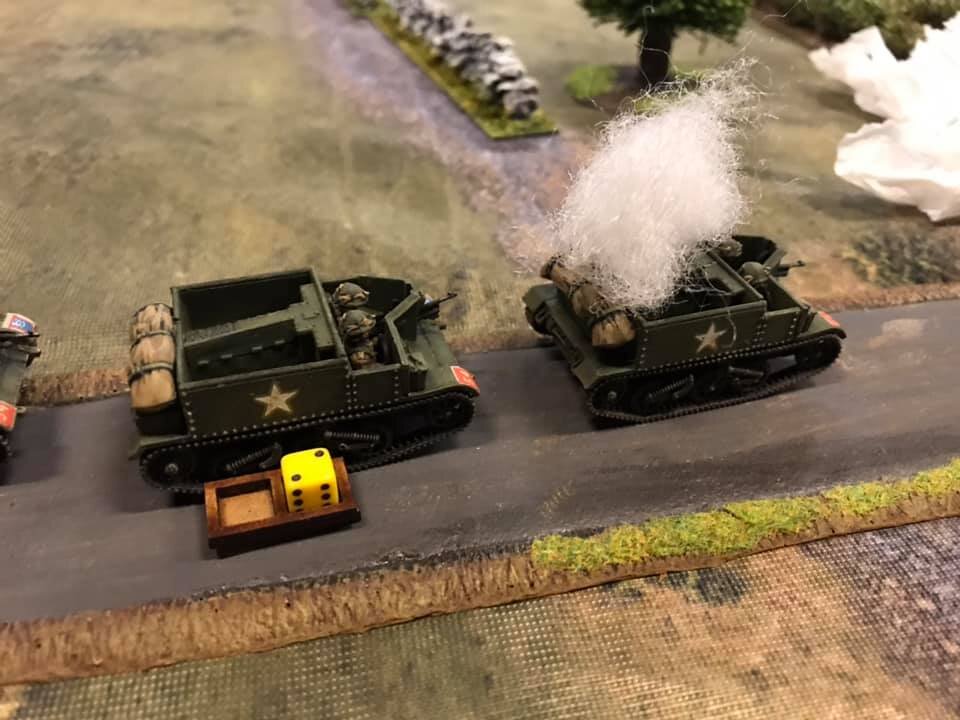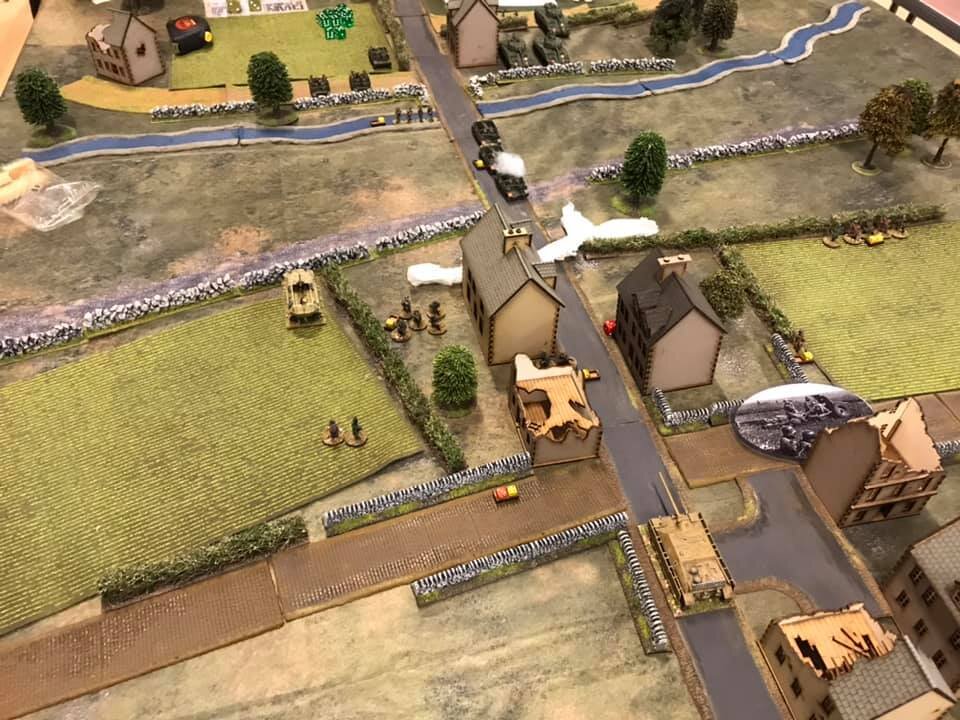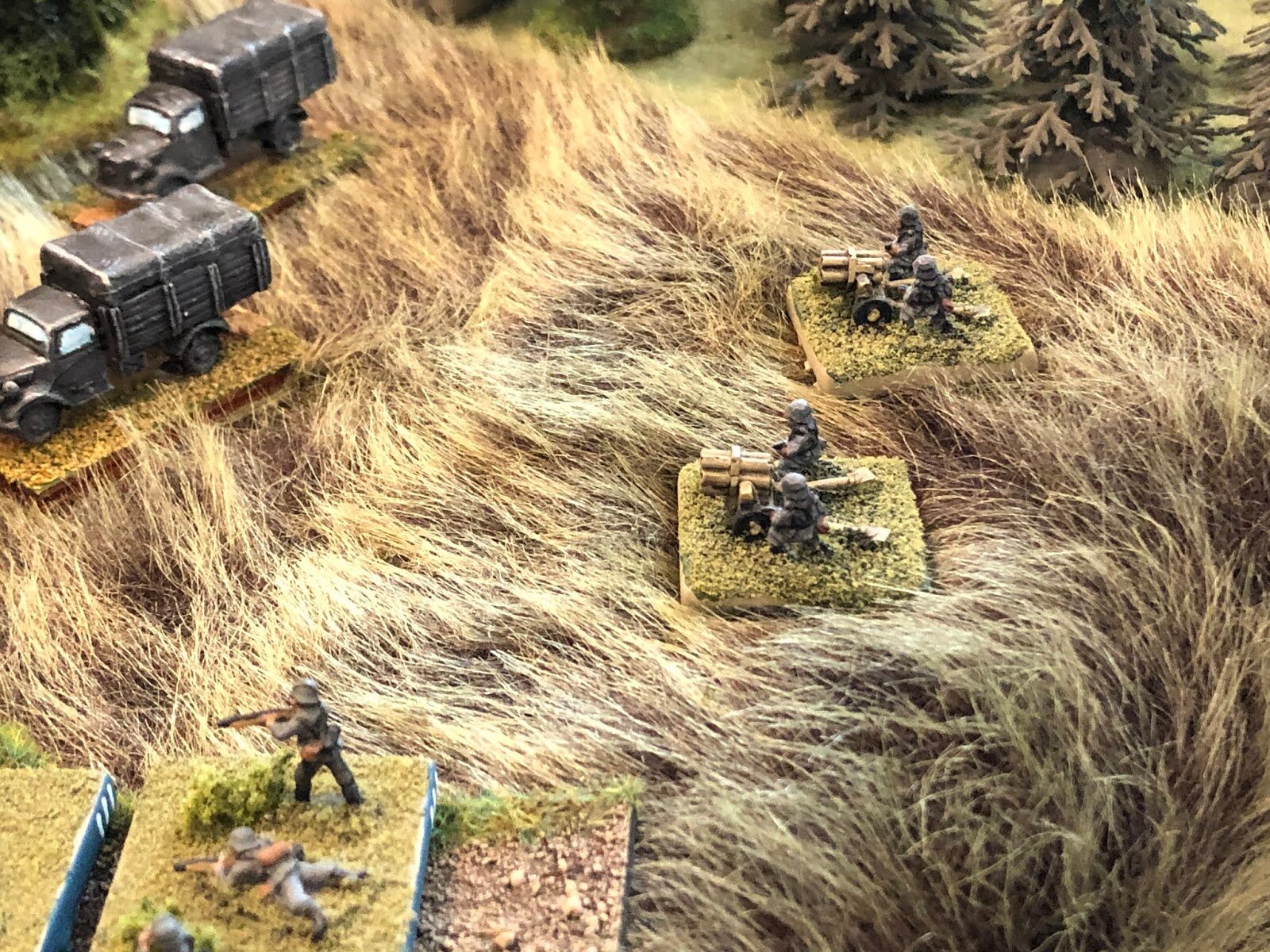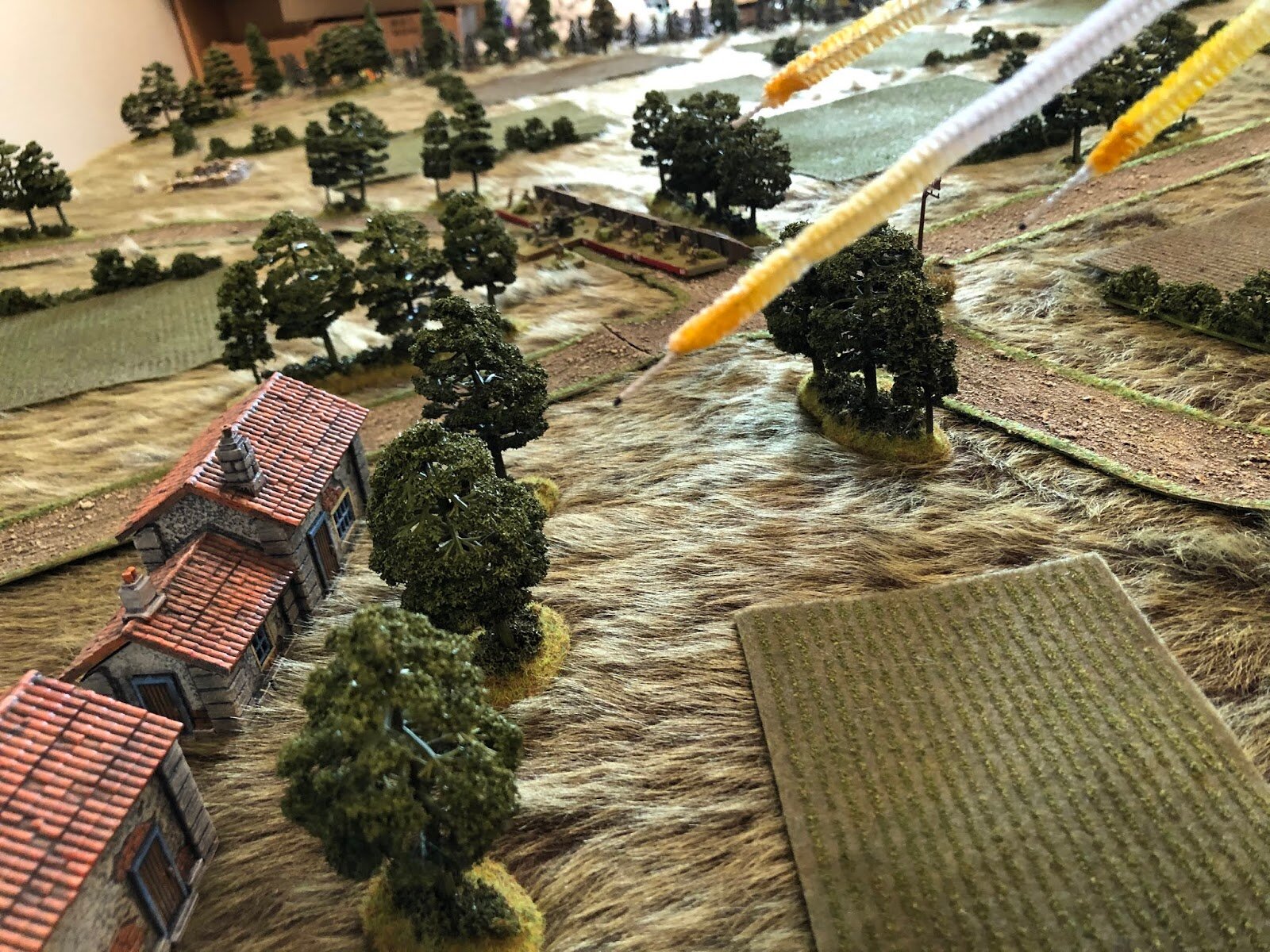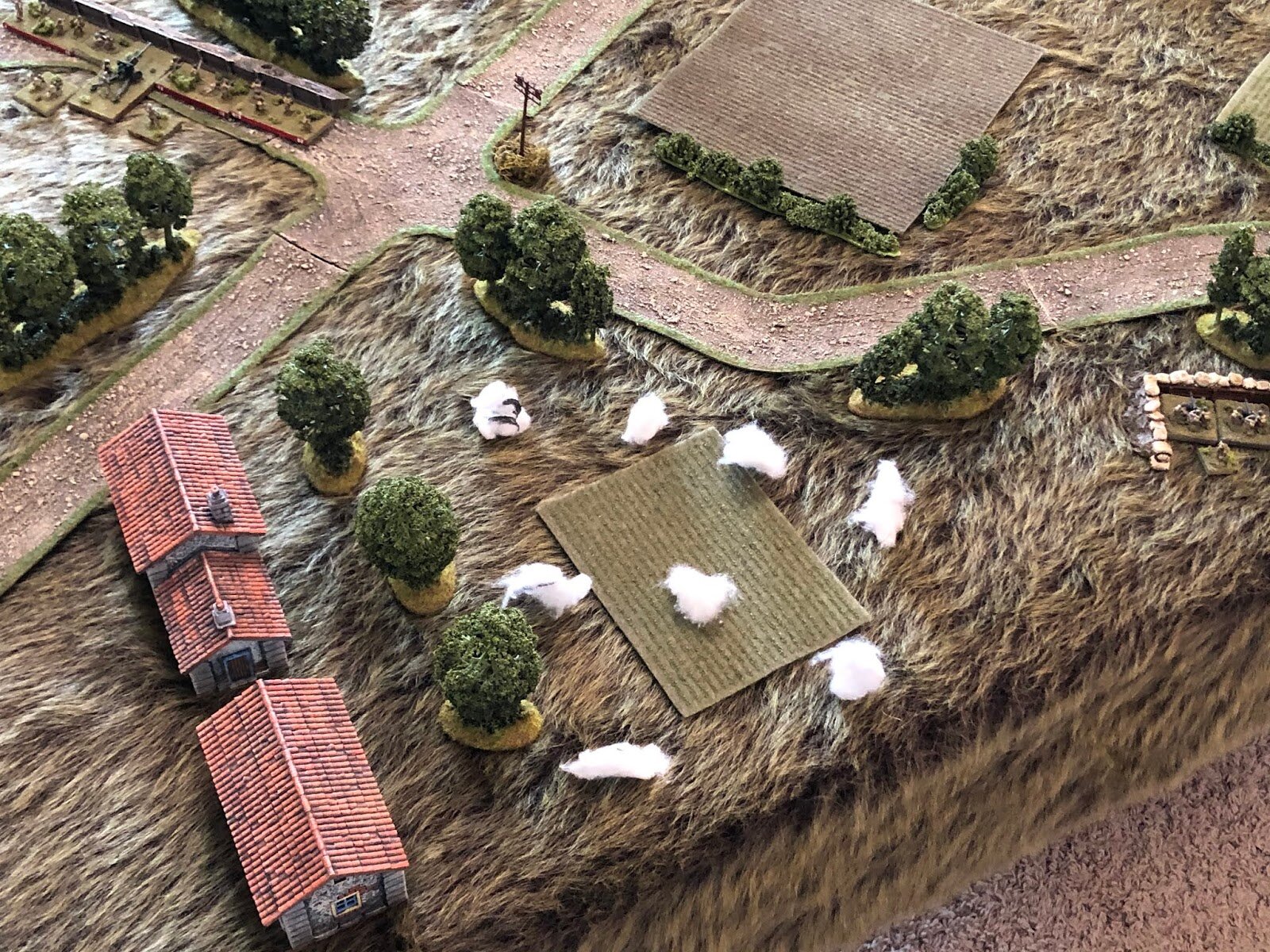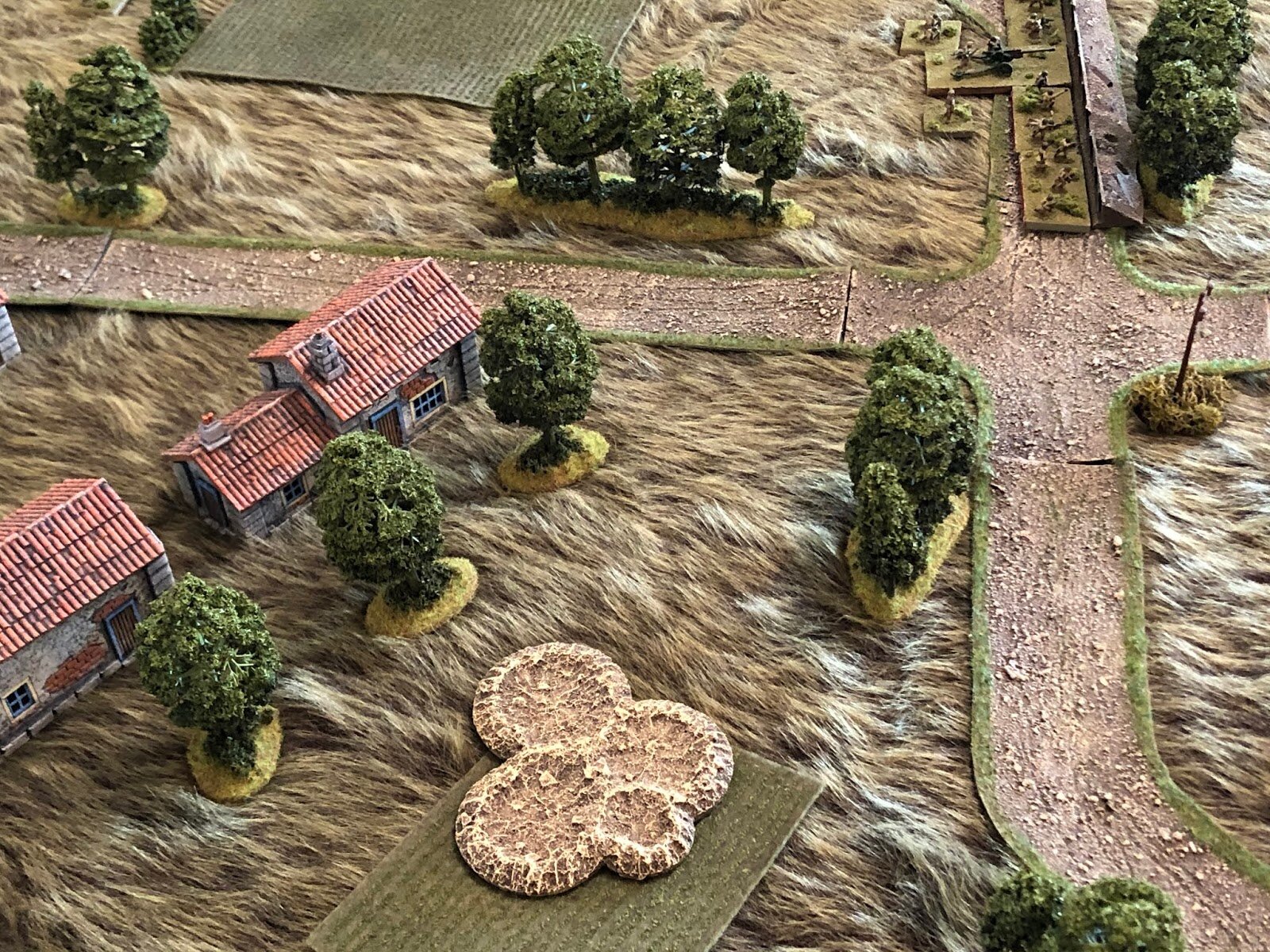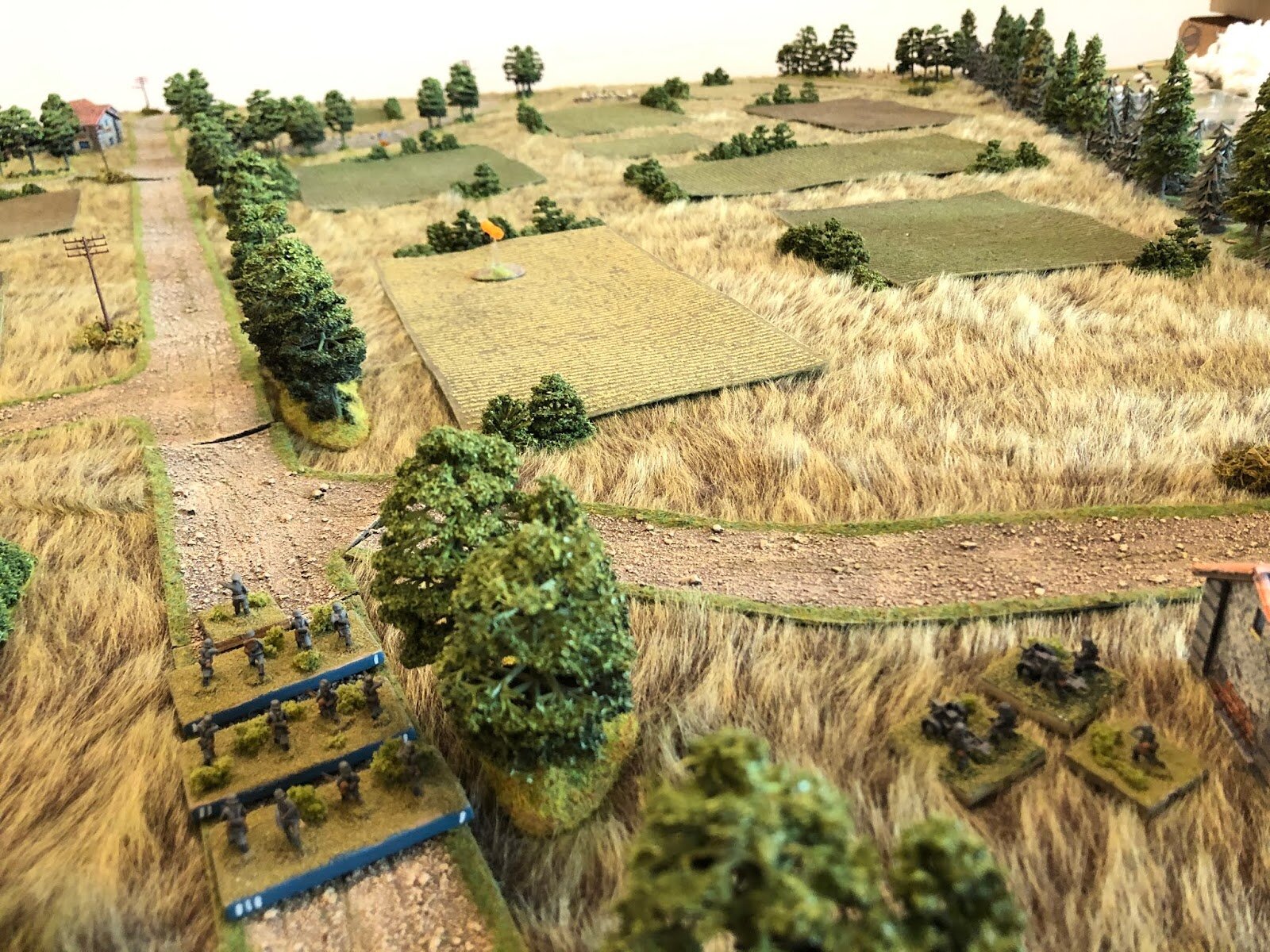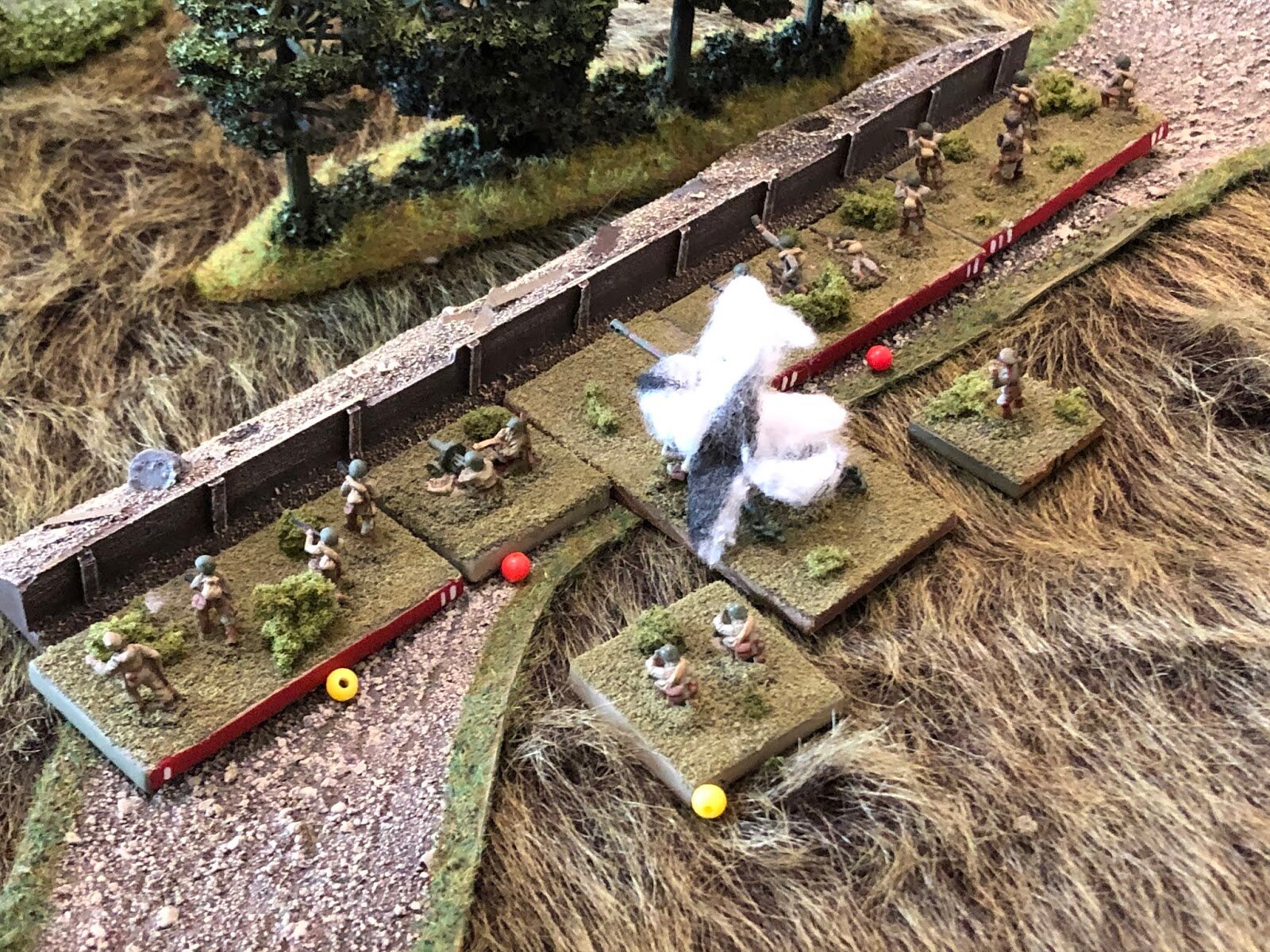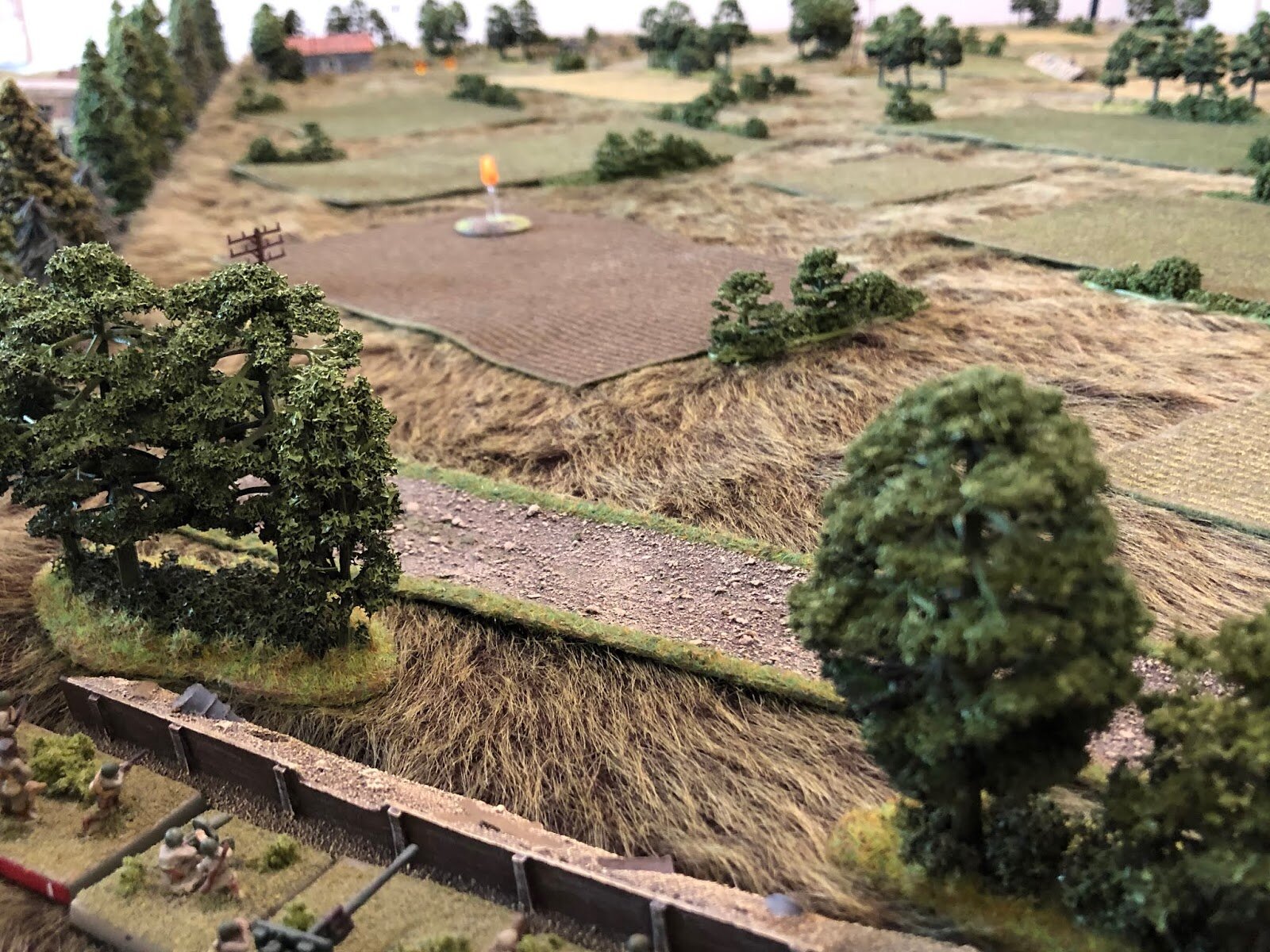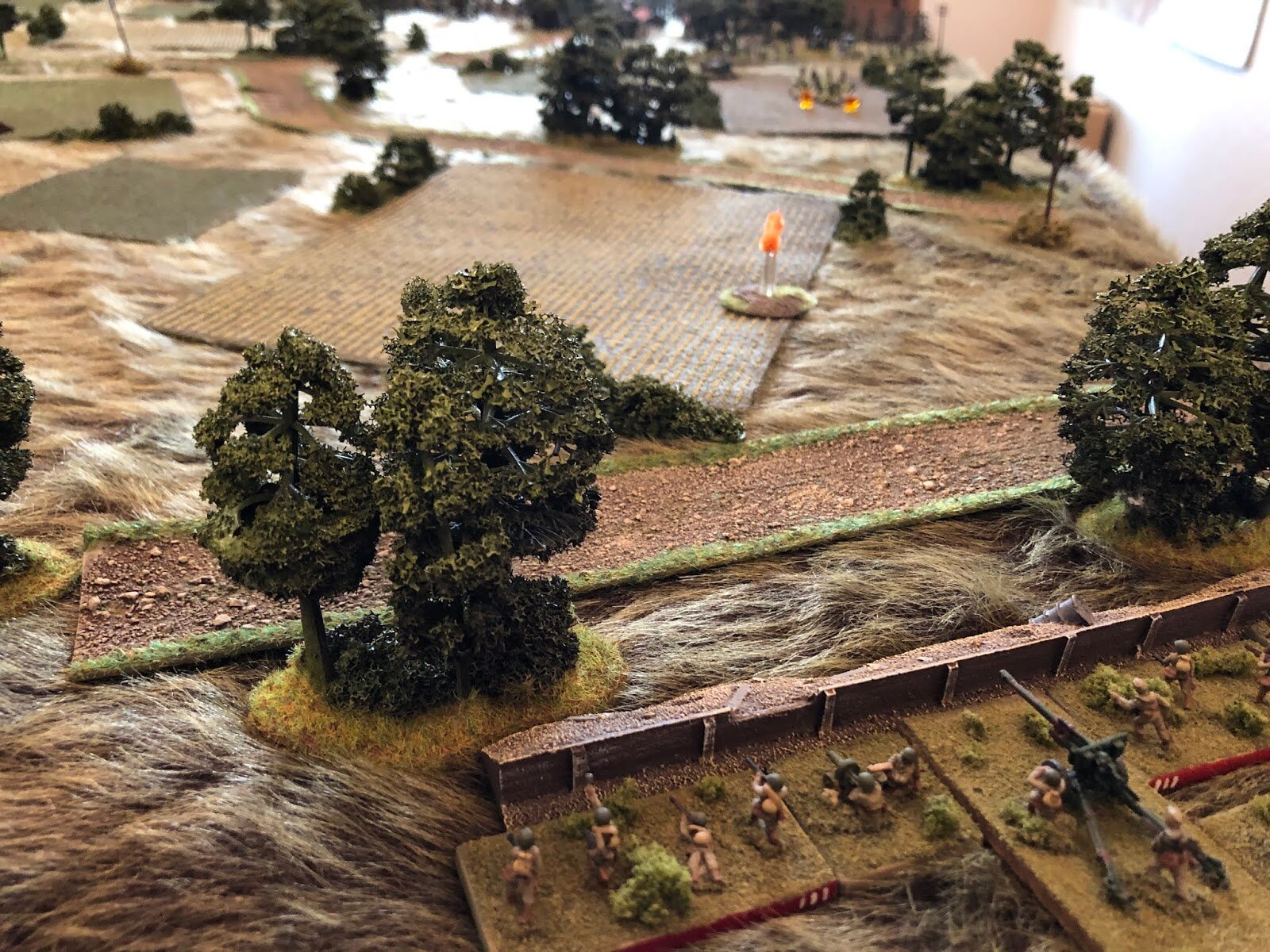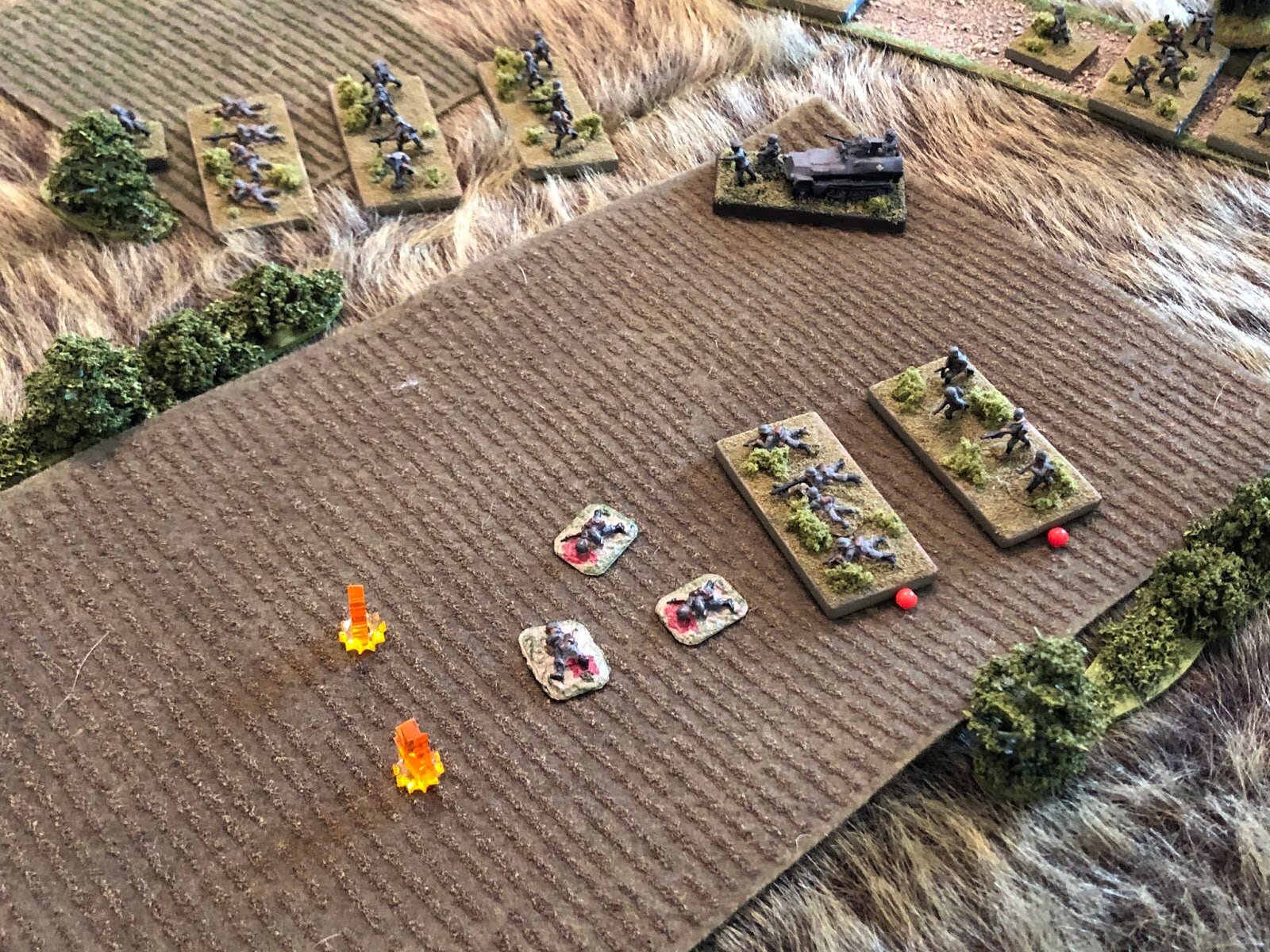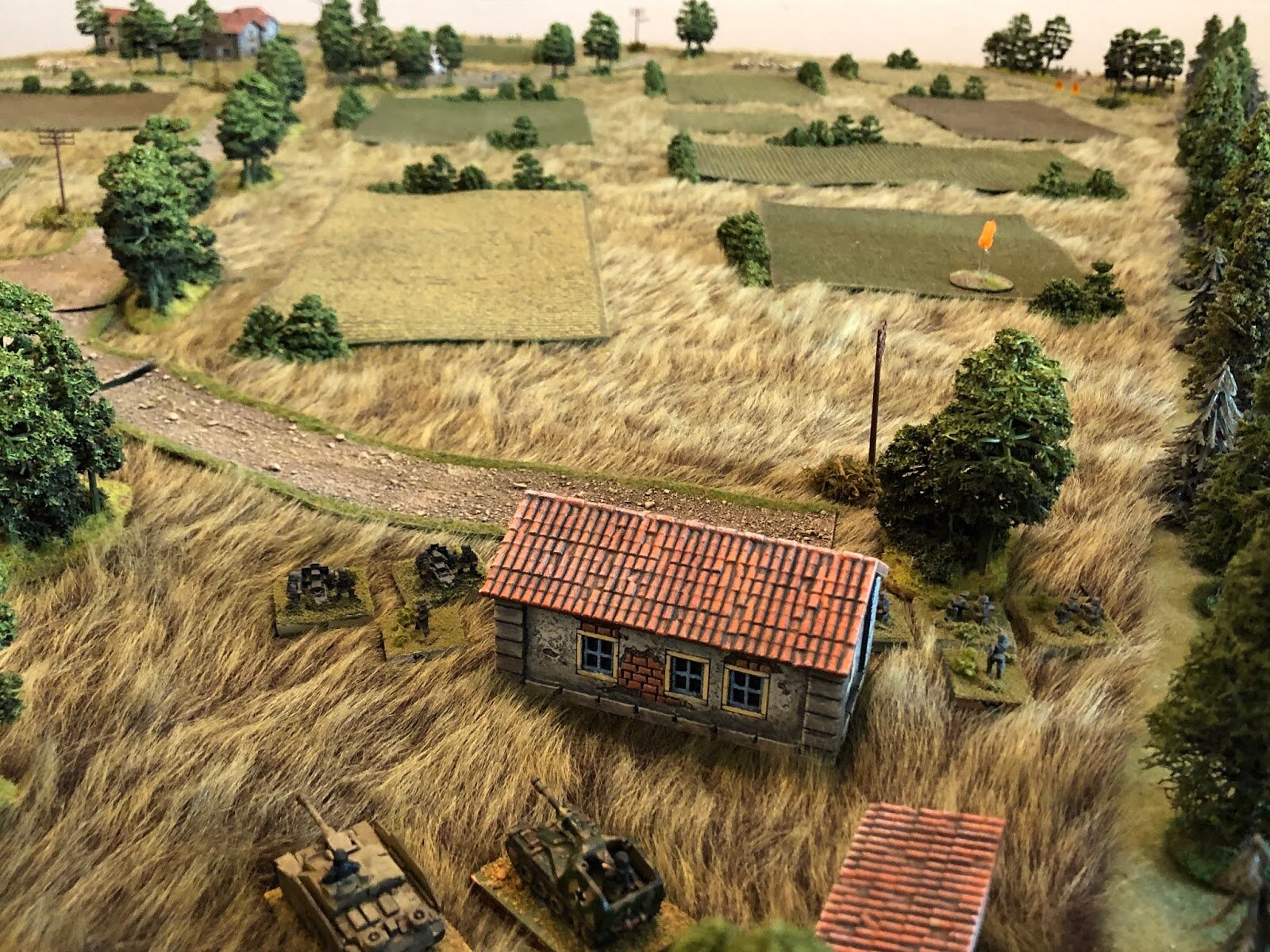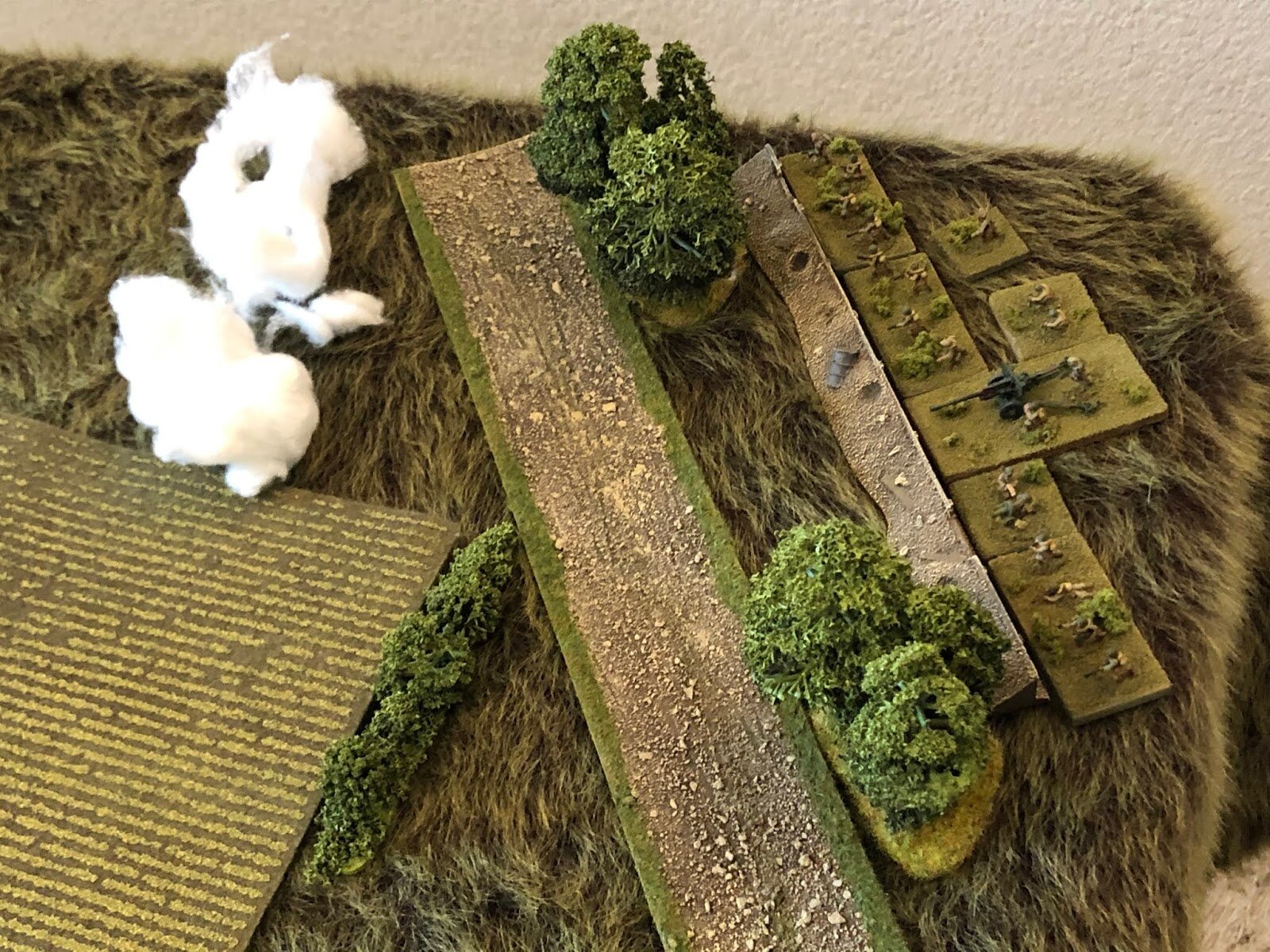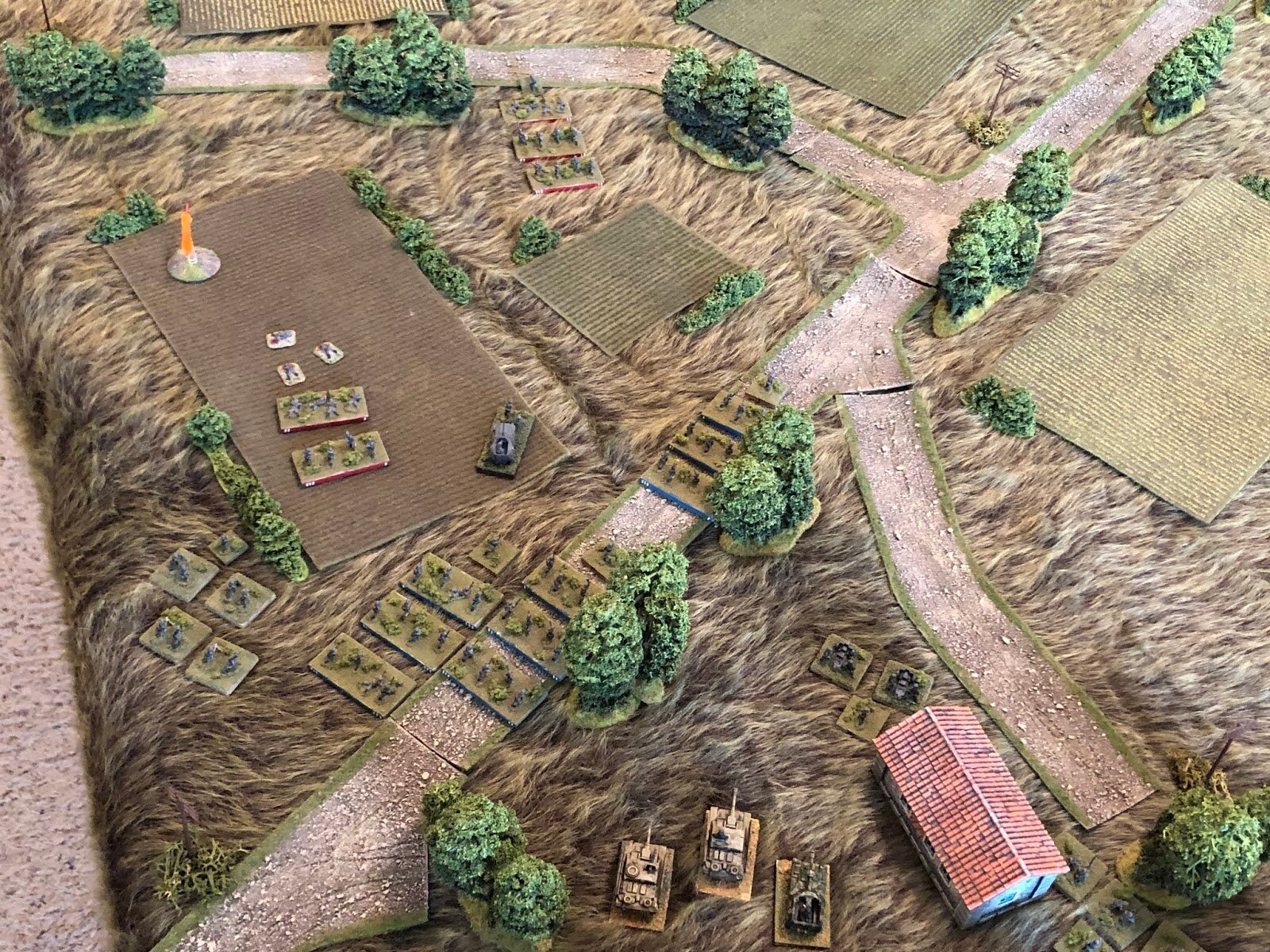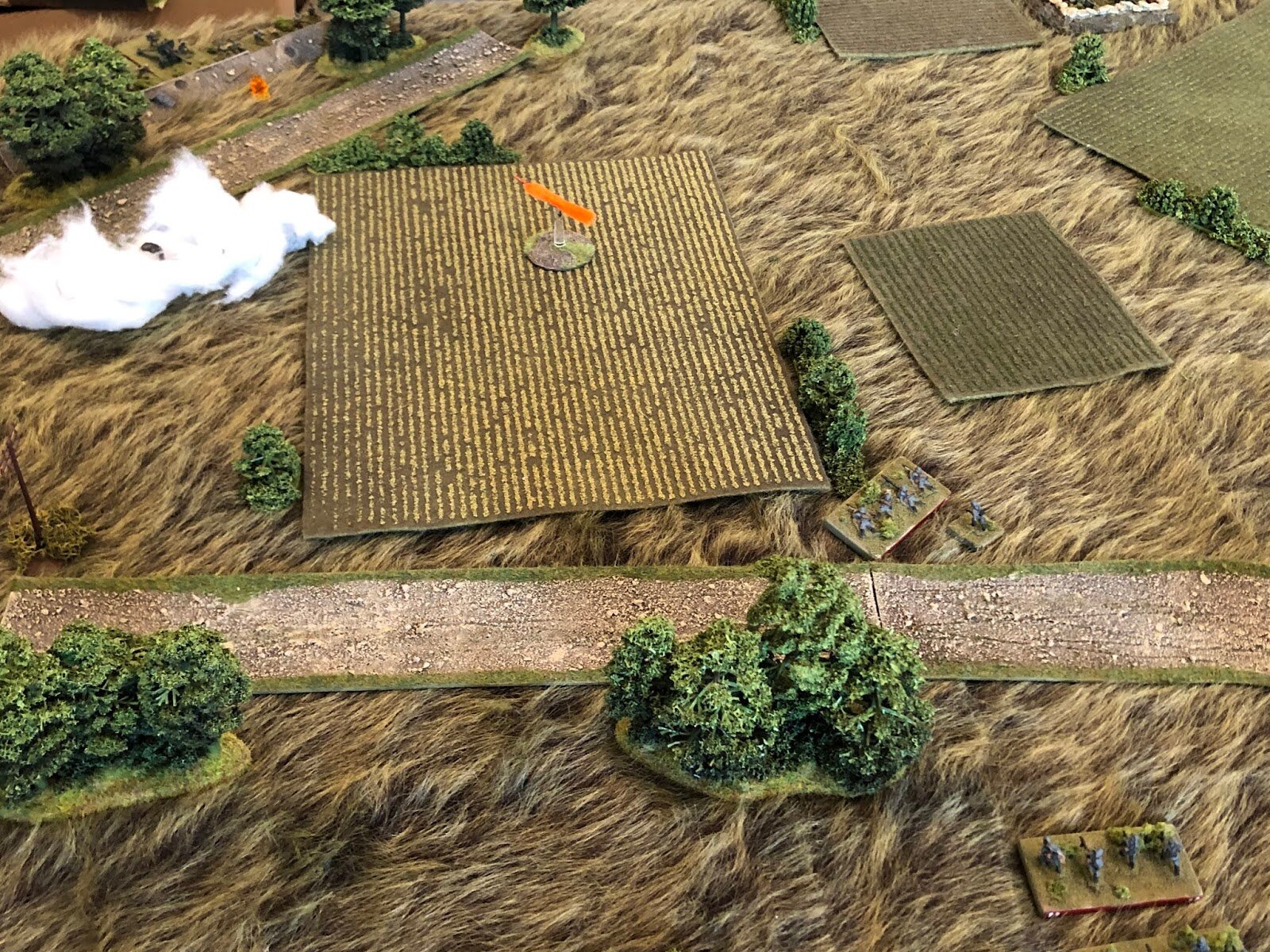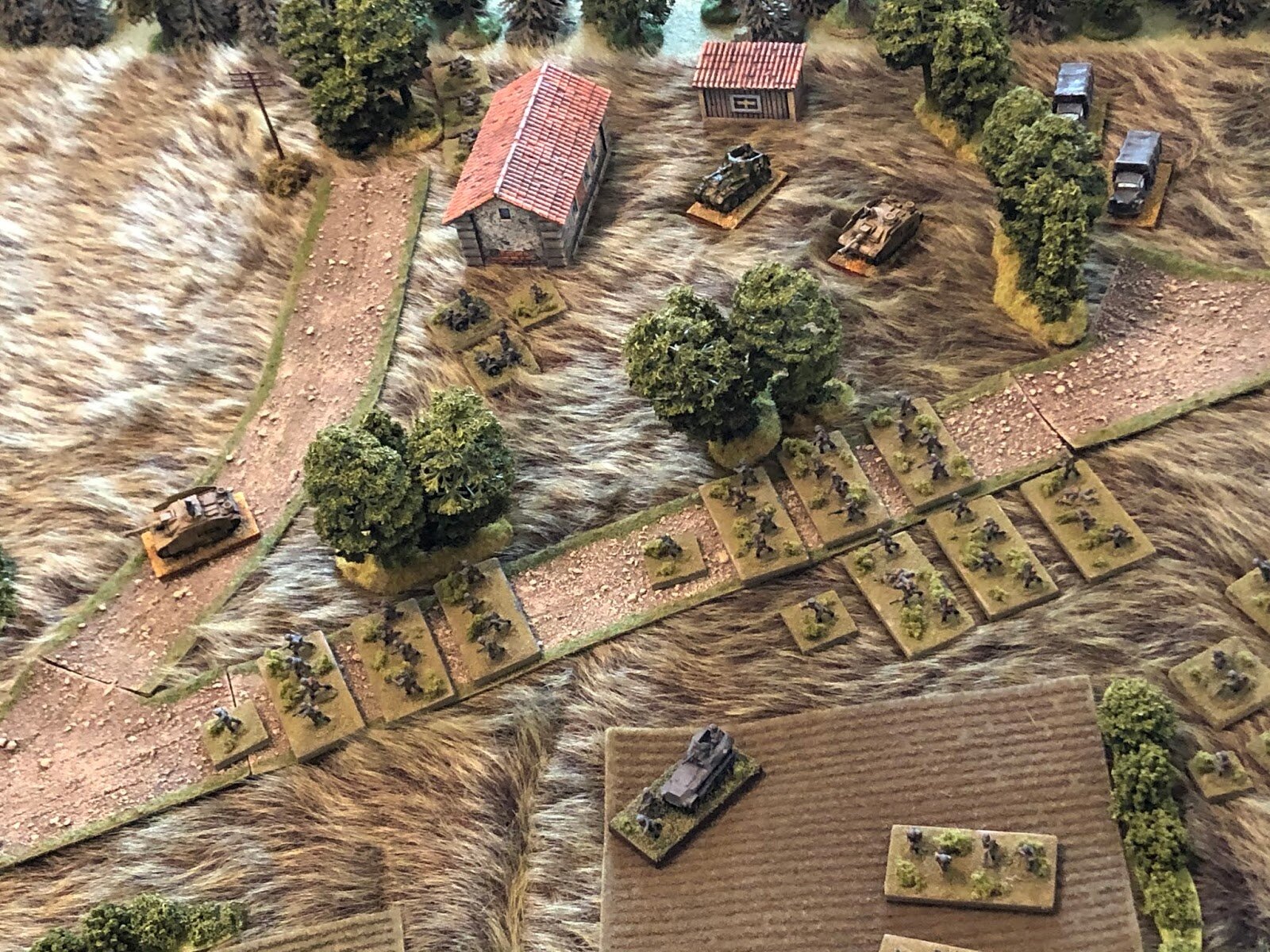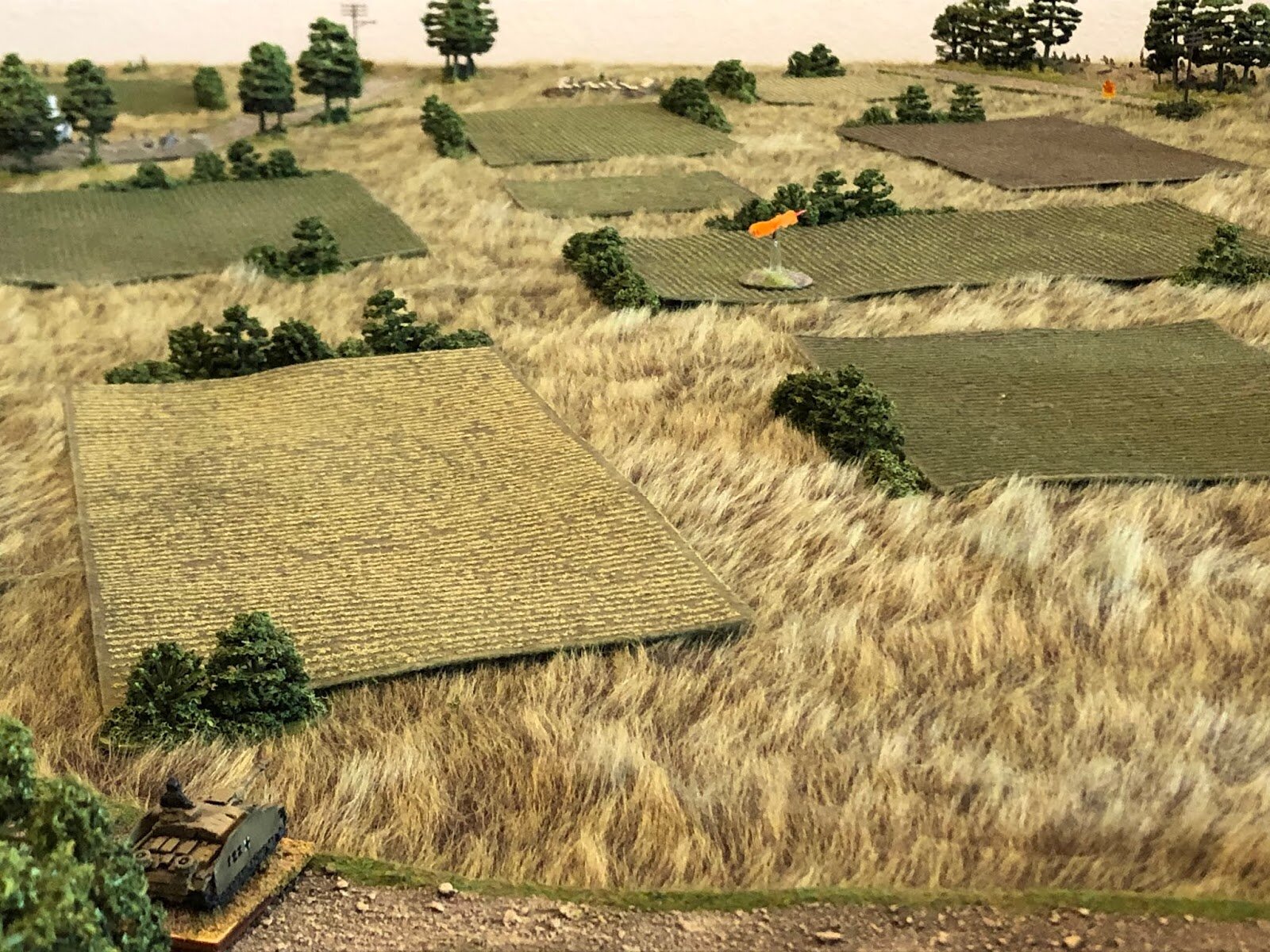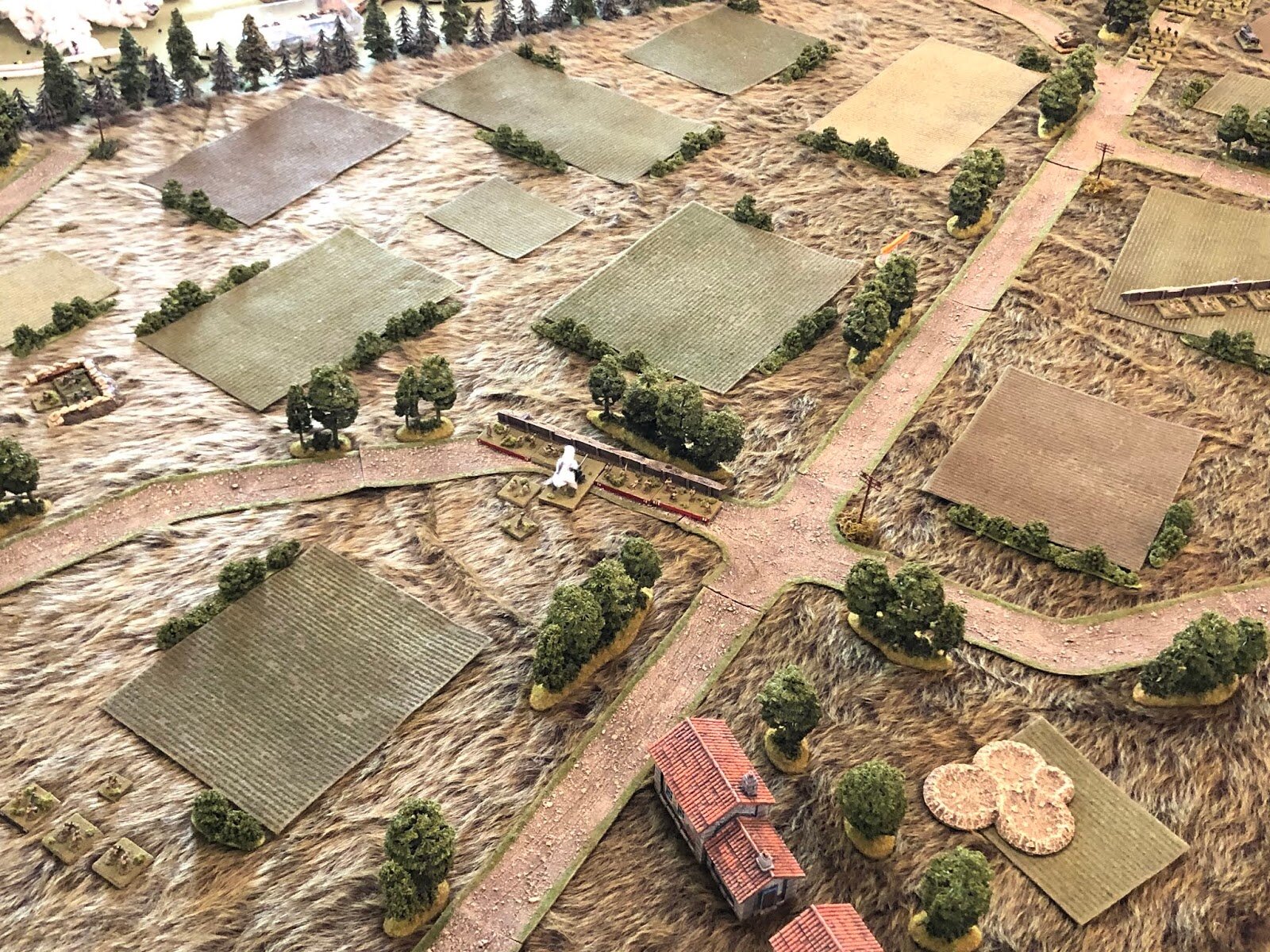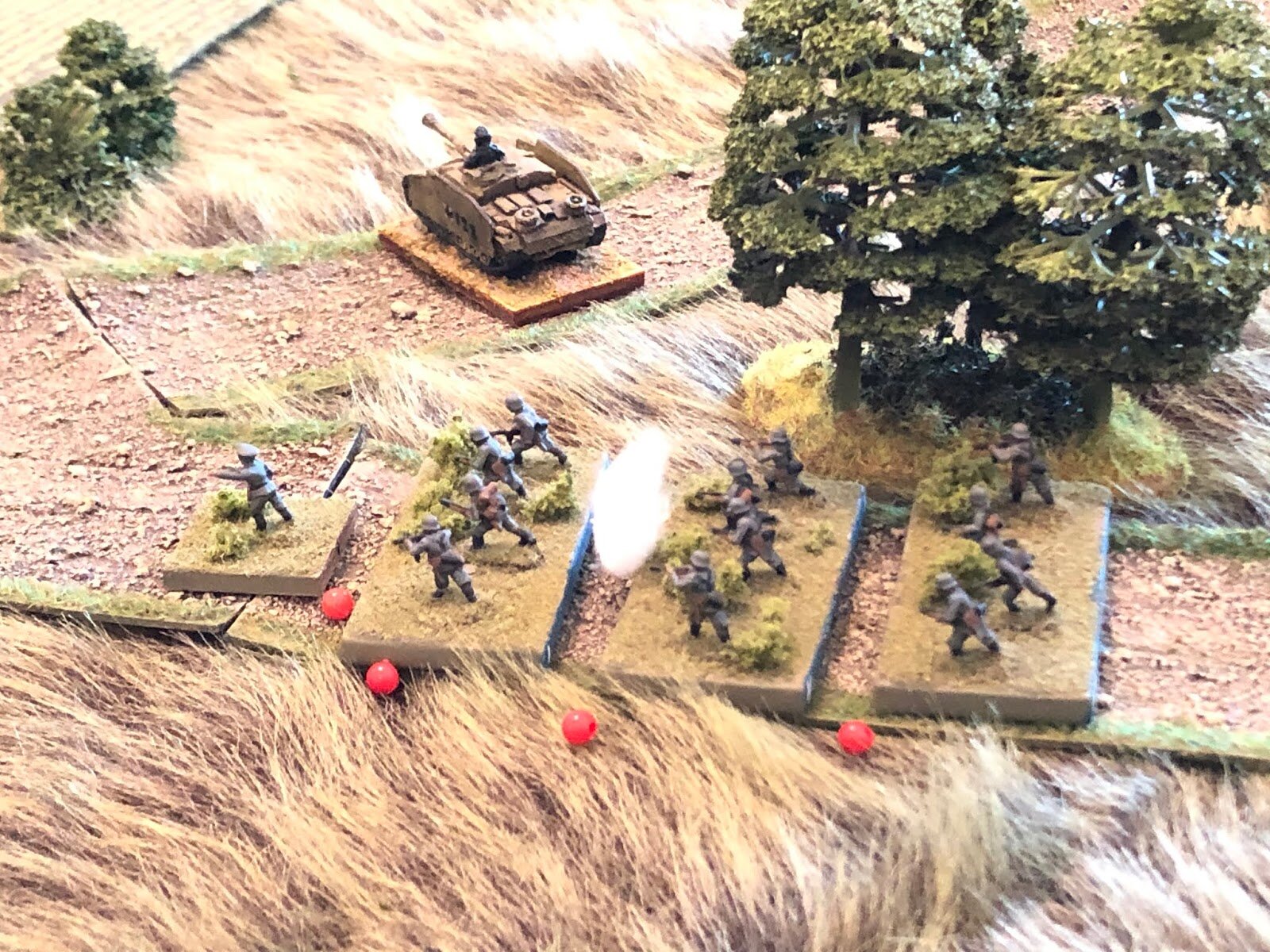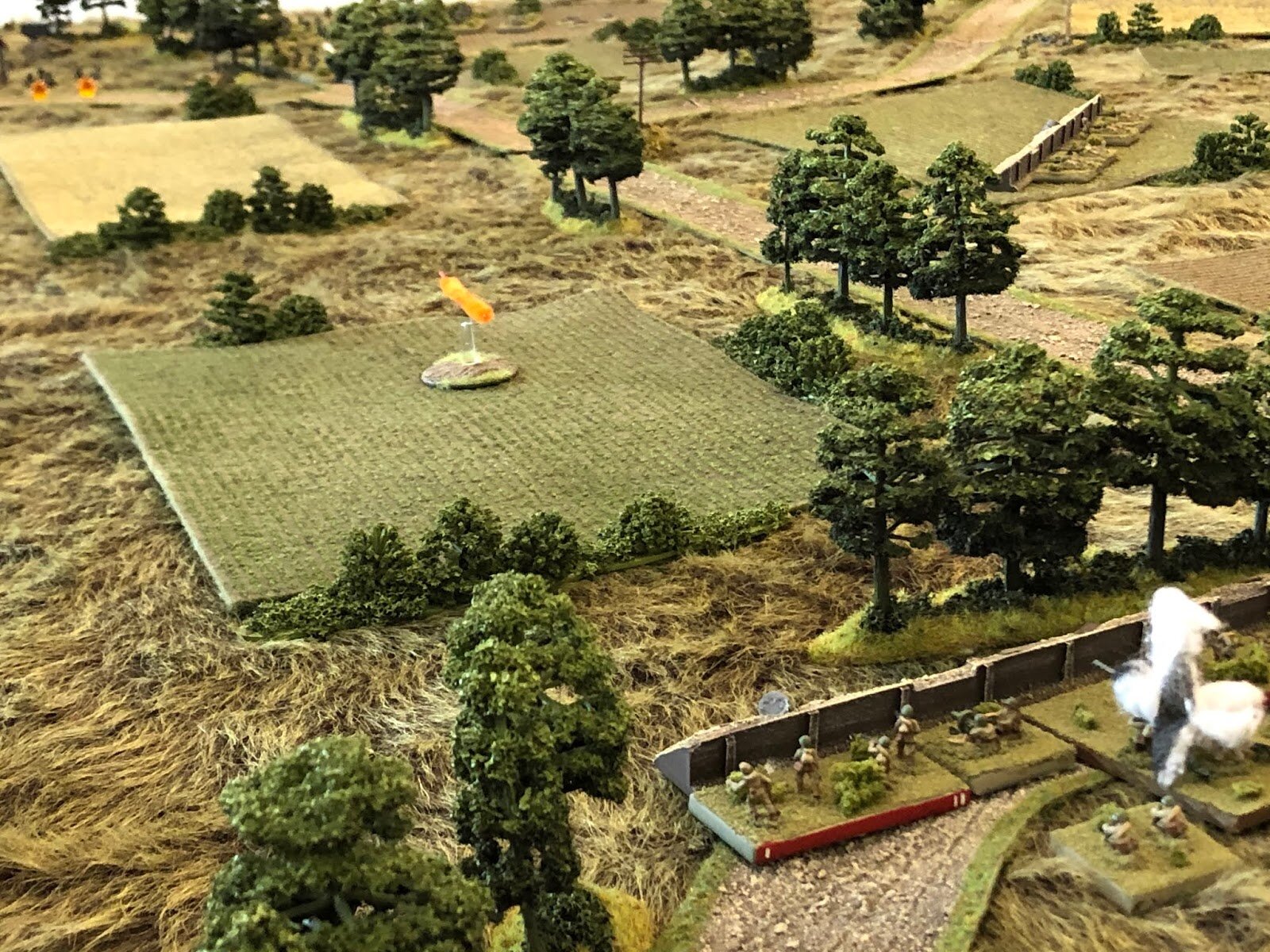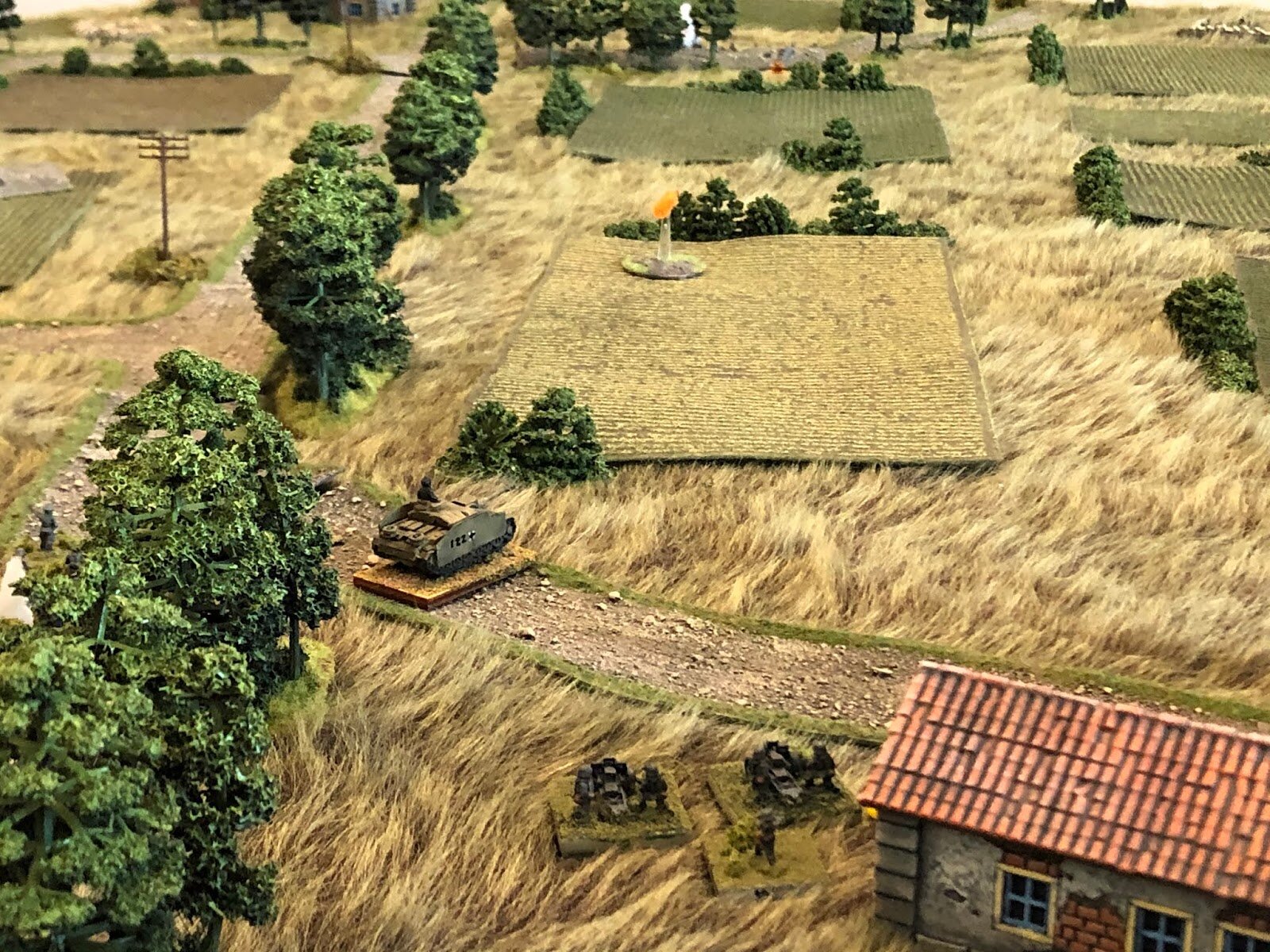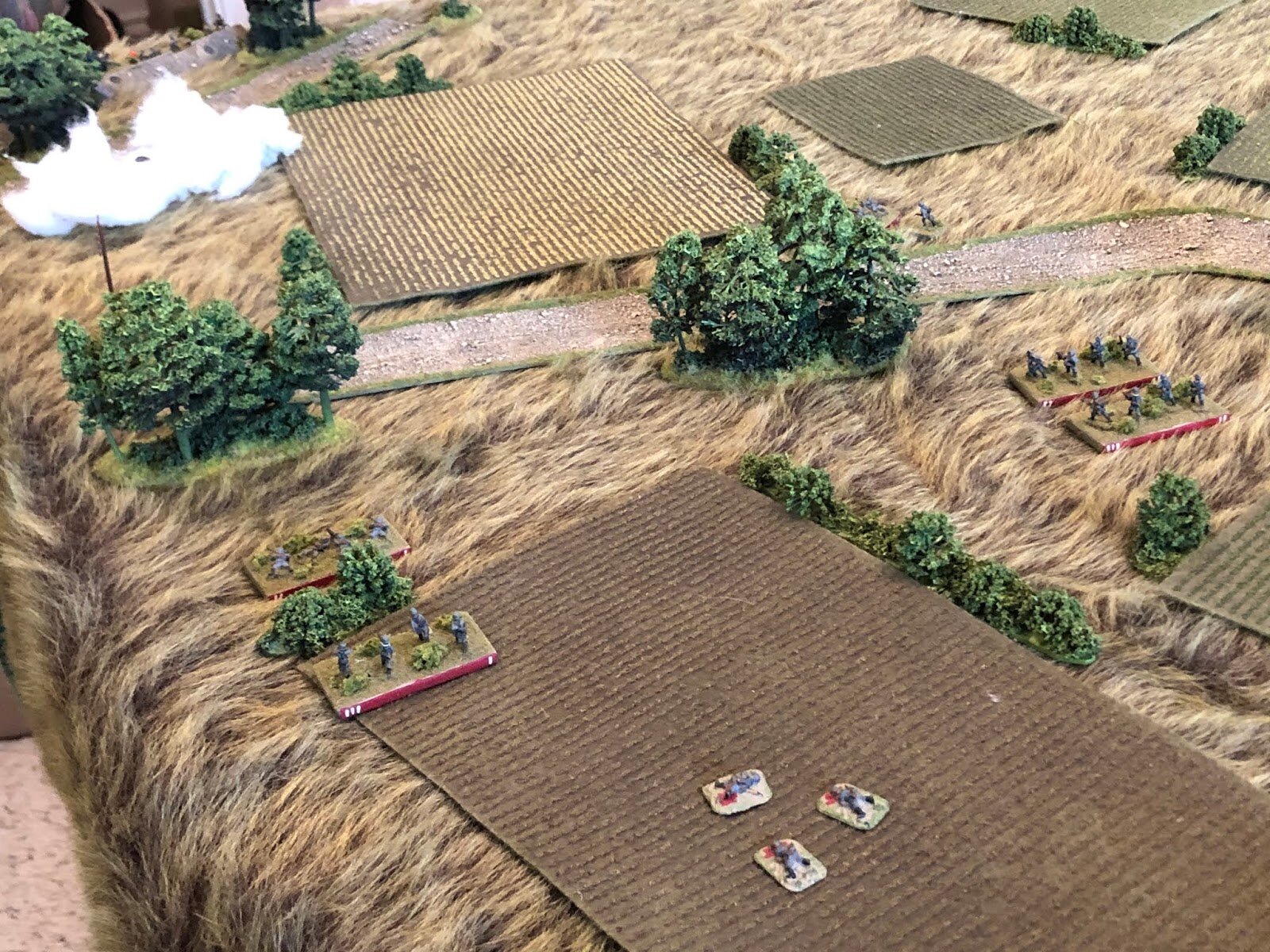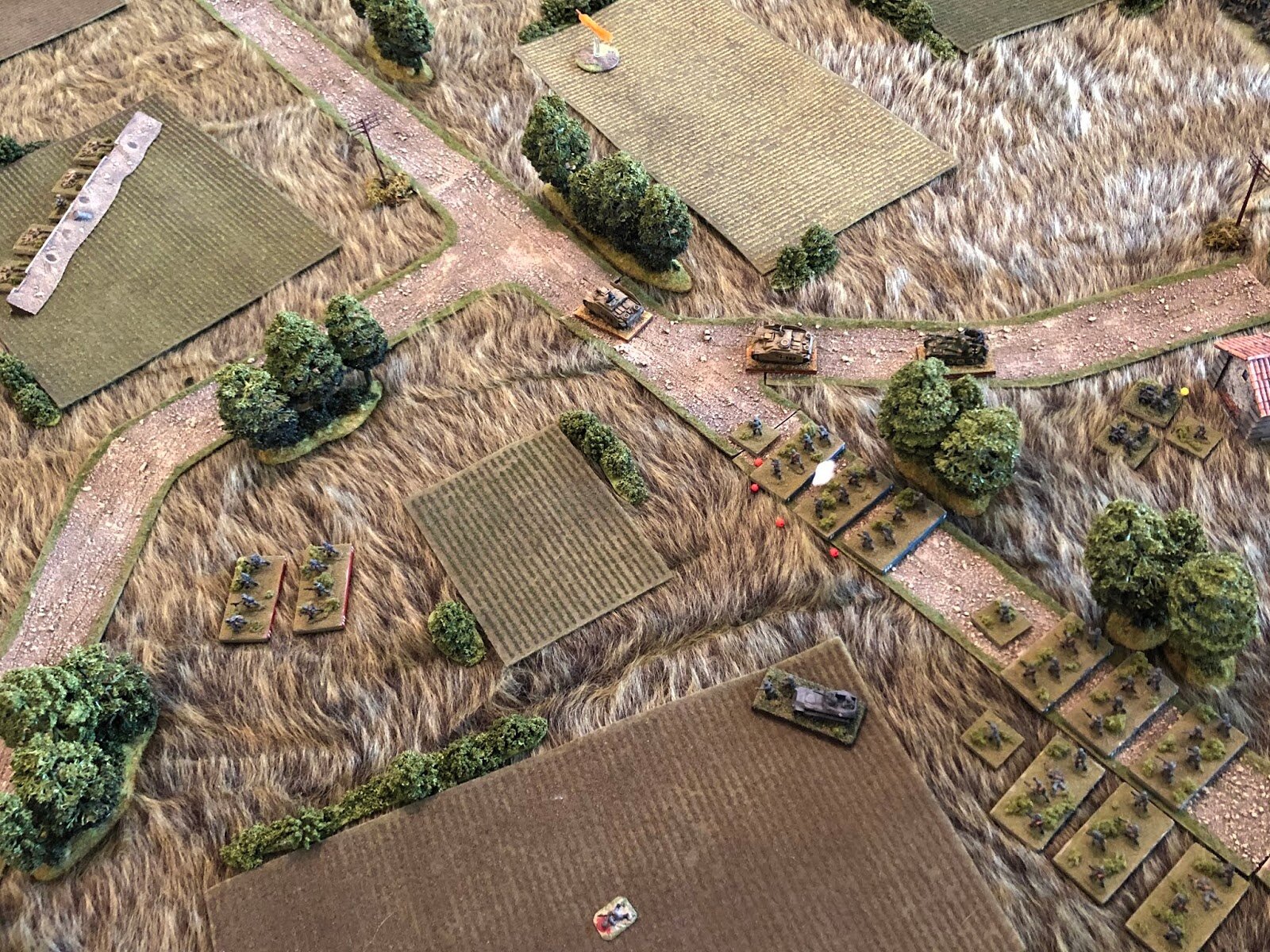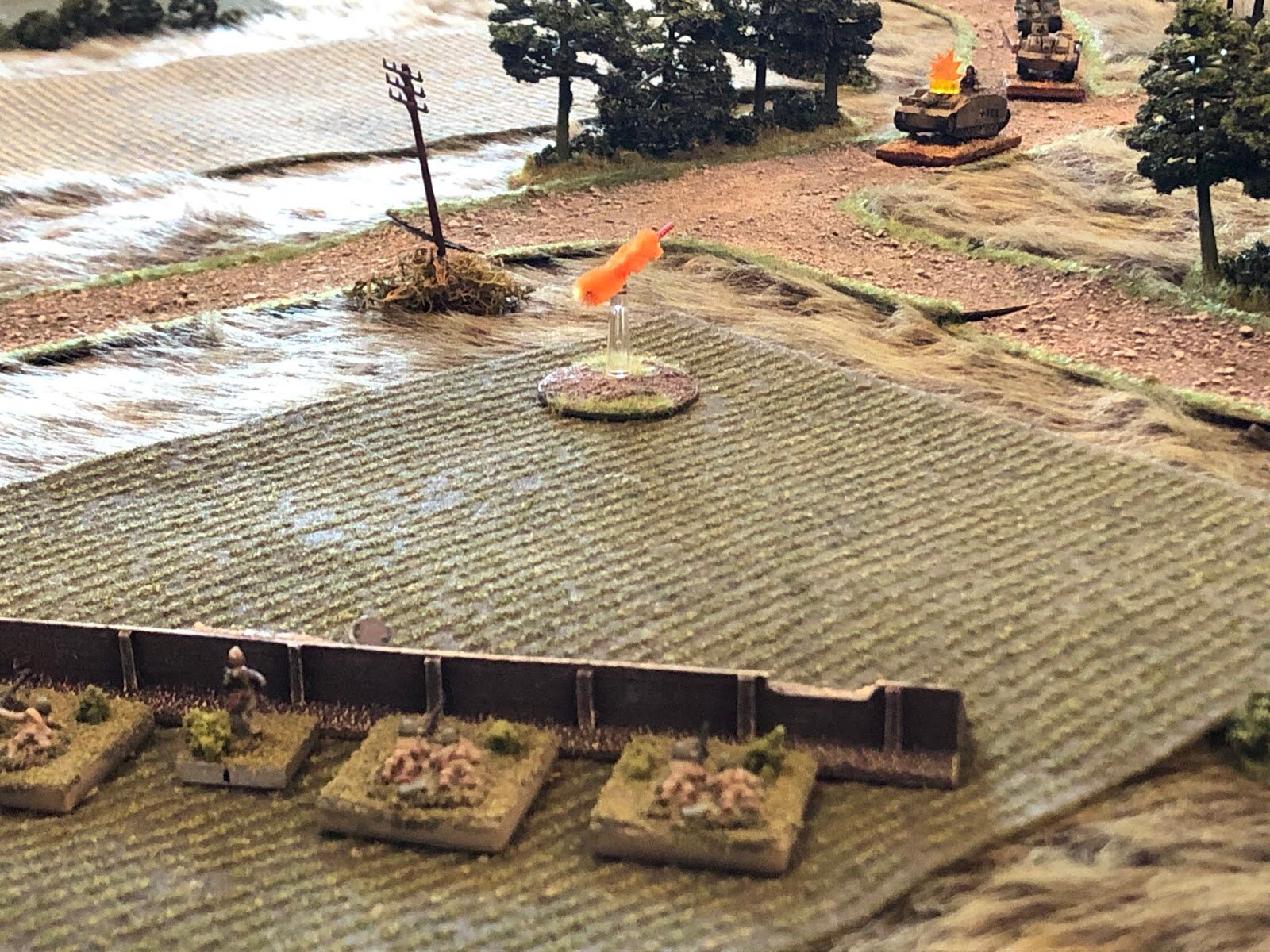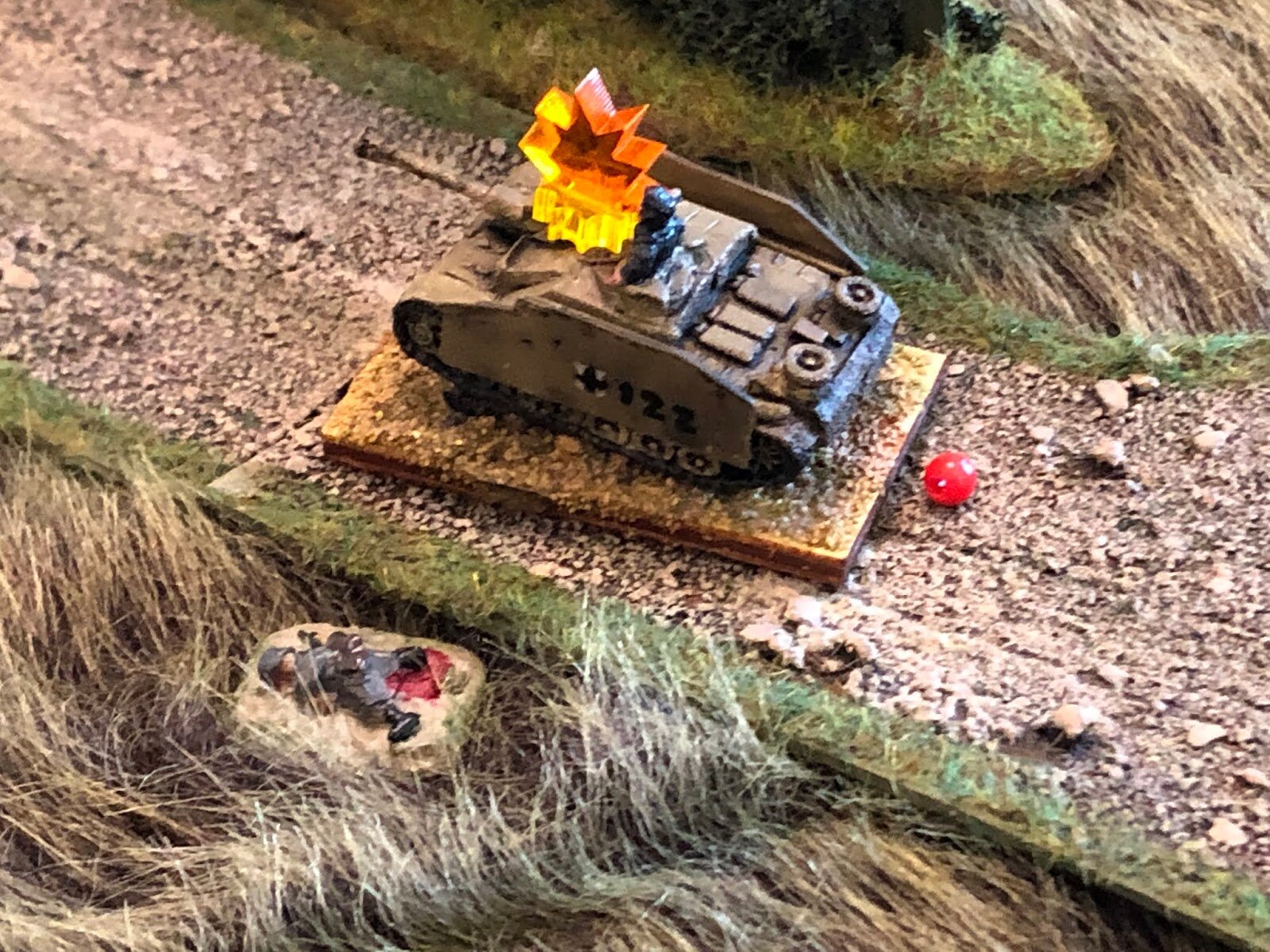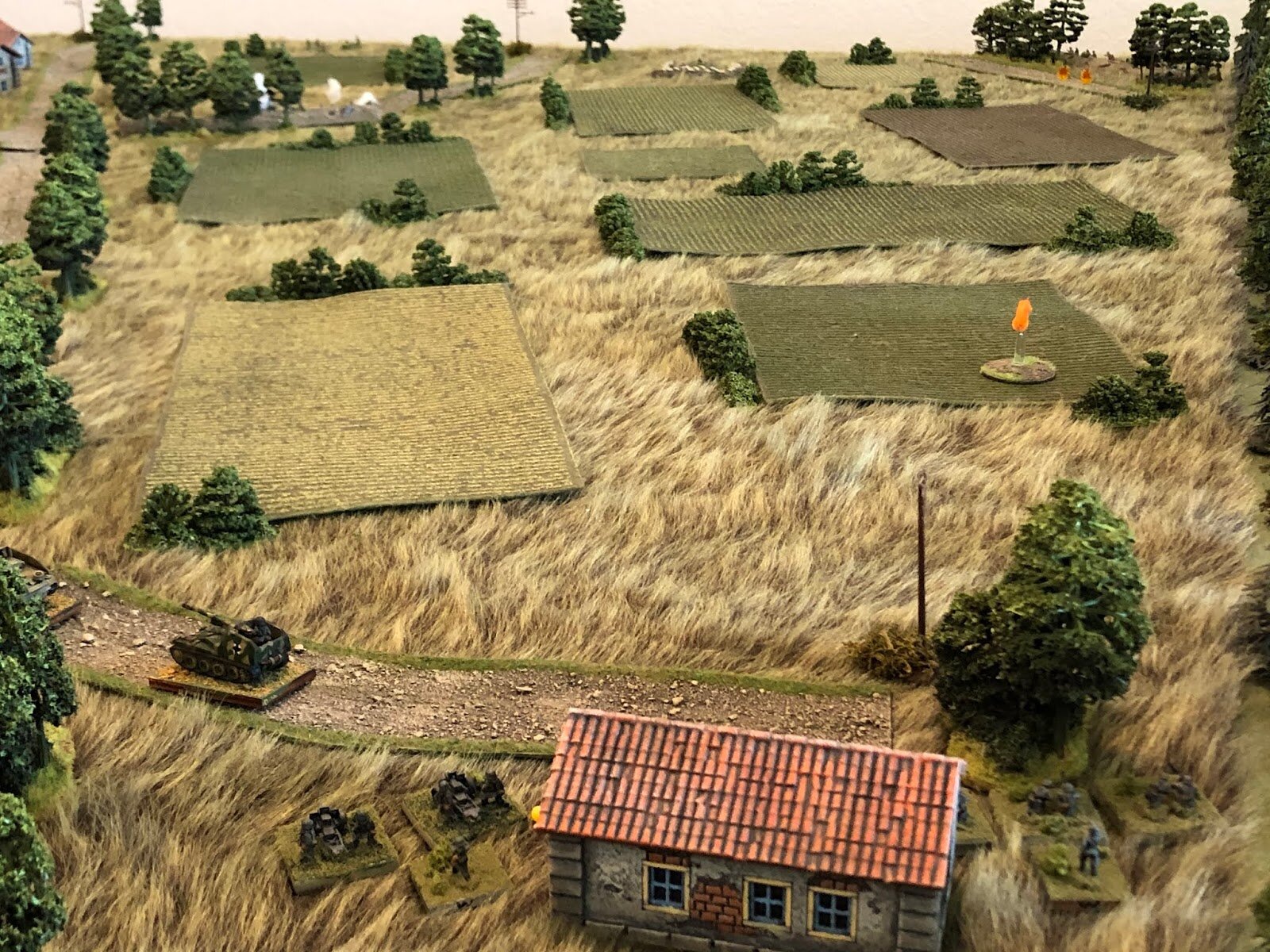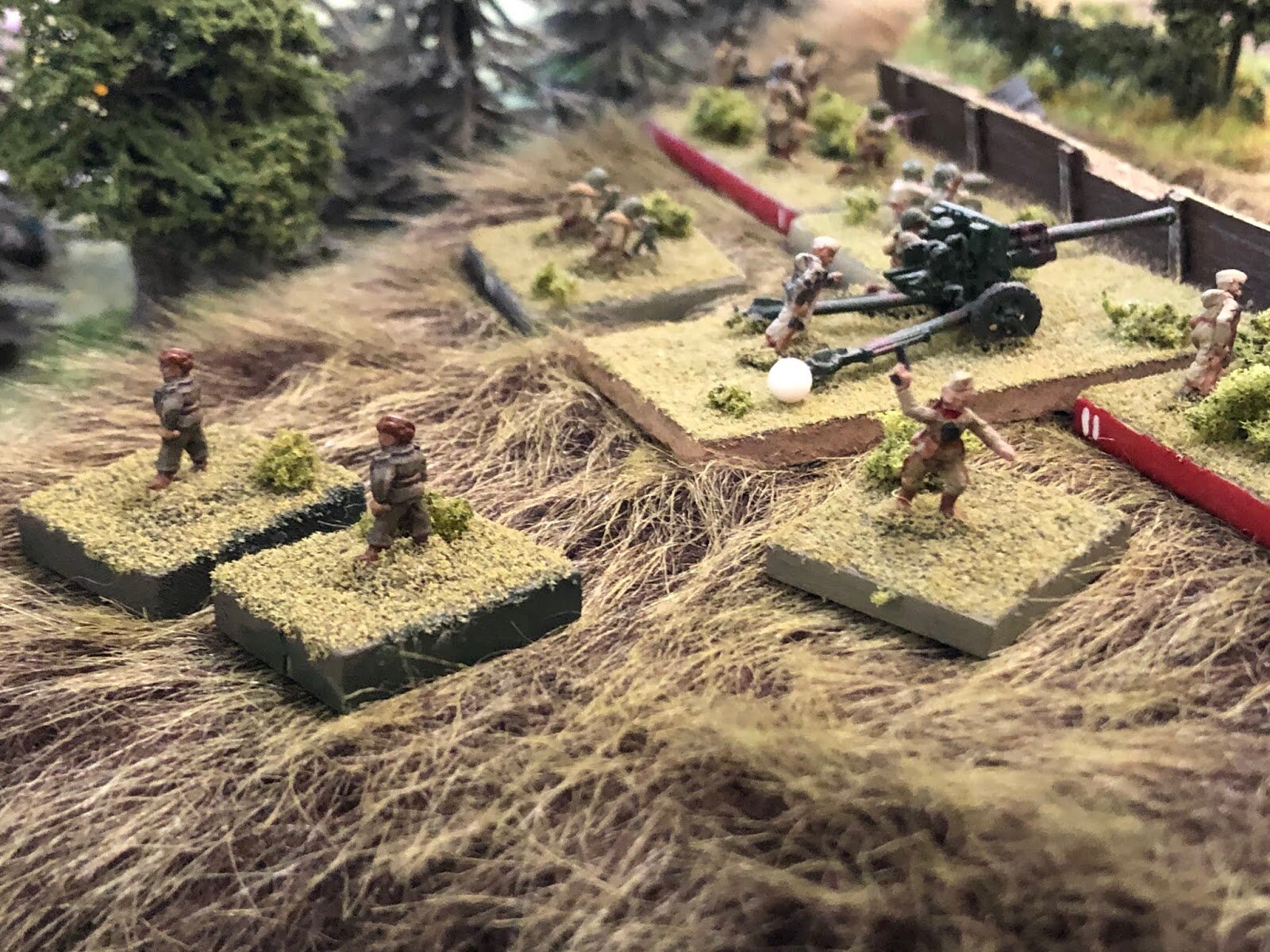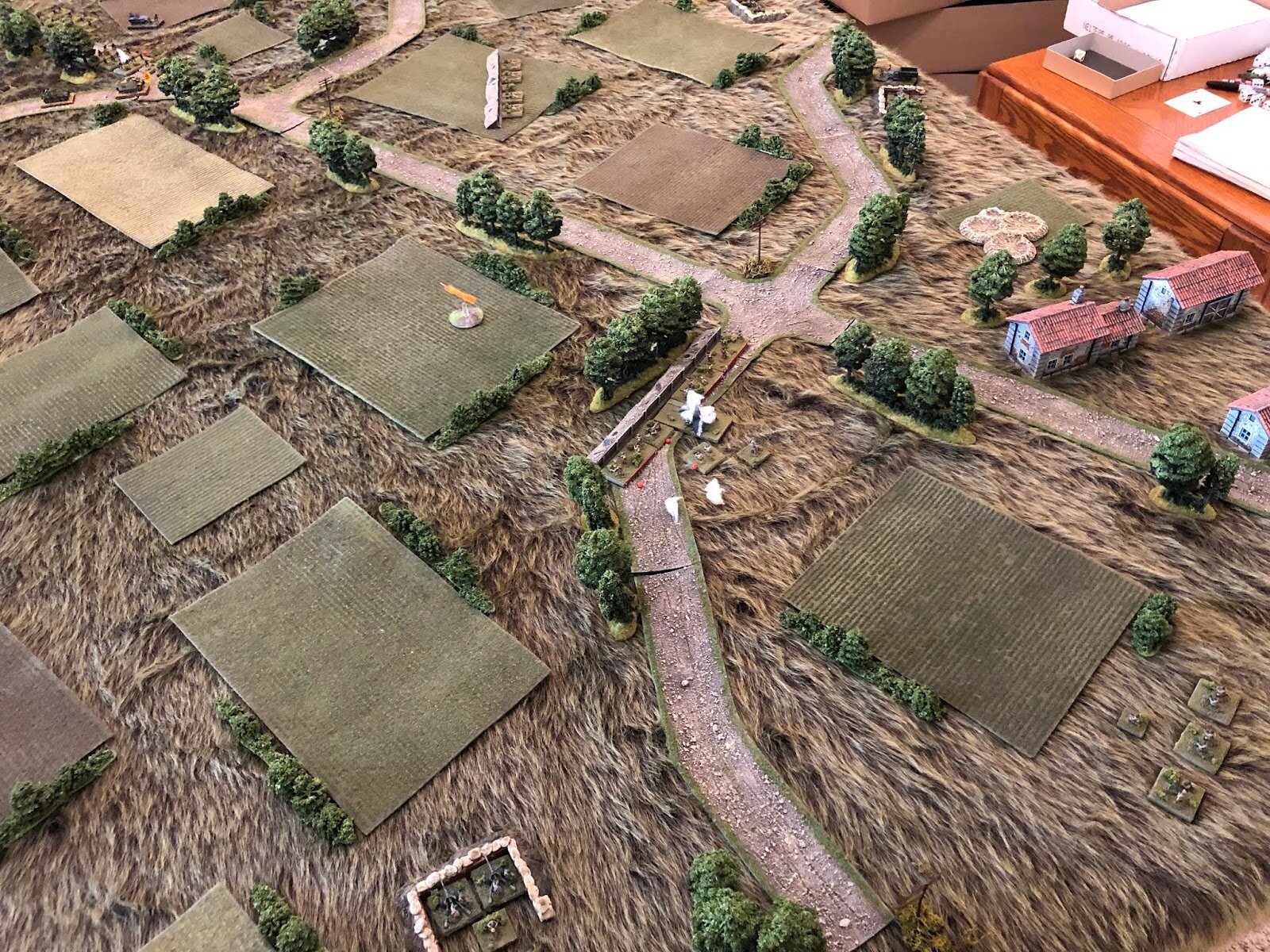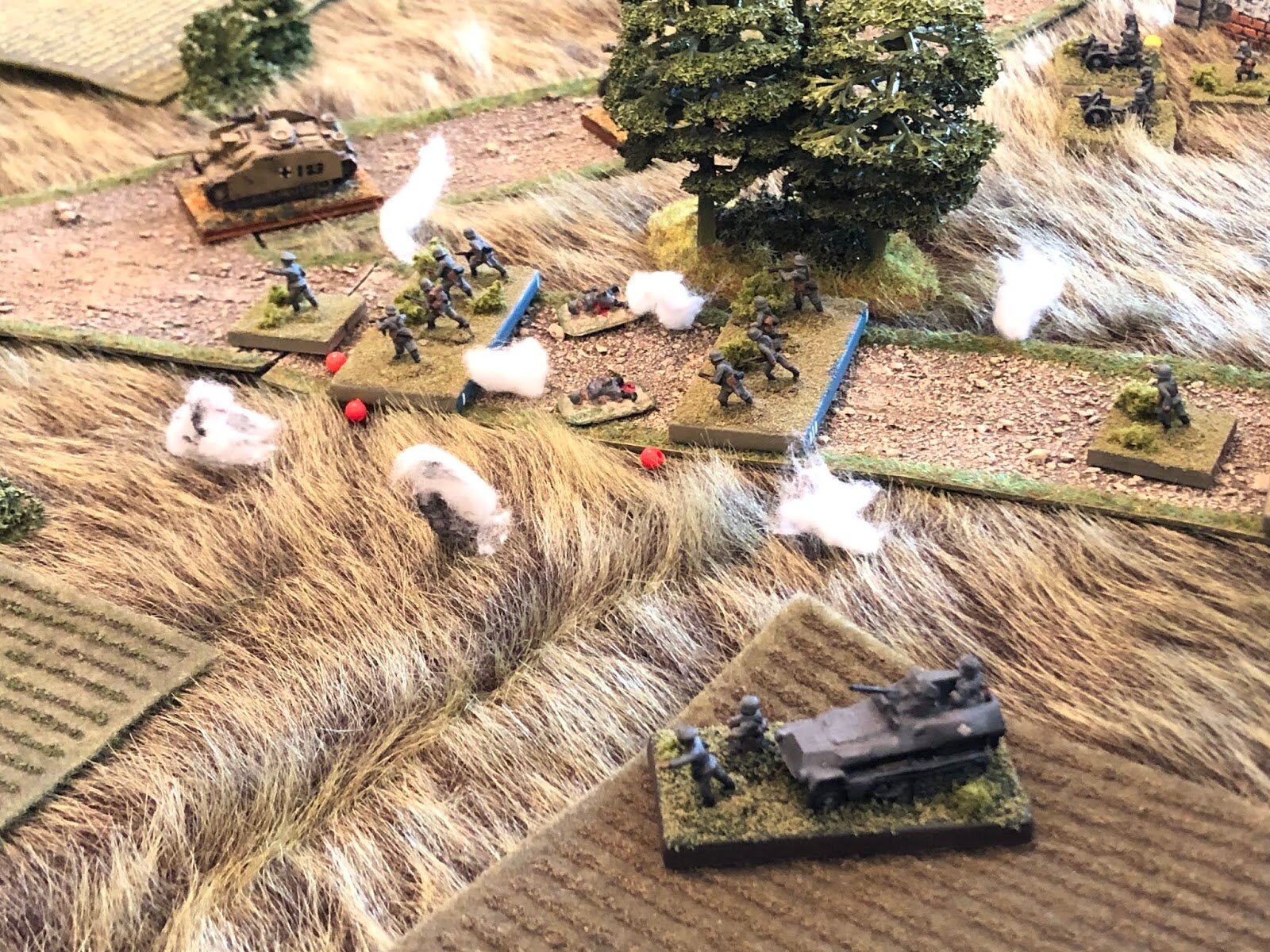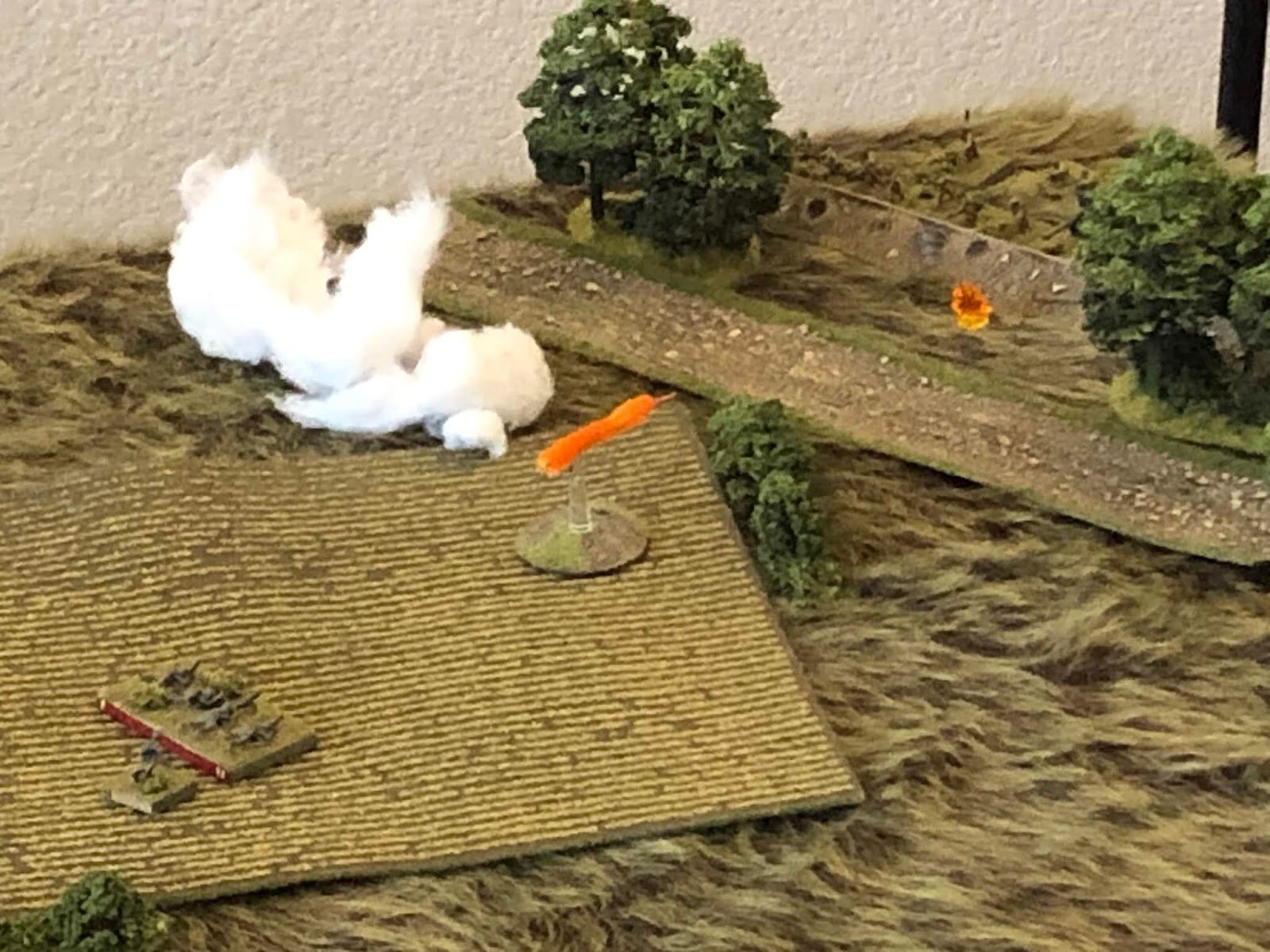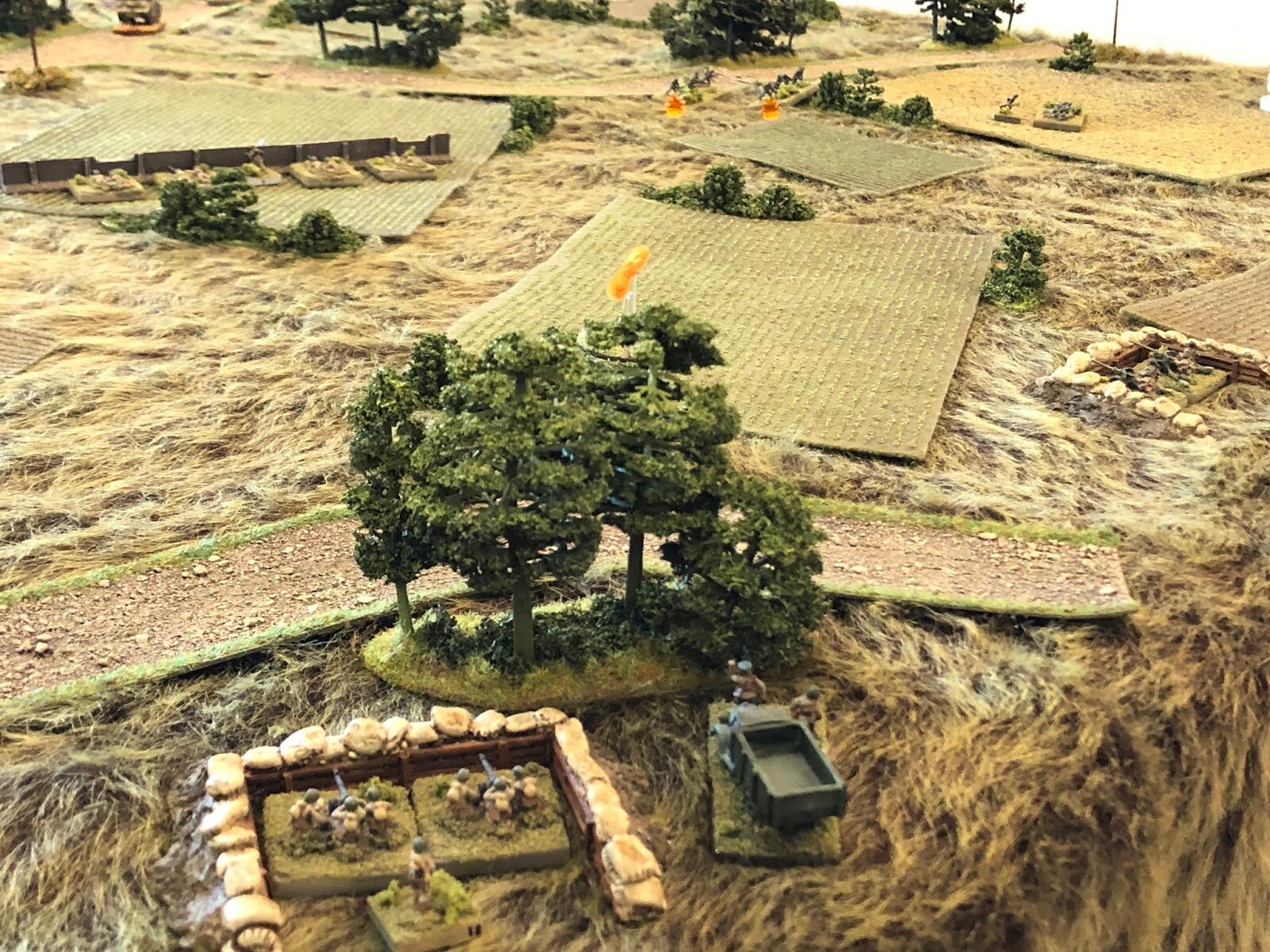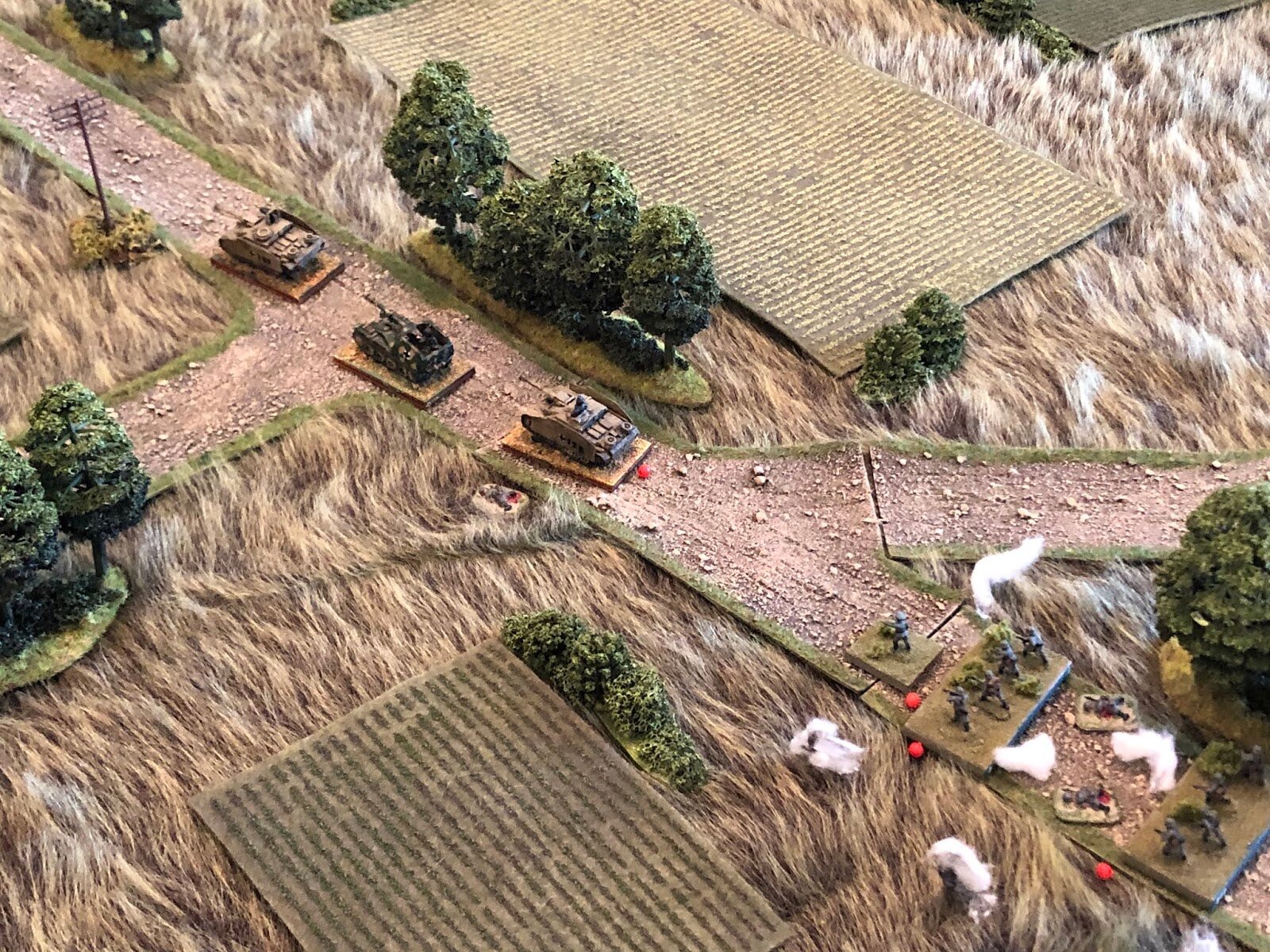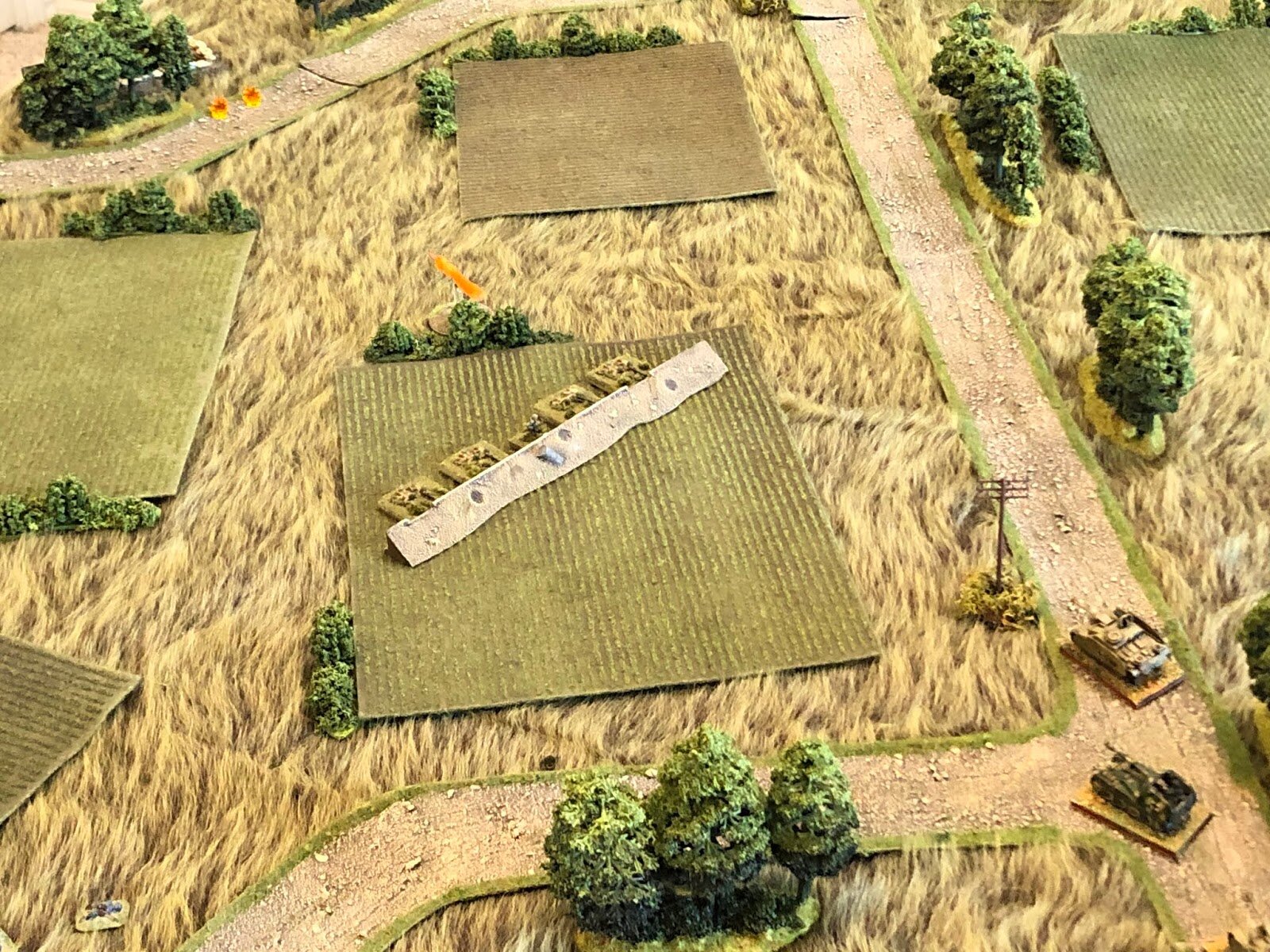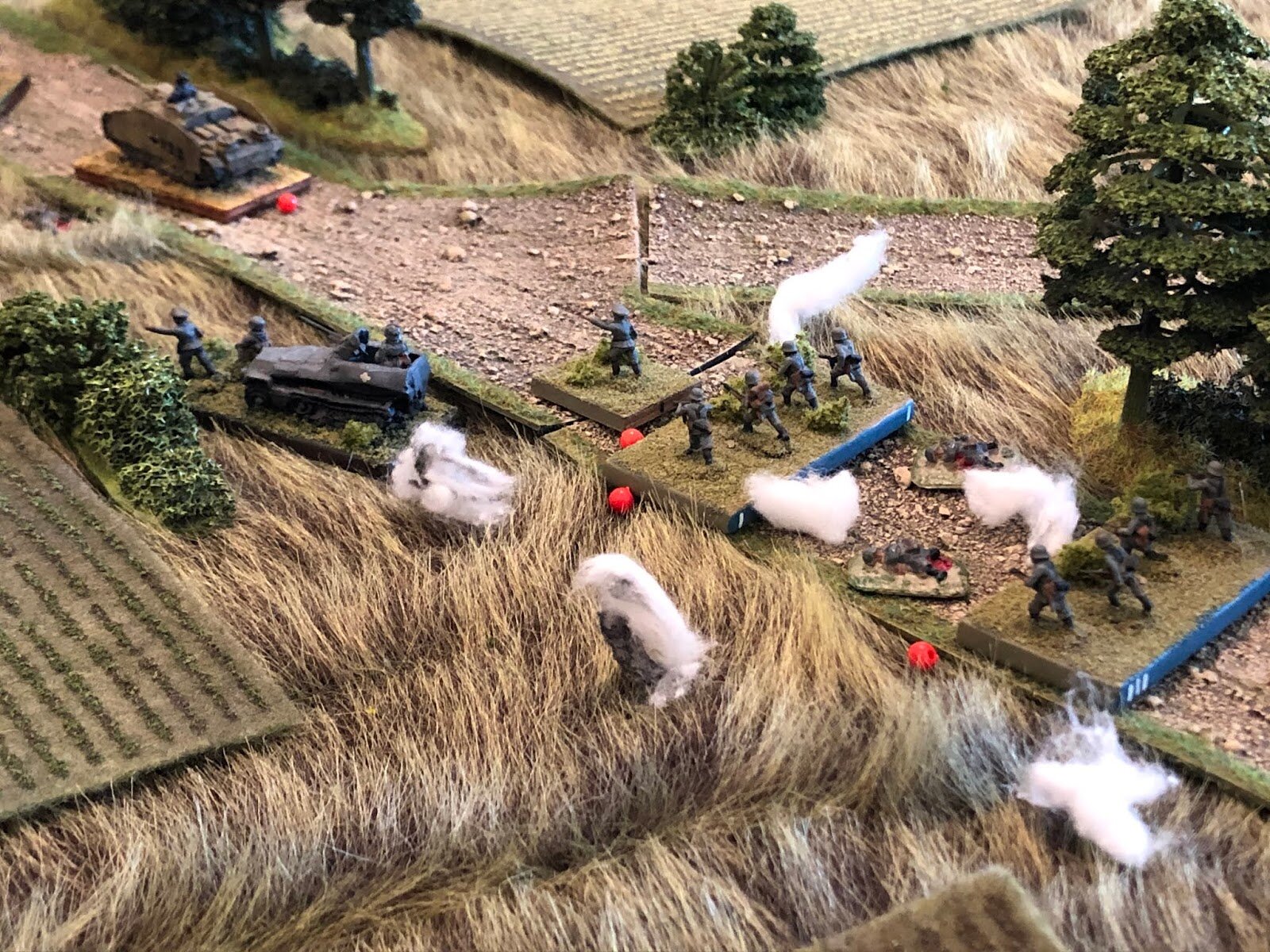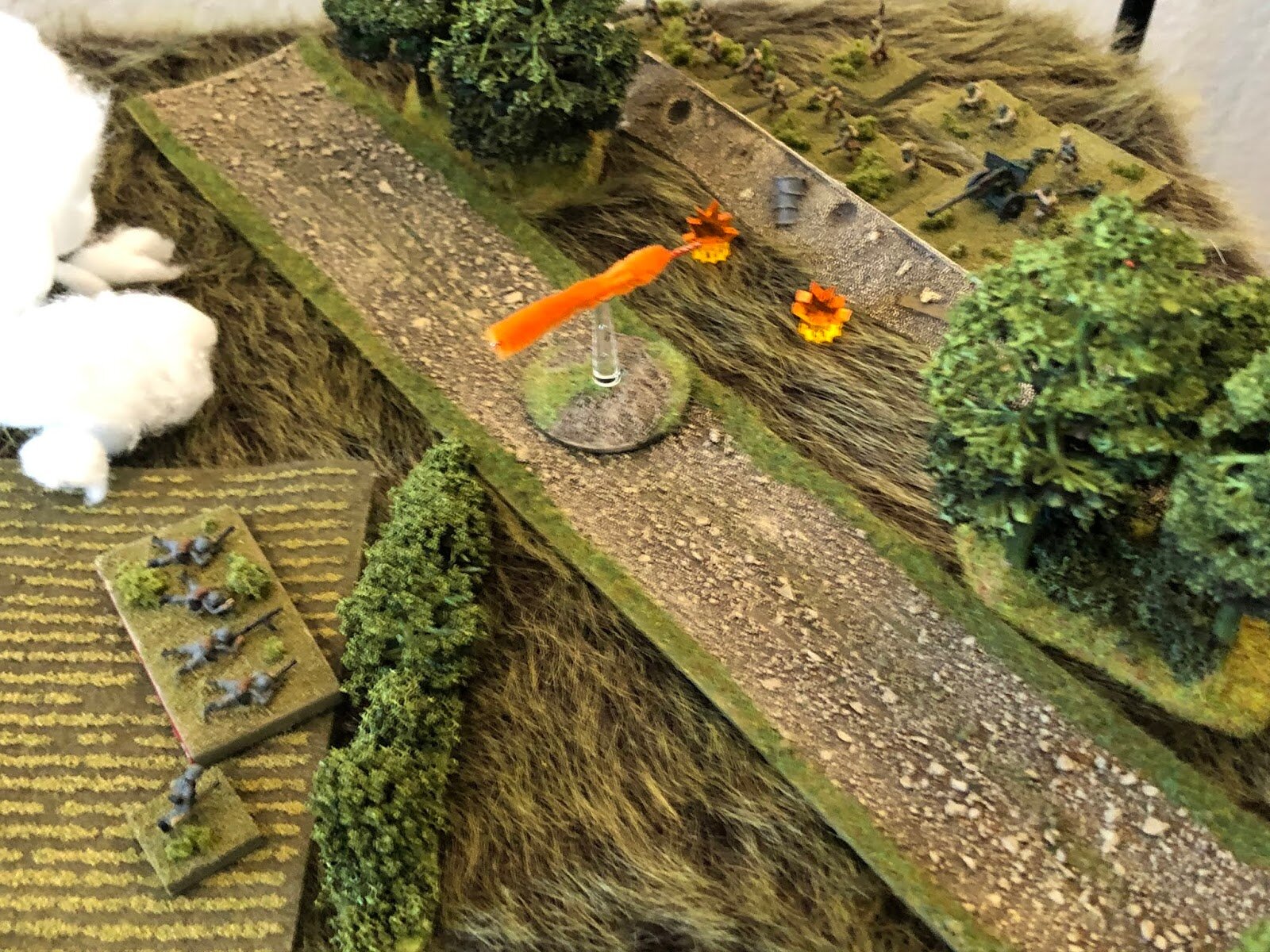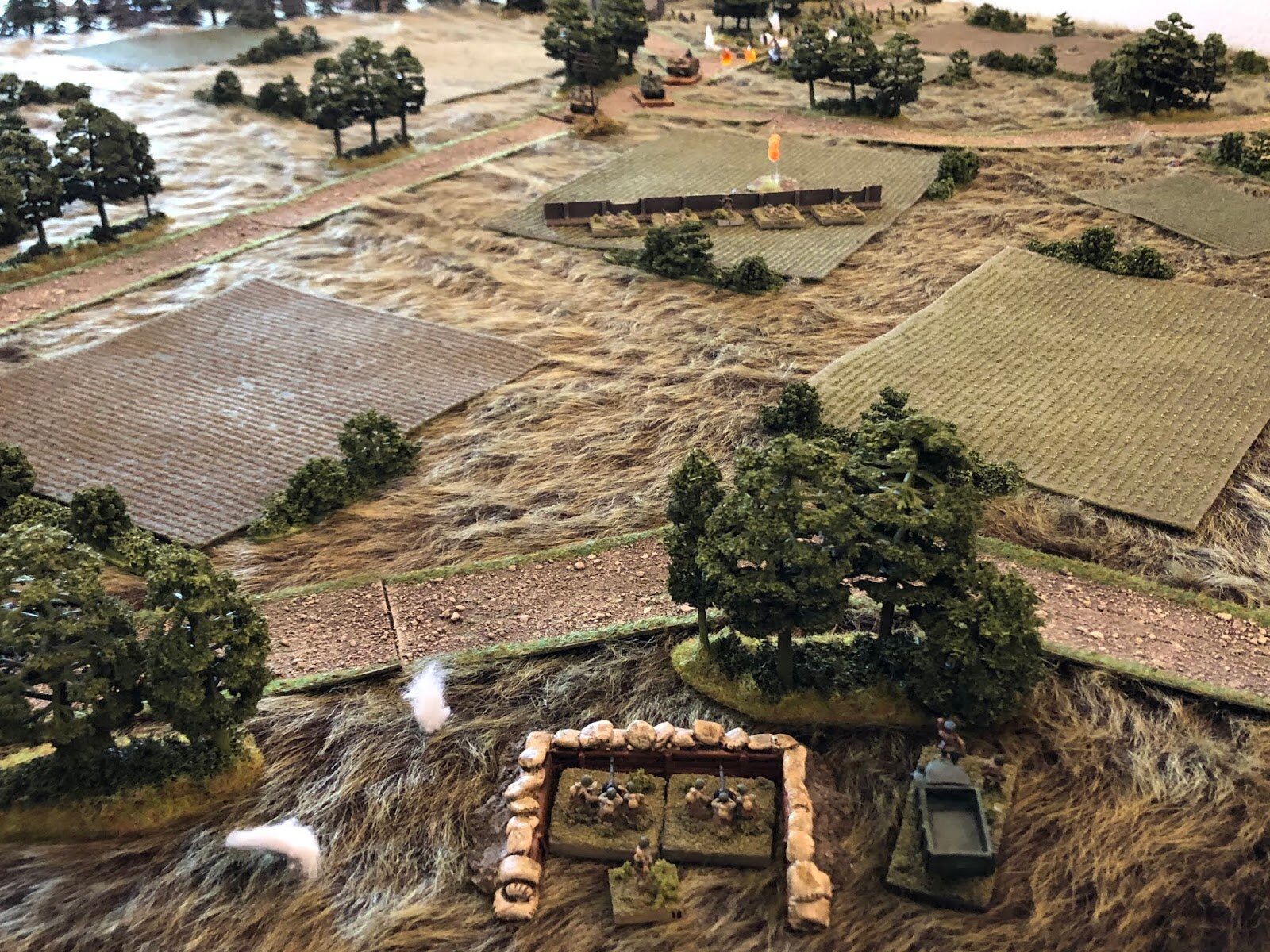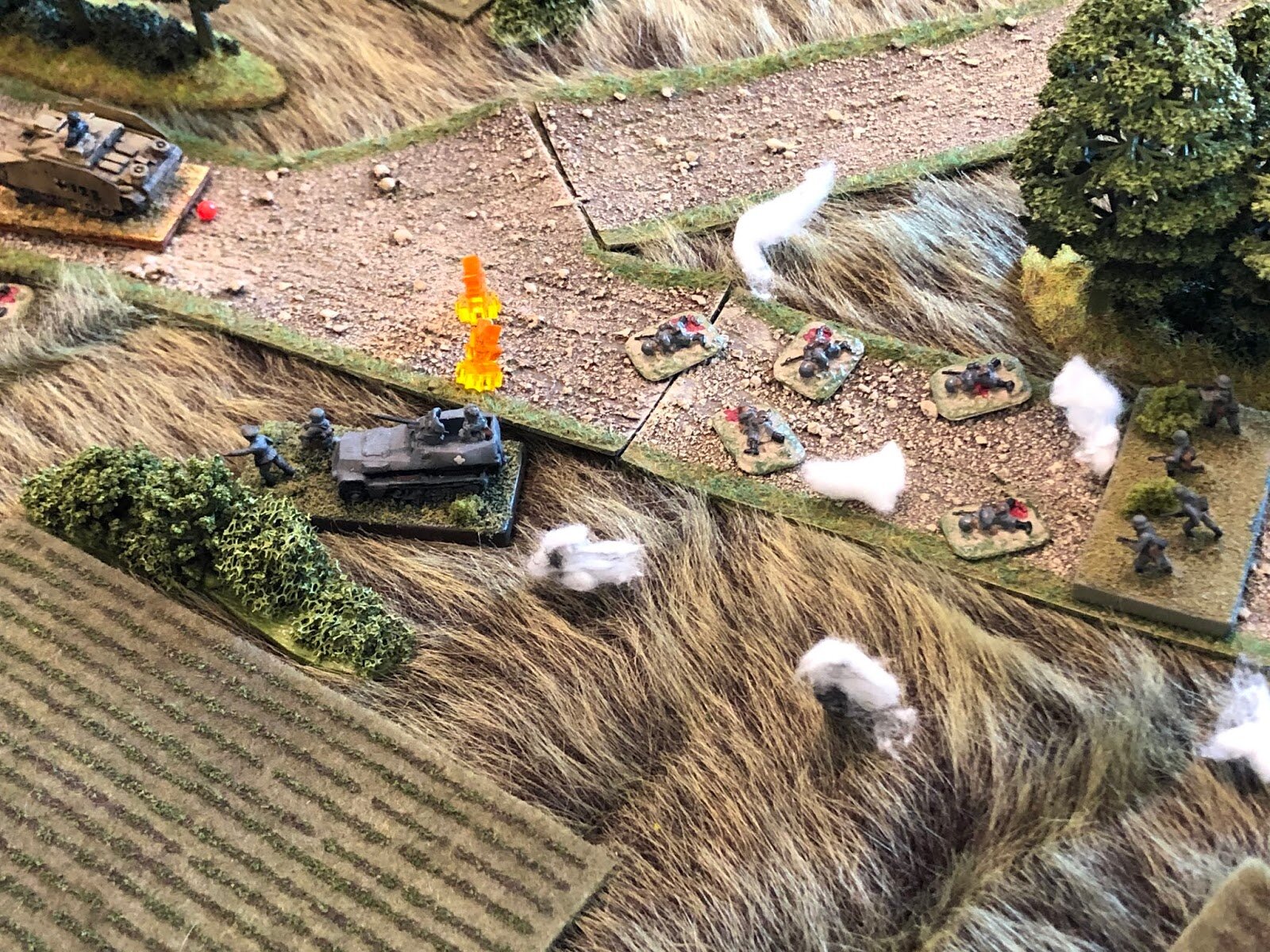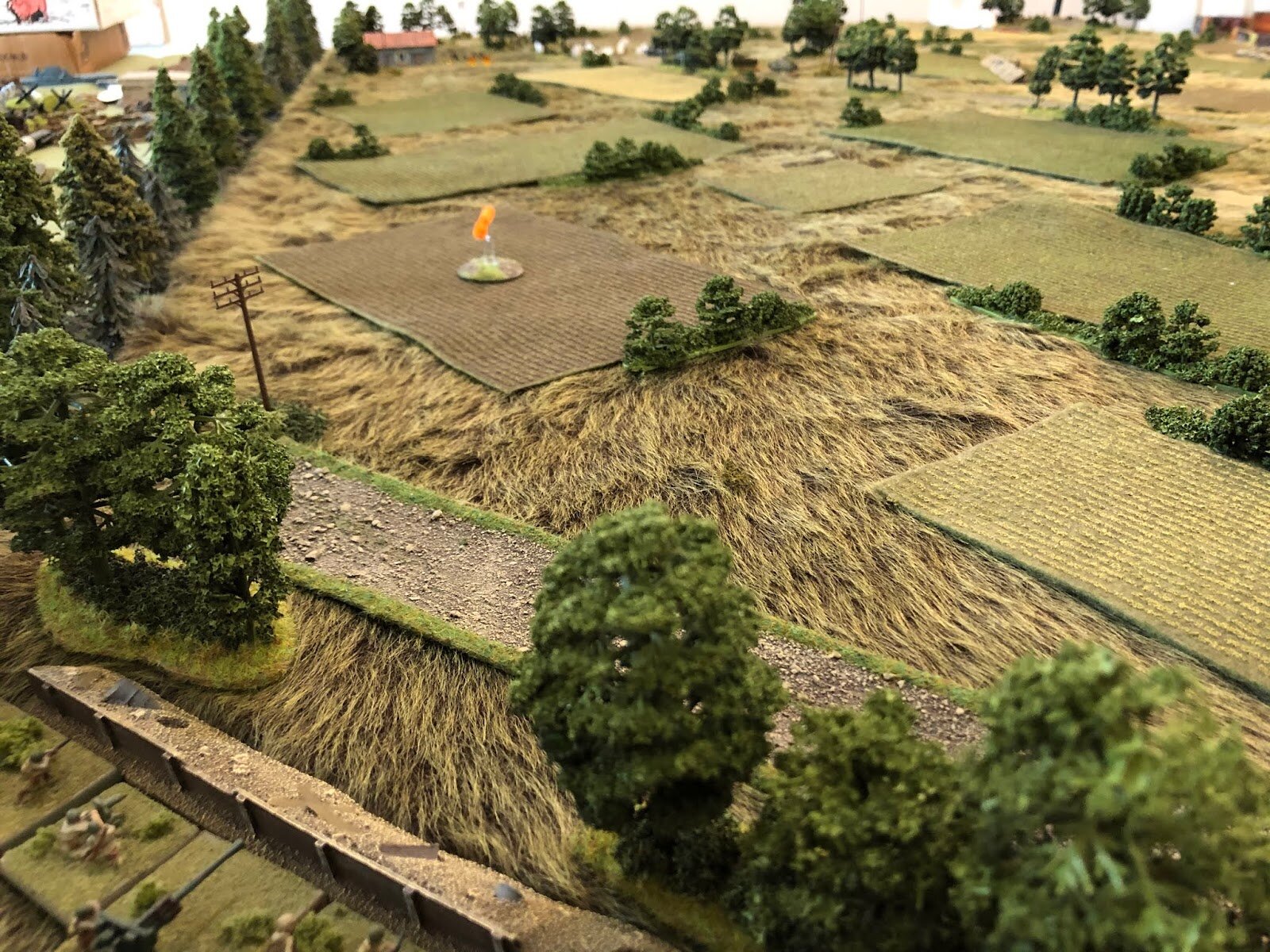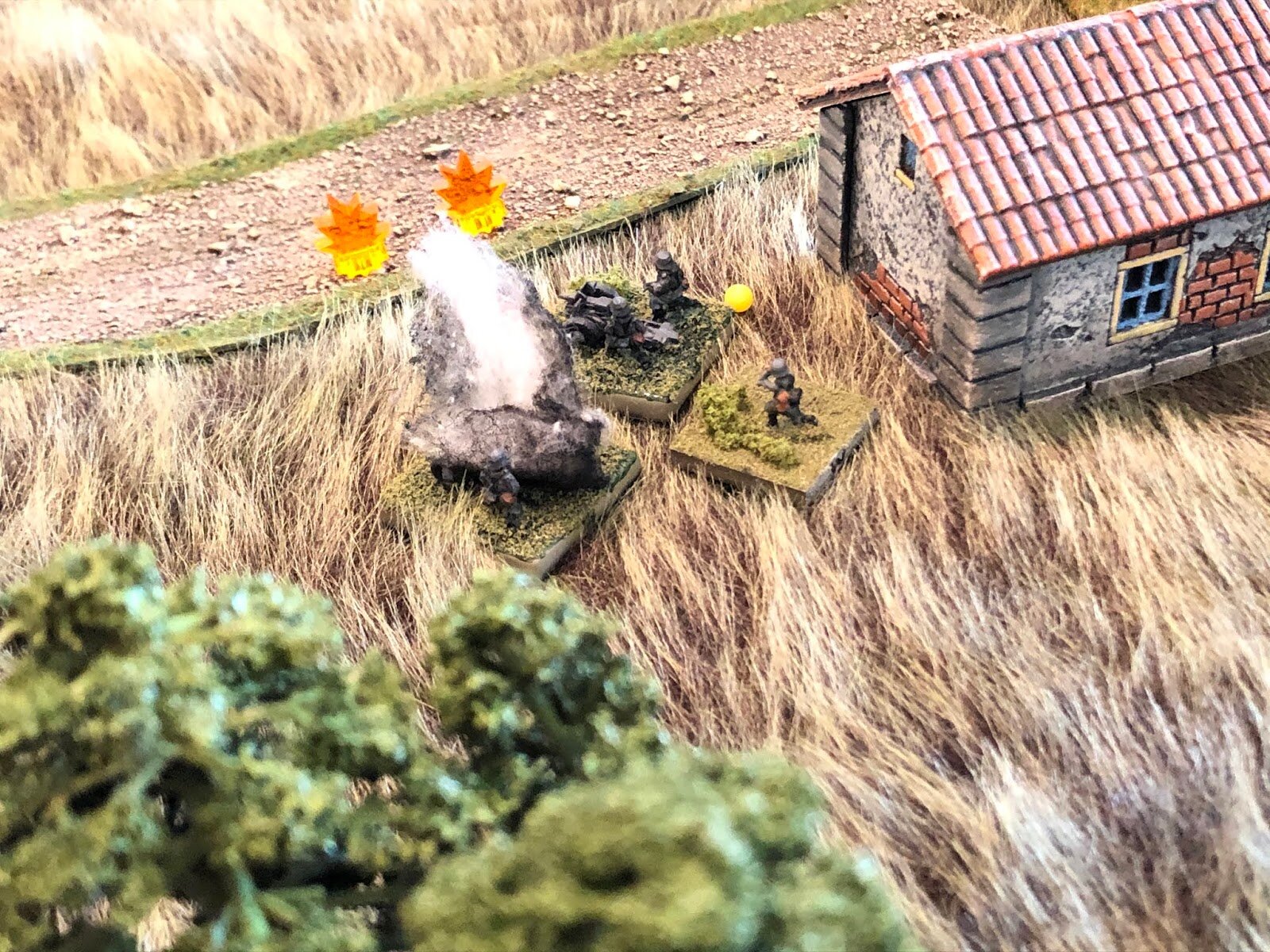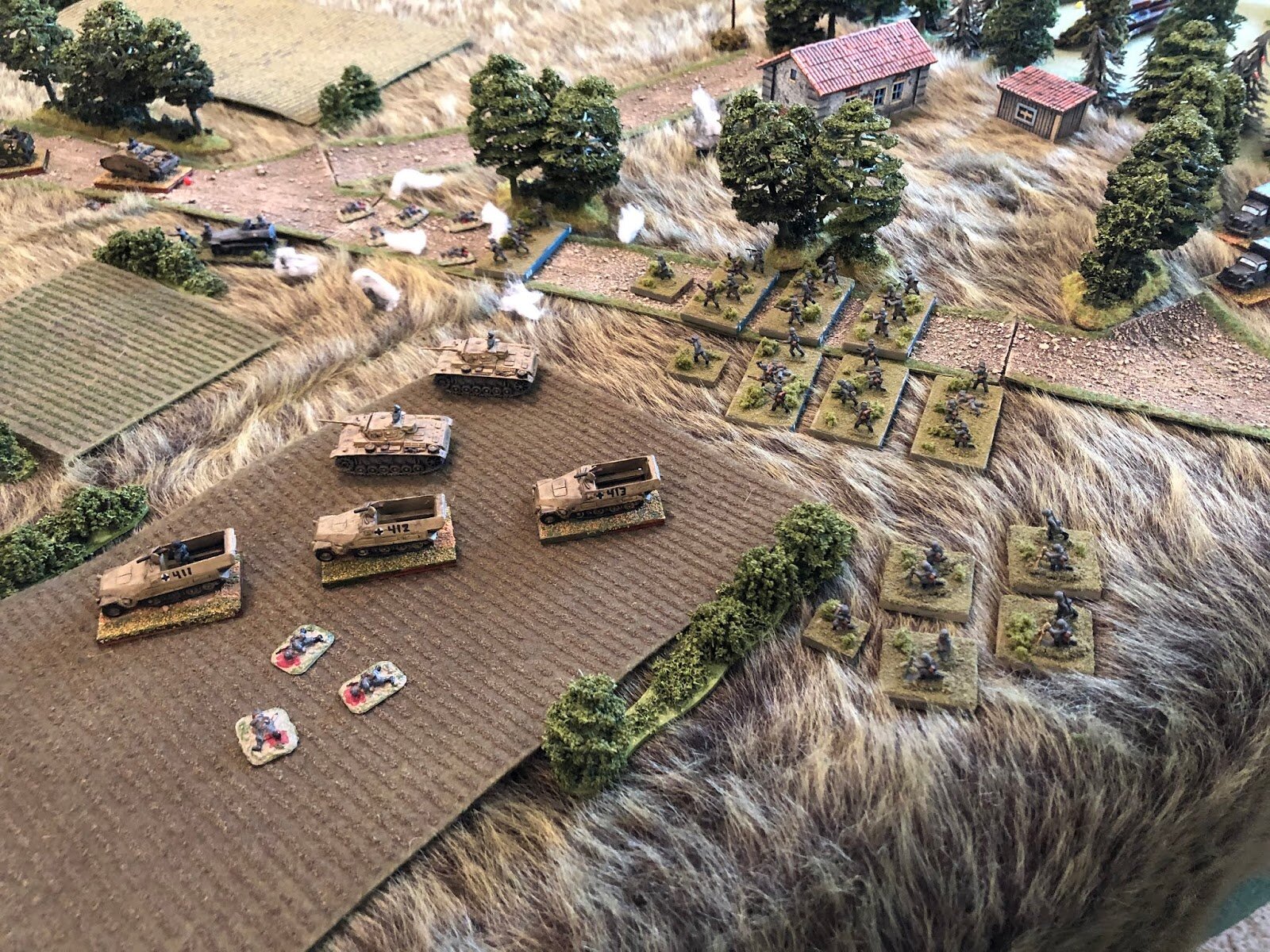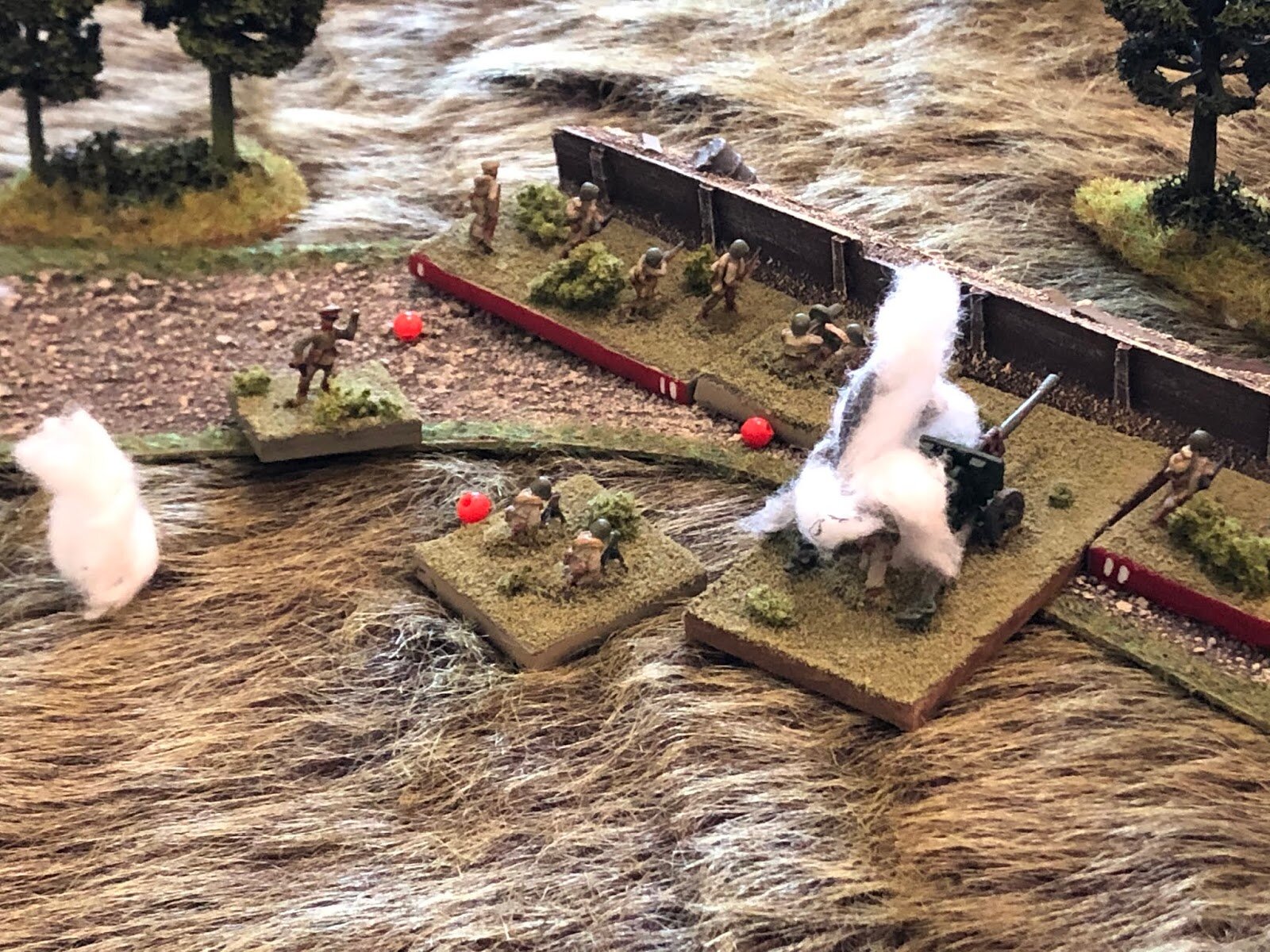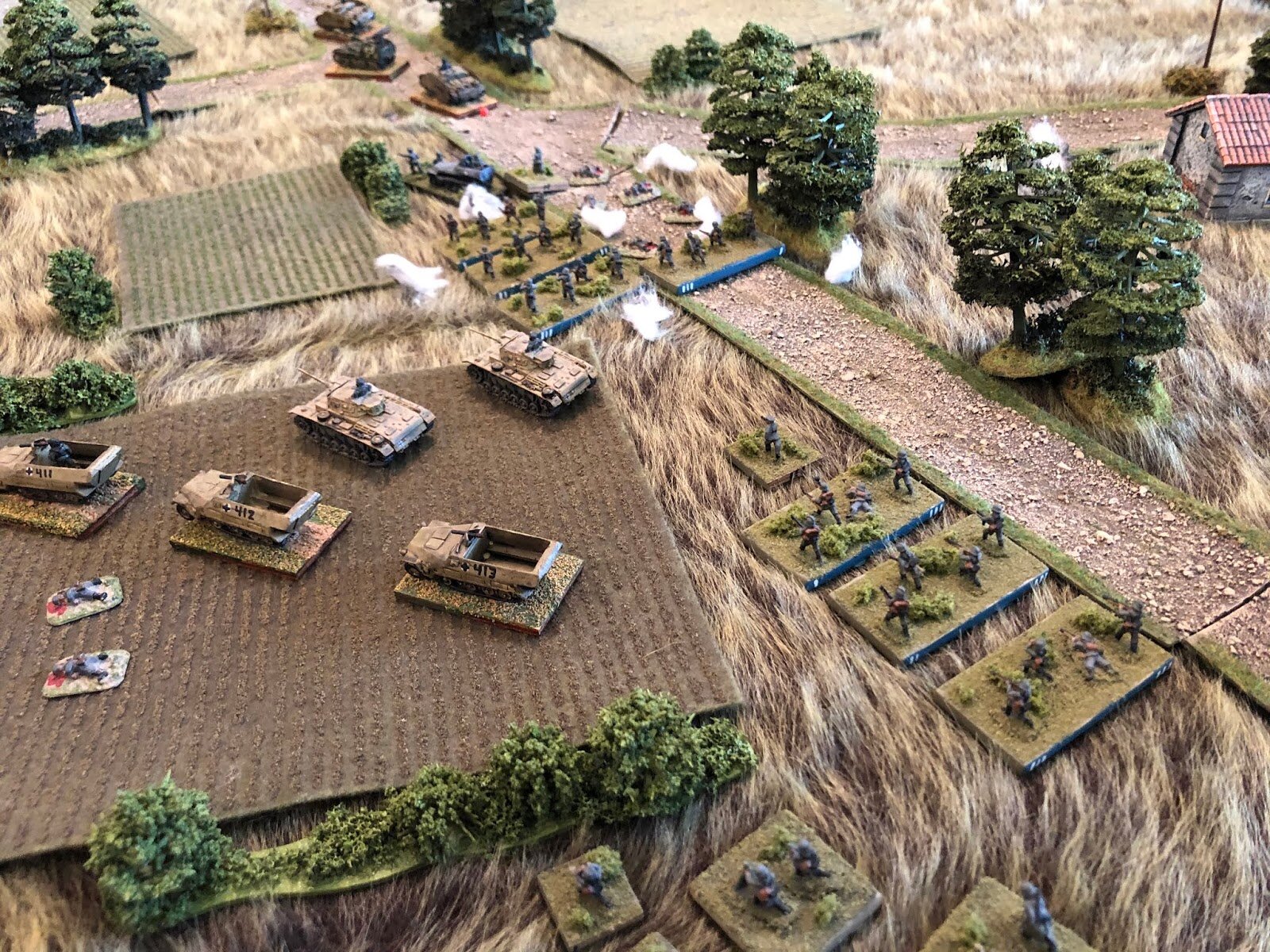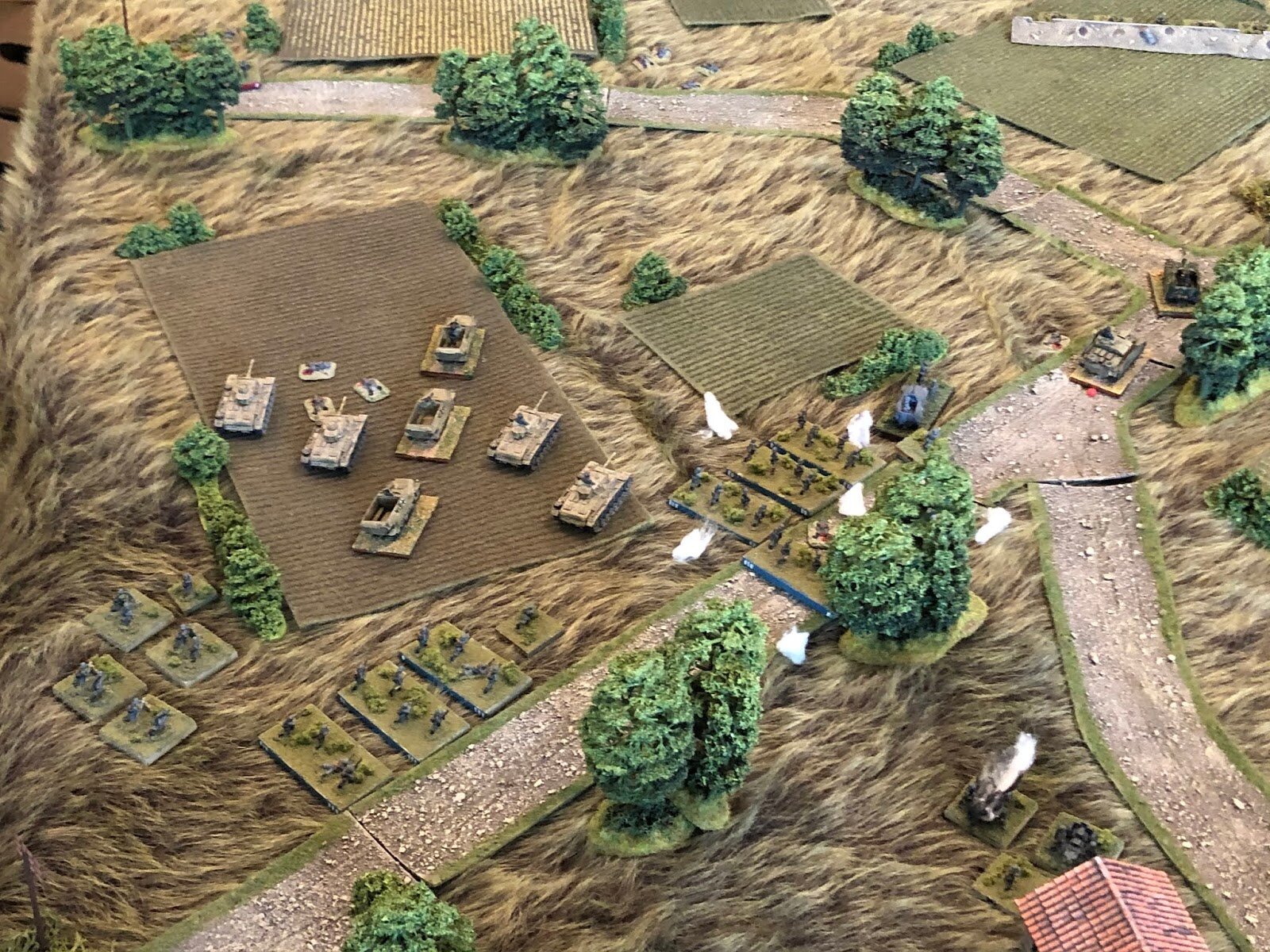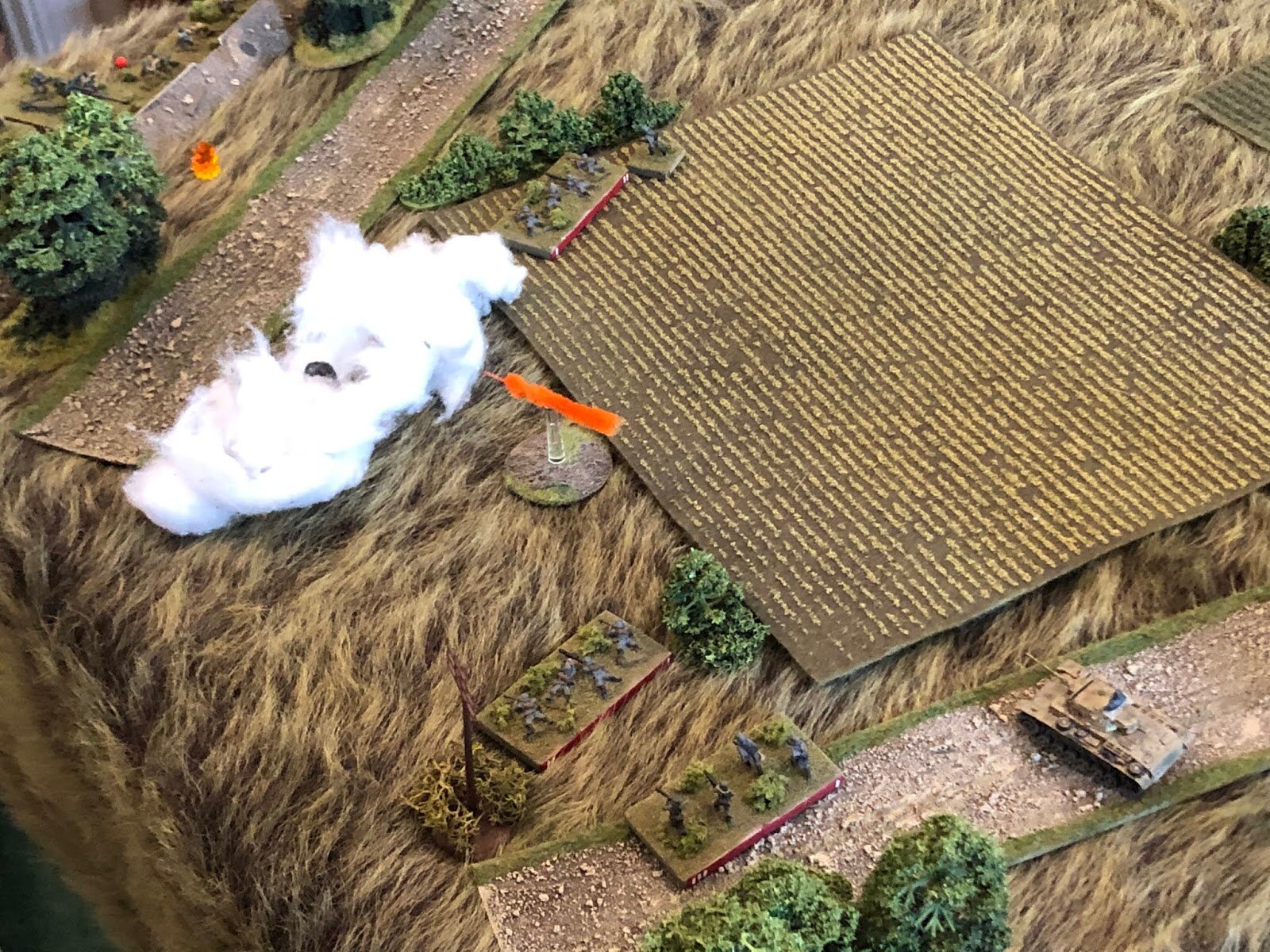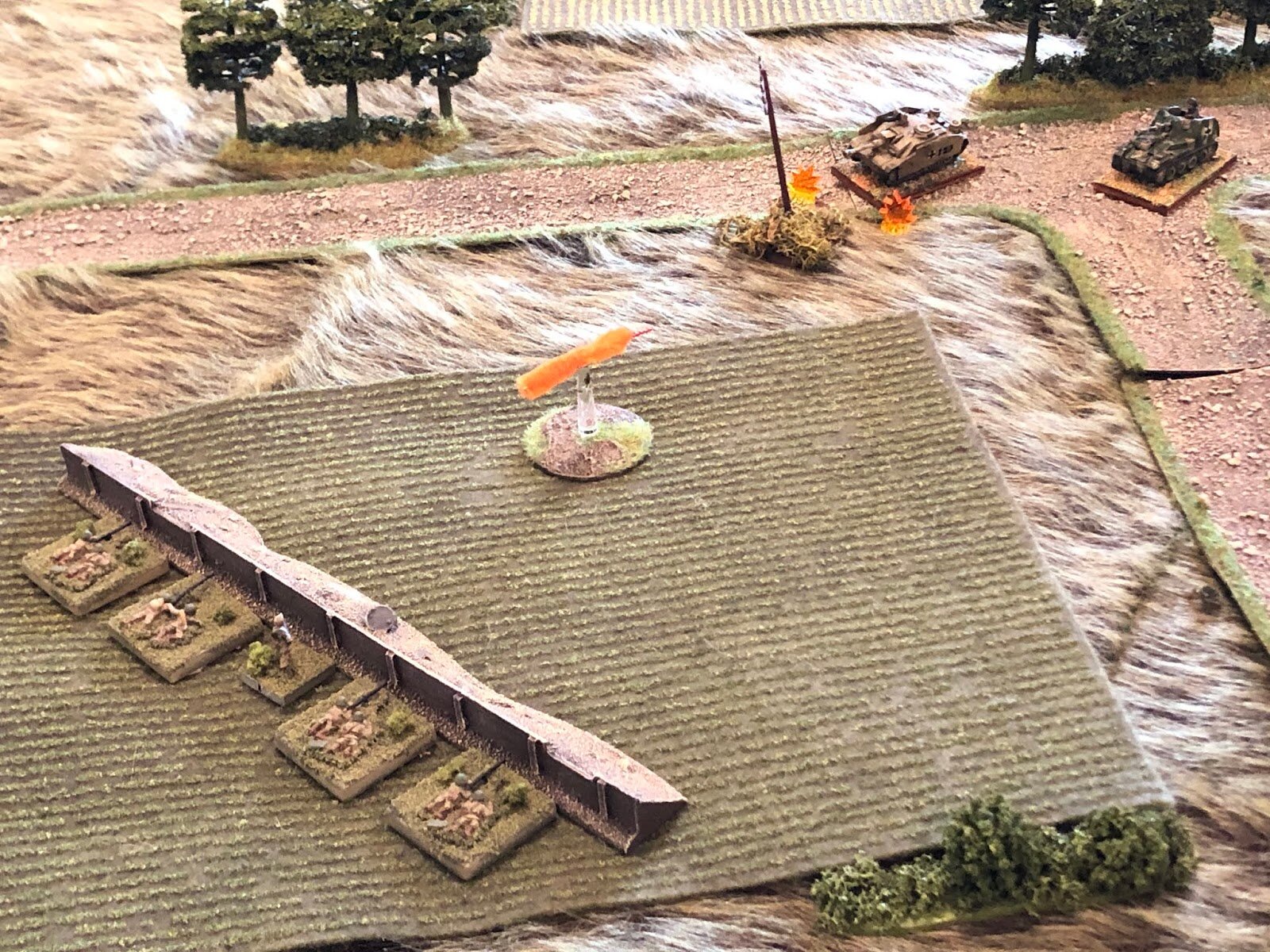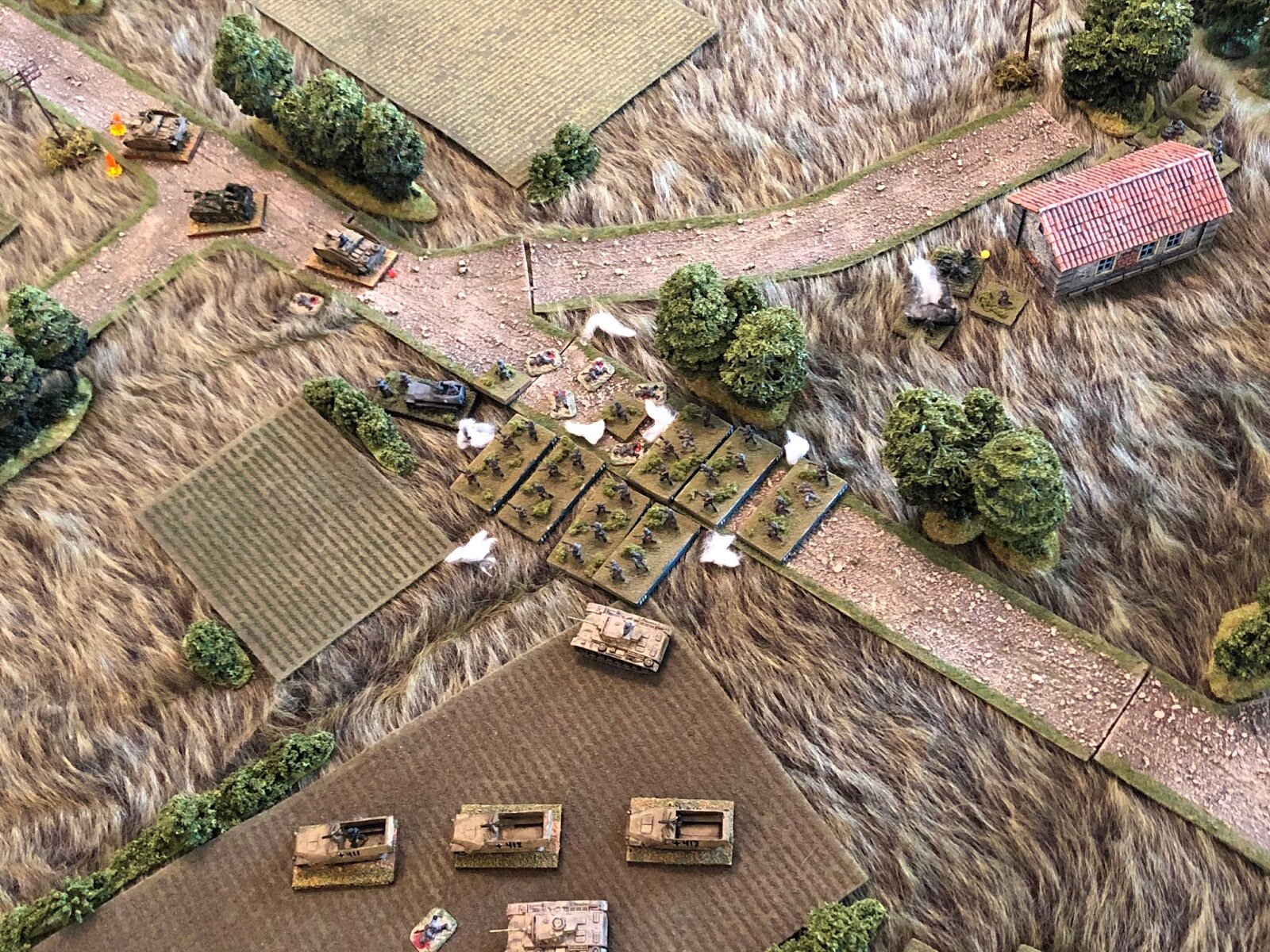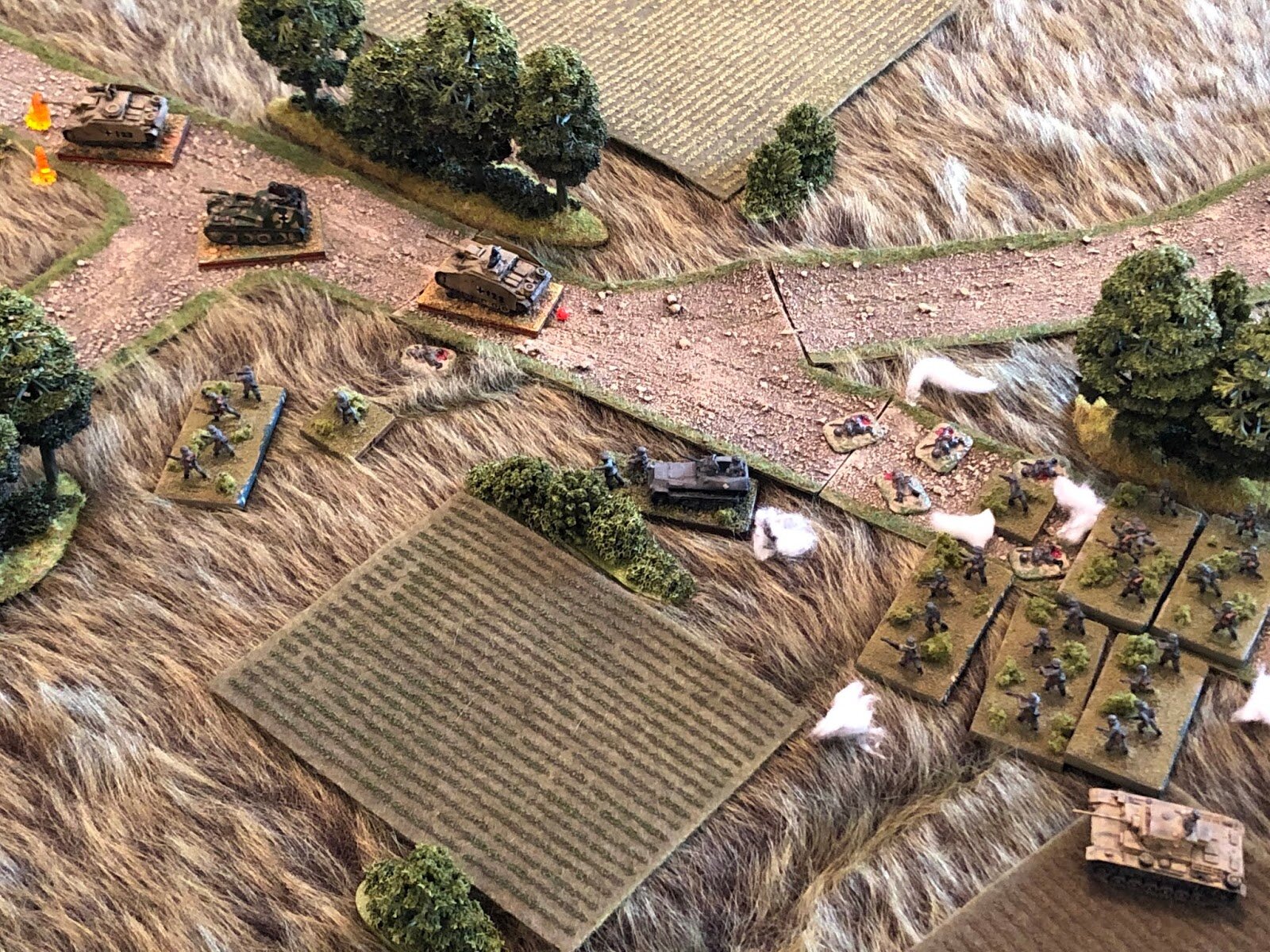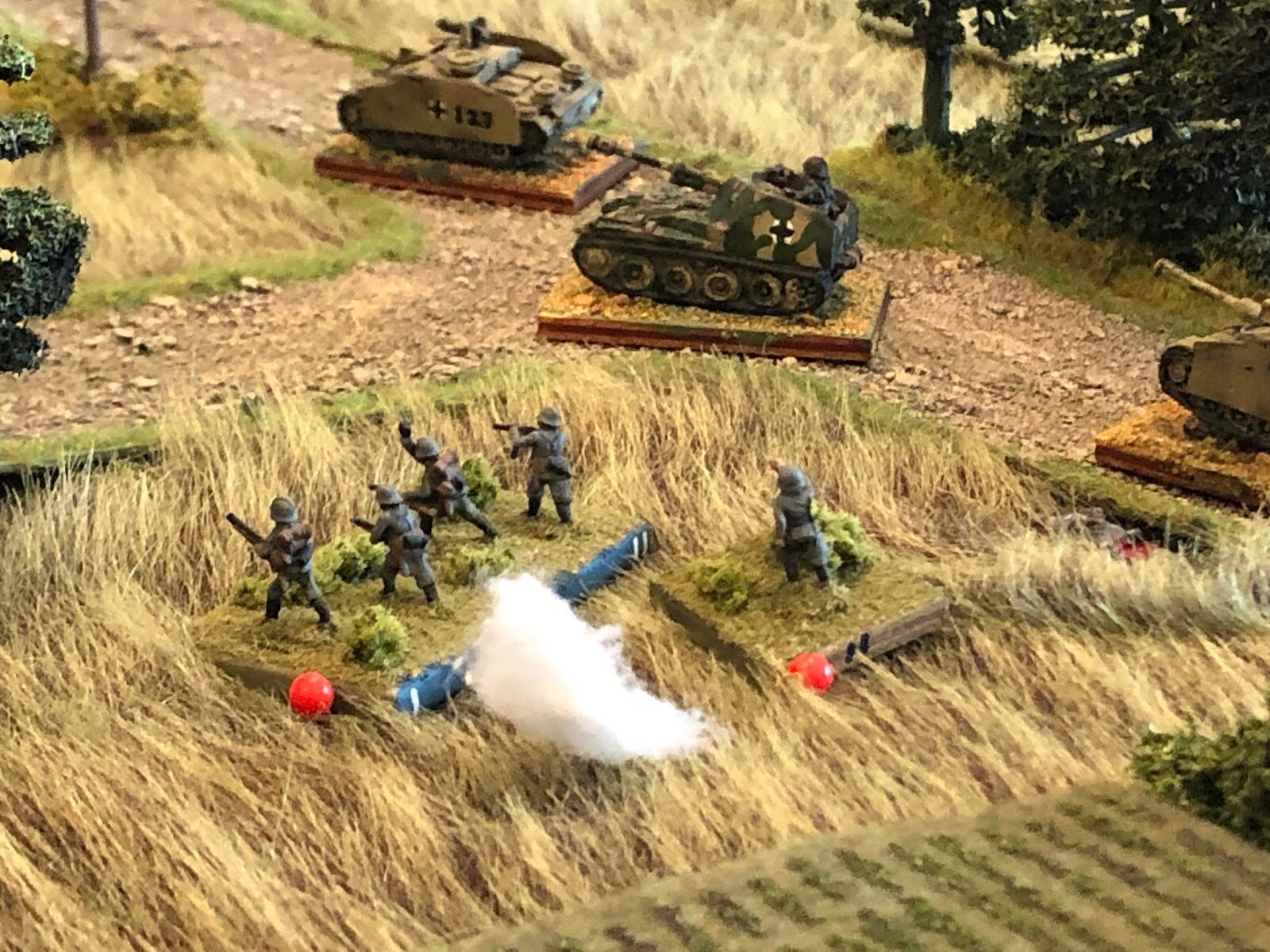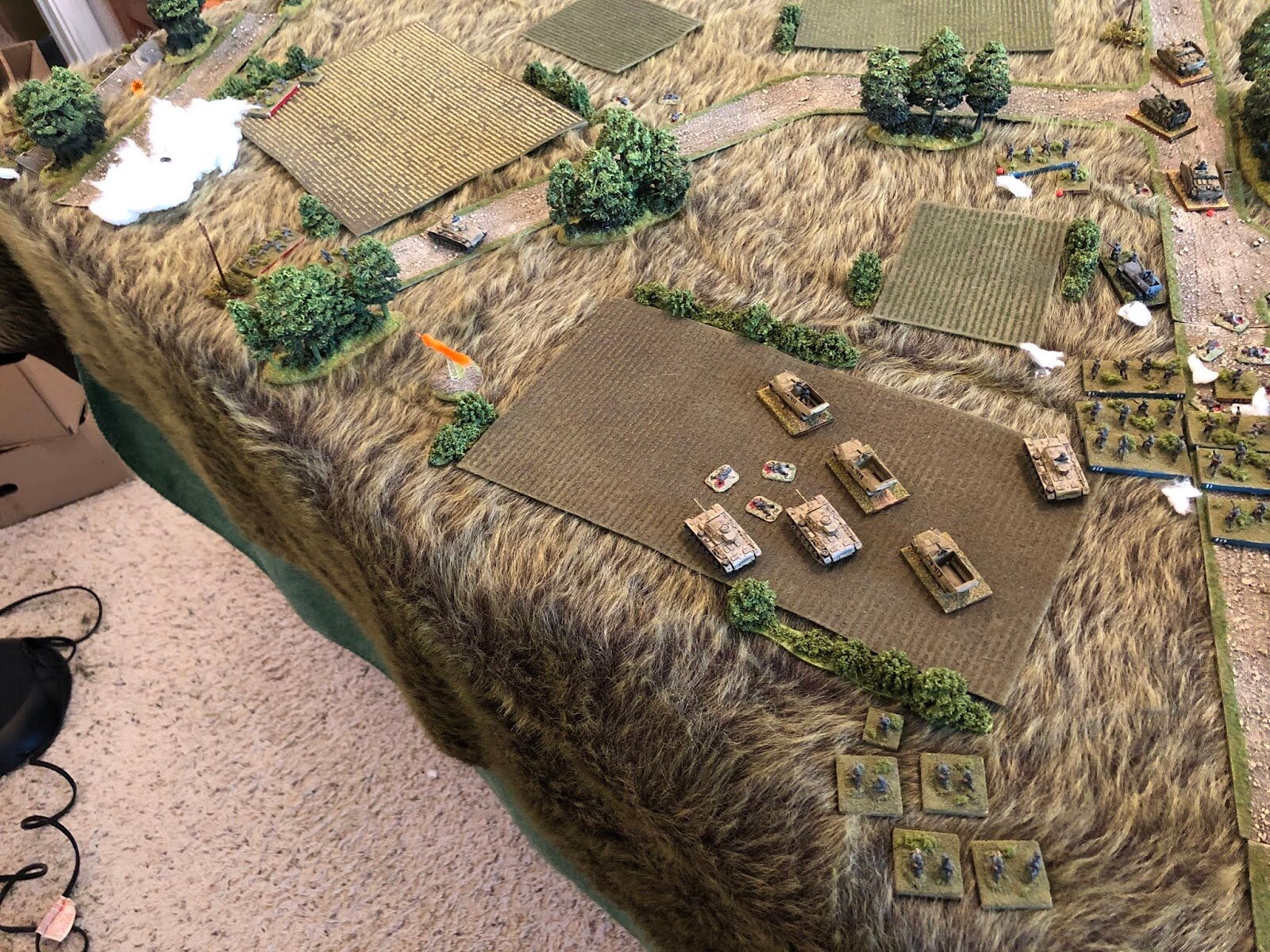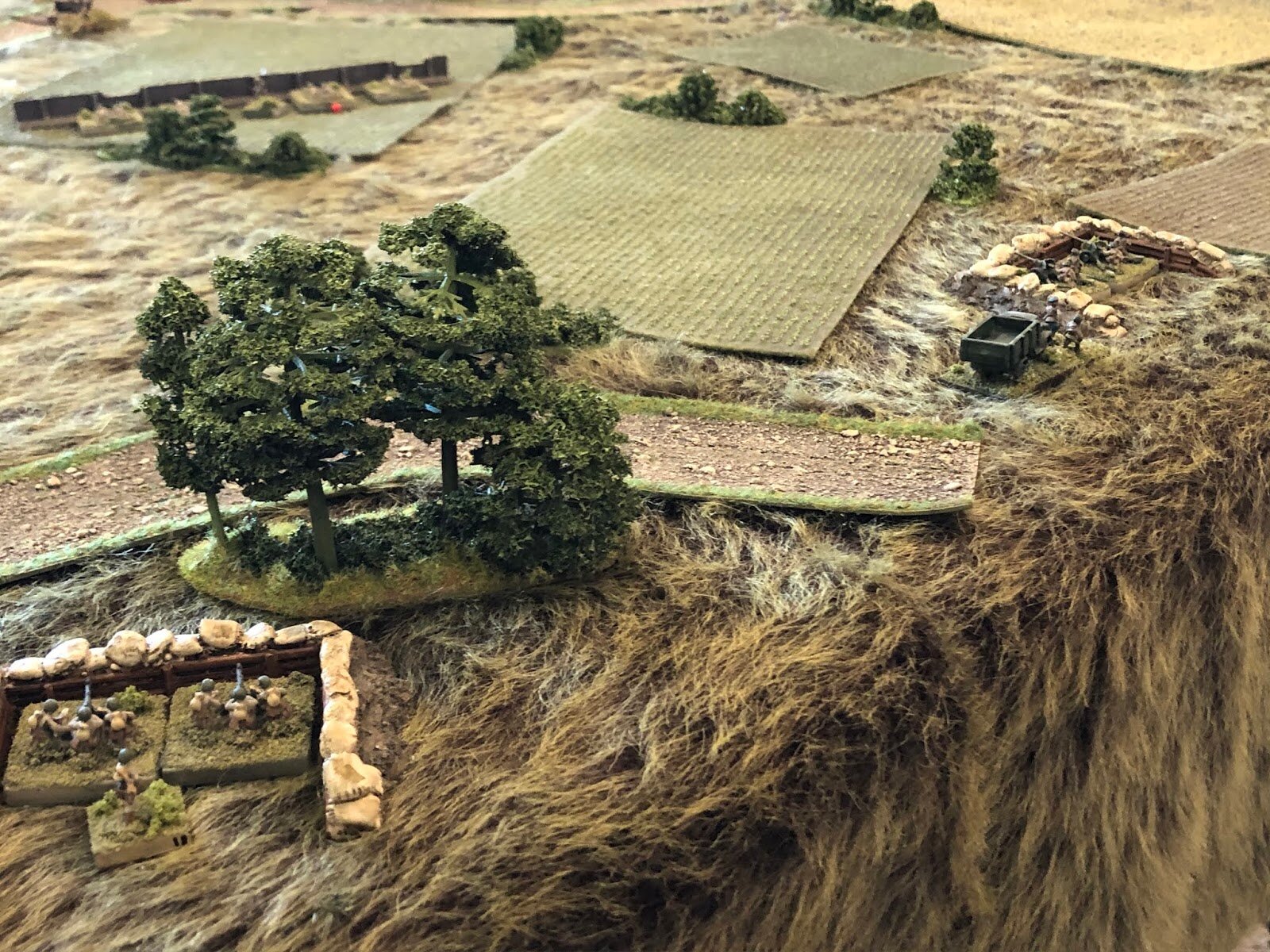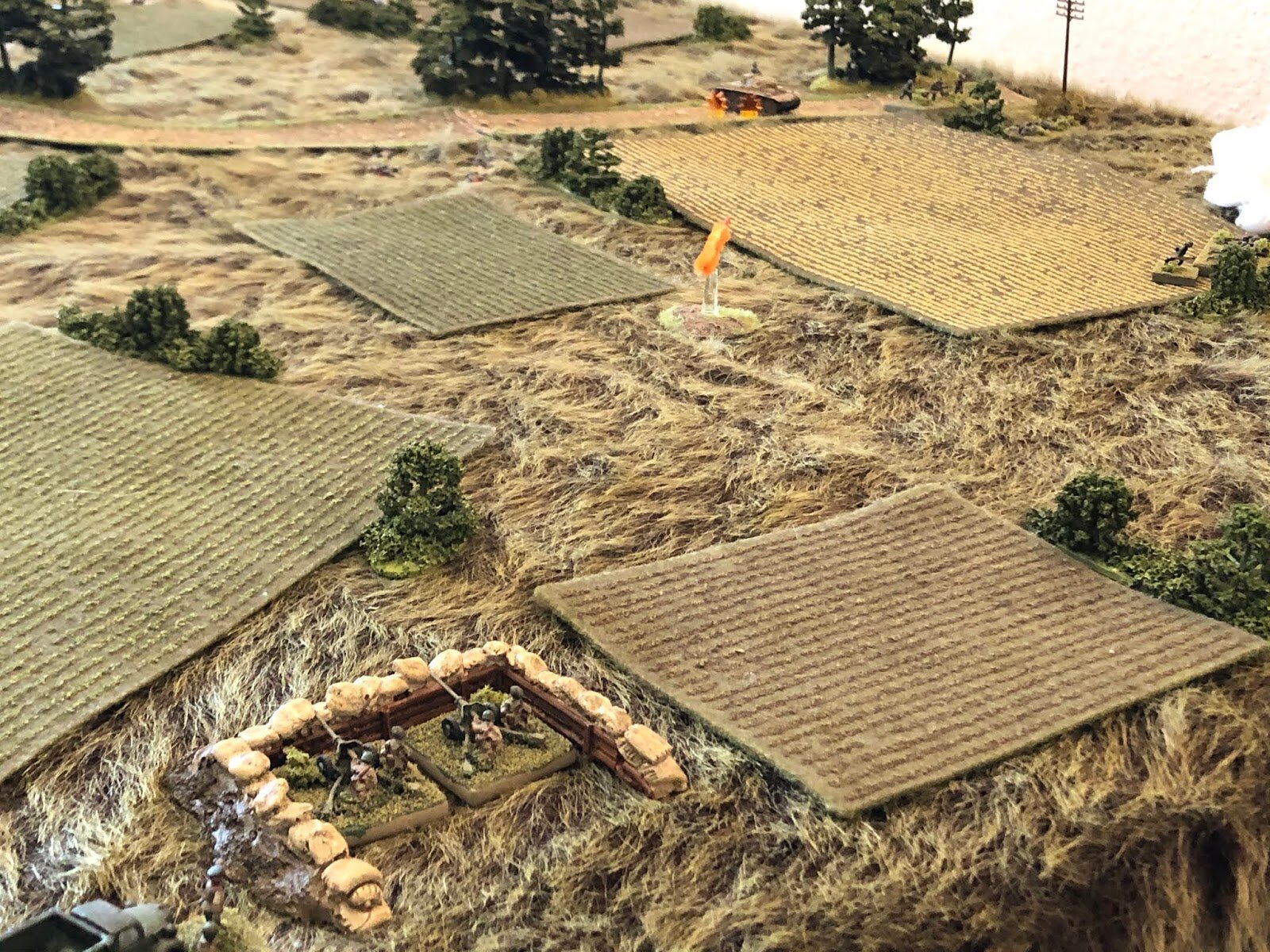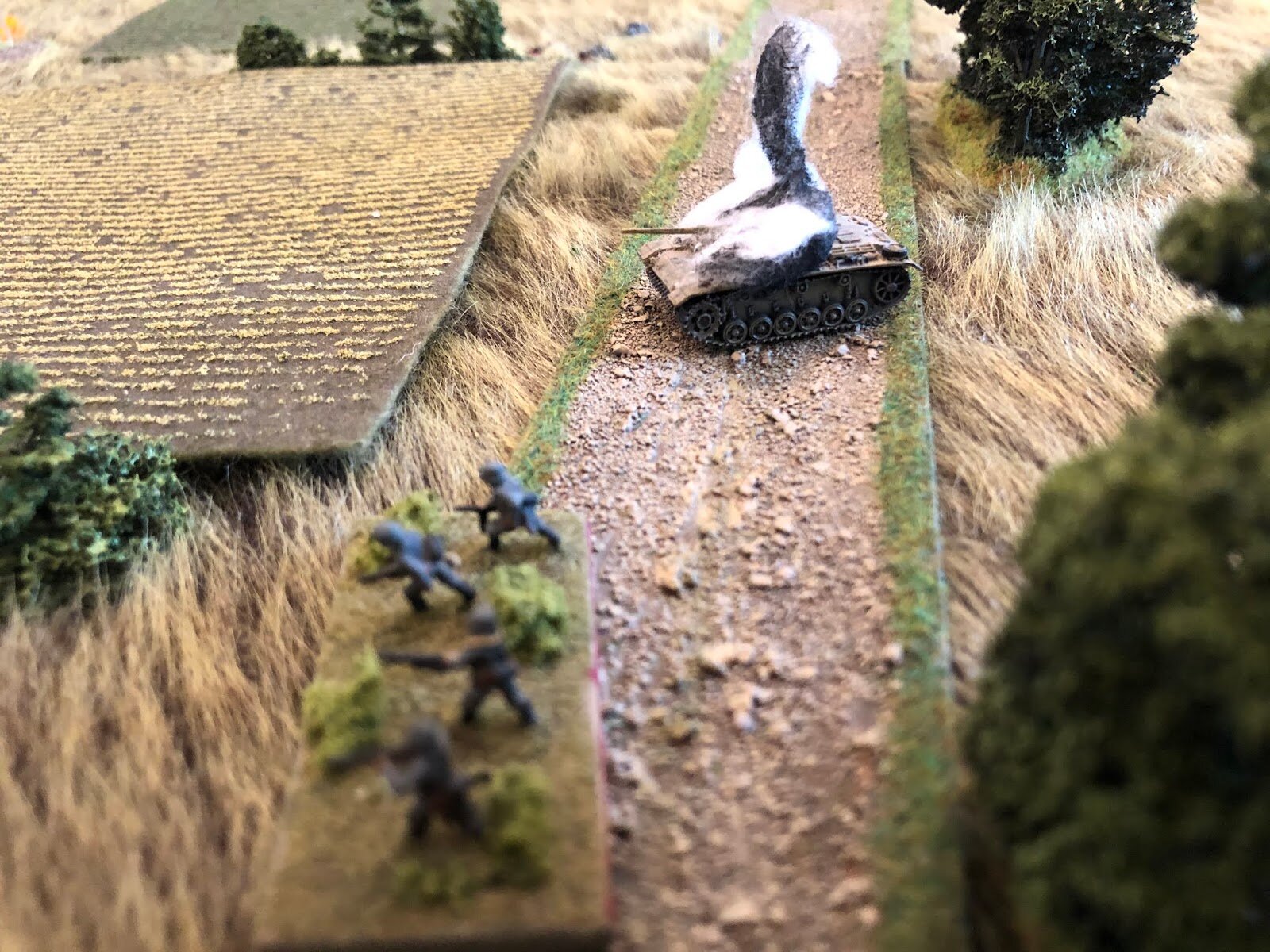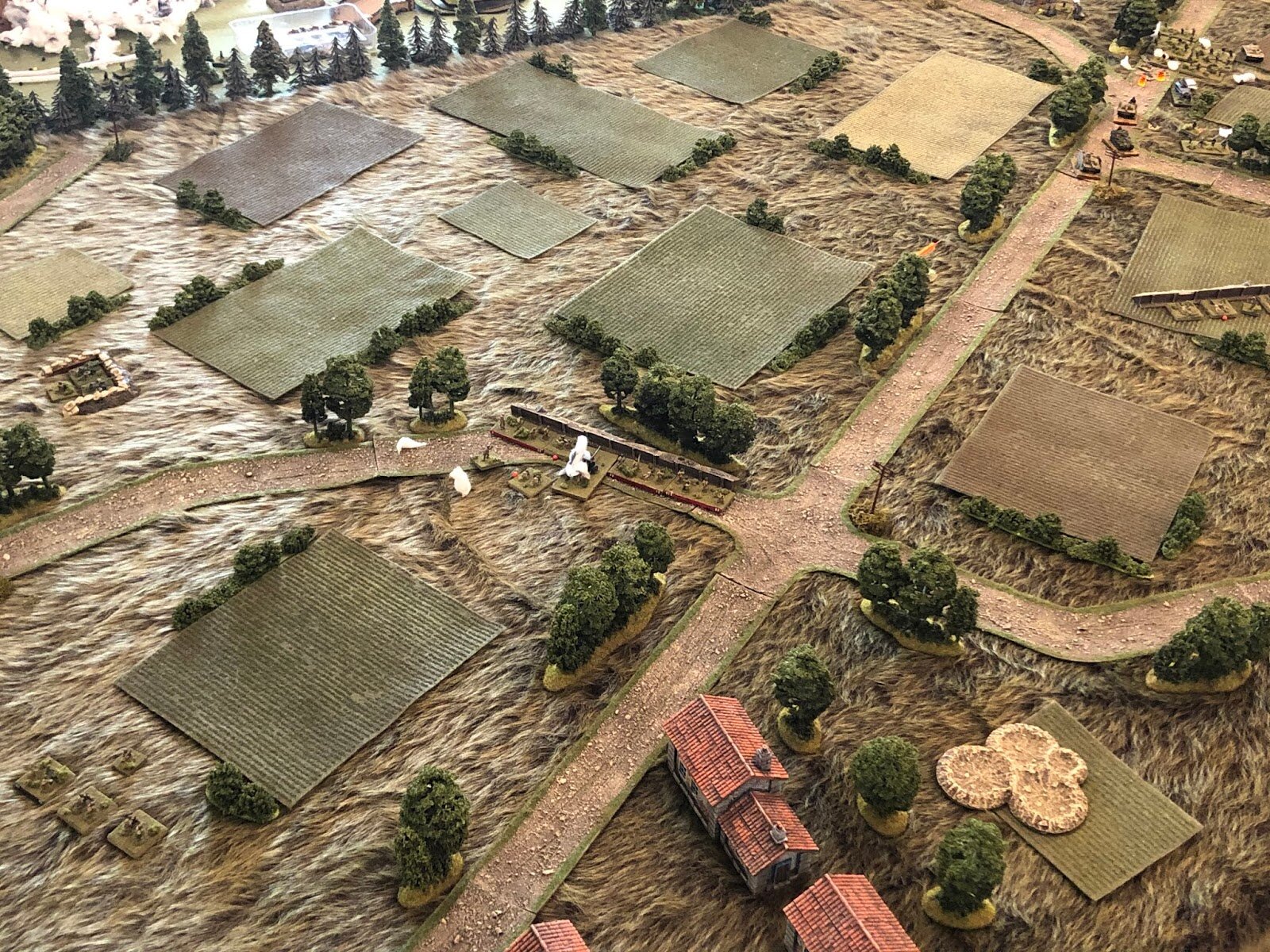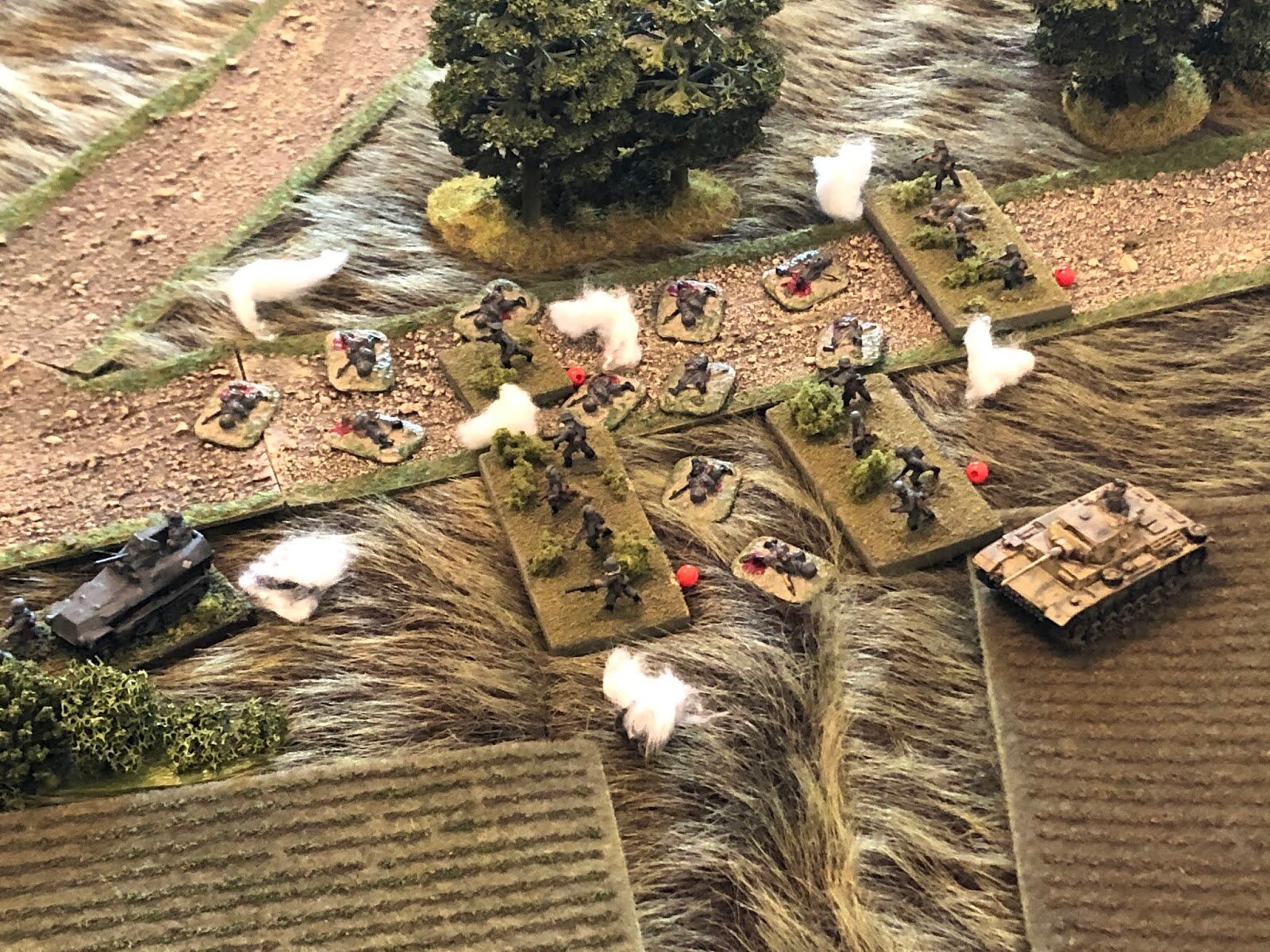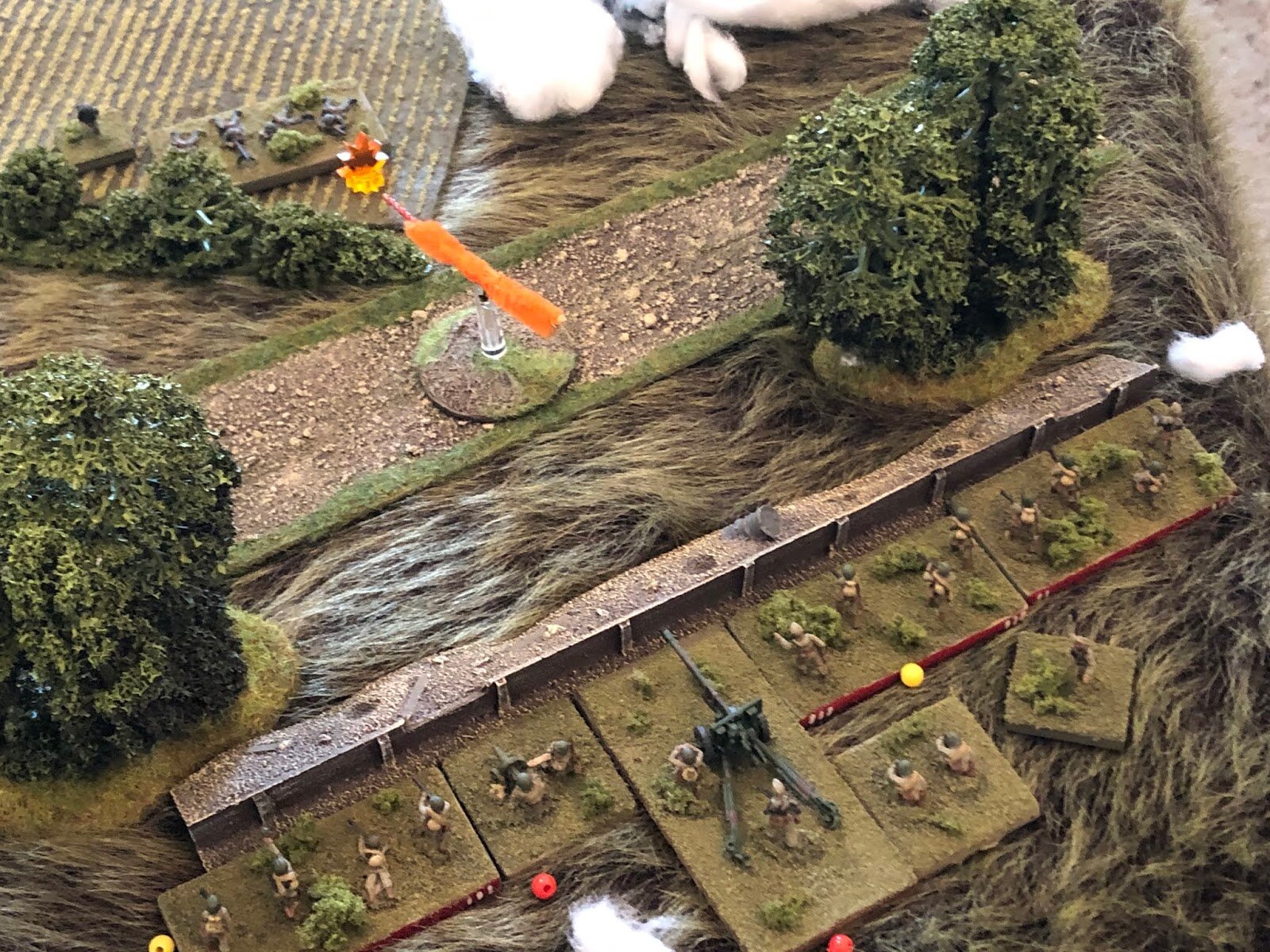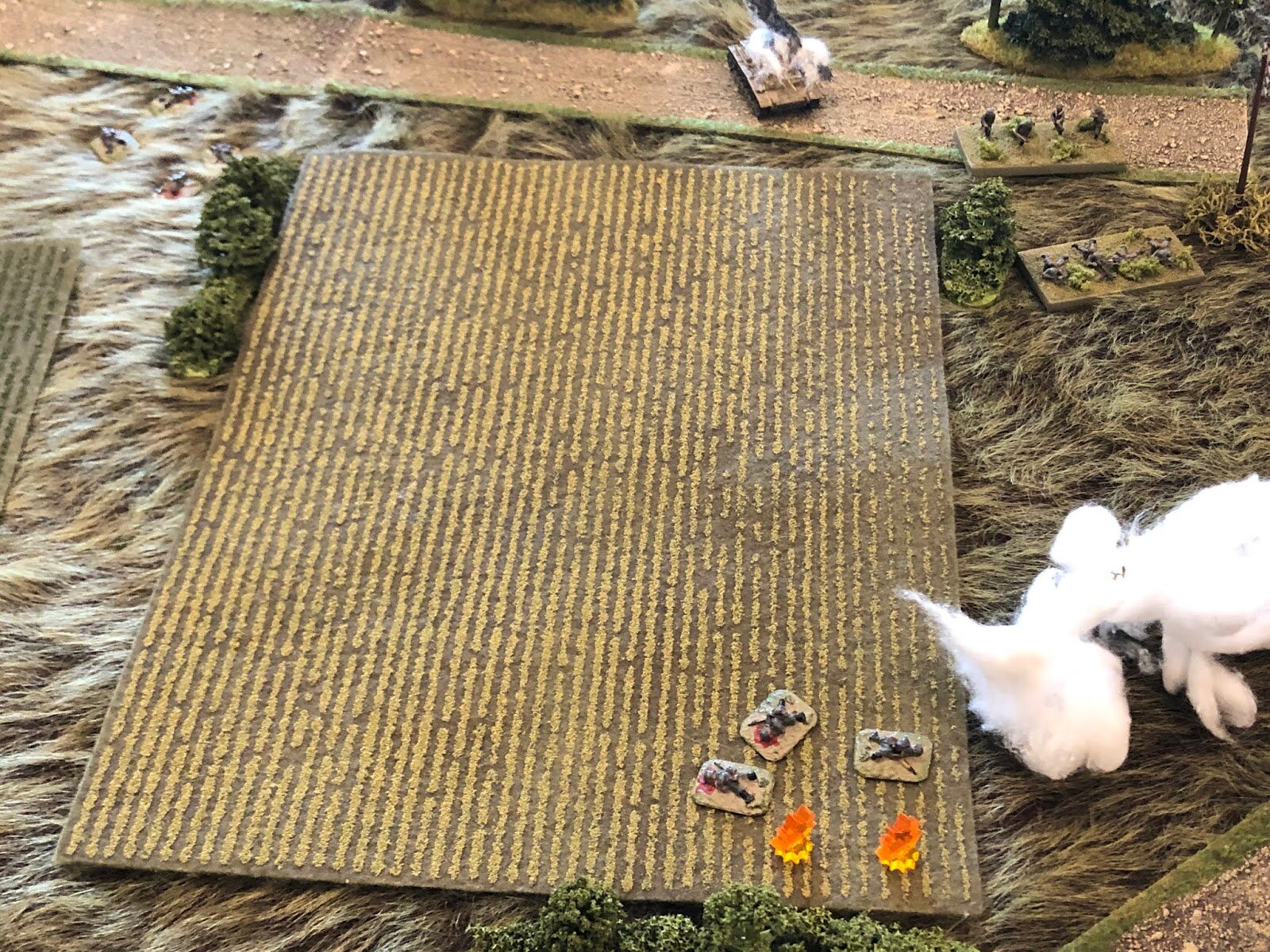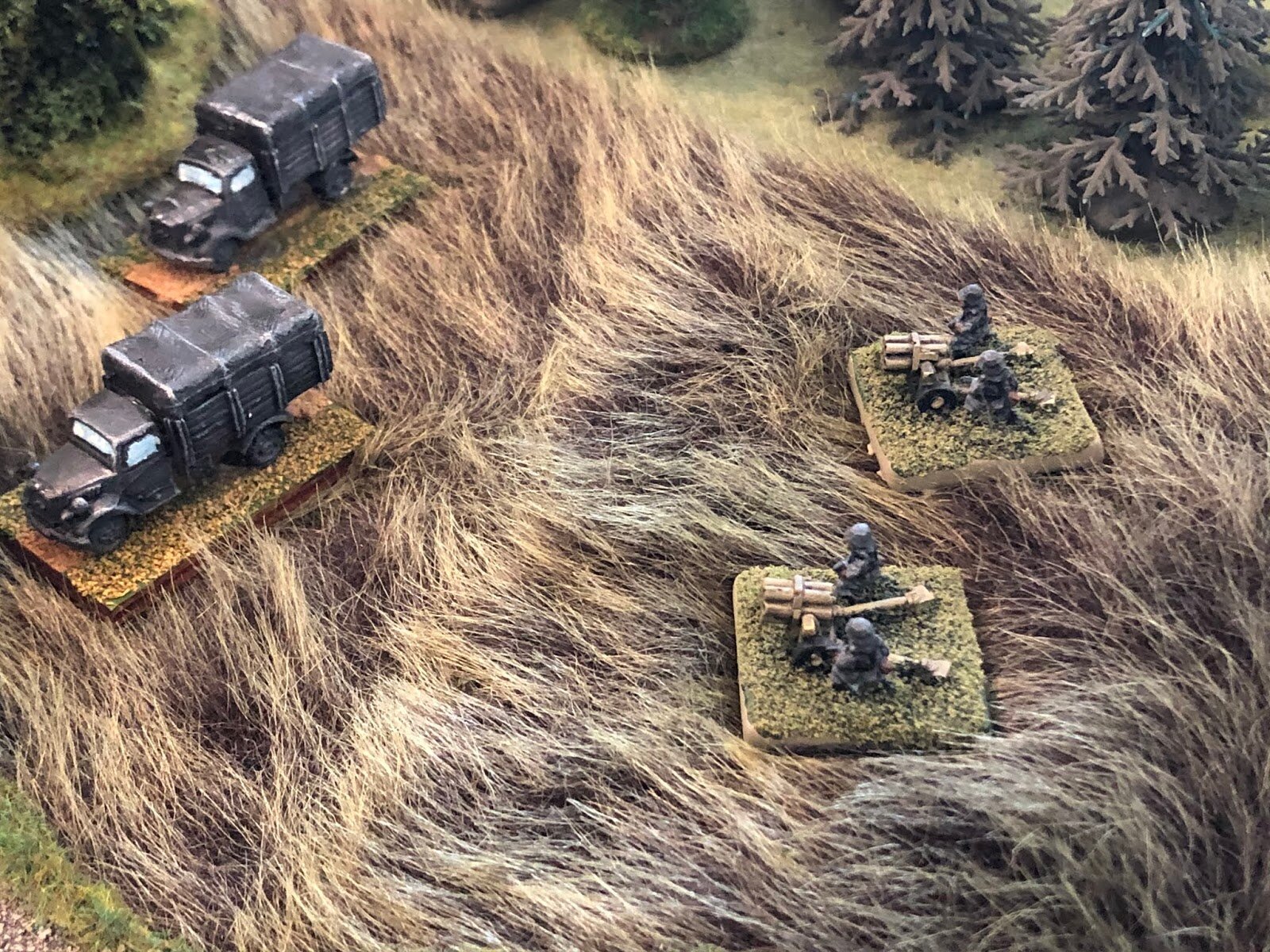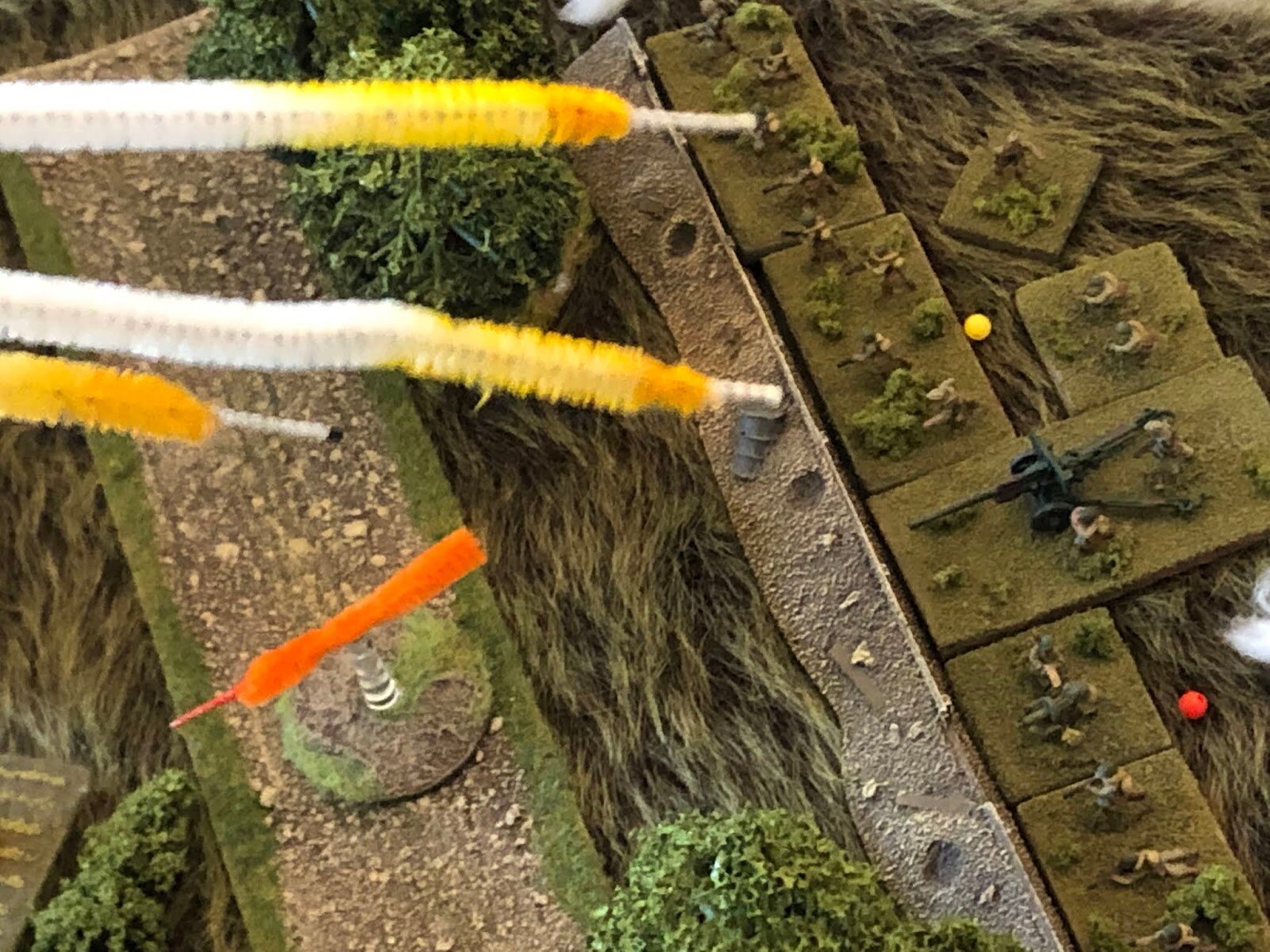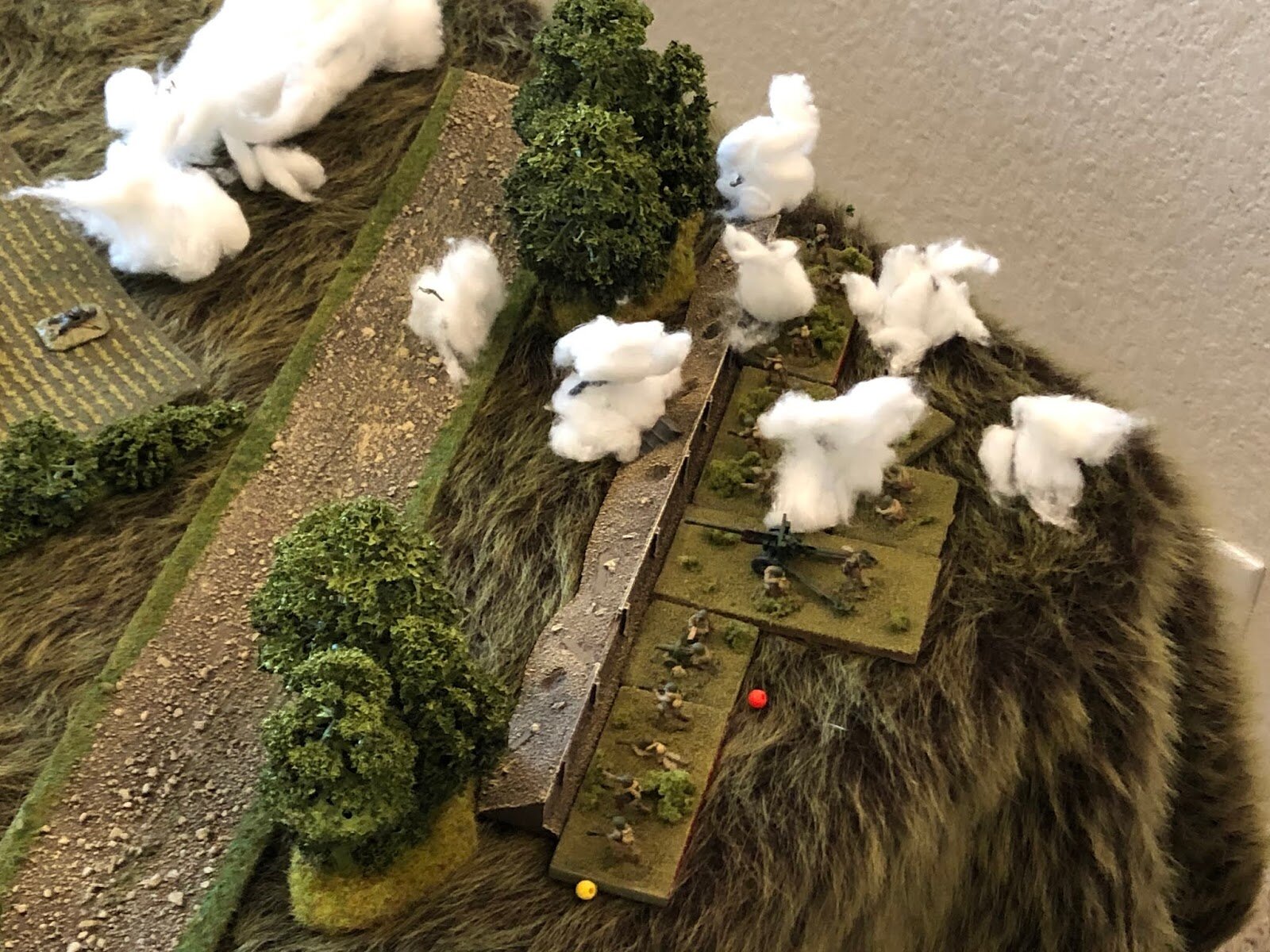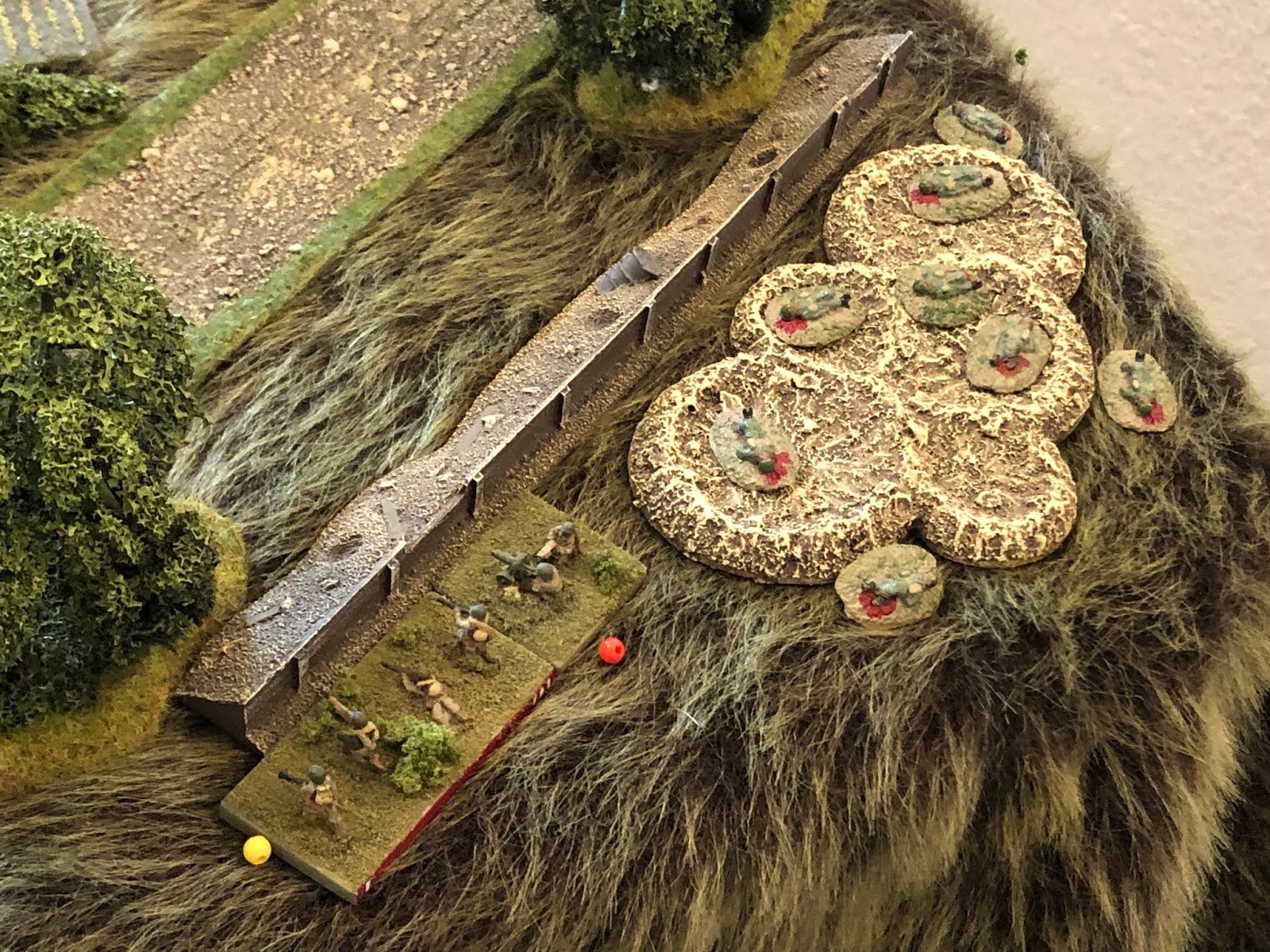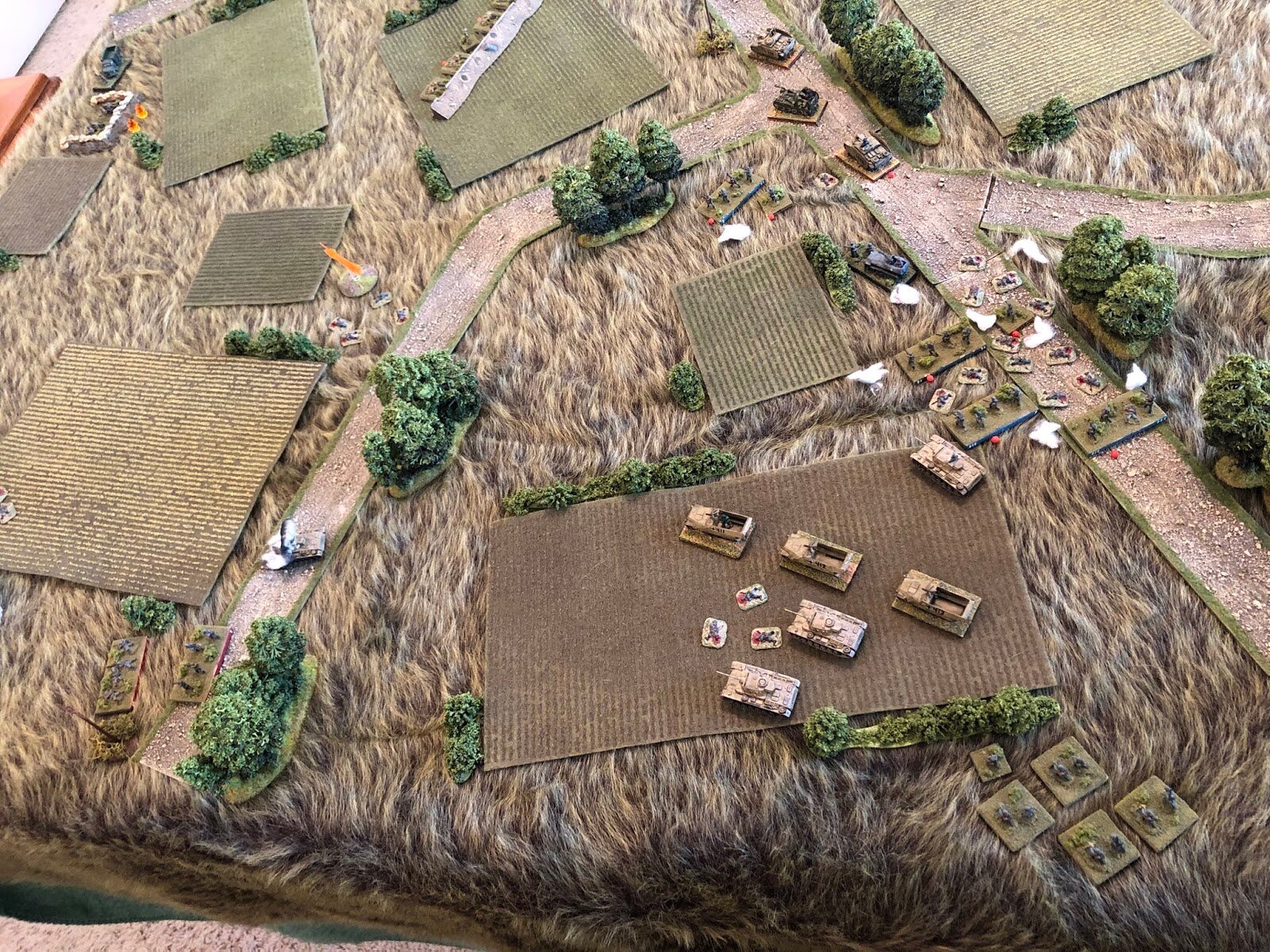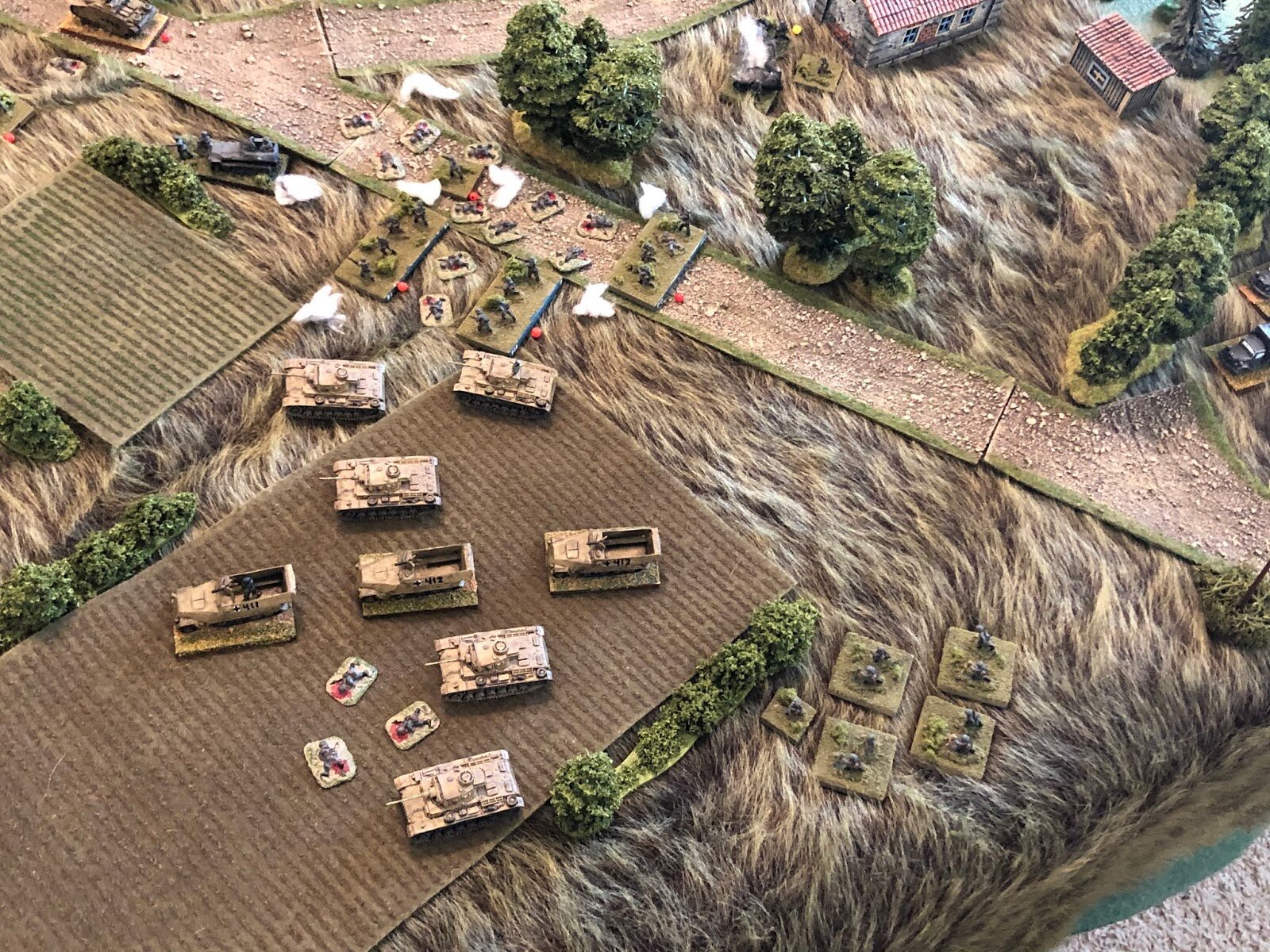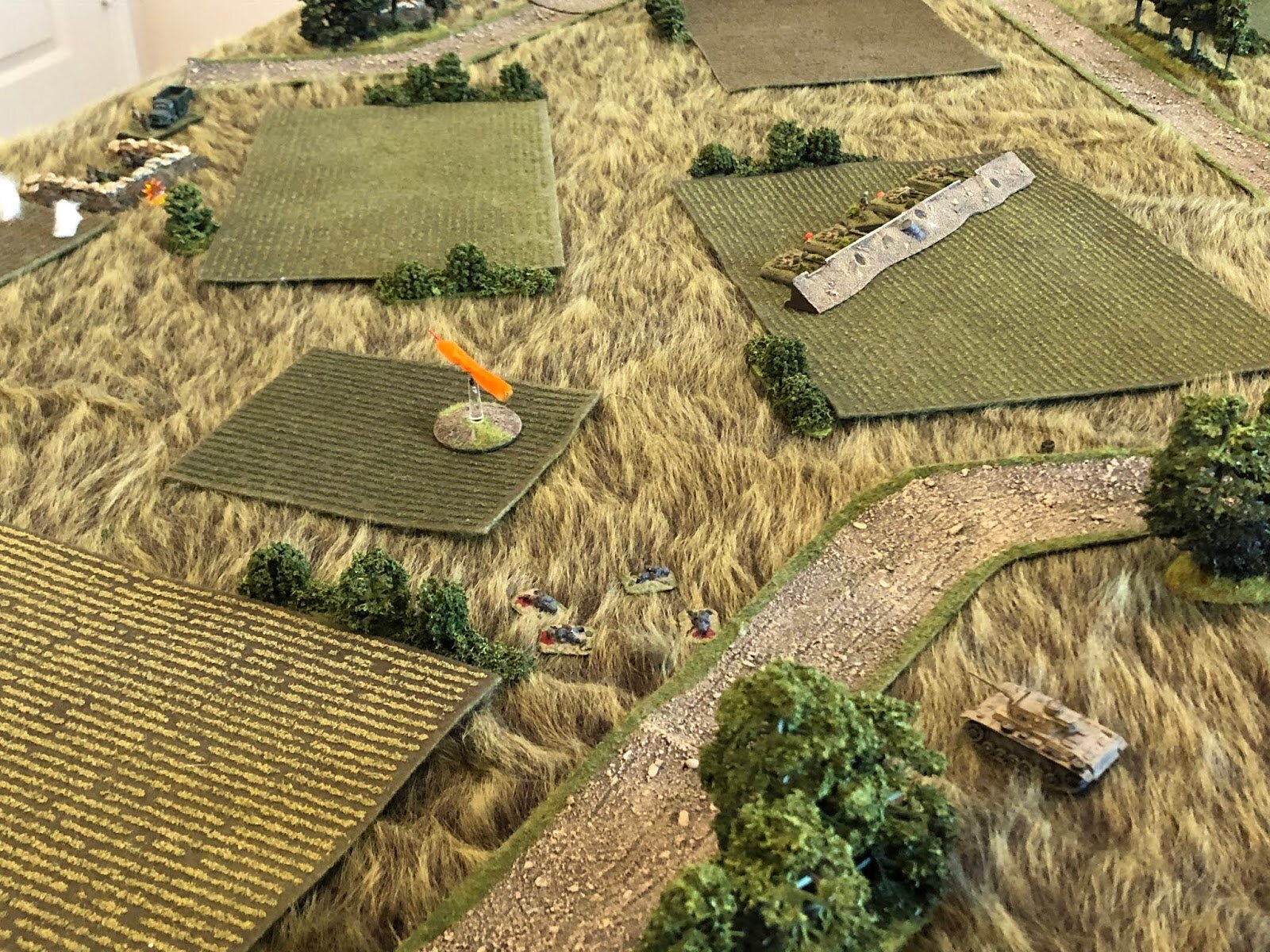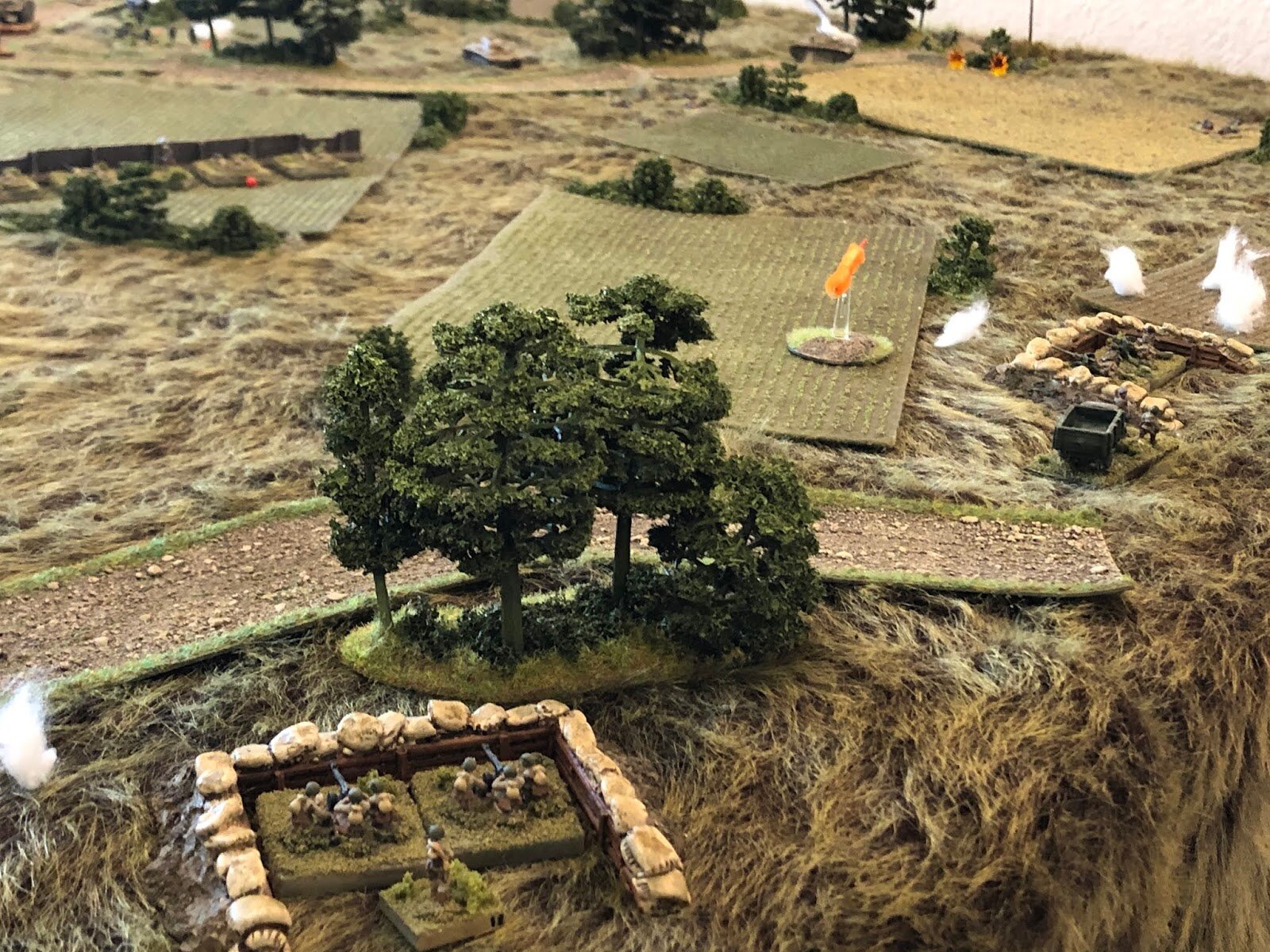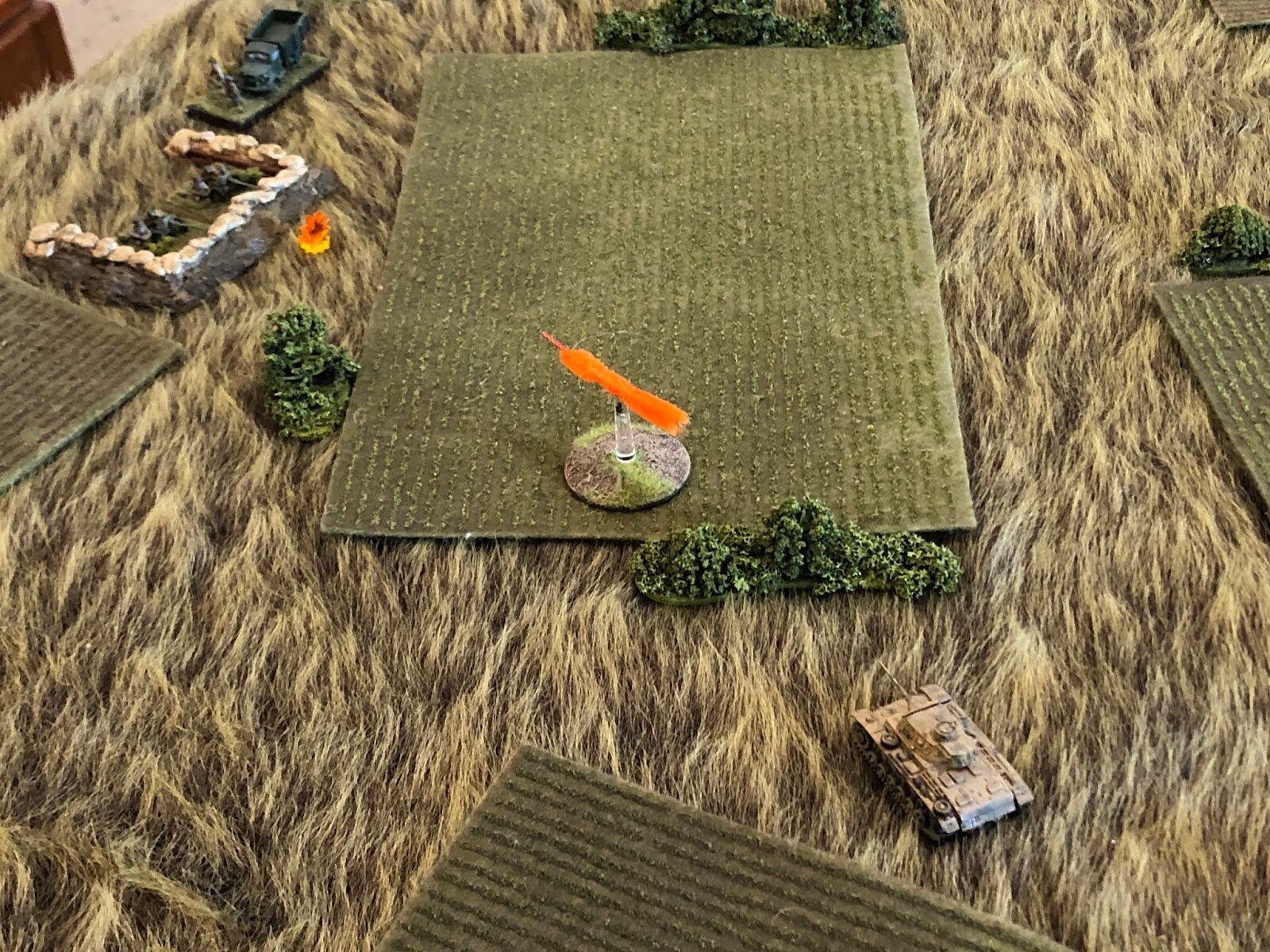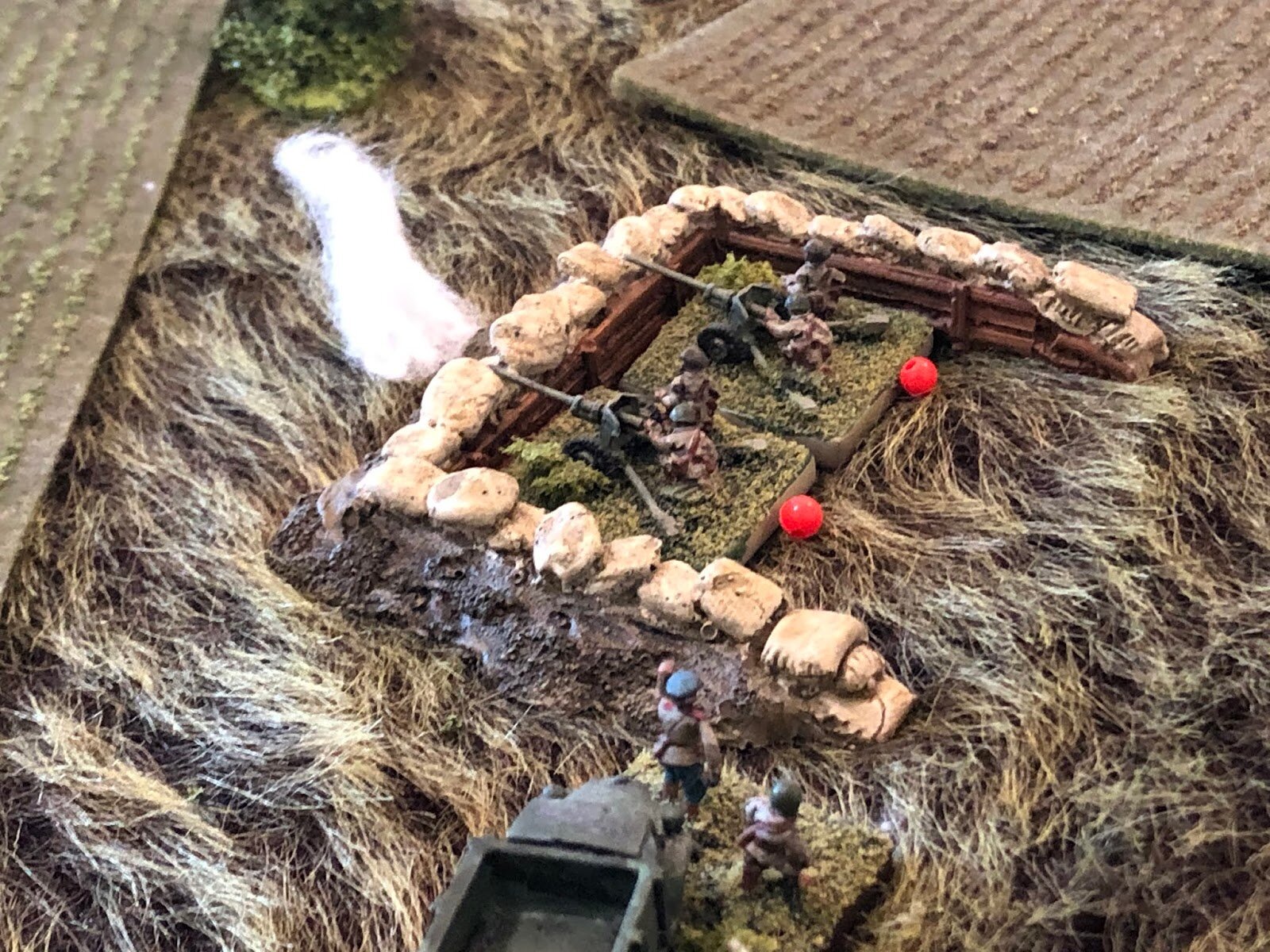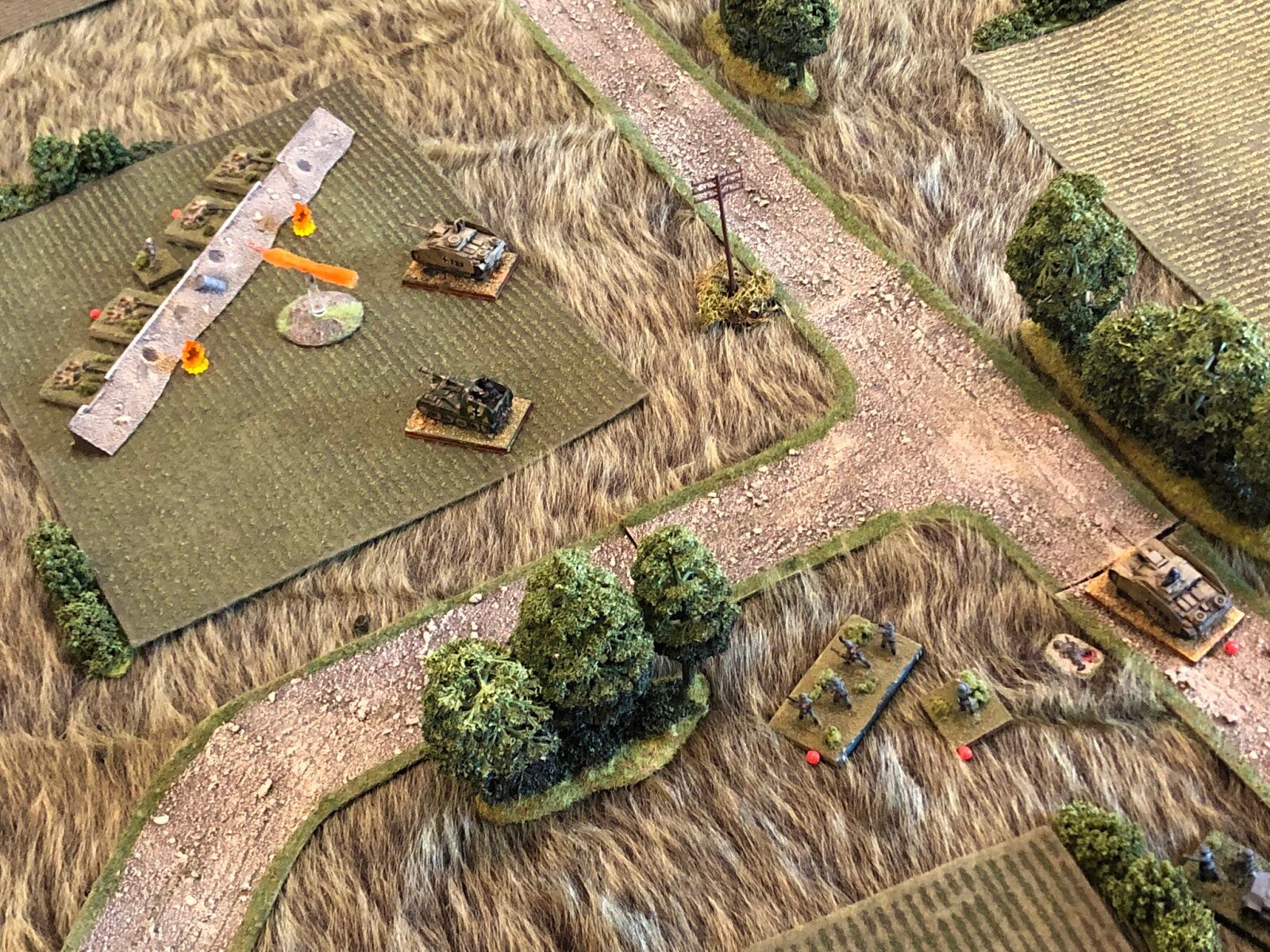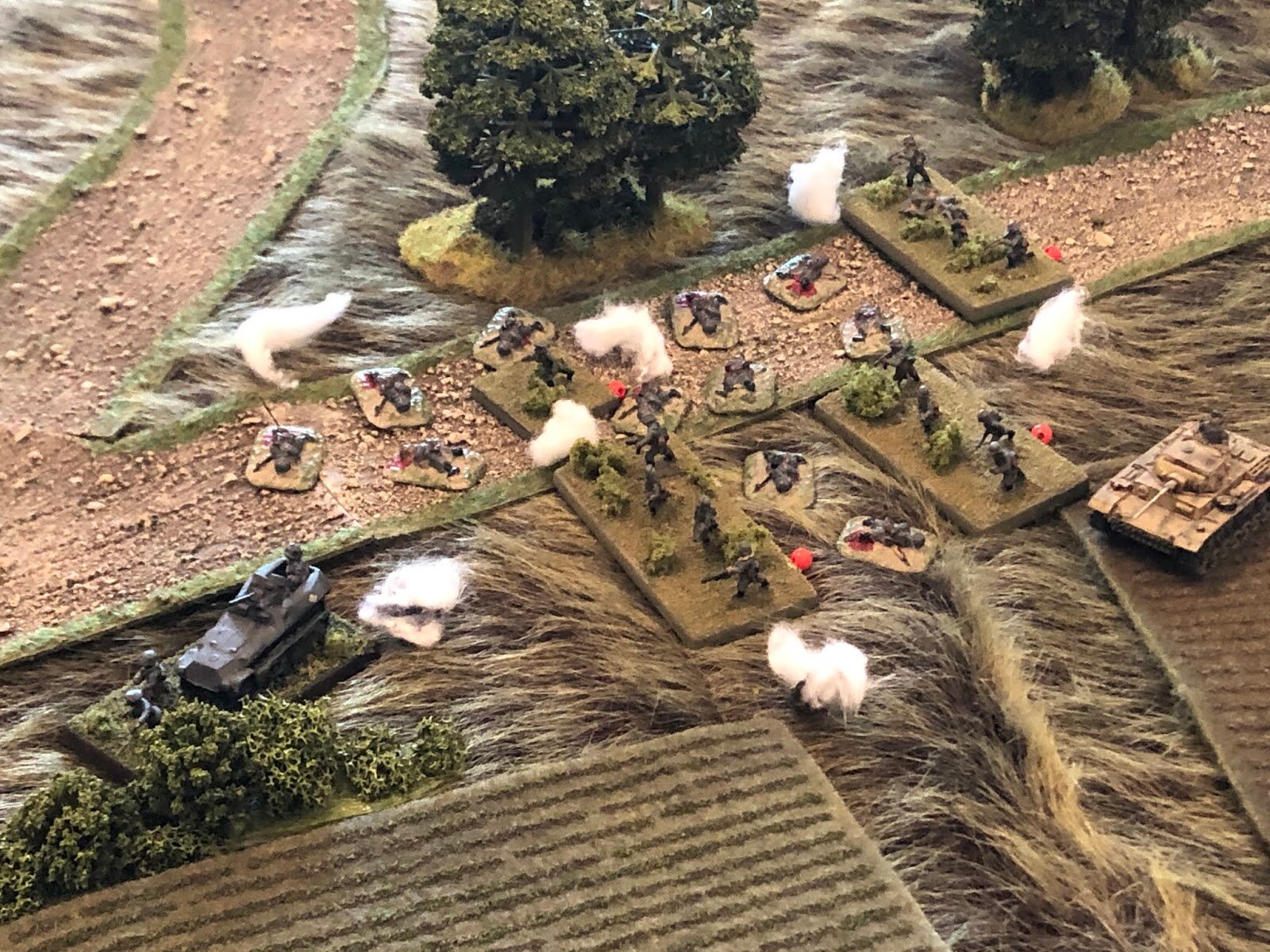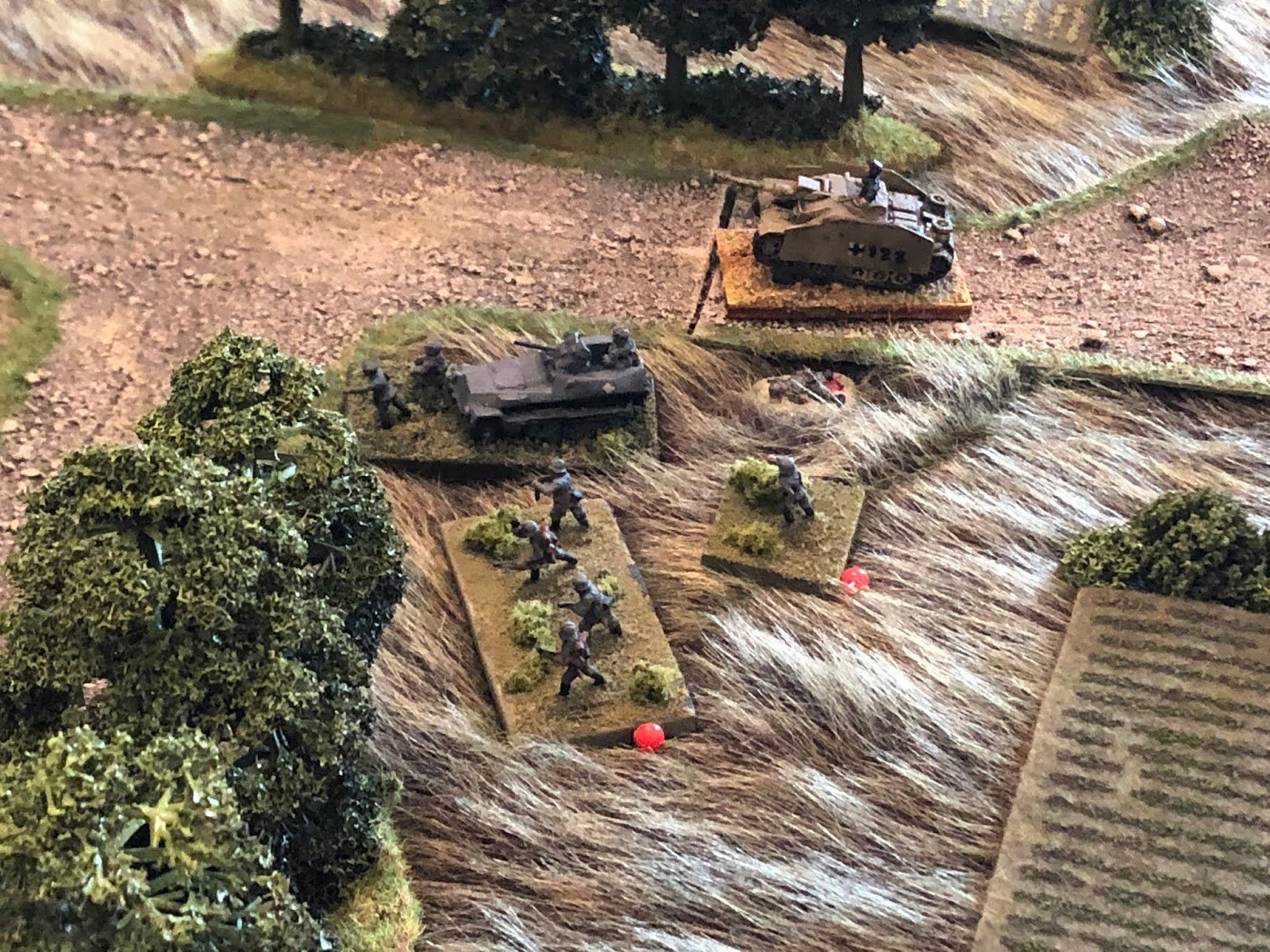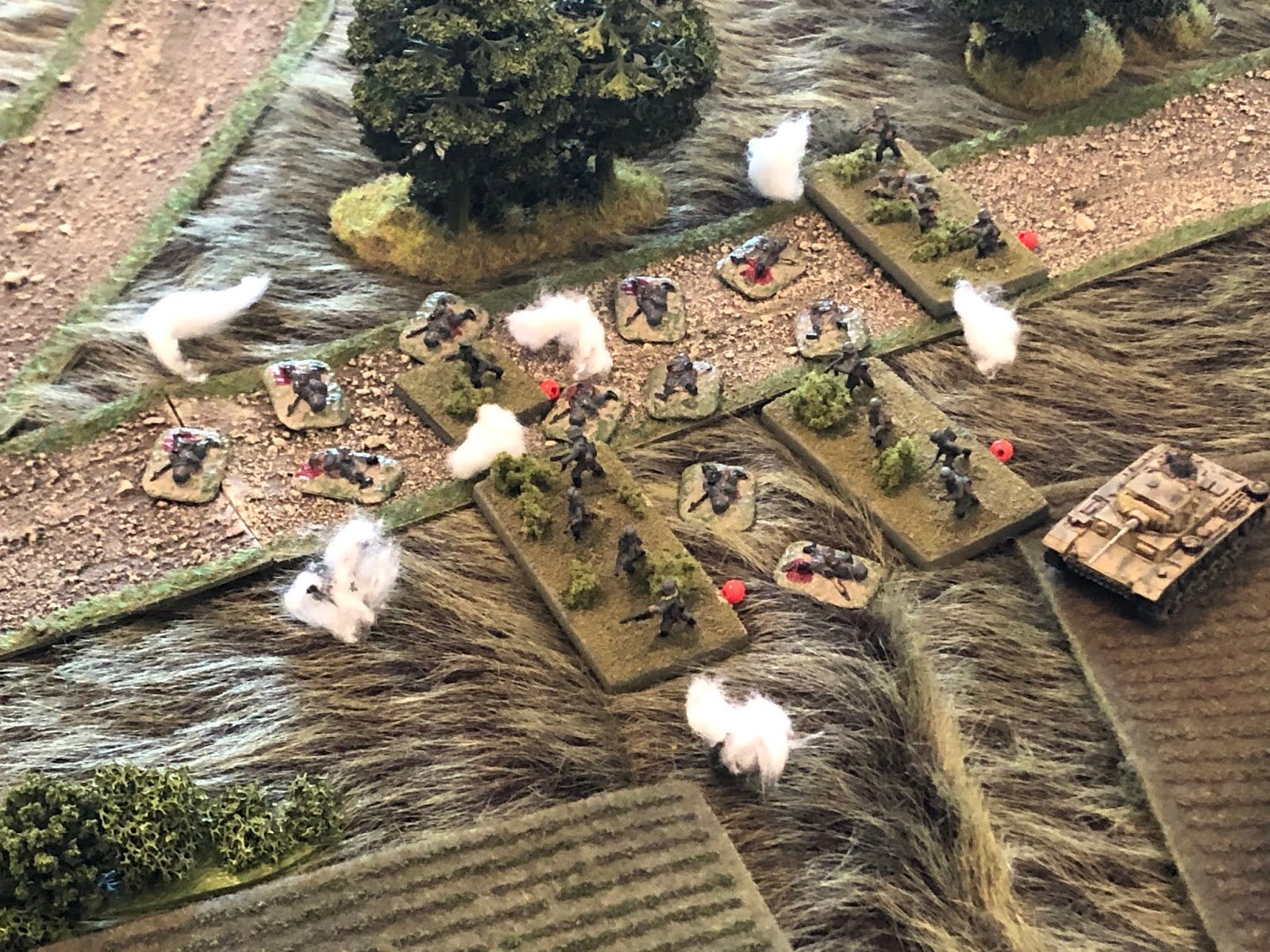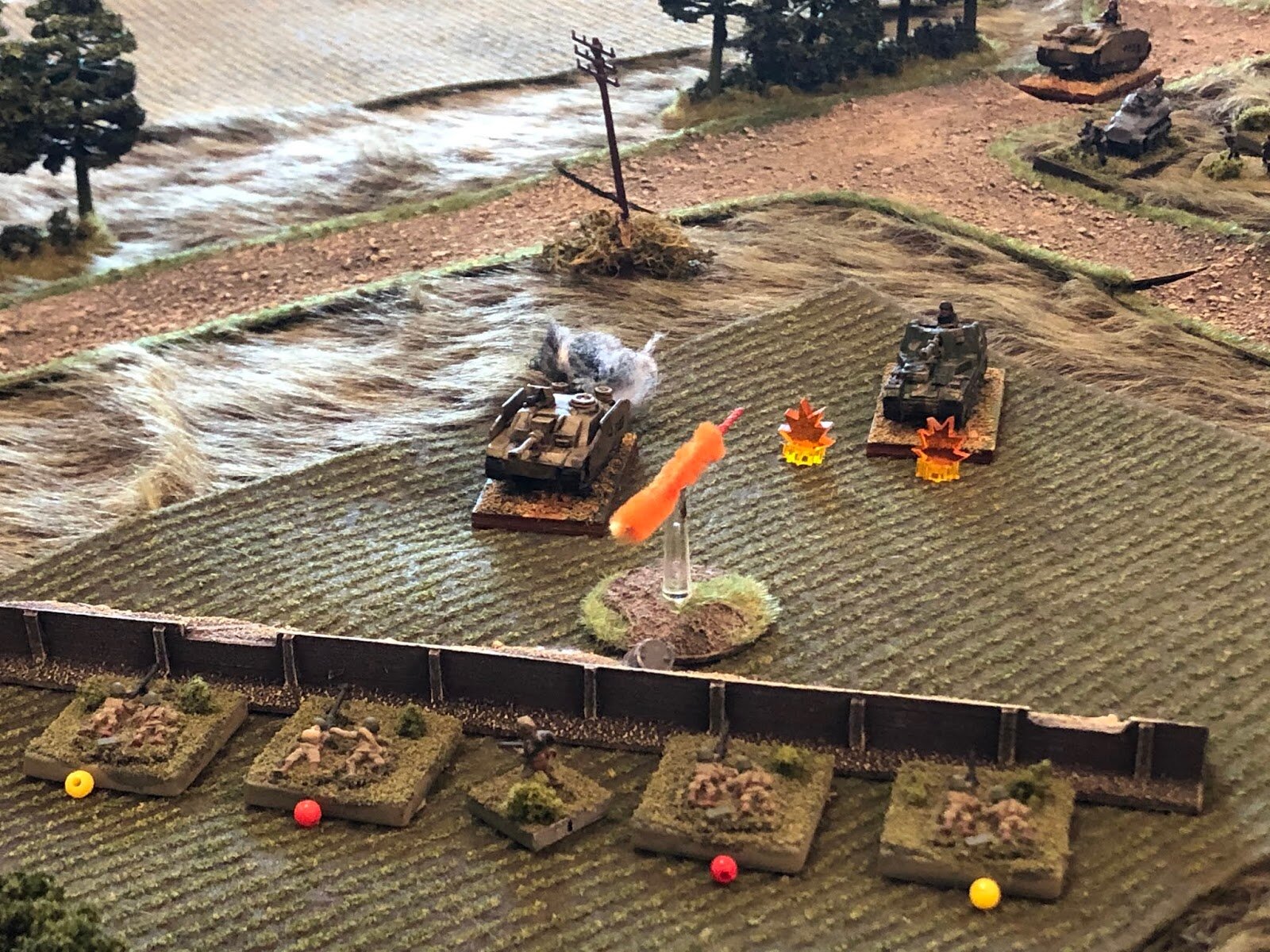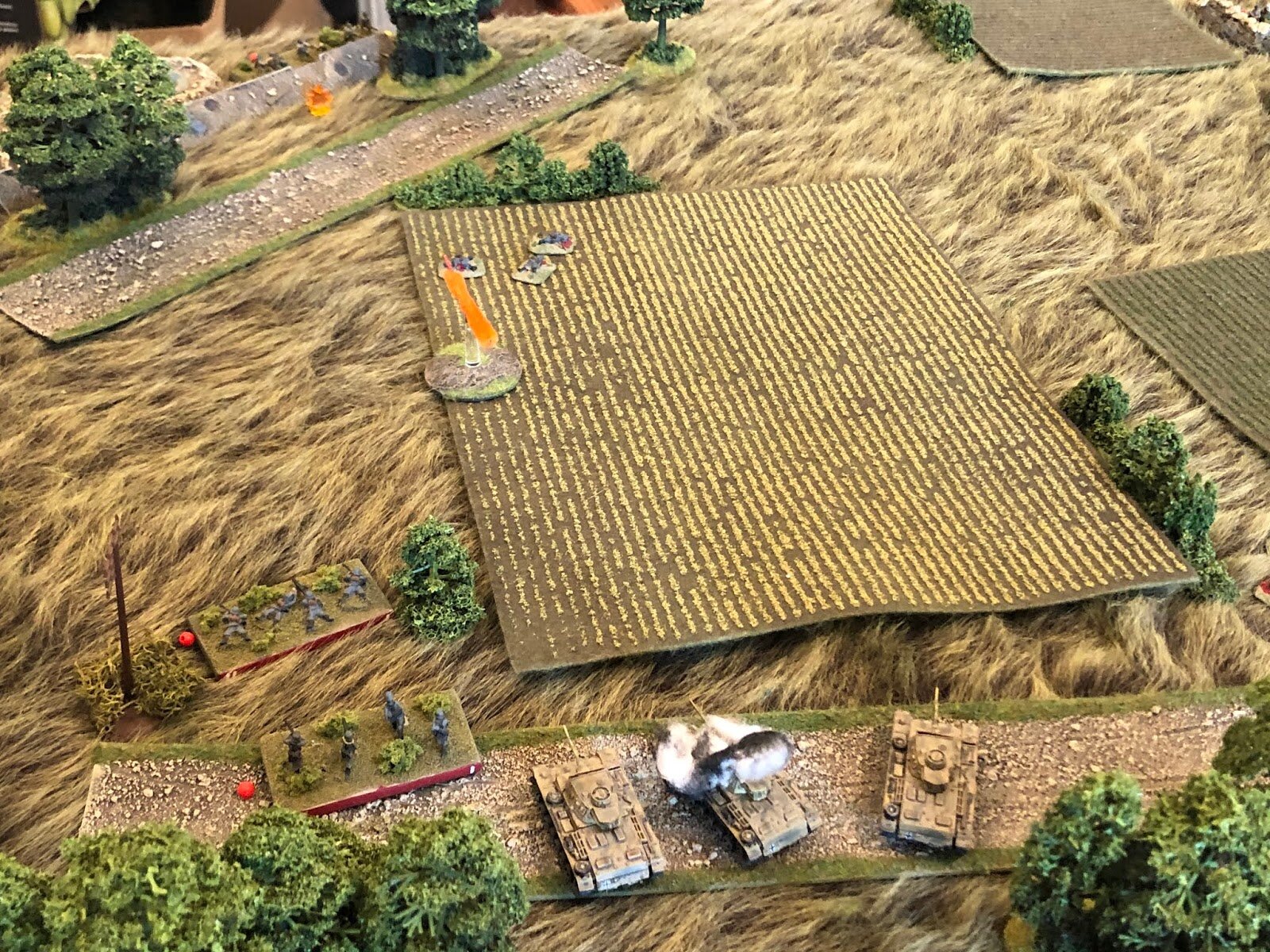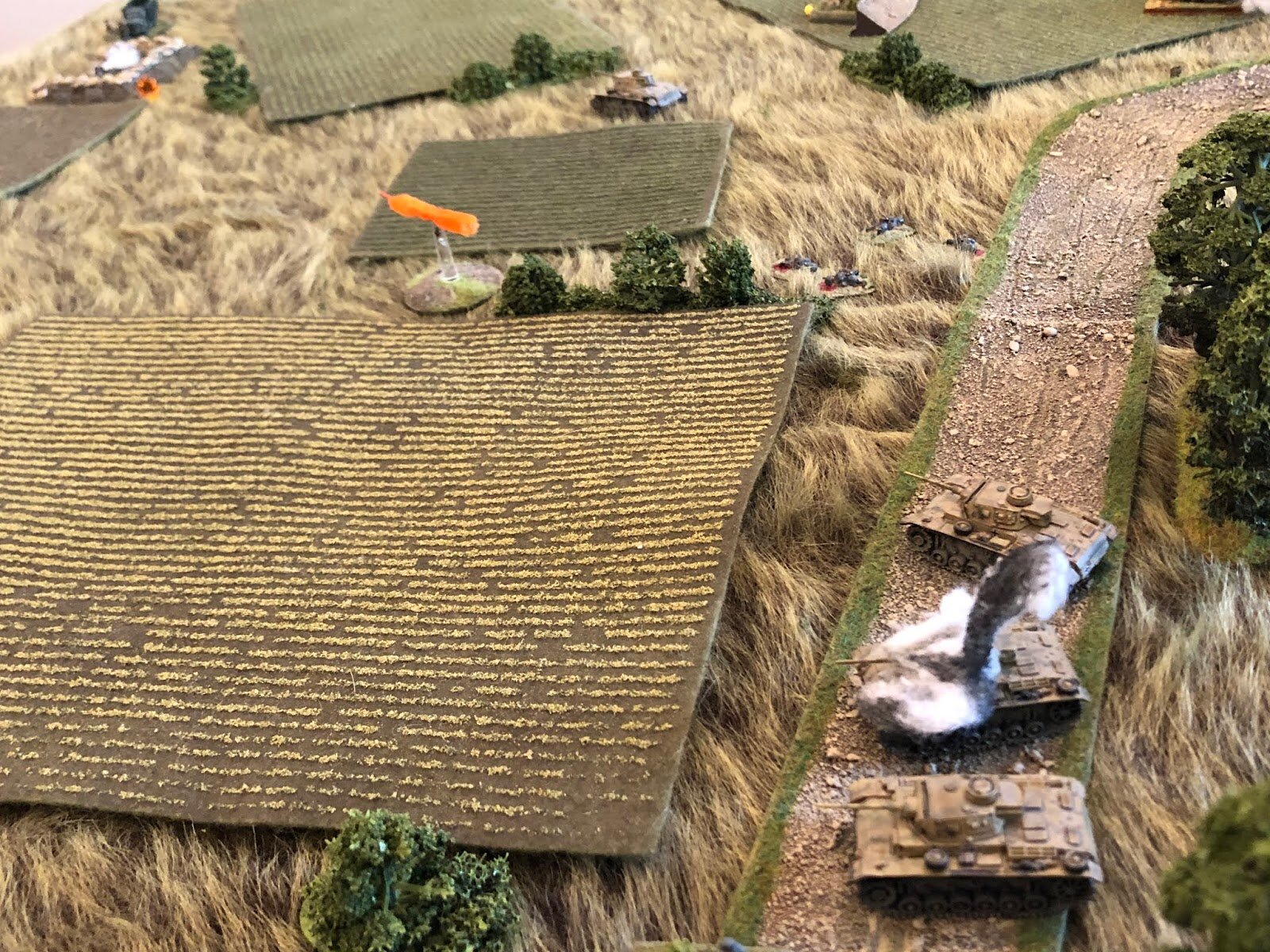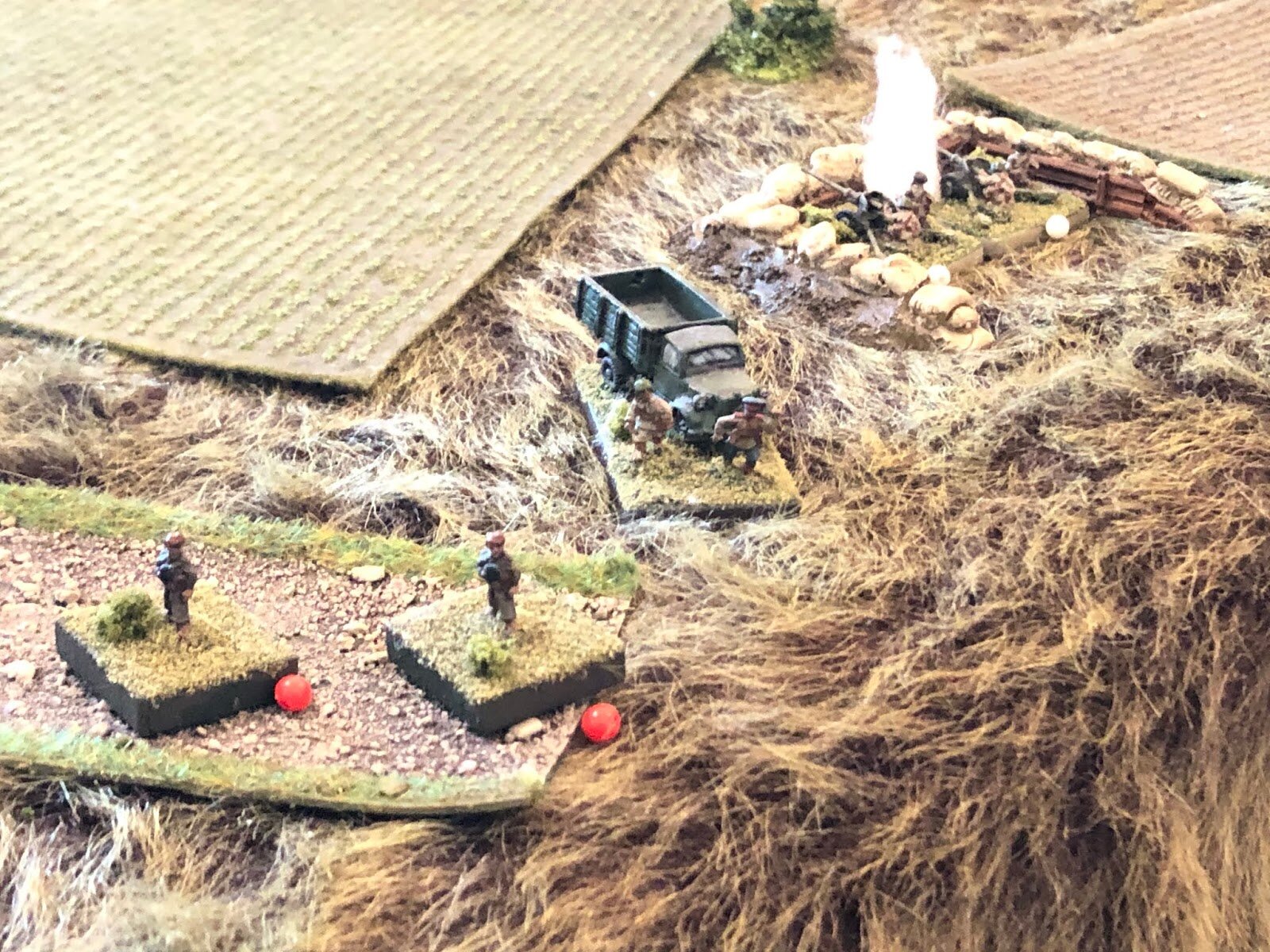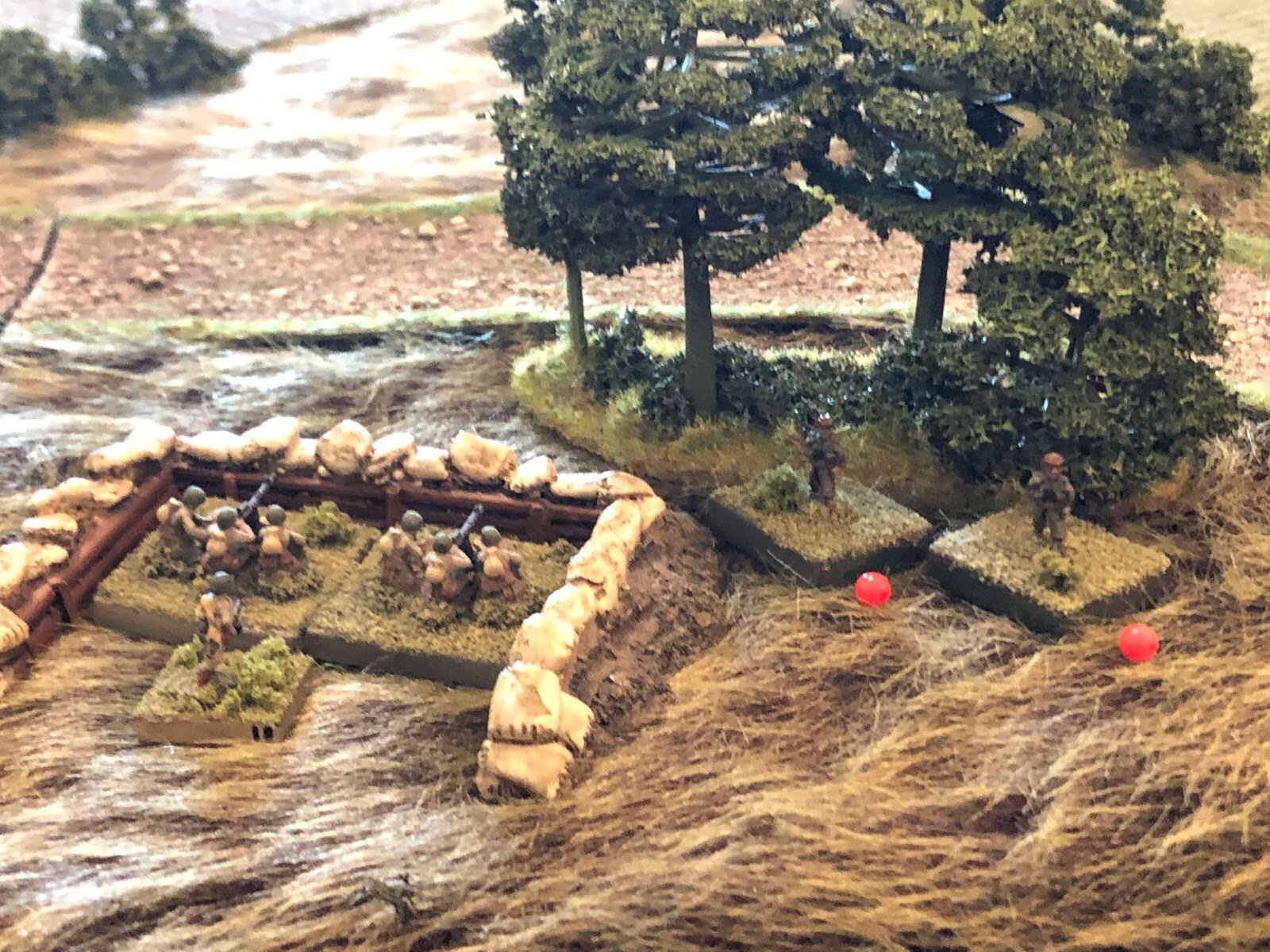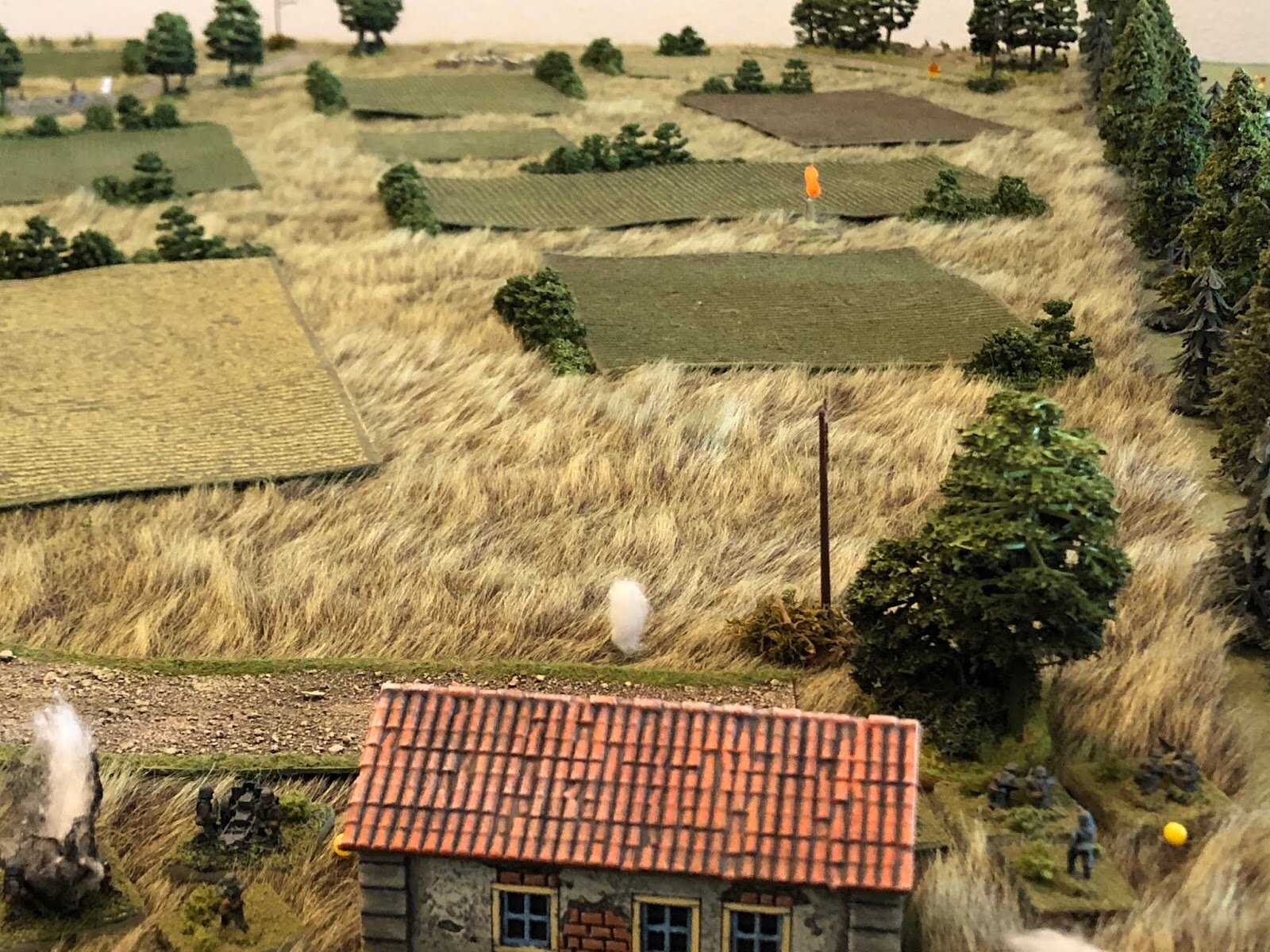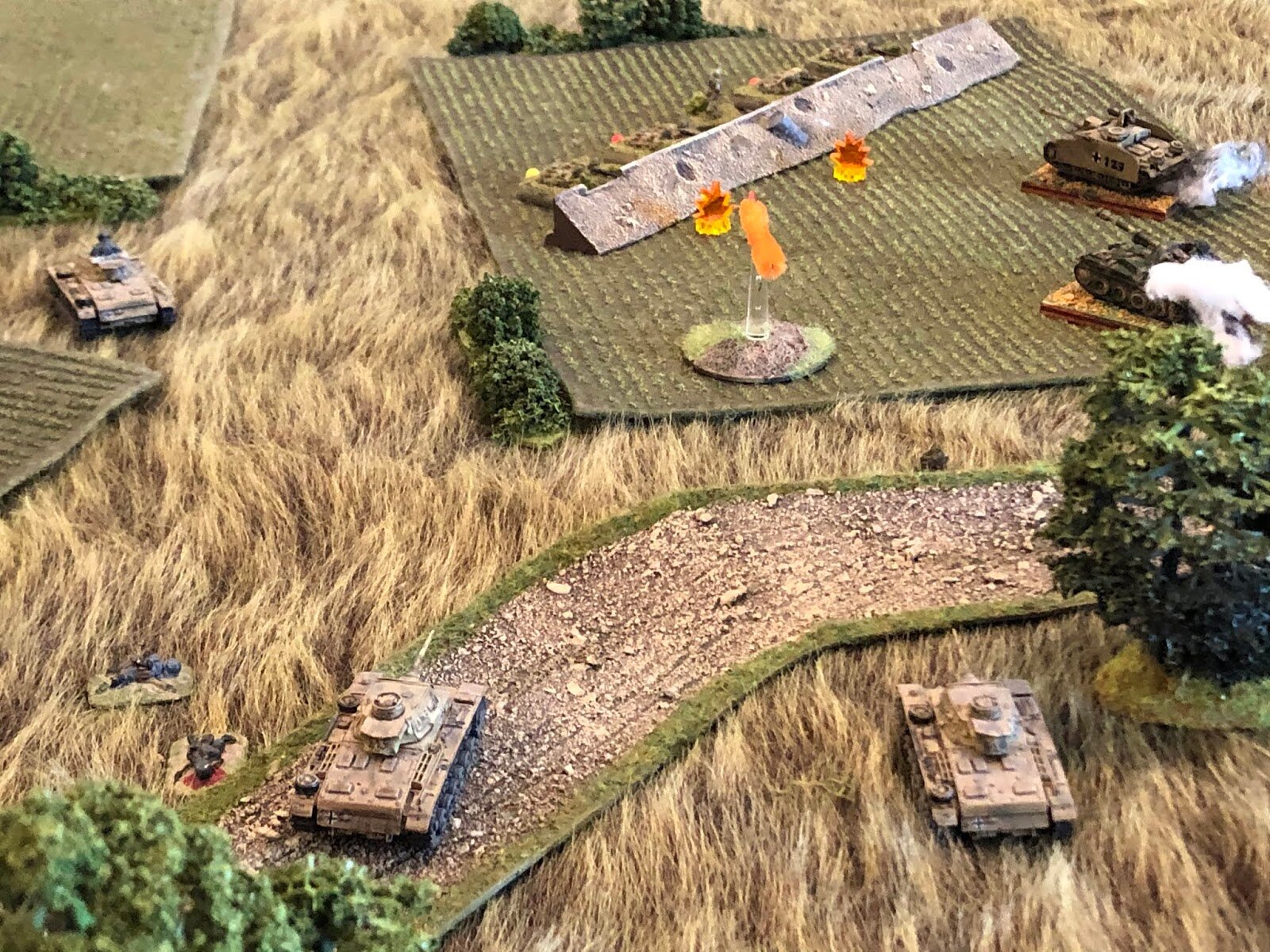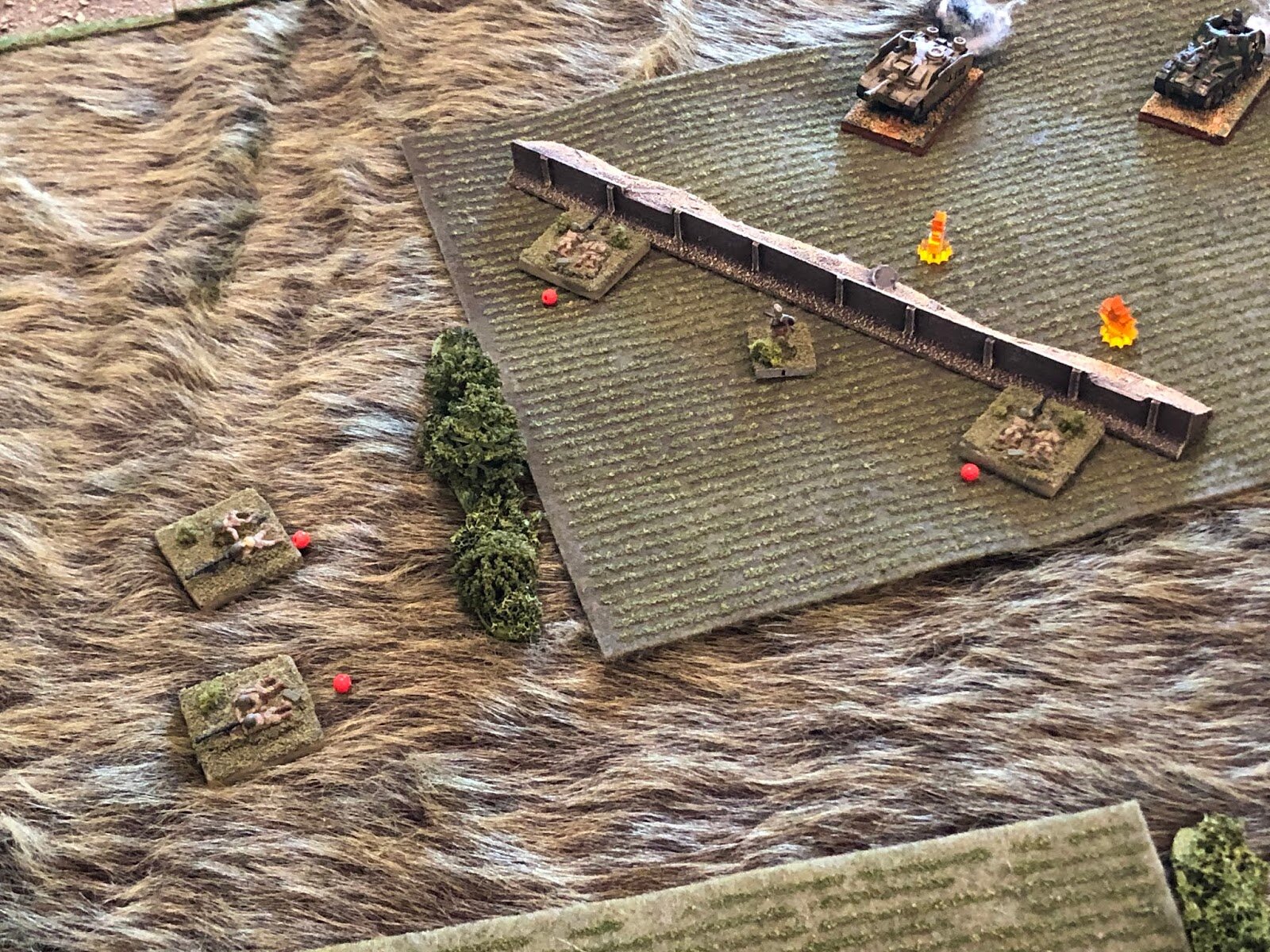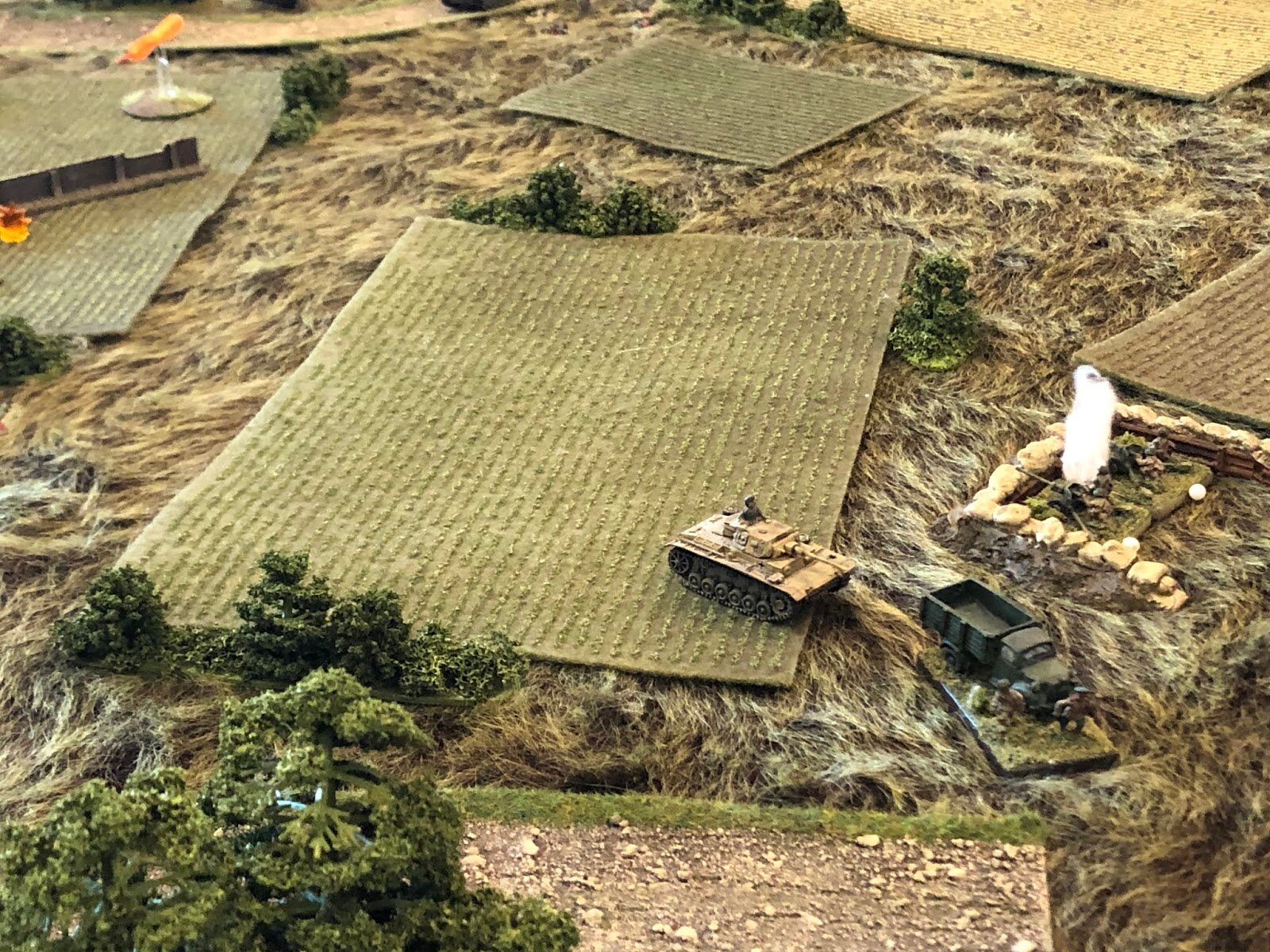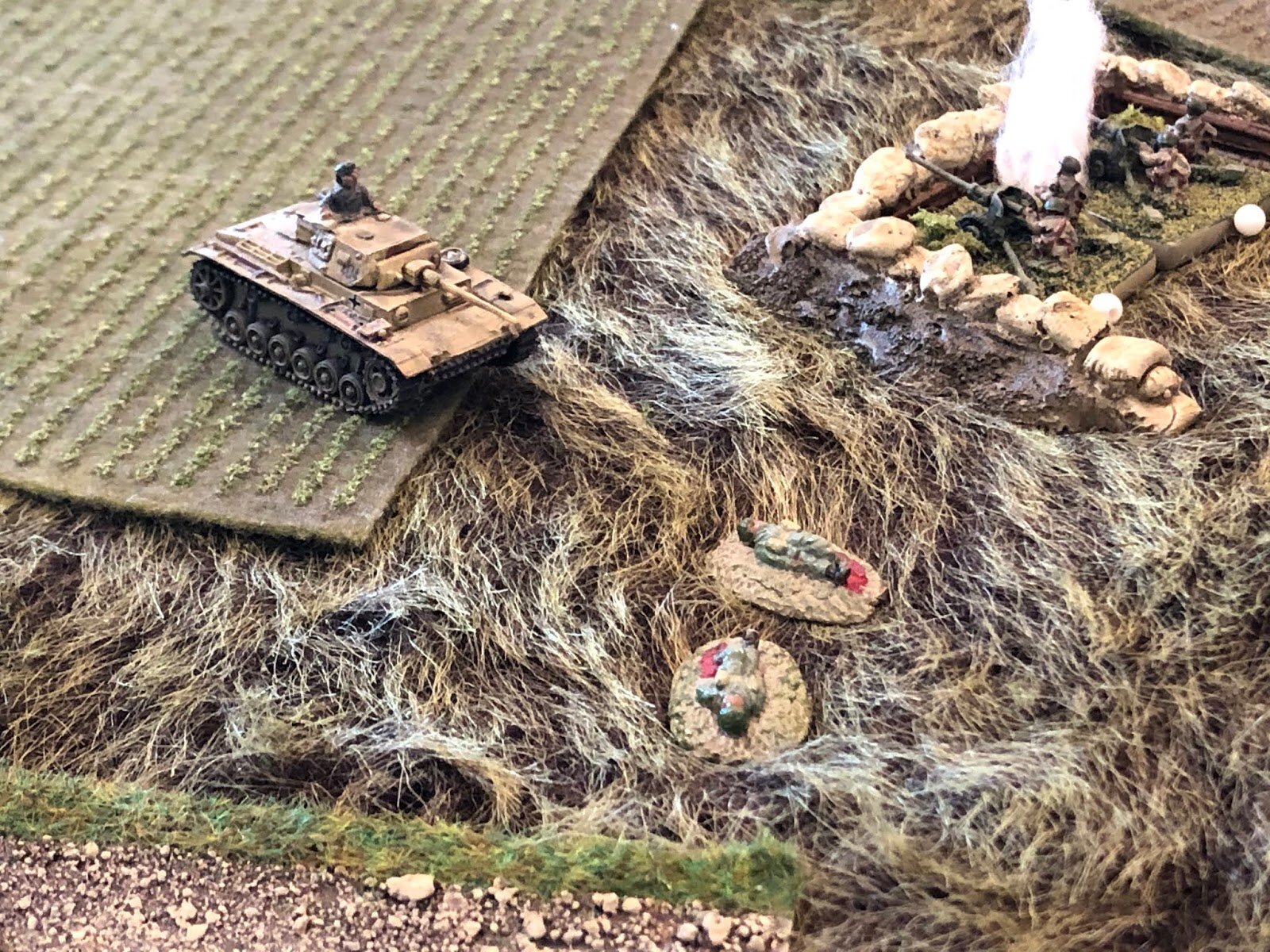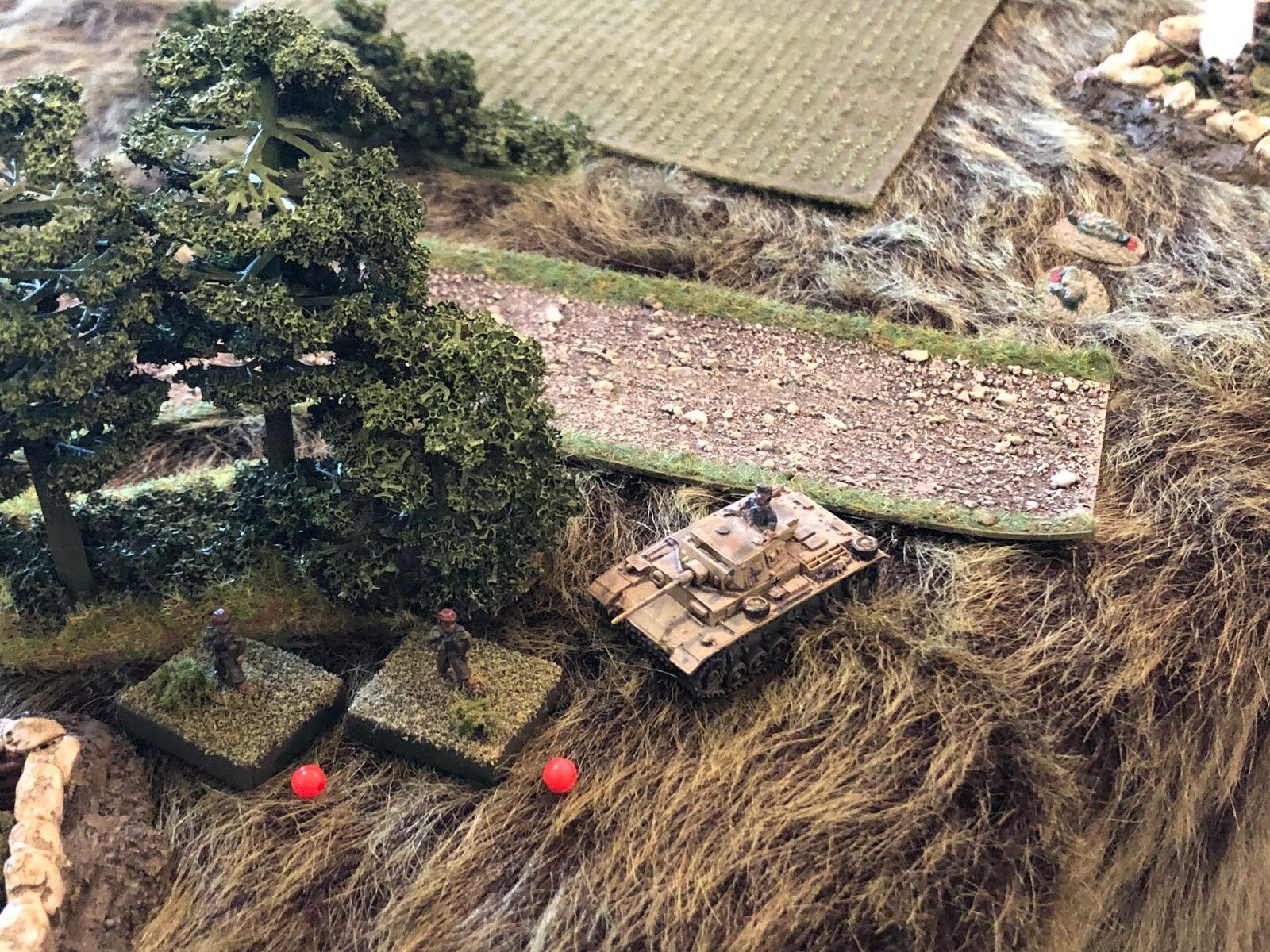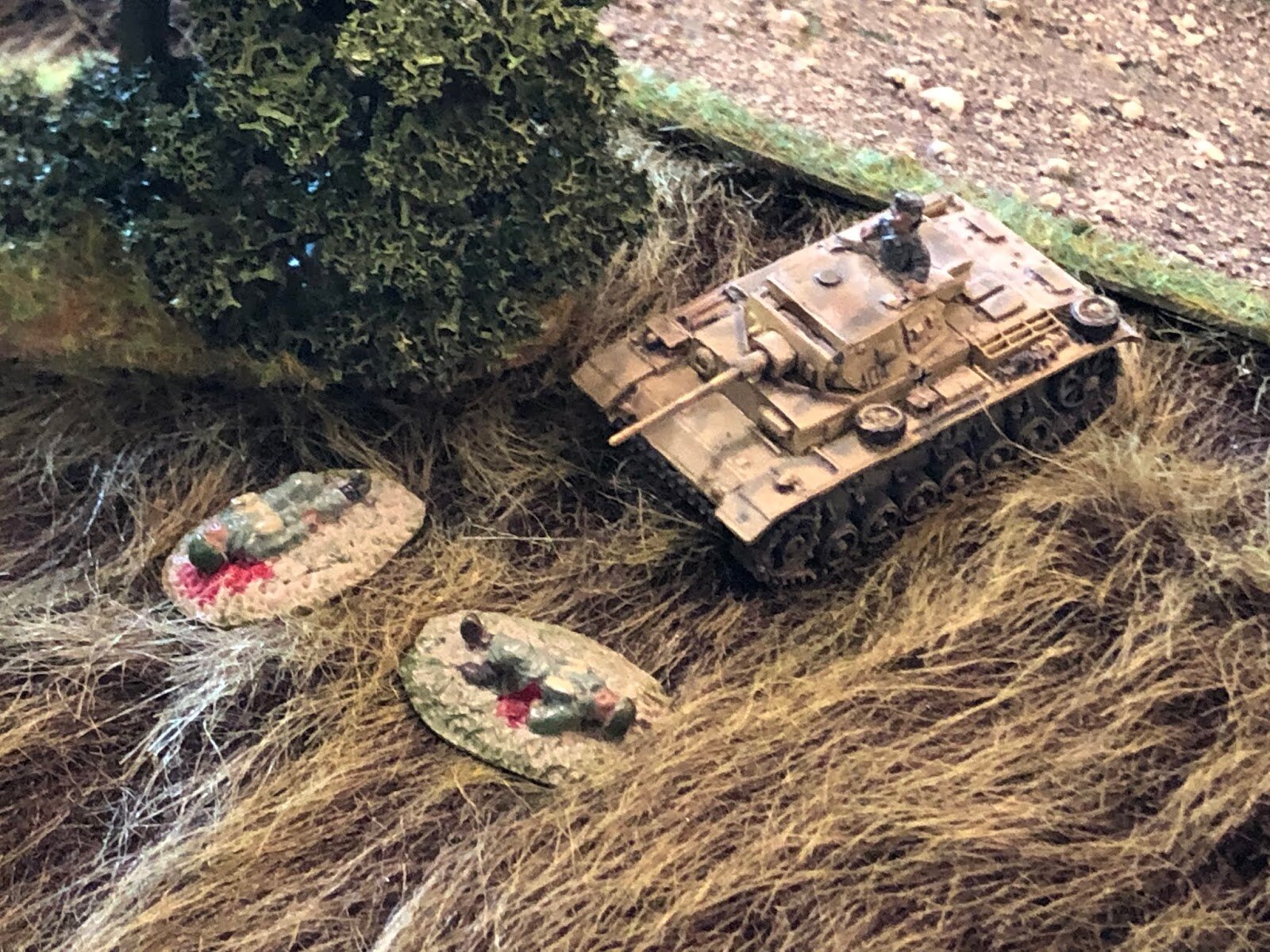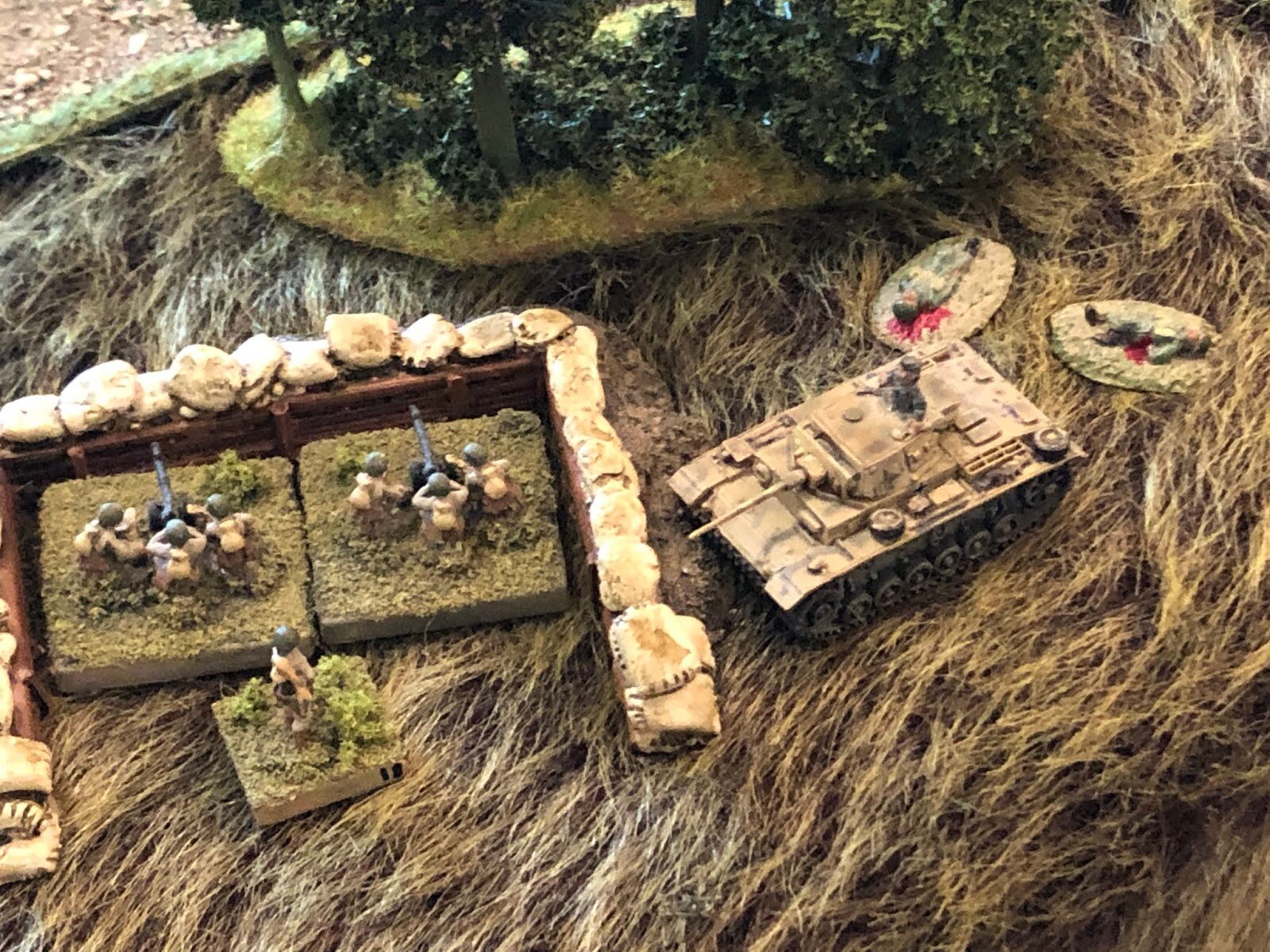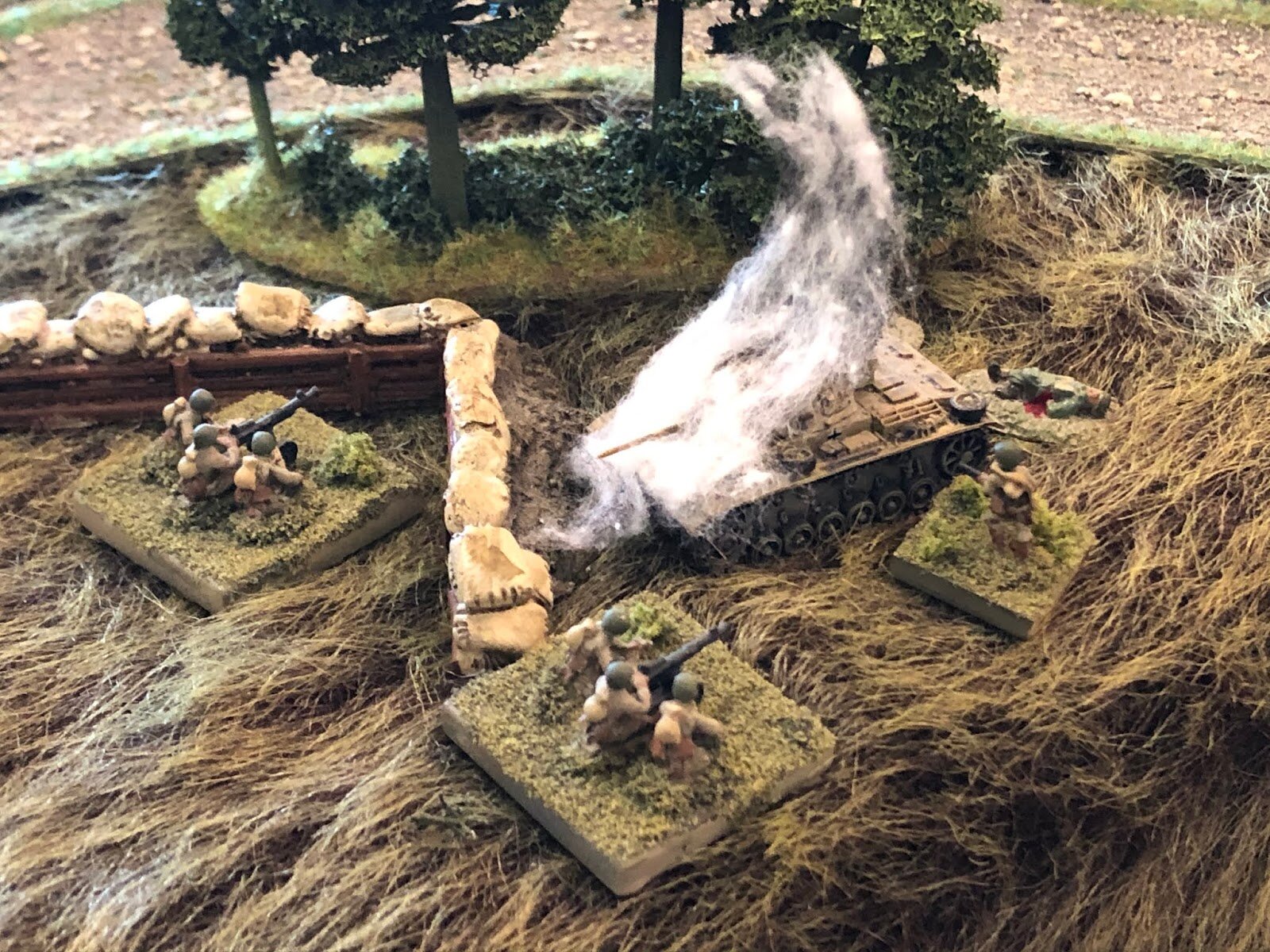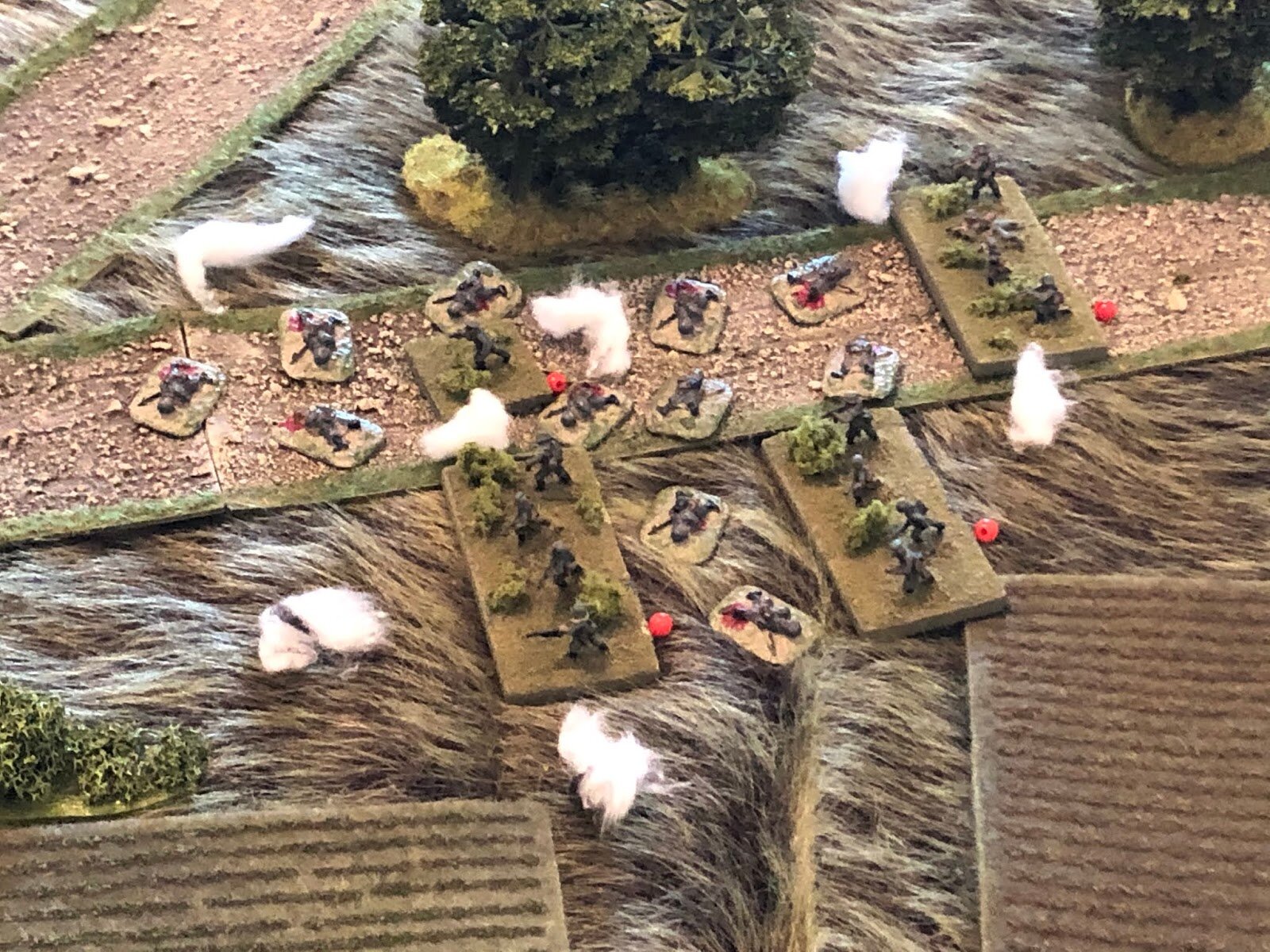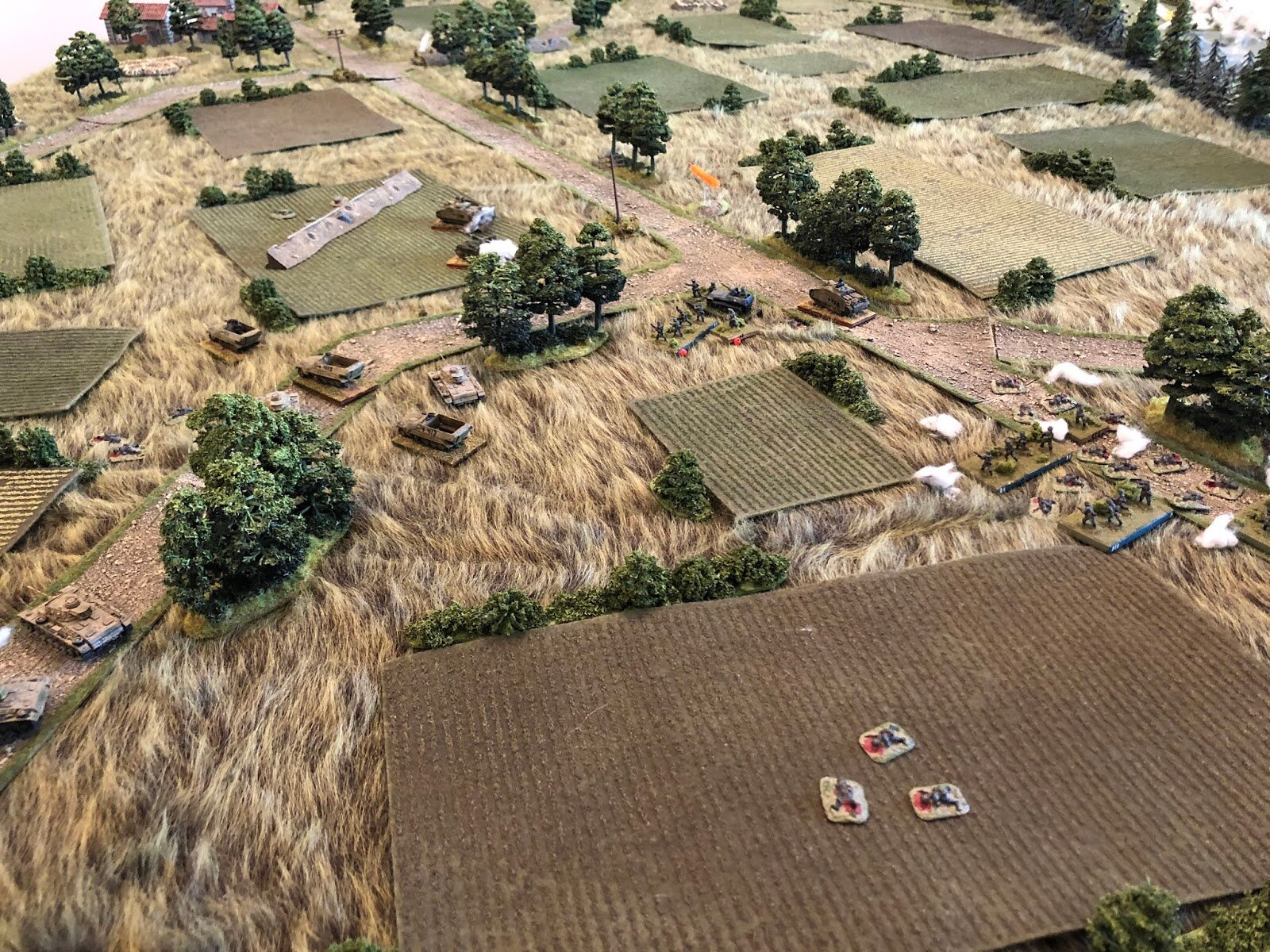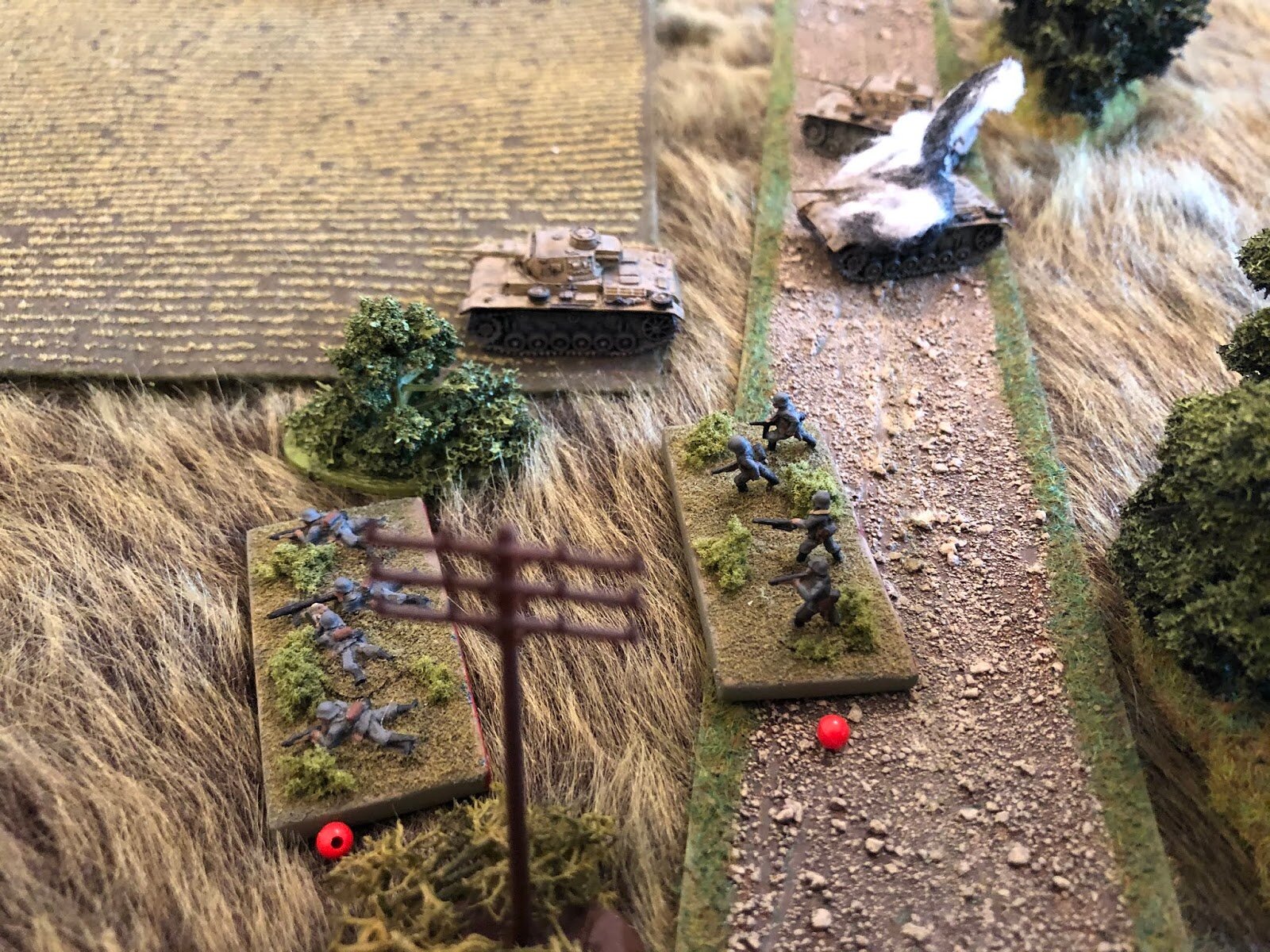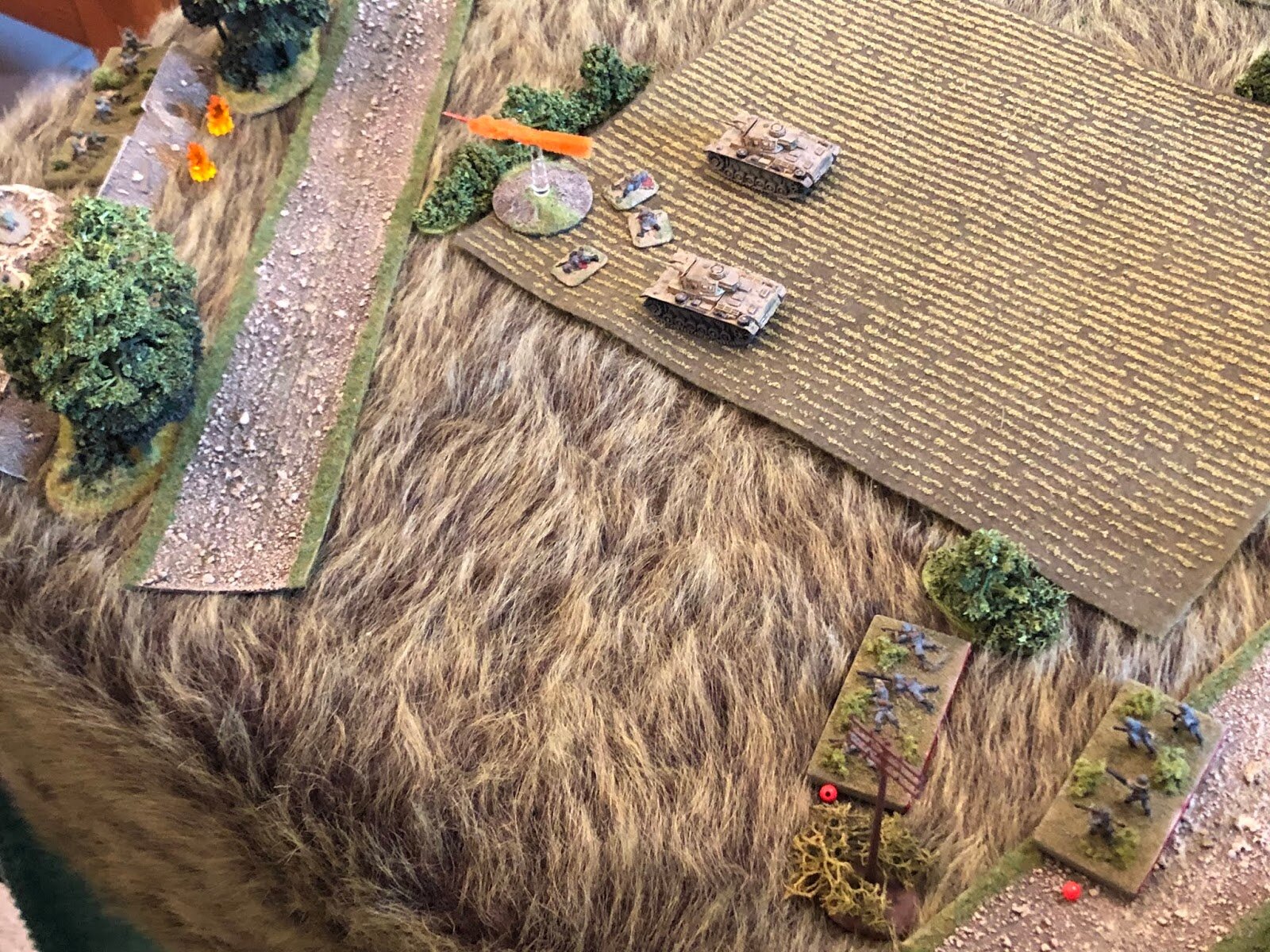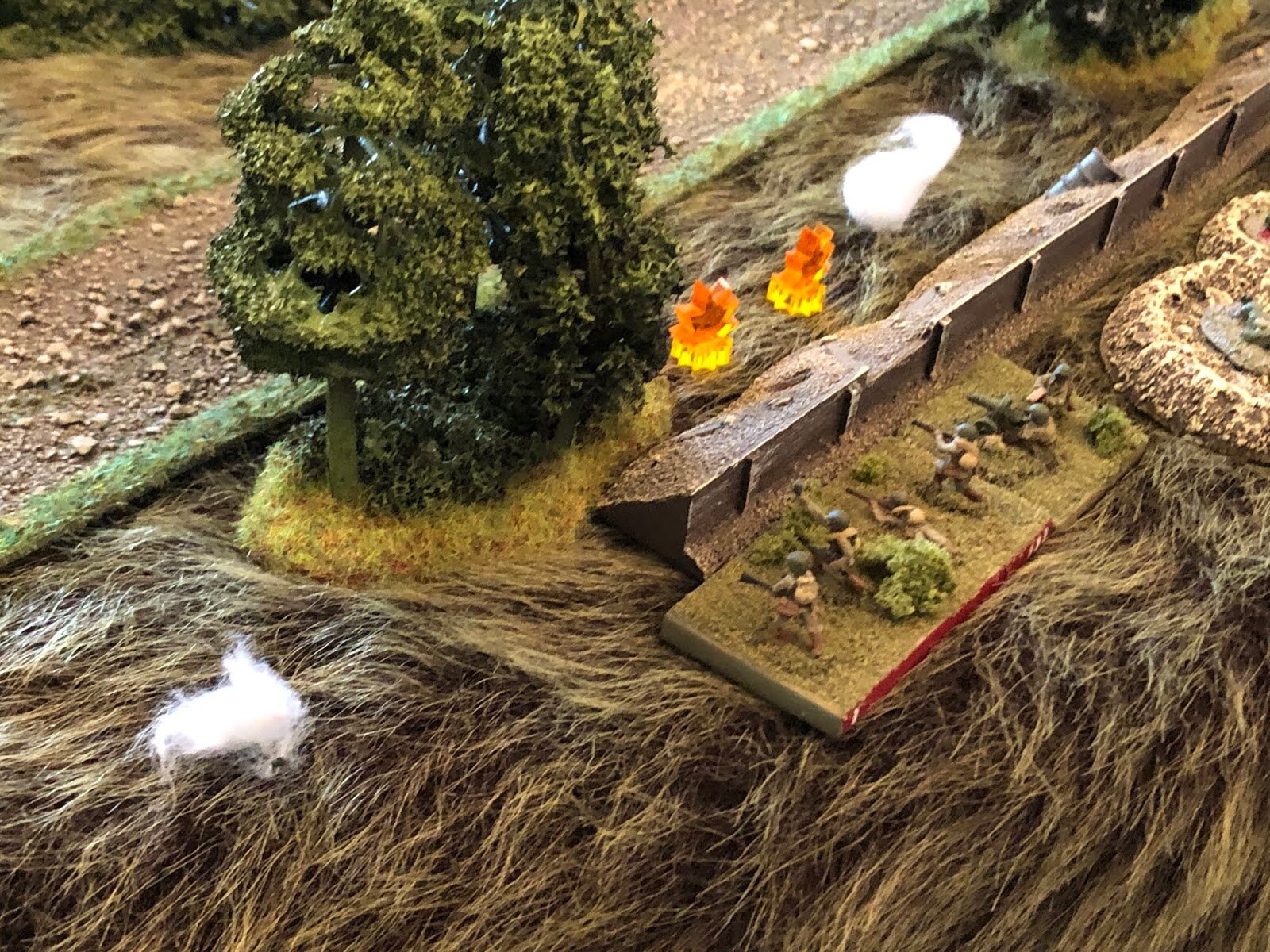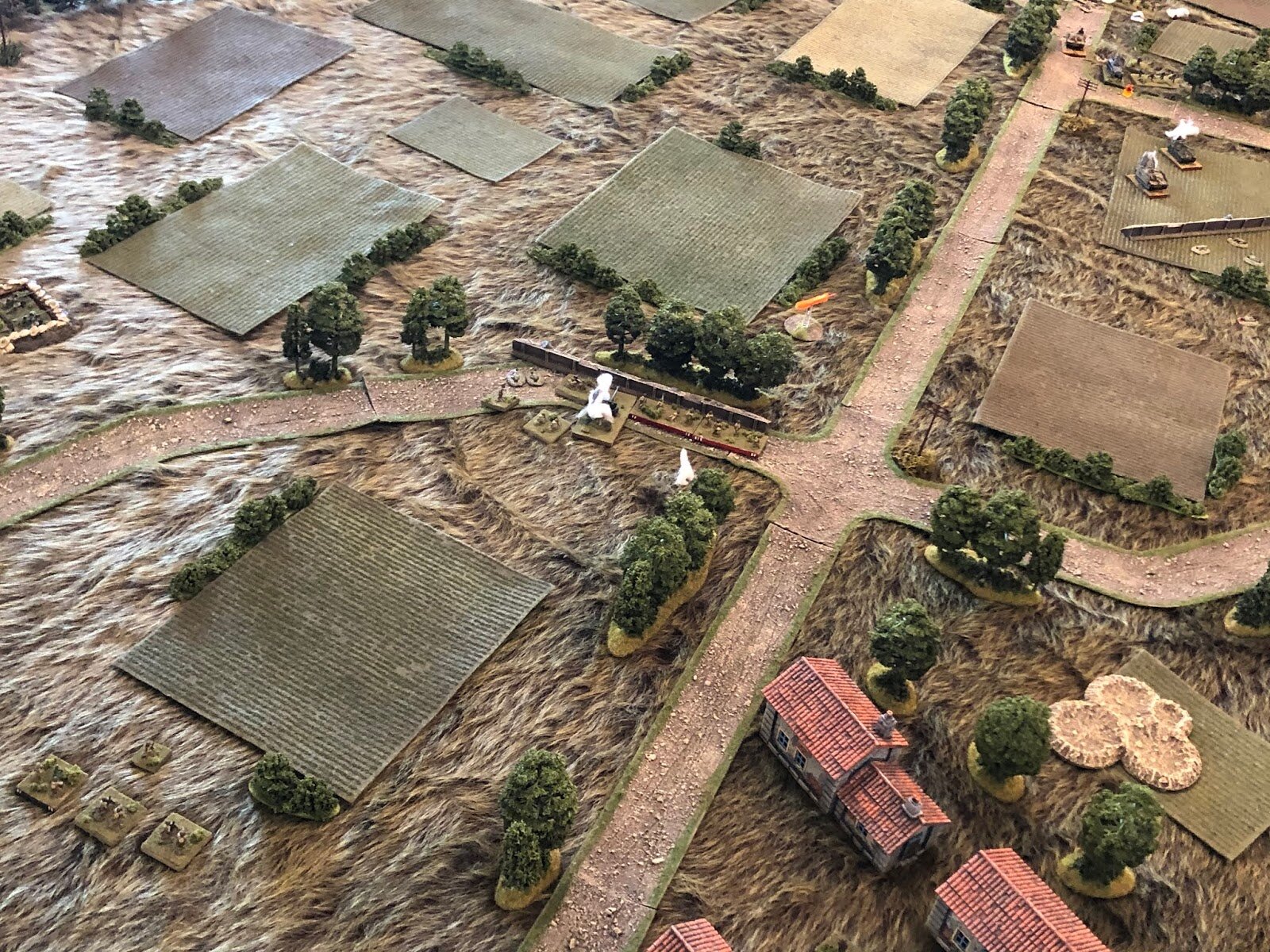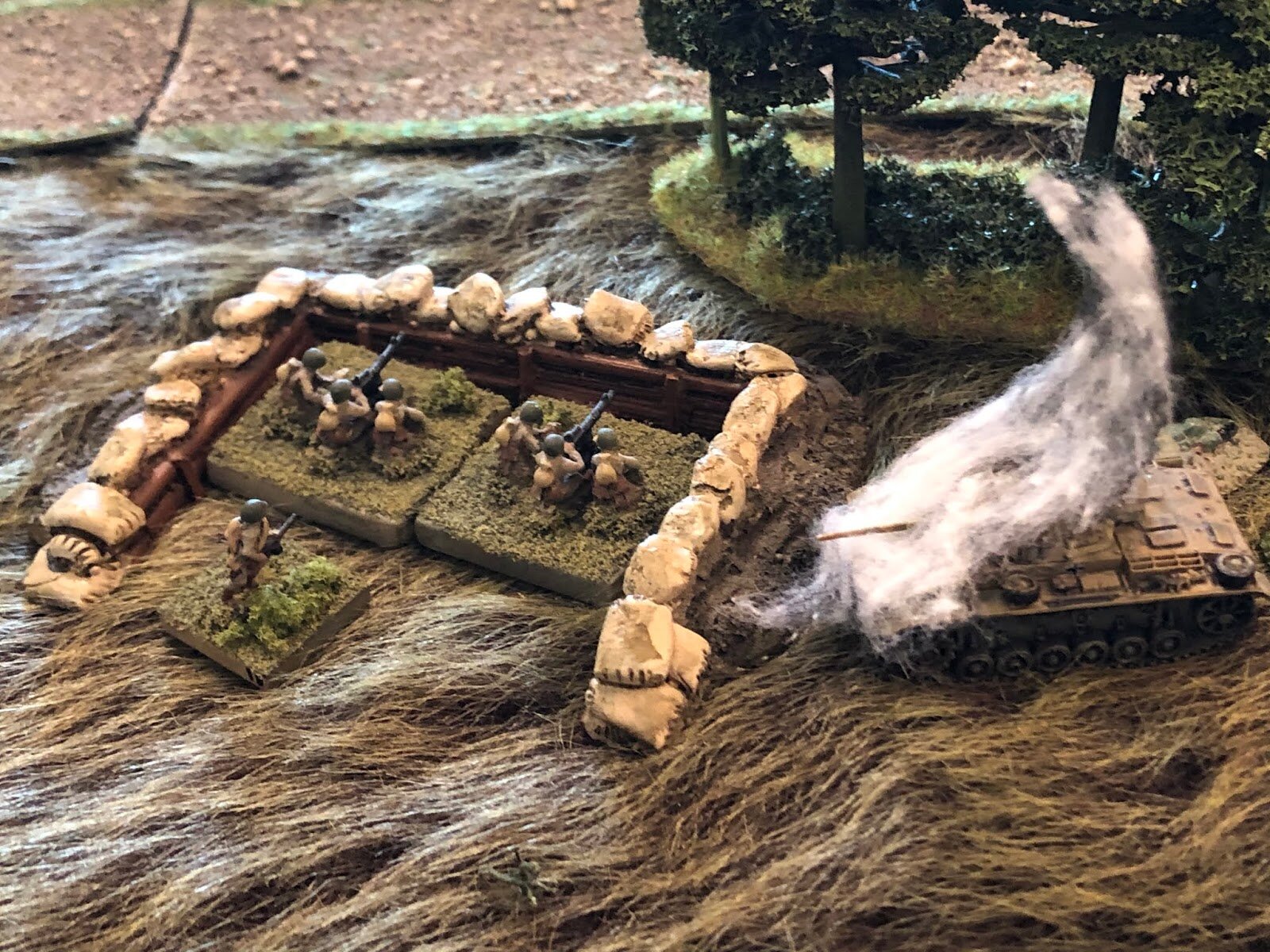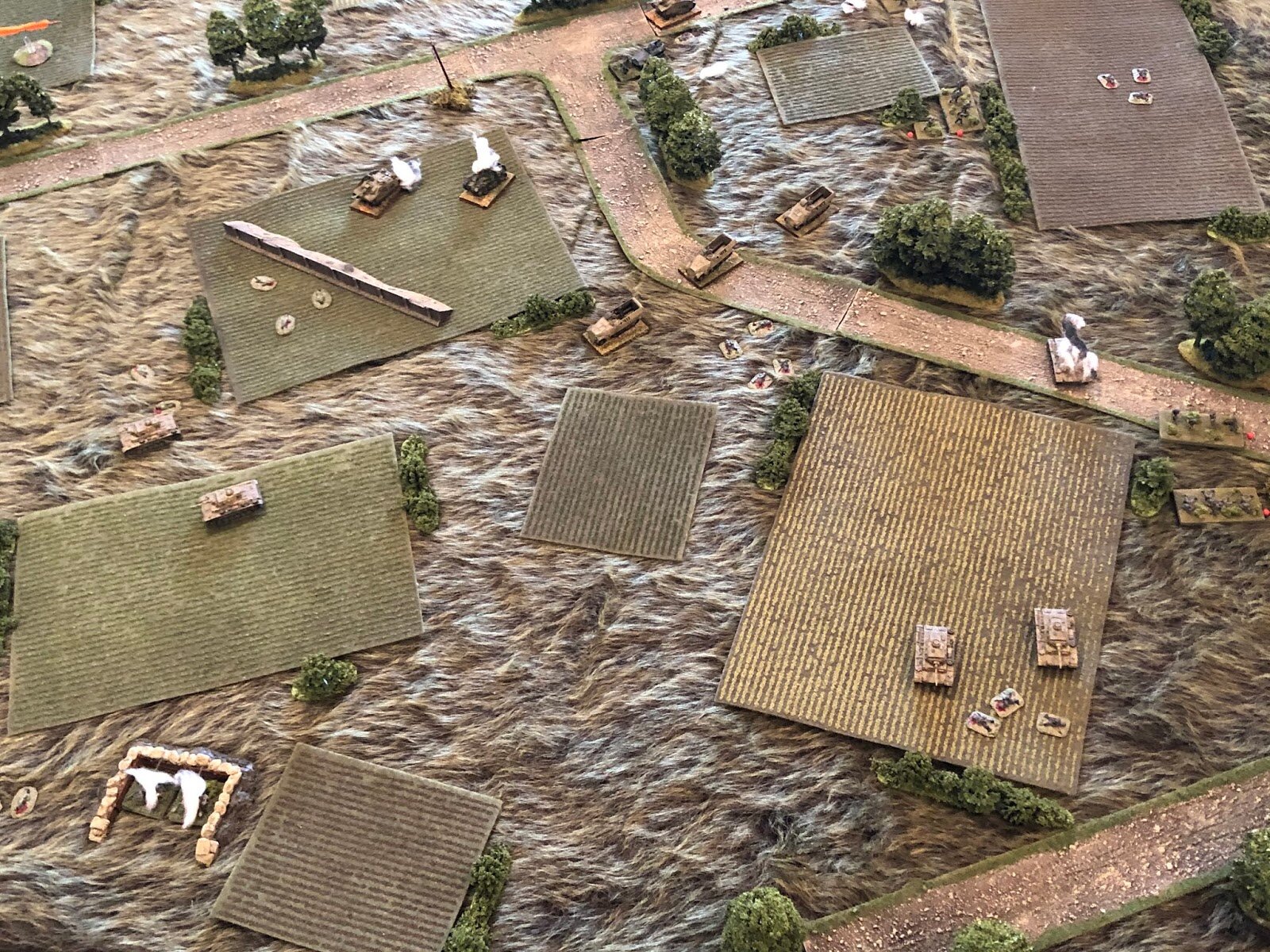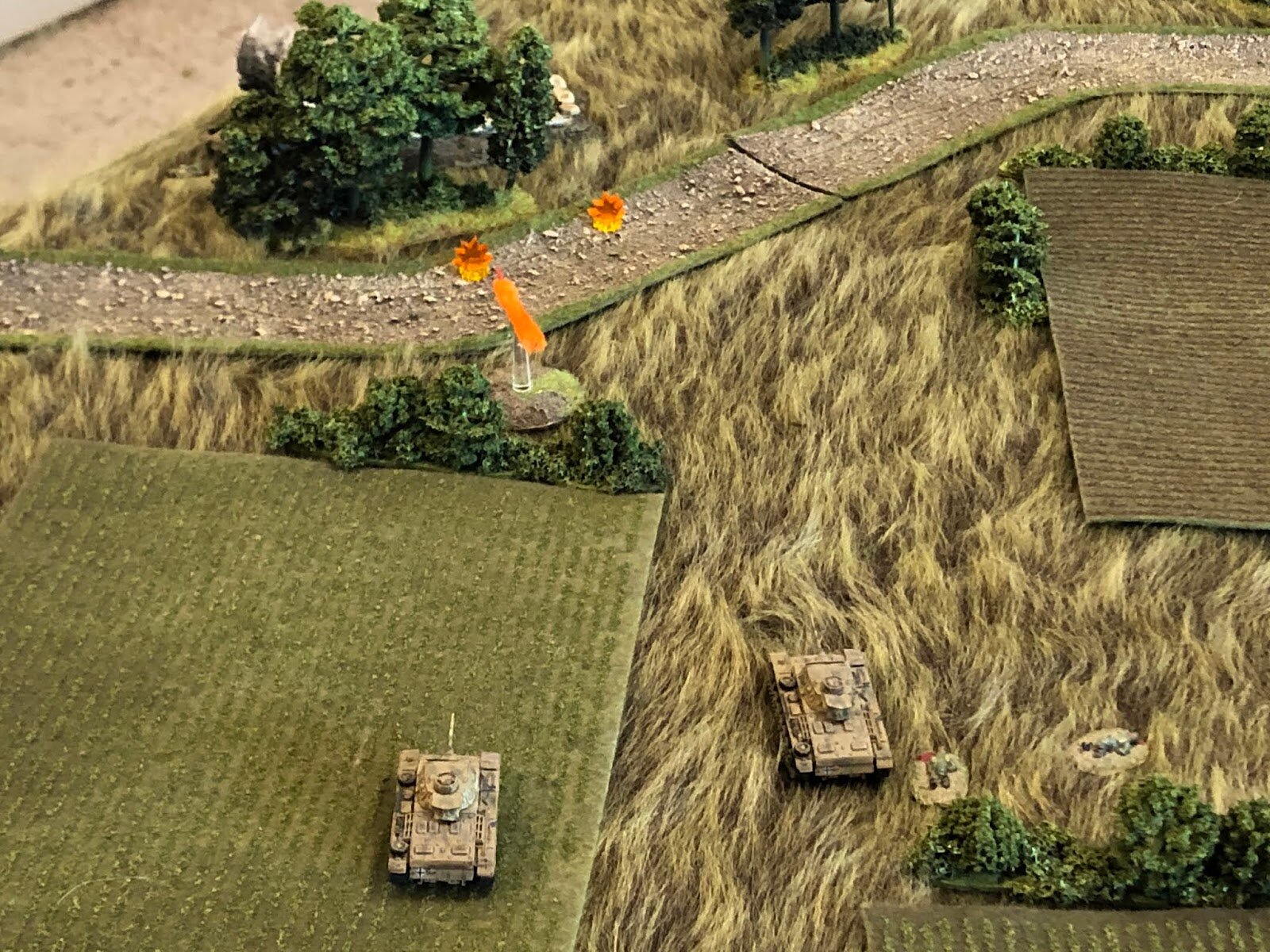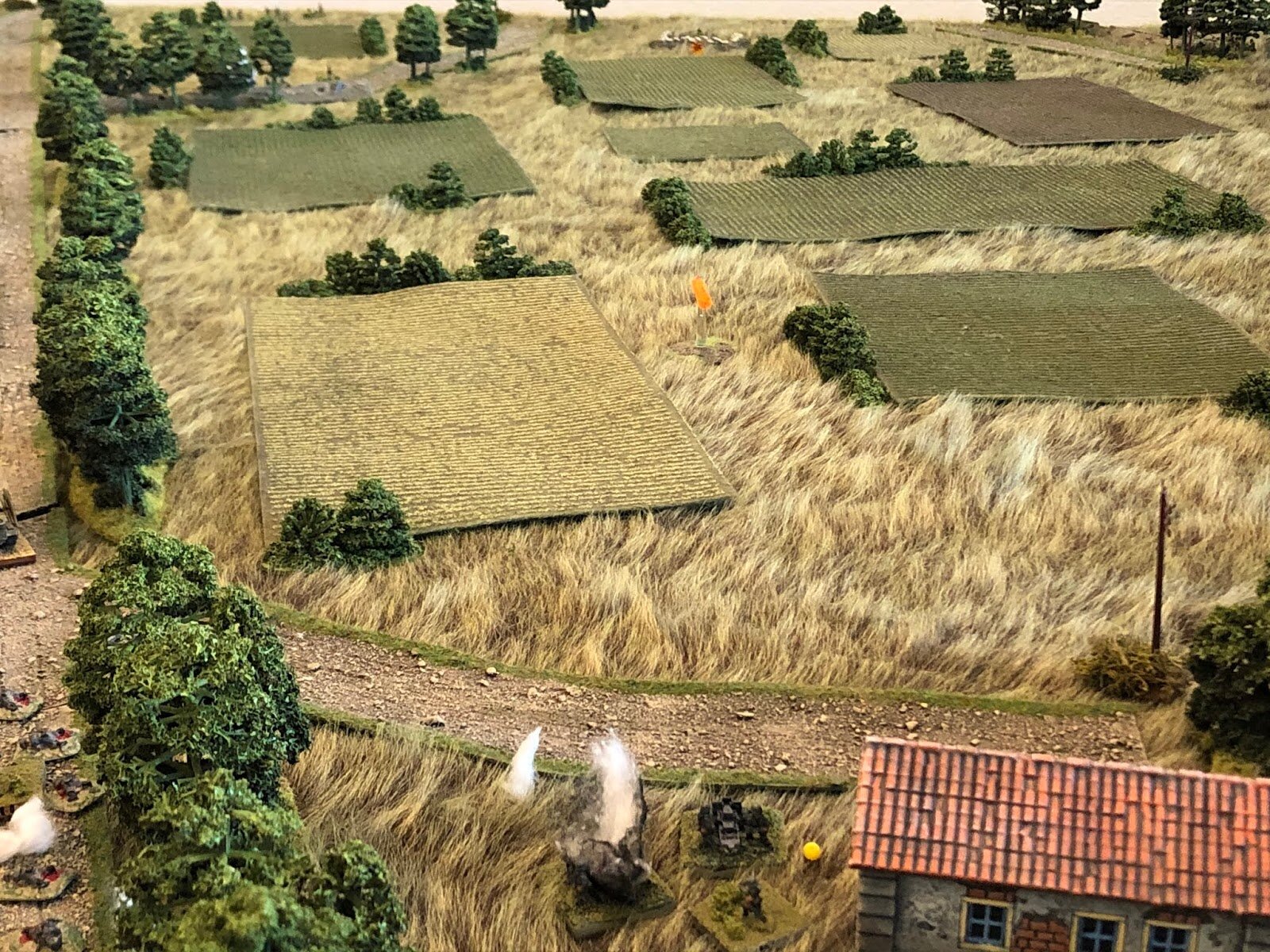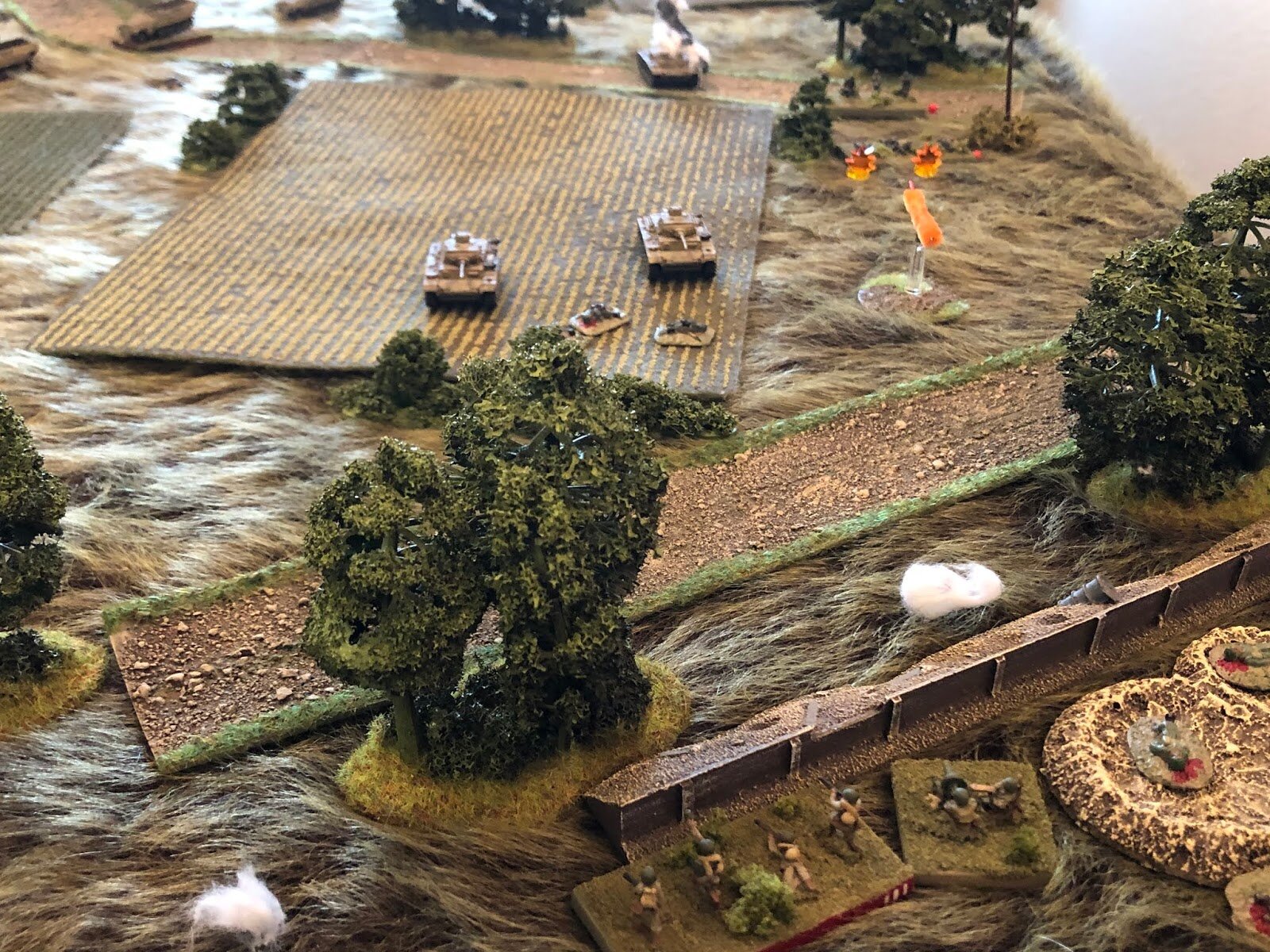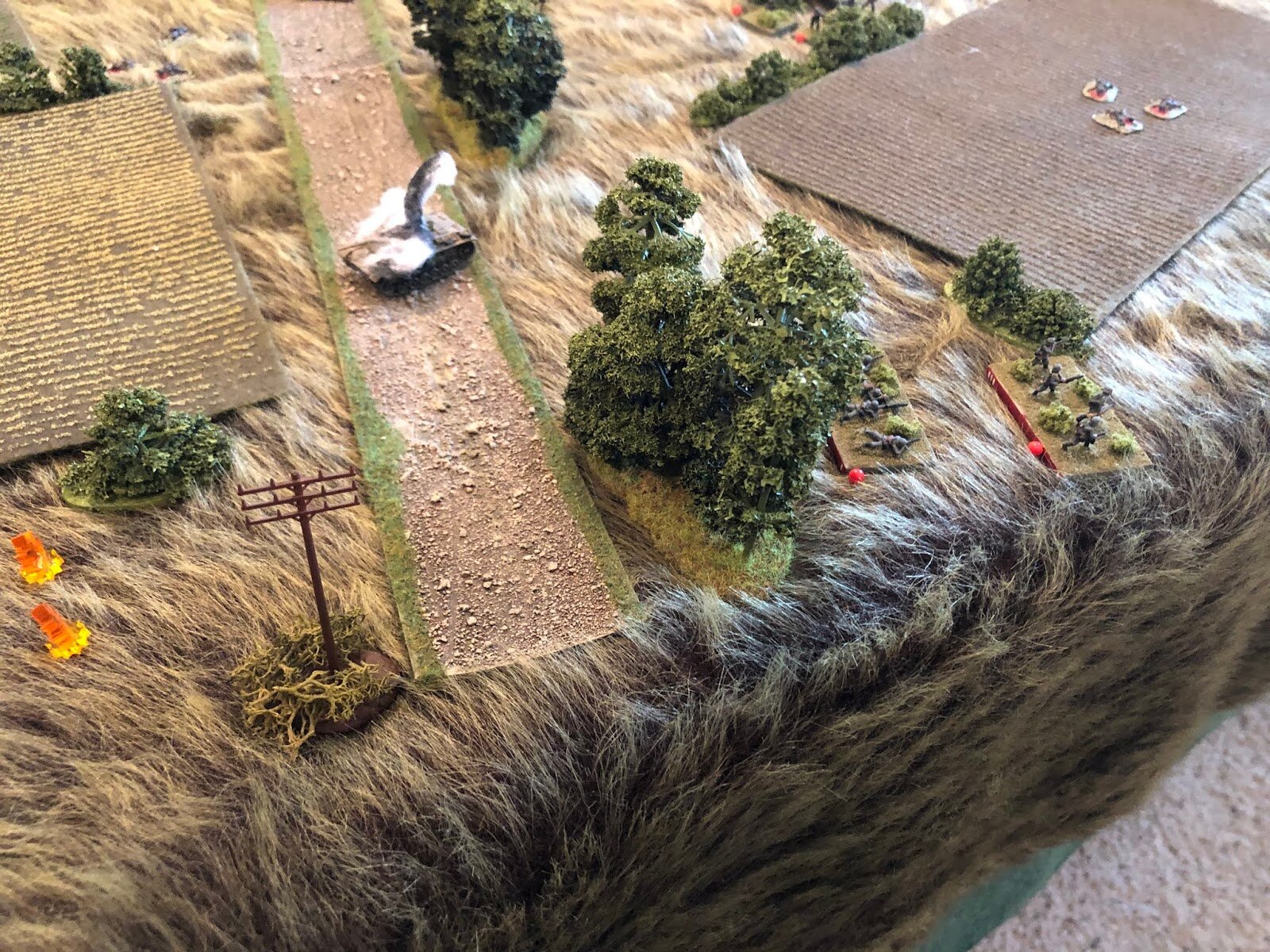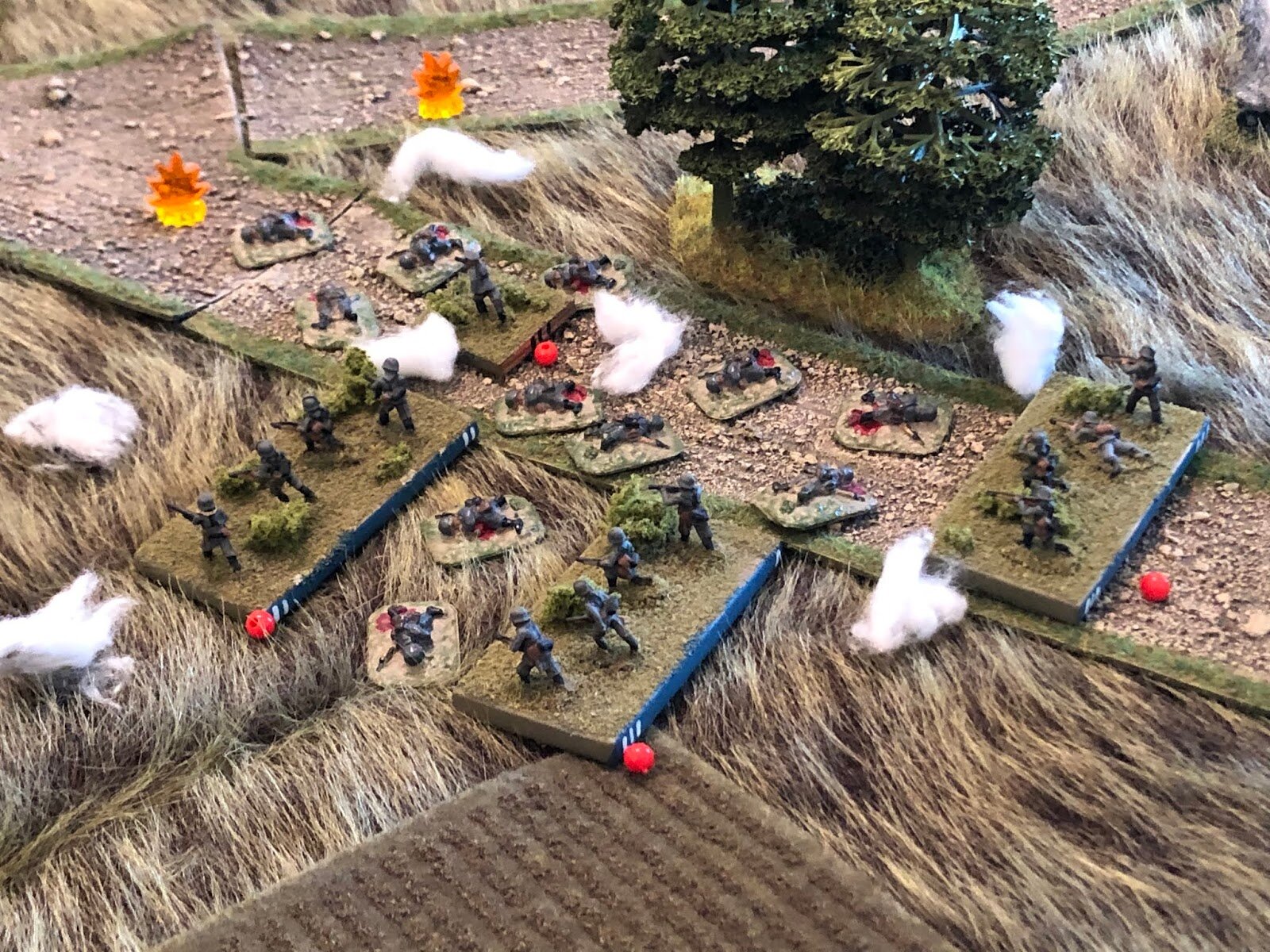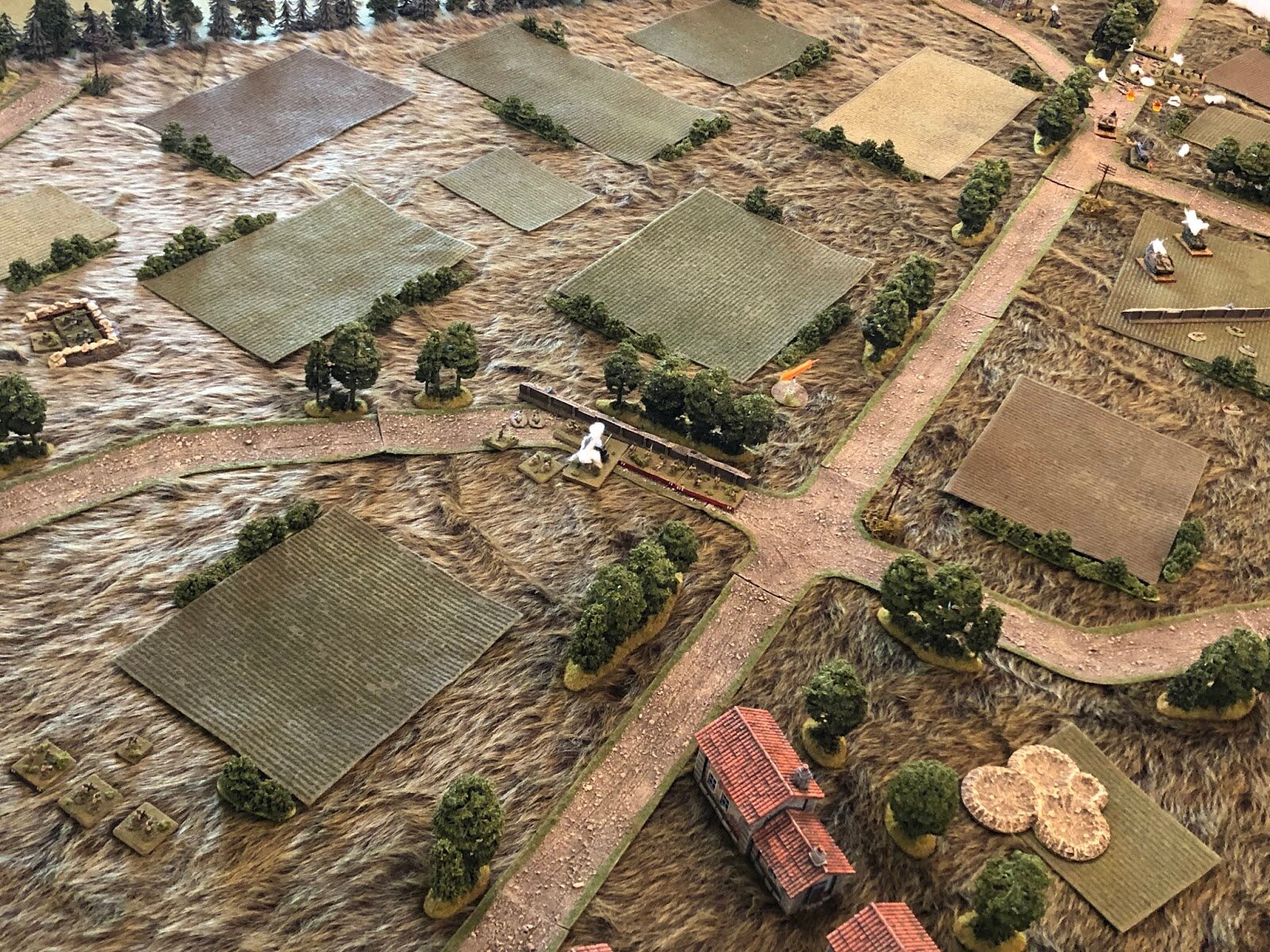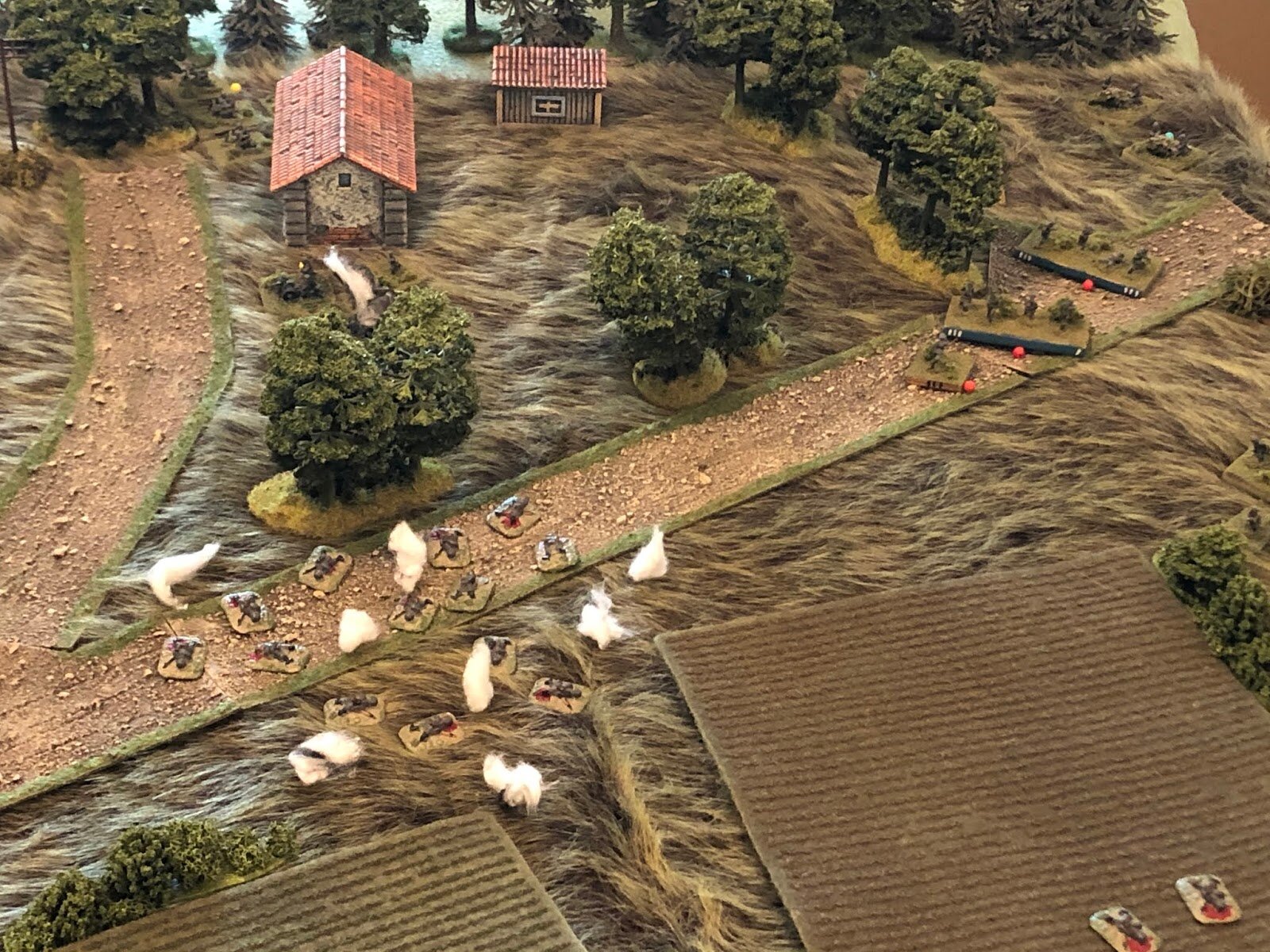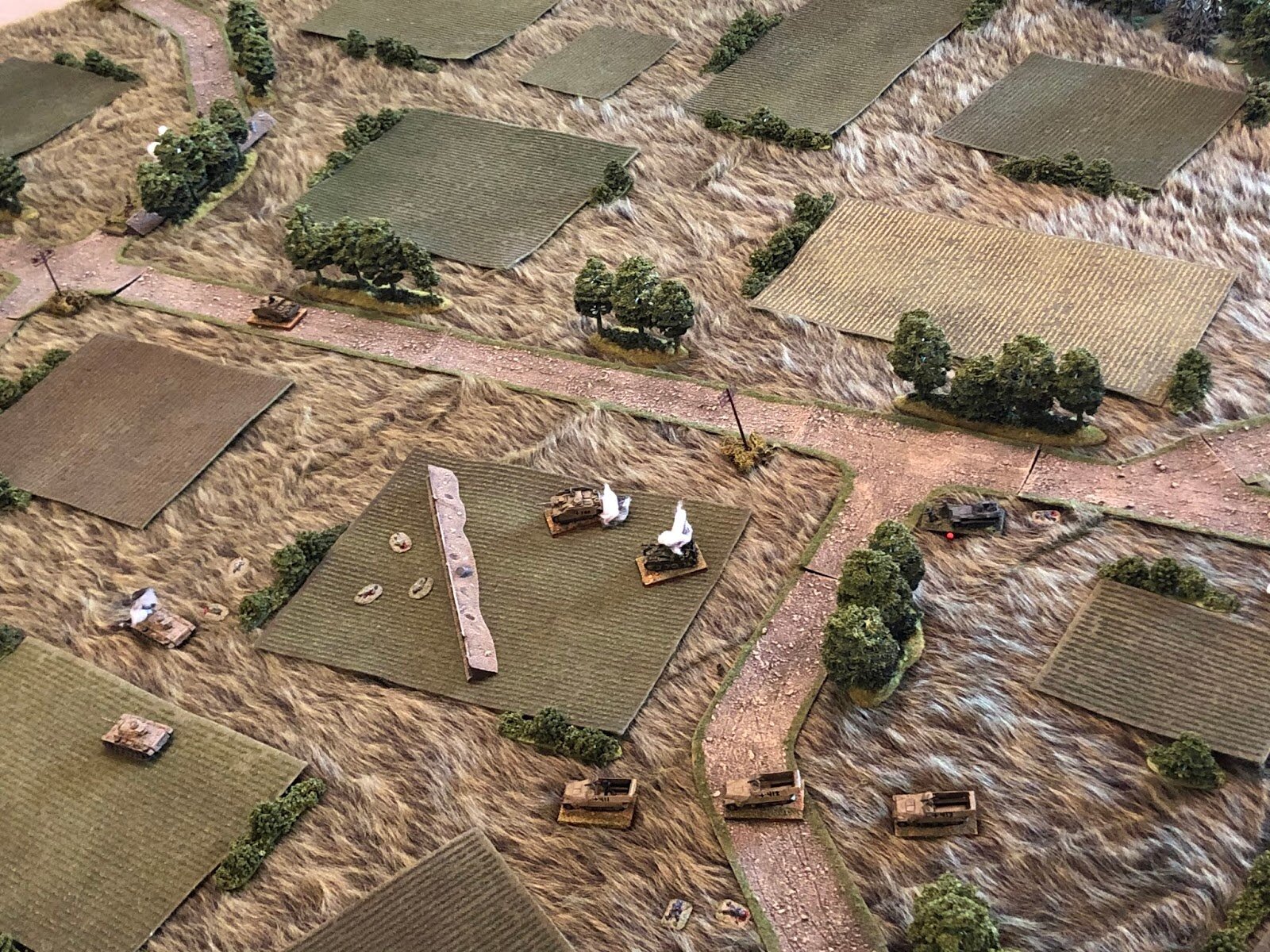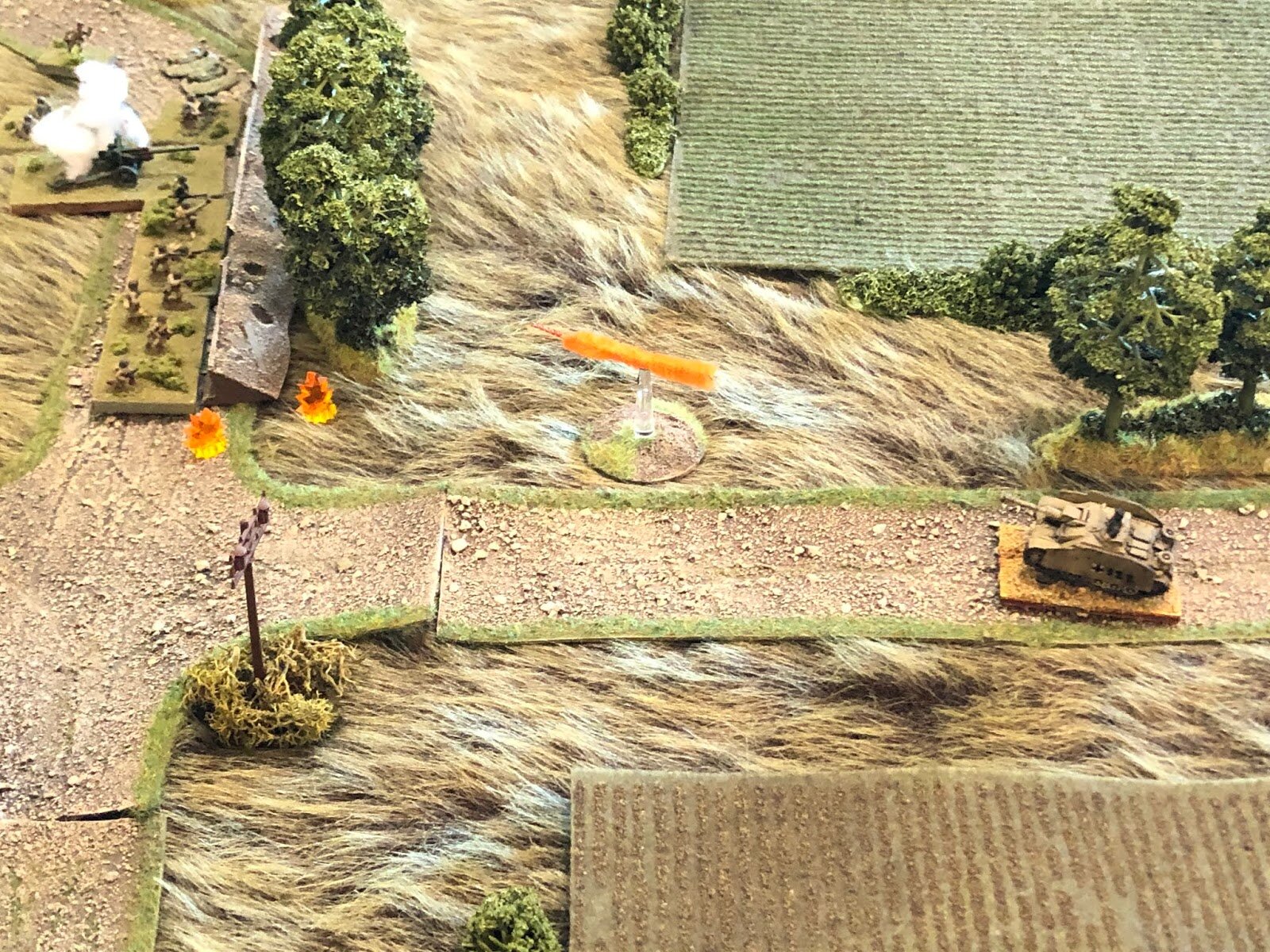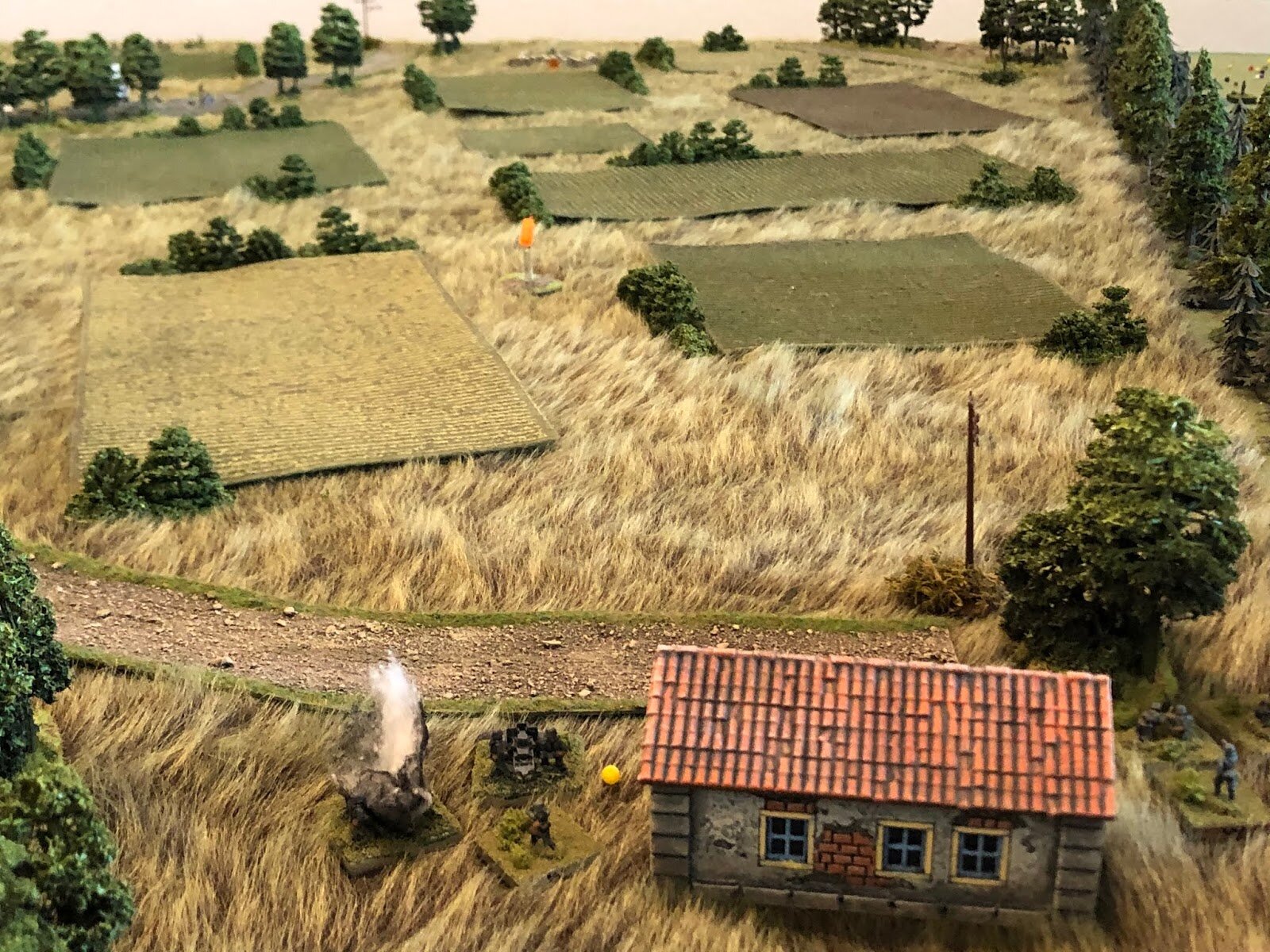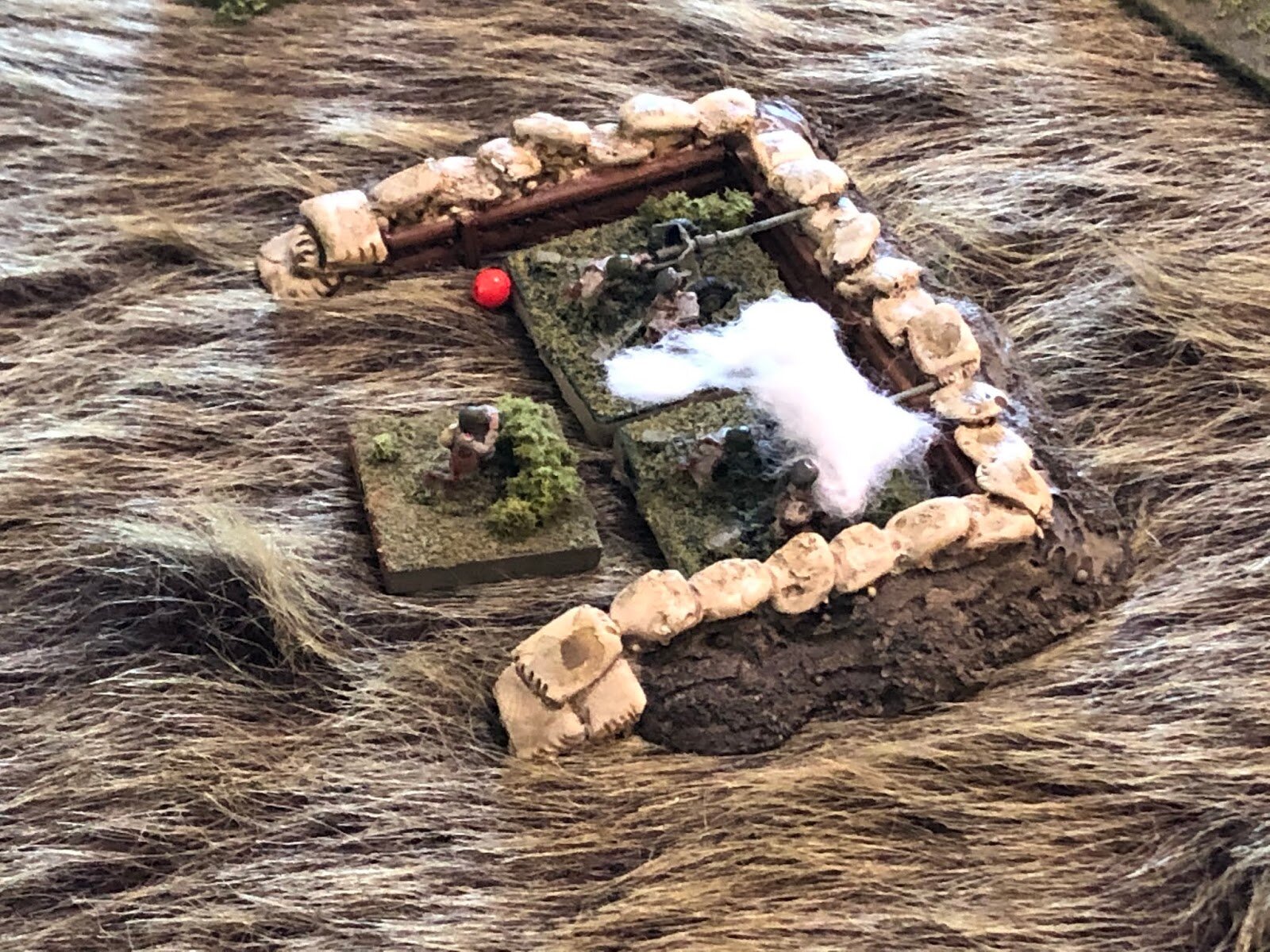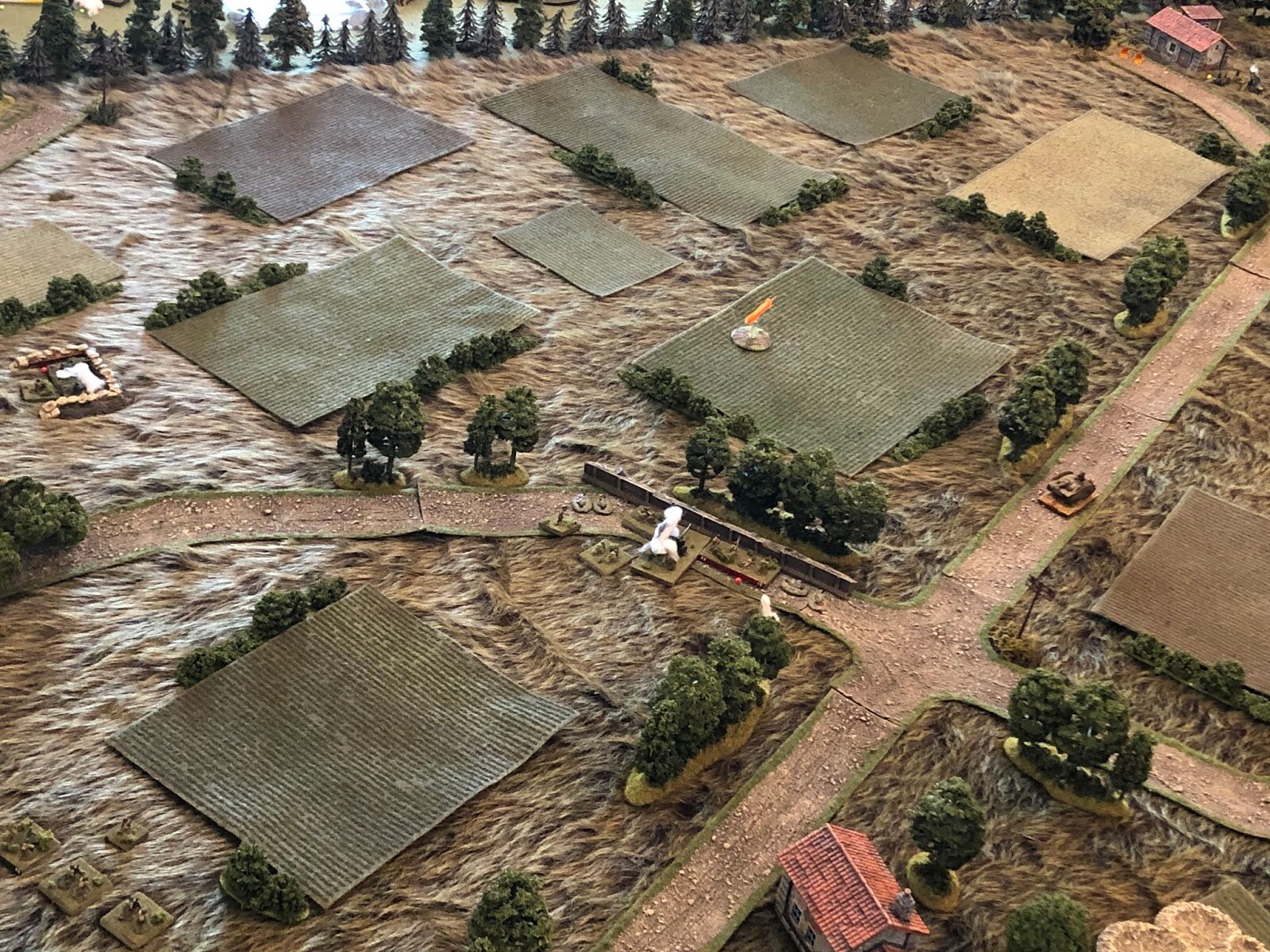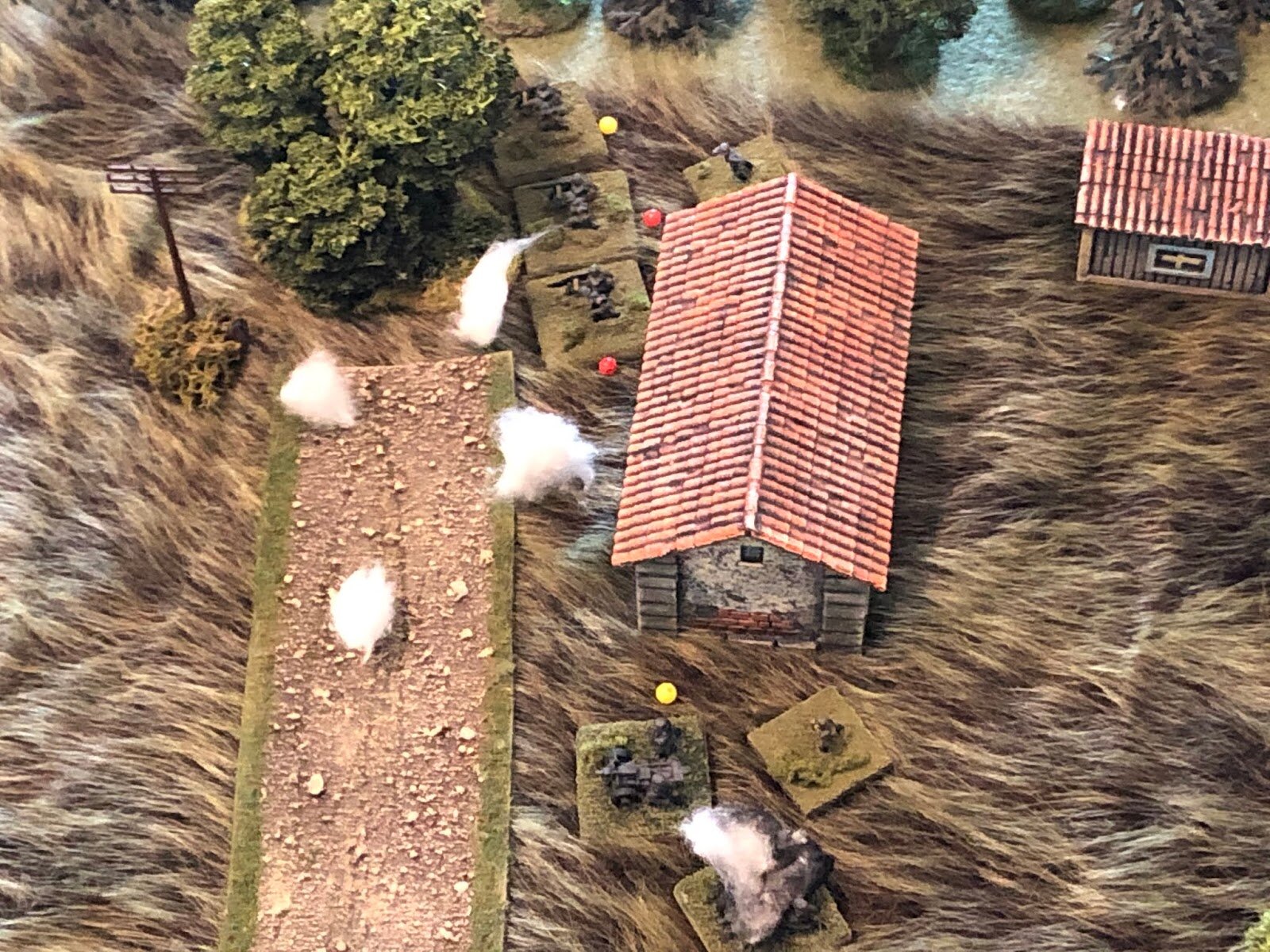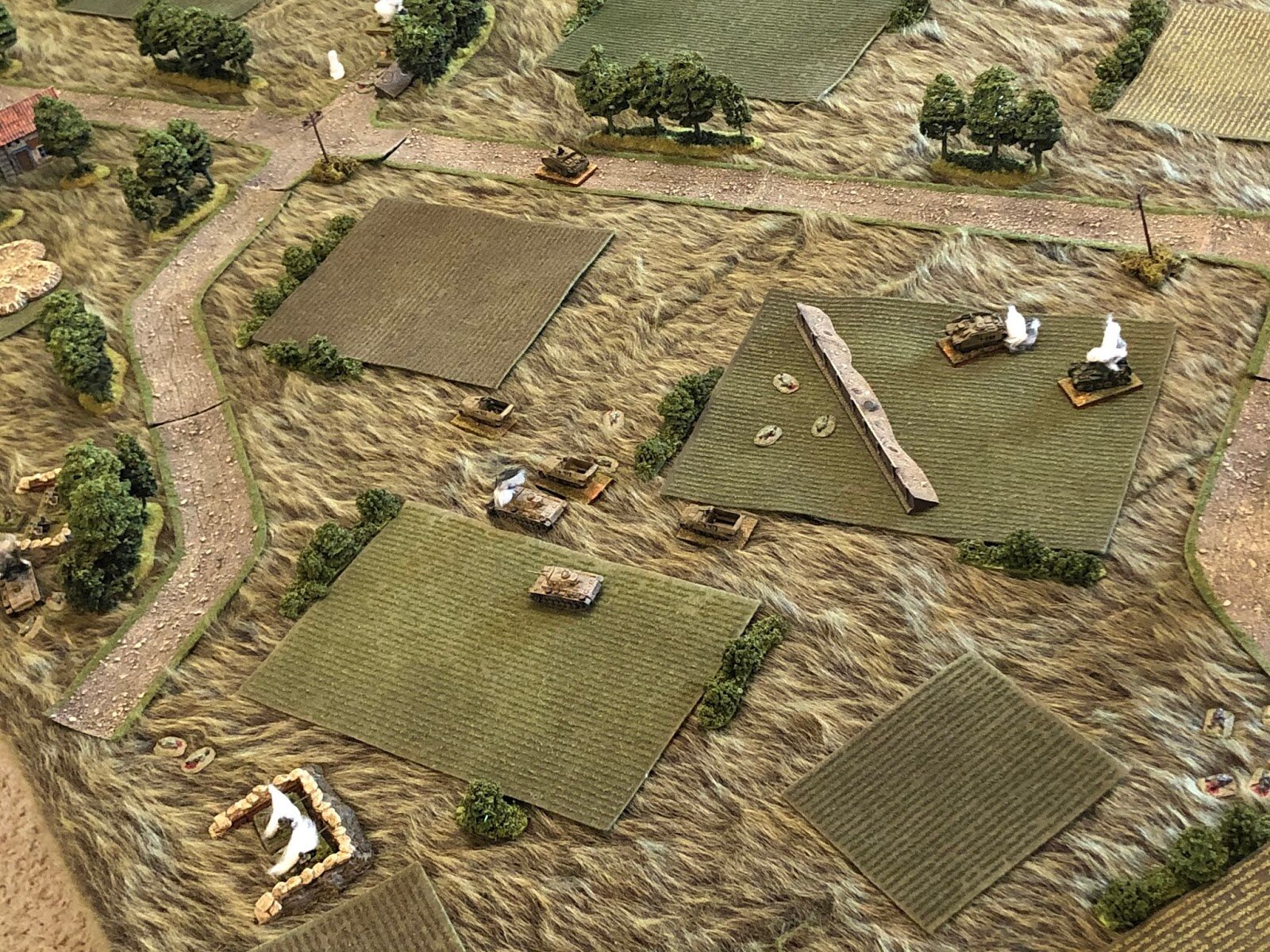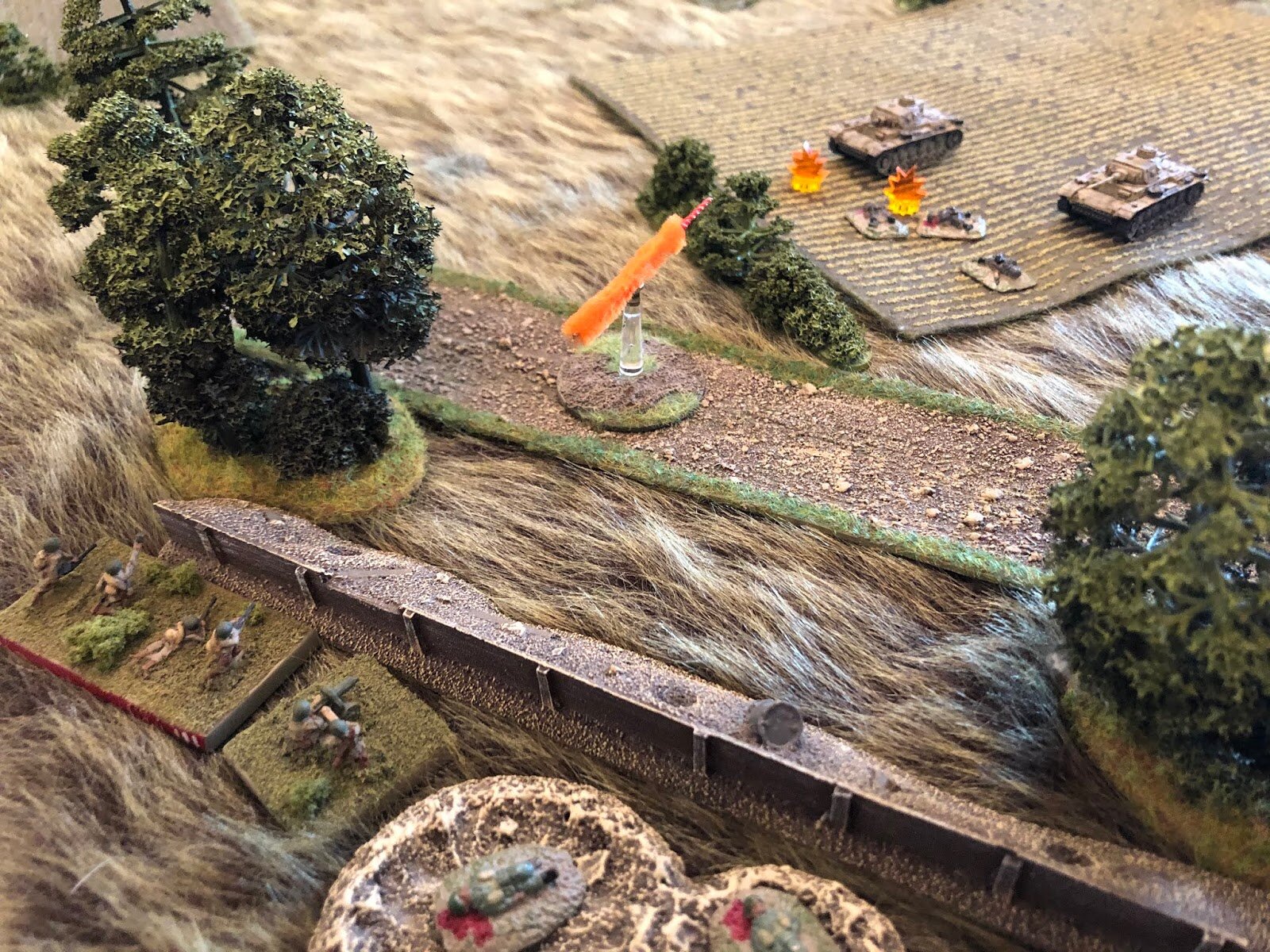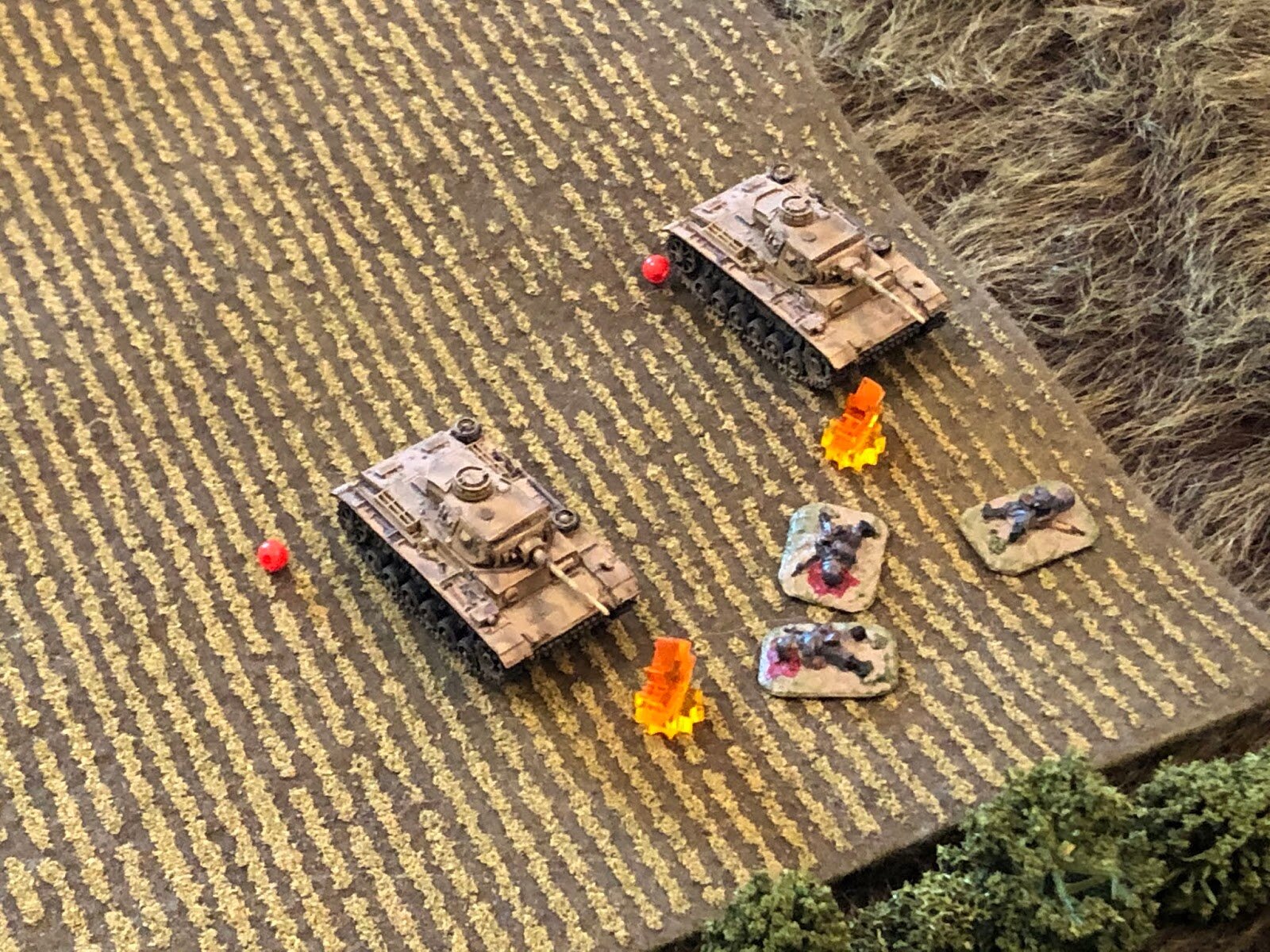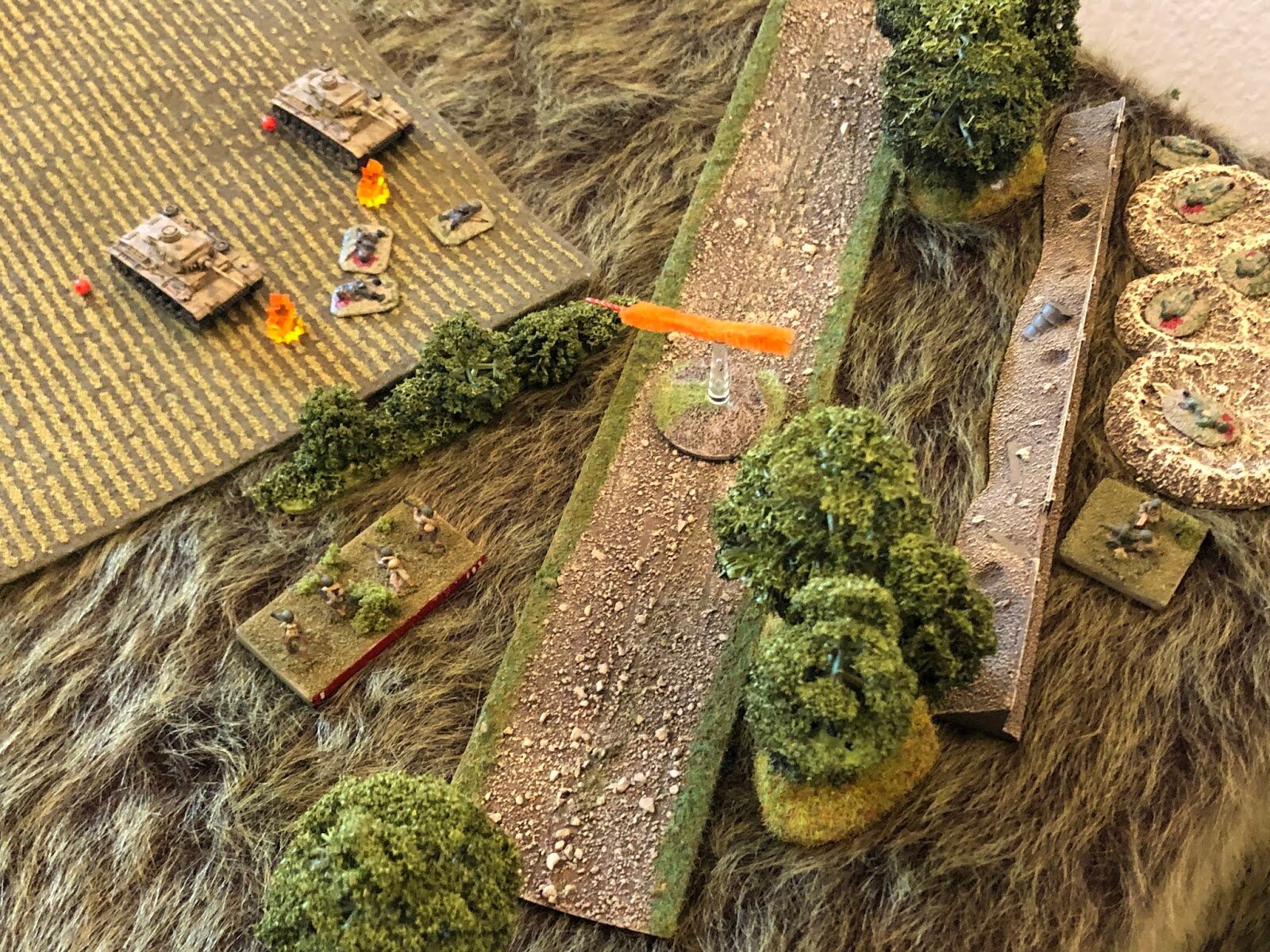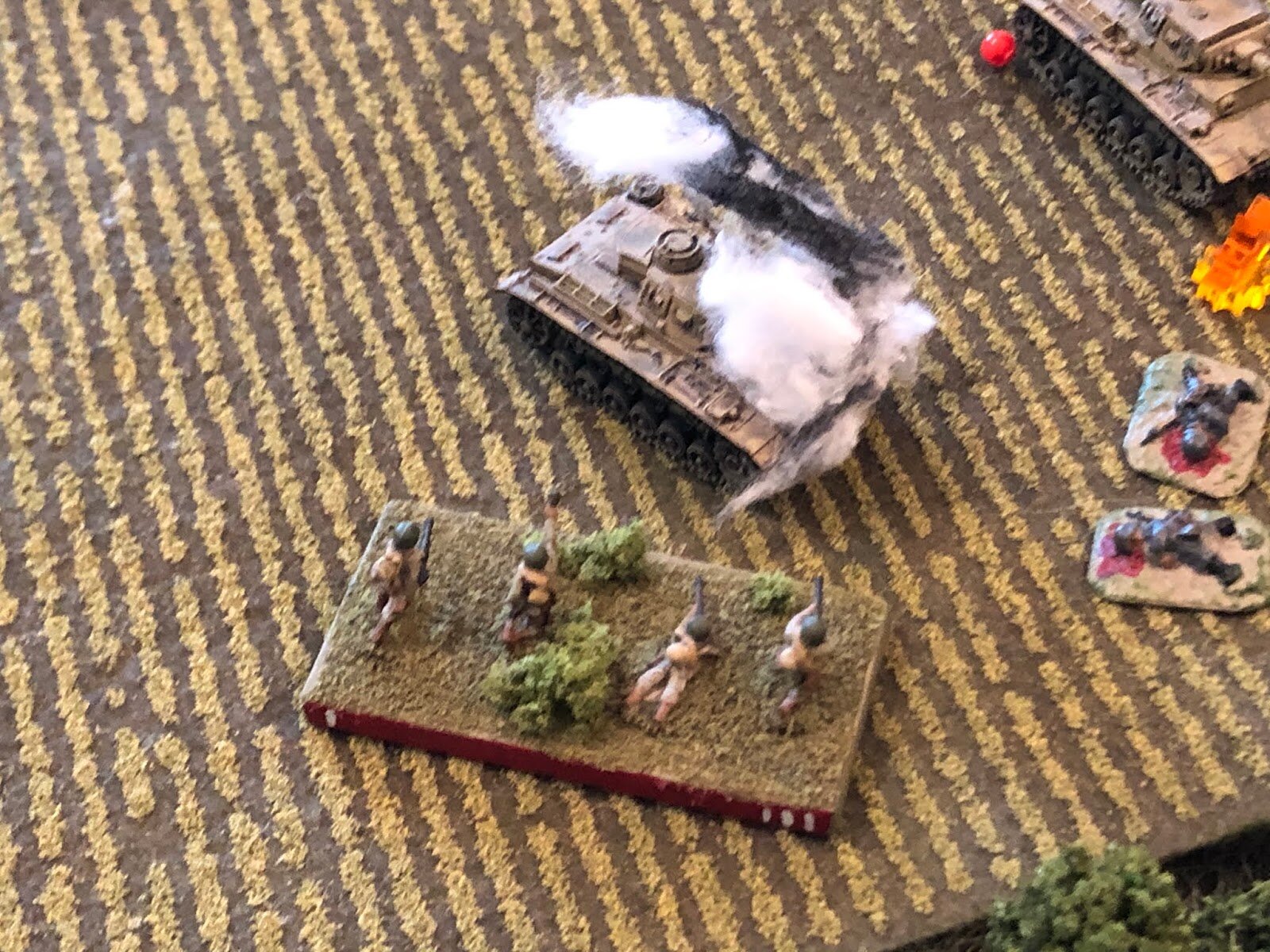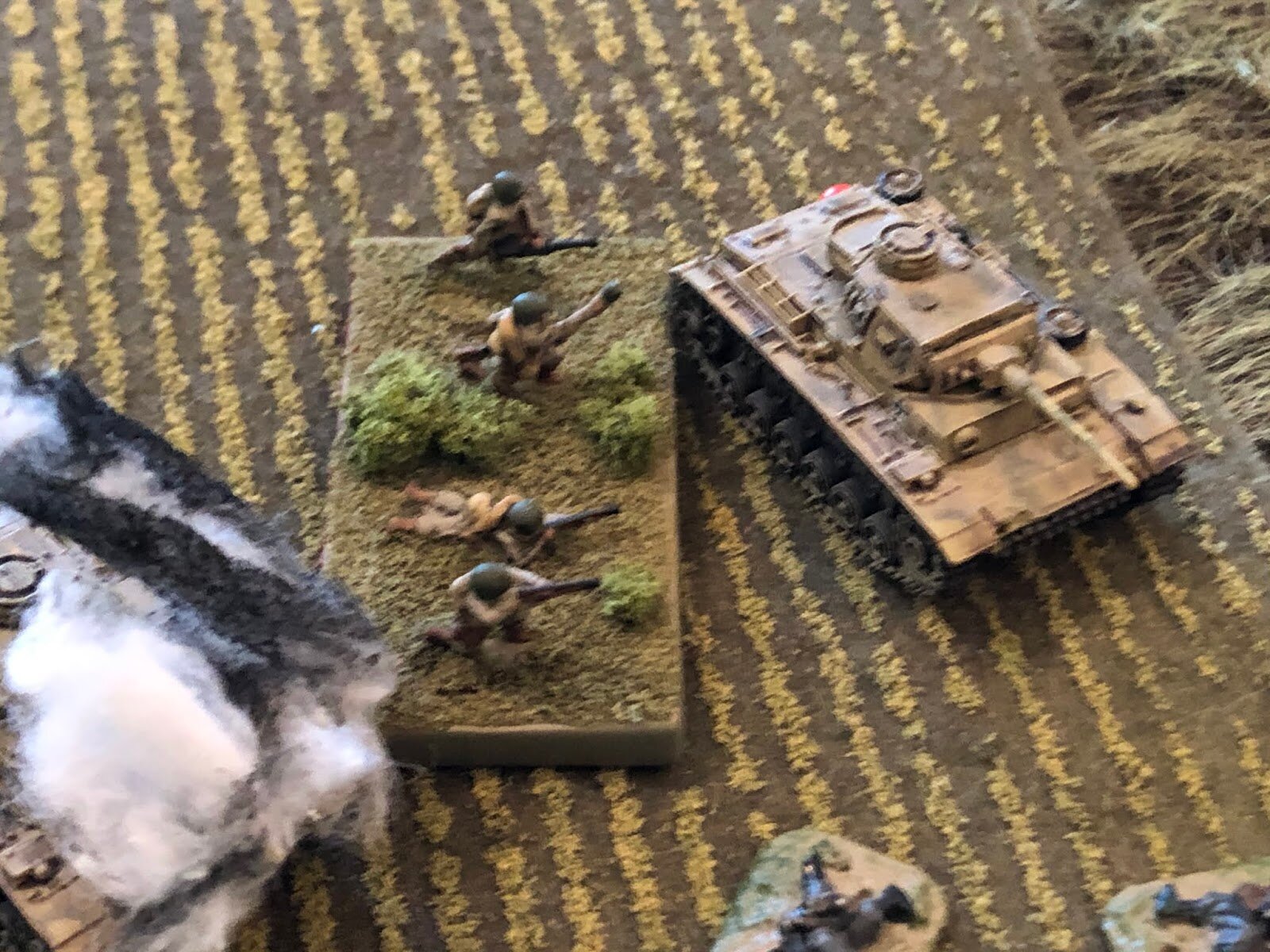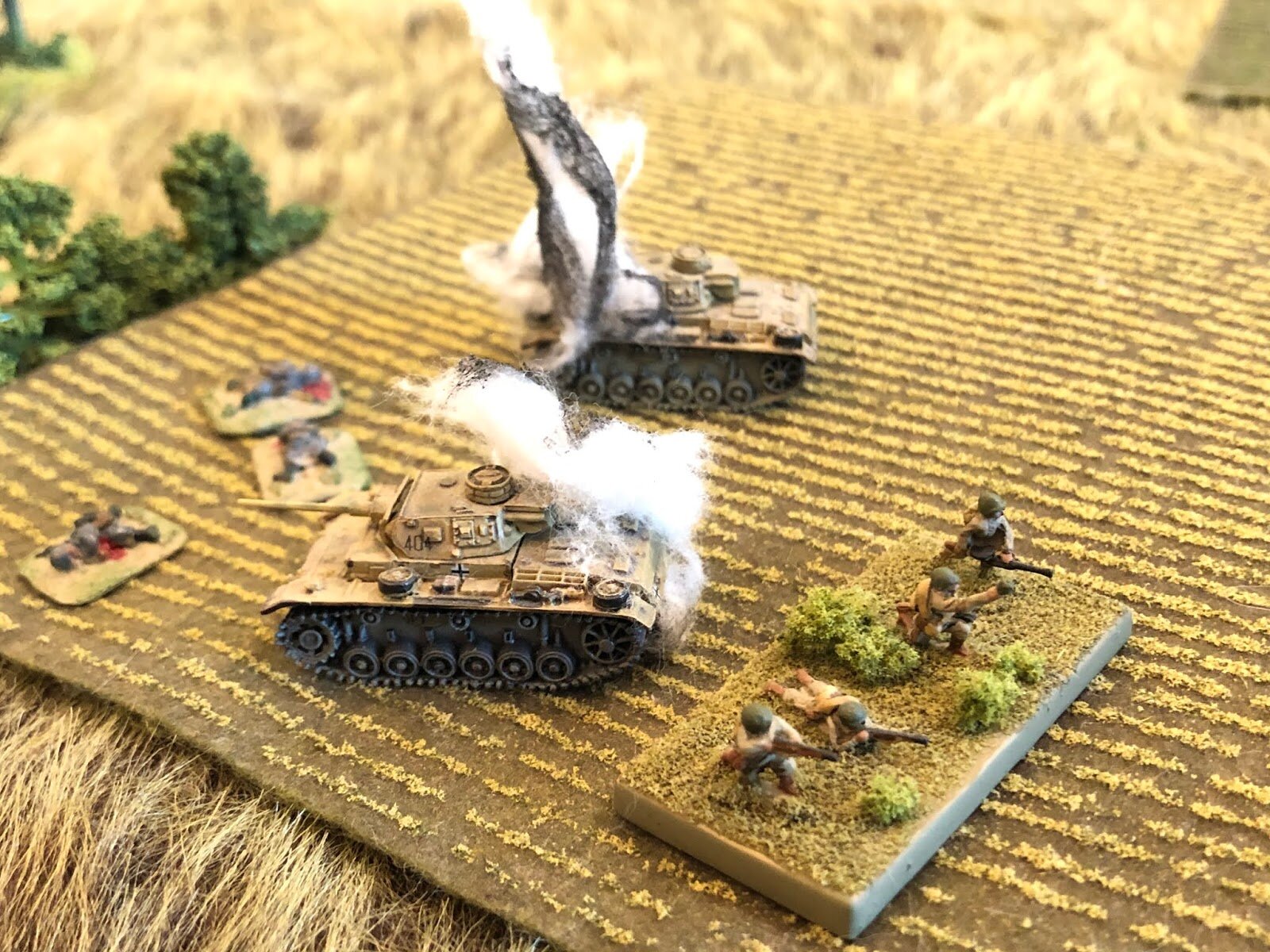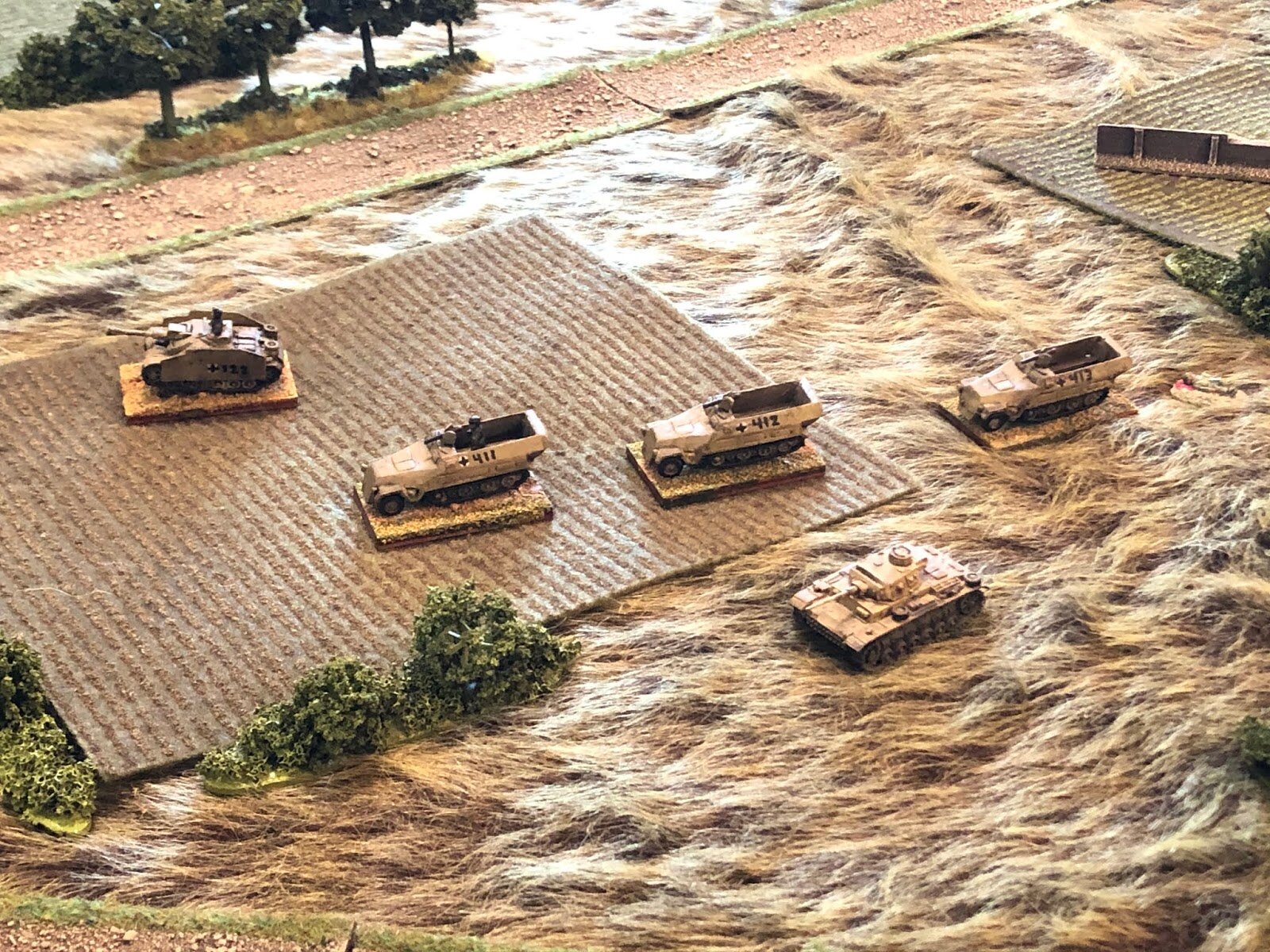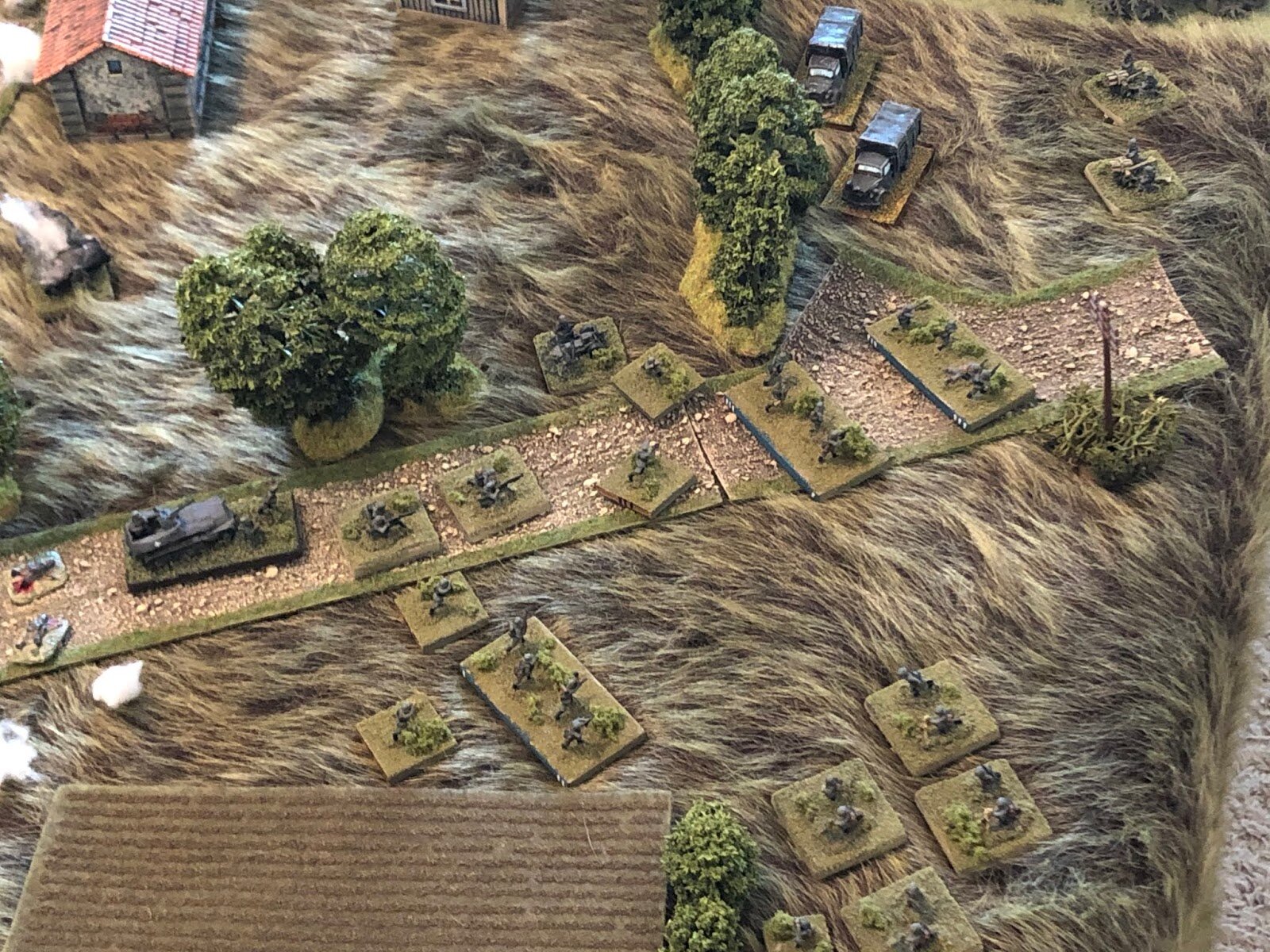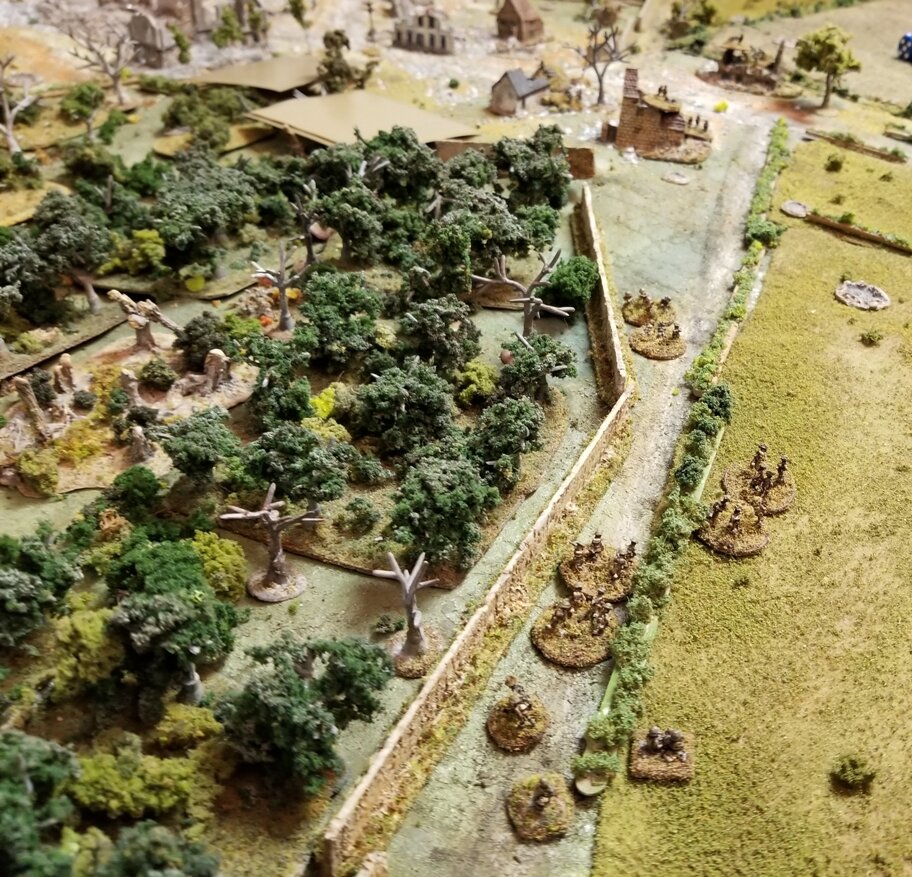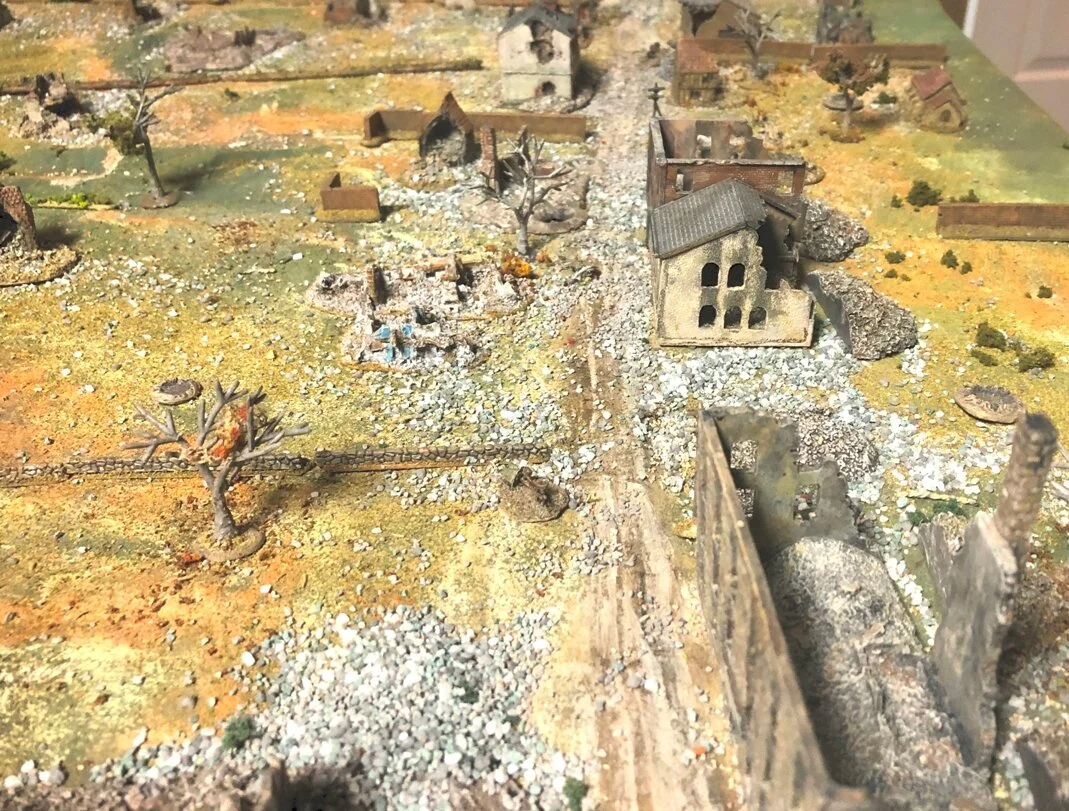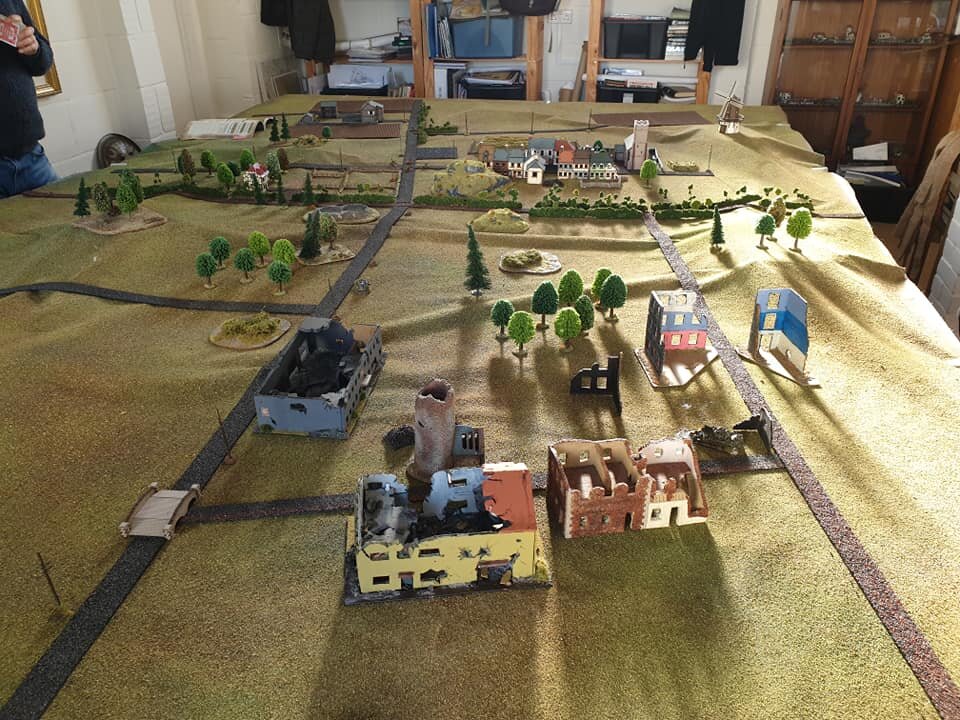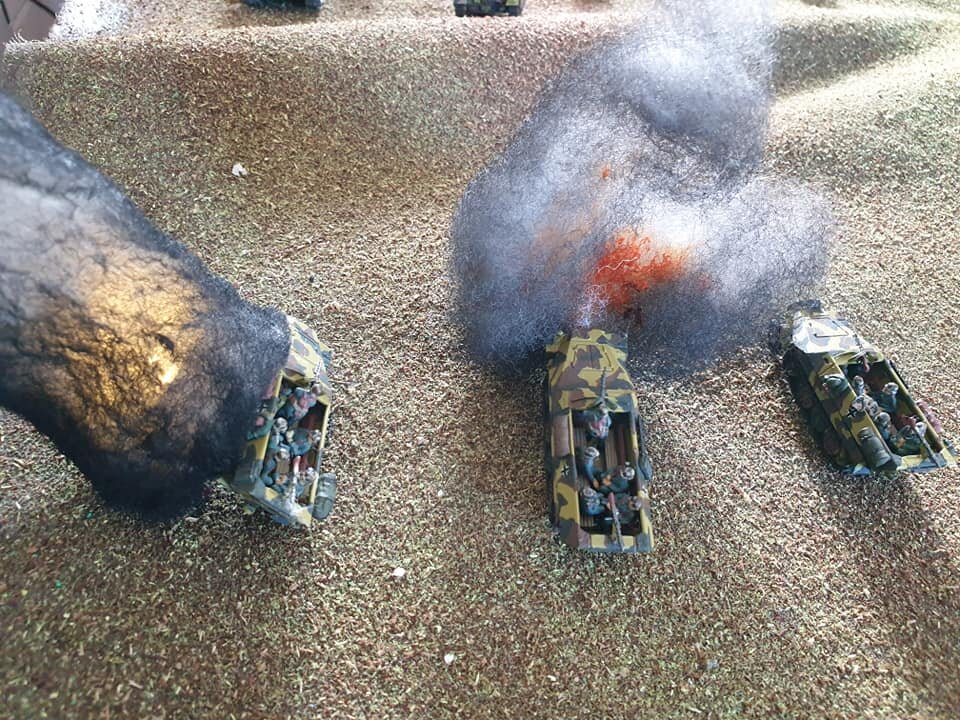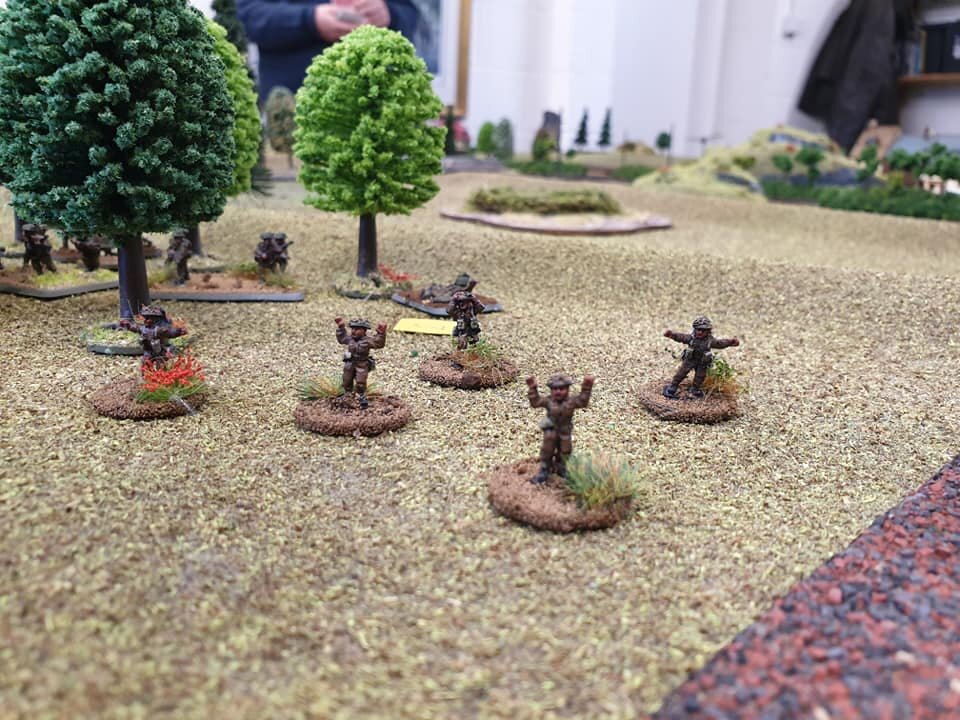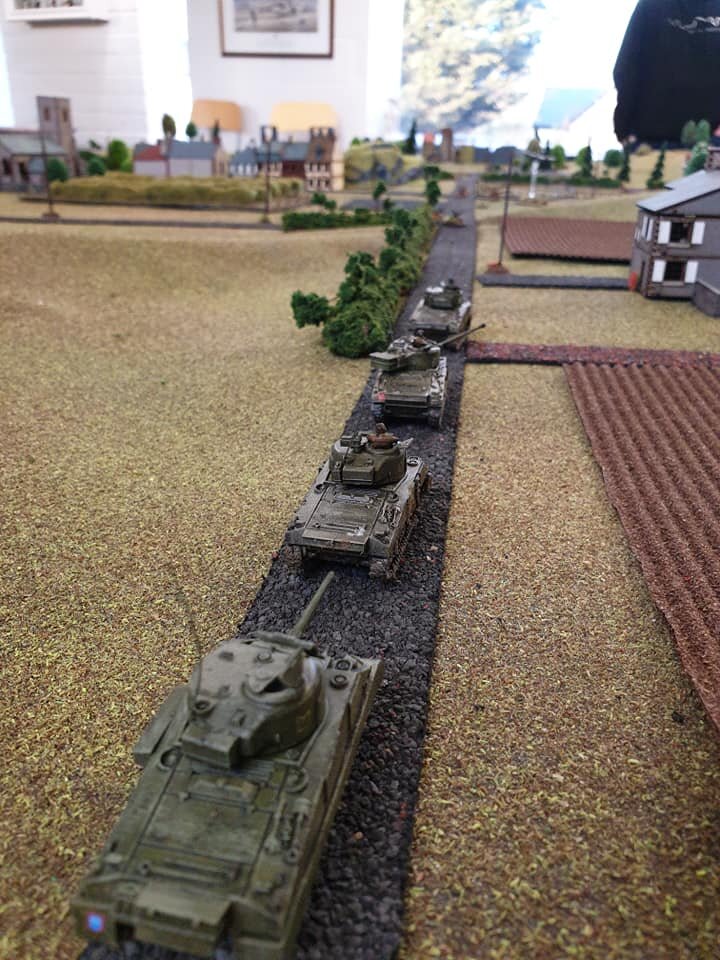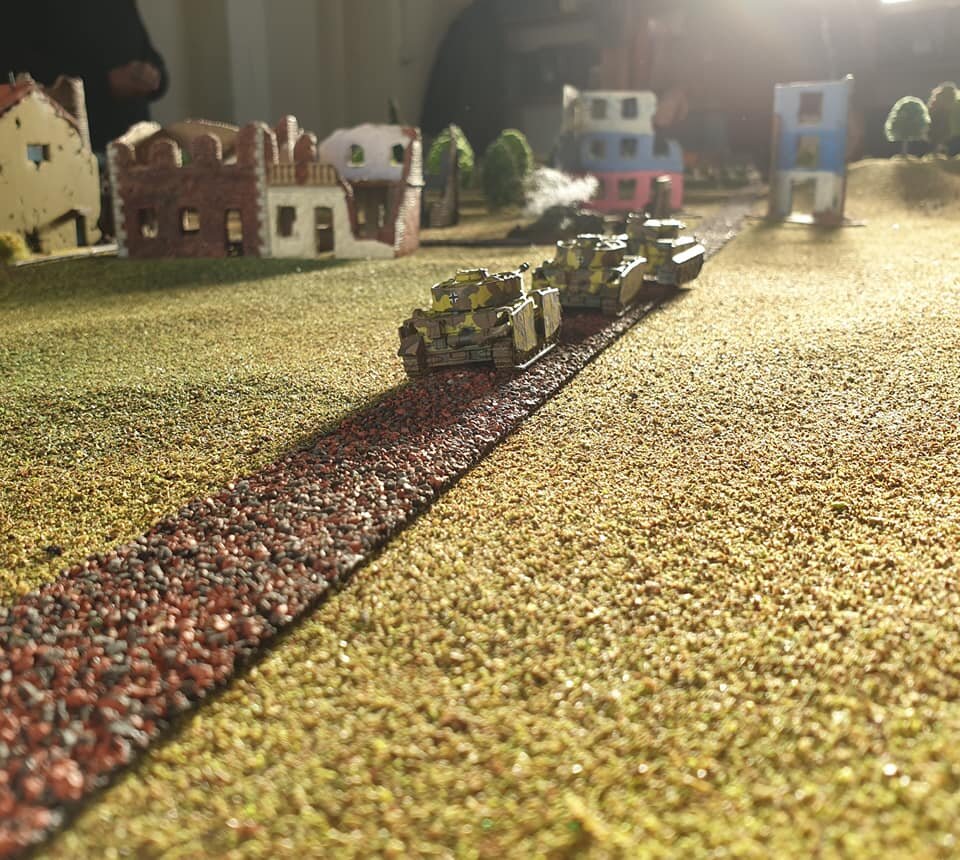
An I Ain't Been Shot Mum 6mm game played at GigaBites Café in Feb 2020.
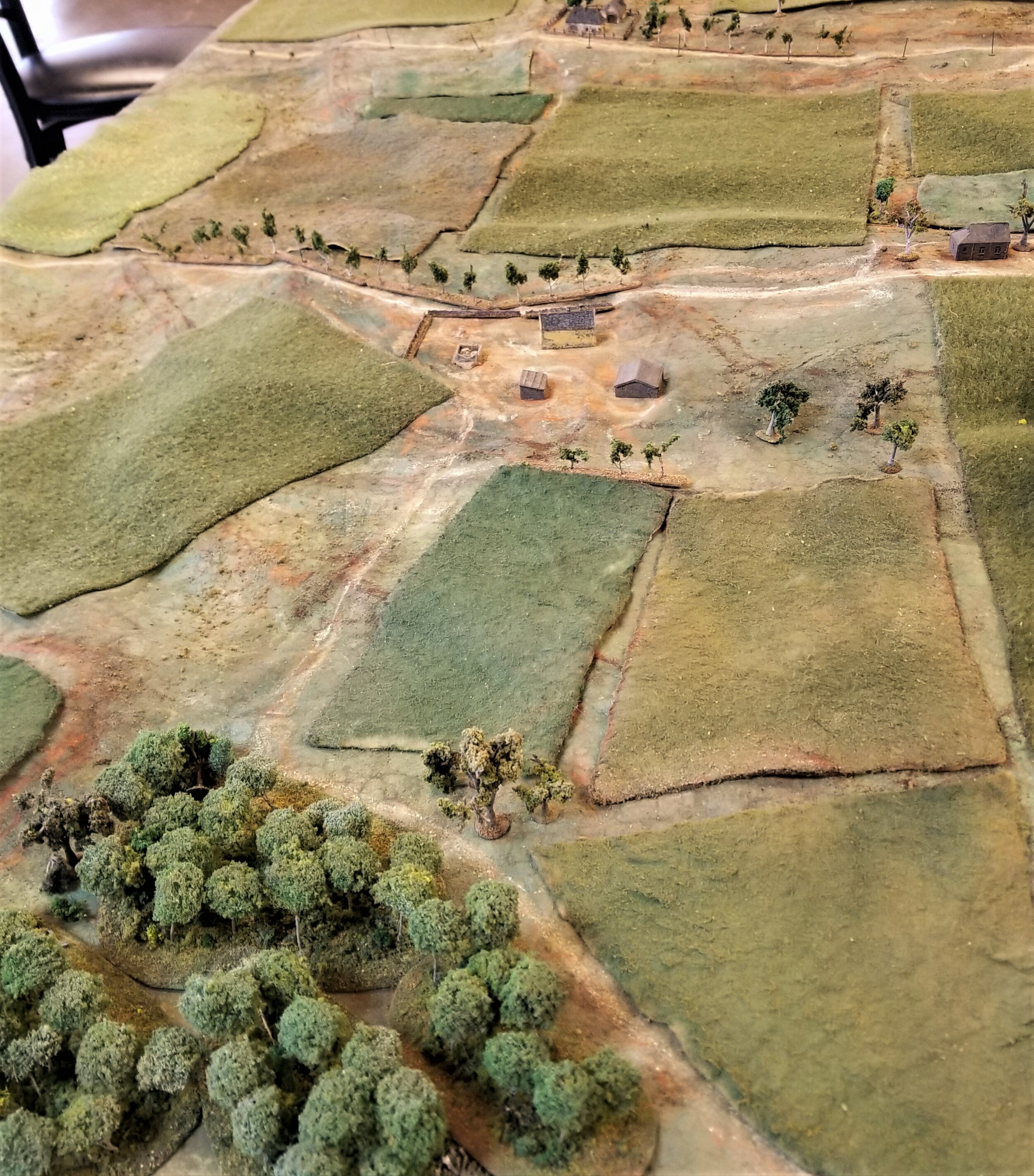
View from the German entry edge
Looking NW towards the rolling terrain east of Bilohorodka. This game is part of the major tank battle around Verba and Dubno. This action is on June 29th, 1941. Parts of the 16th Pz Div's II Abt, 2 Pz Rgt and of II Abt 64 Schutzen Rgt are heading west and northwest to encircle the Soviet 34th Tank Div.
The table has 2 ridge lines with scattered farm buildings and fields with low crops.
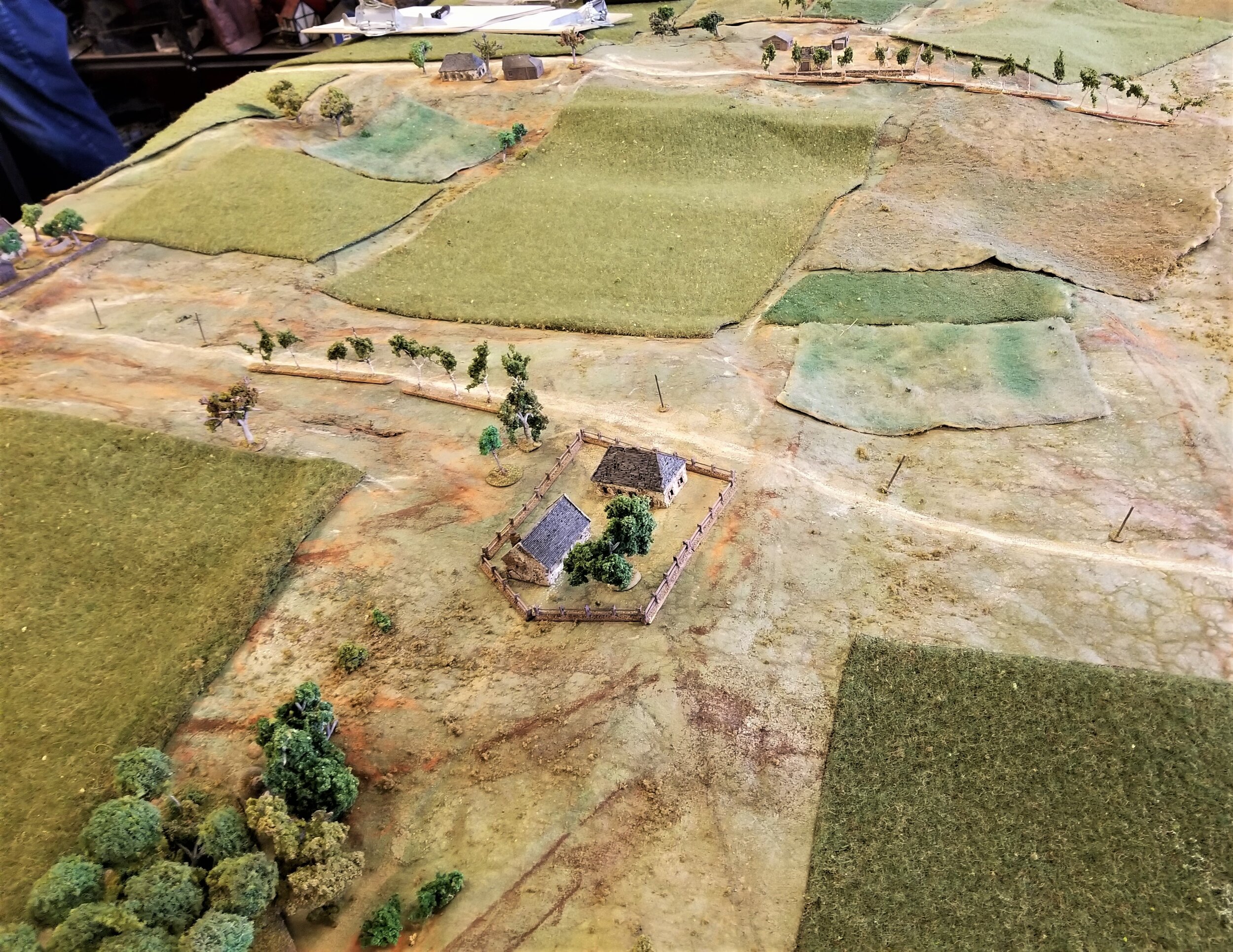
View from the Soviet player edge
The Russian player (me) had the option of digging in their infantry- a company of 3 platoons, each of 3, 10 man sections, 3 MMG teams (only 3 men ea), 3, 50mm Mortars. I elected to do this along the slightly higher ridge closer to this edge. Armor support would come in after the 2nd 'Turn' card. It consisted of 7 T34 Model 1940s, and 2 smoke break later, 4 KV1 model 1940s. Since I had no ATRs or ATGs, the tanks would be the anti-panzers force.
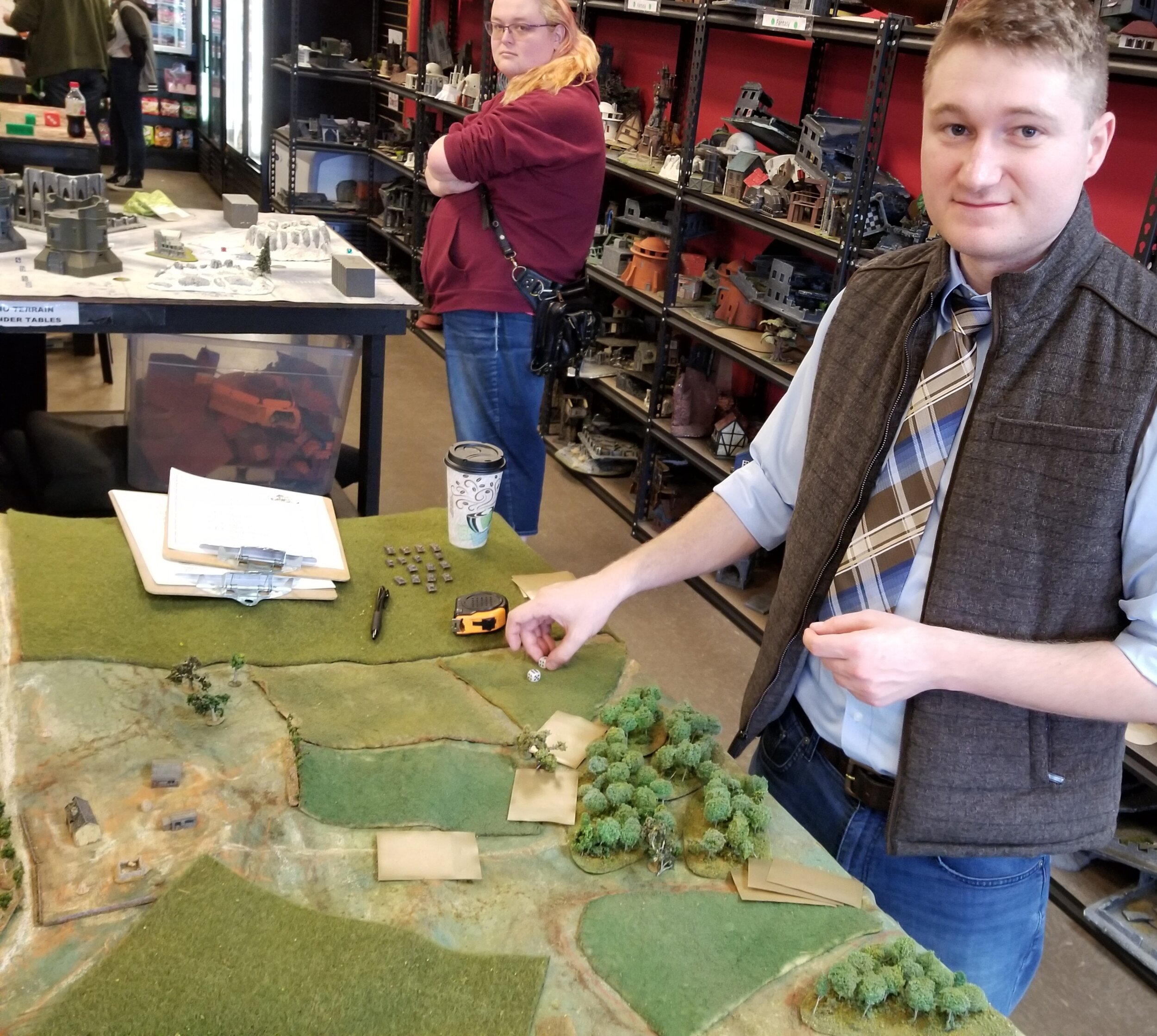
Sheridan begins his blitz
A Warhammer player looks on, no doubt dazzled by our good looking table and miniatures and spiffingly attired players.
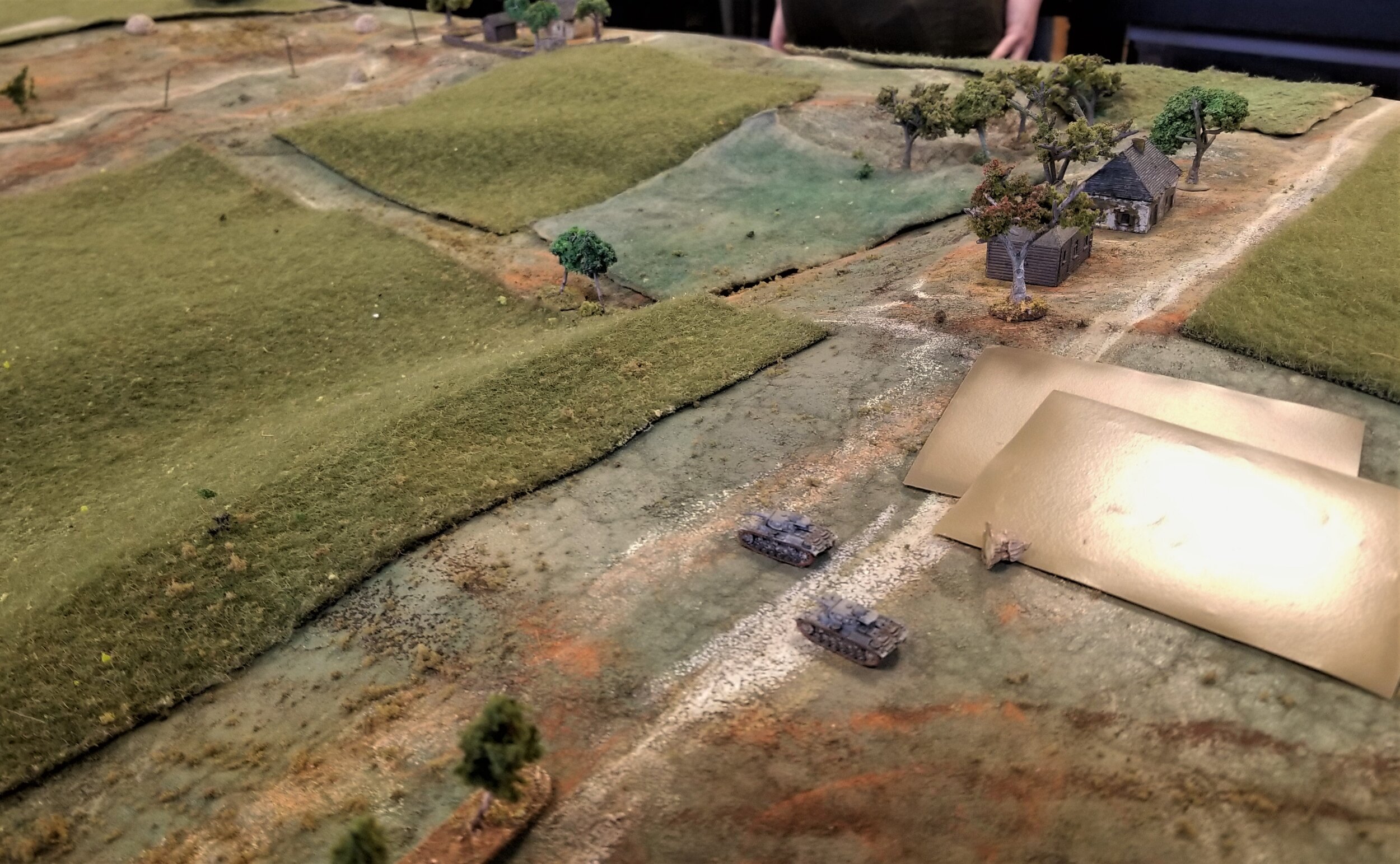
Germans gain the first ridge line
The Germans had a nice force consisting of a company of dismounted grenadiers ( 3 platoons of 3 sections with a HQ section), 2 MMG teams and an FO. They also had a PaK group of 2 PaK 38s coming in later. The tanks force was 2 platoons of PzIIIFs and a HQ tank (8 altogether), a 4 tank platoon of PzIIs, and a hvy platoon of 4 PzIVEs. The panzers entered first with the grenadiers marching on 2 smoke breaks later.
The ridge line in the center prevented spotting until Sheridan's armor came up into view.
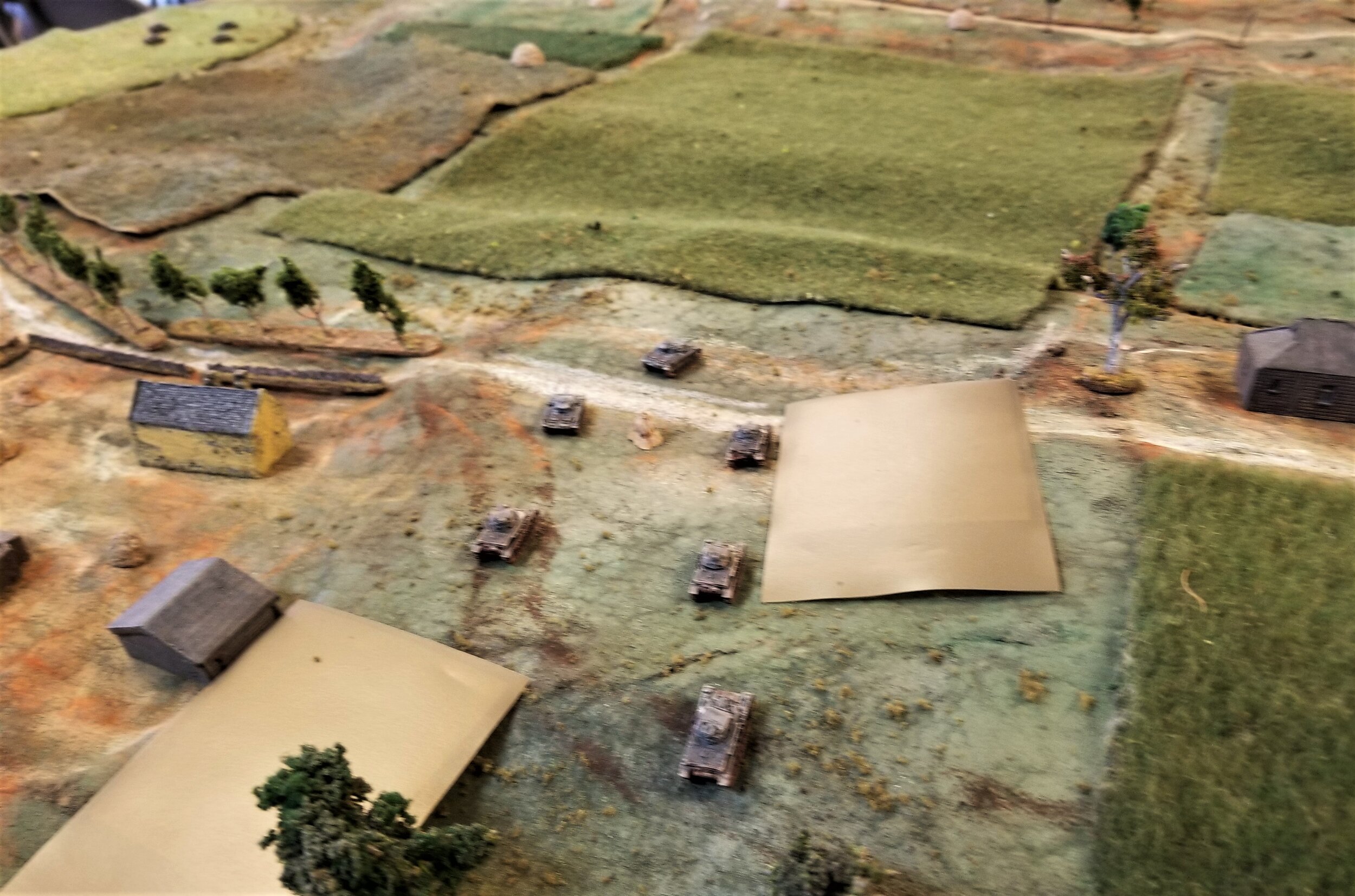
Pz IVs and HQ tank along with several blinds
The heavy tanks went up the center while the 1st pla of Pz IIIs went around the left-just visible. Sheridan sent the PzIIs that way also. The 2nd PzIII platoon went to his right.

German players wonder where the Reds are hiding
Sheridan and Jess having a good time manoeuvring their Blinds over the eastern half of the table.
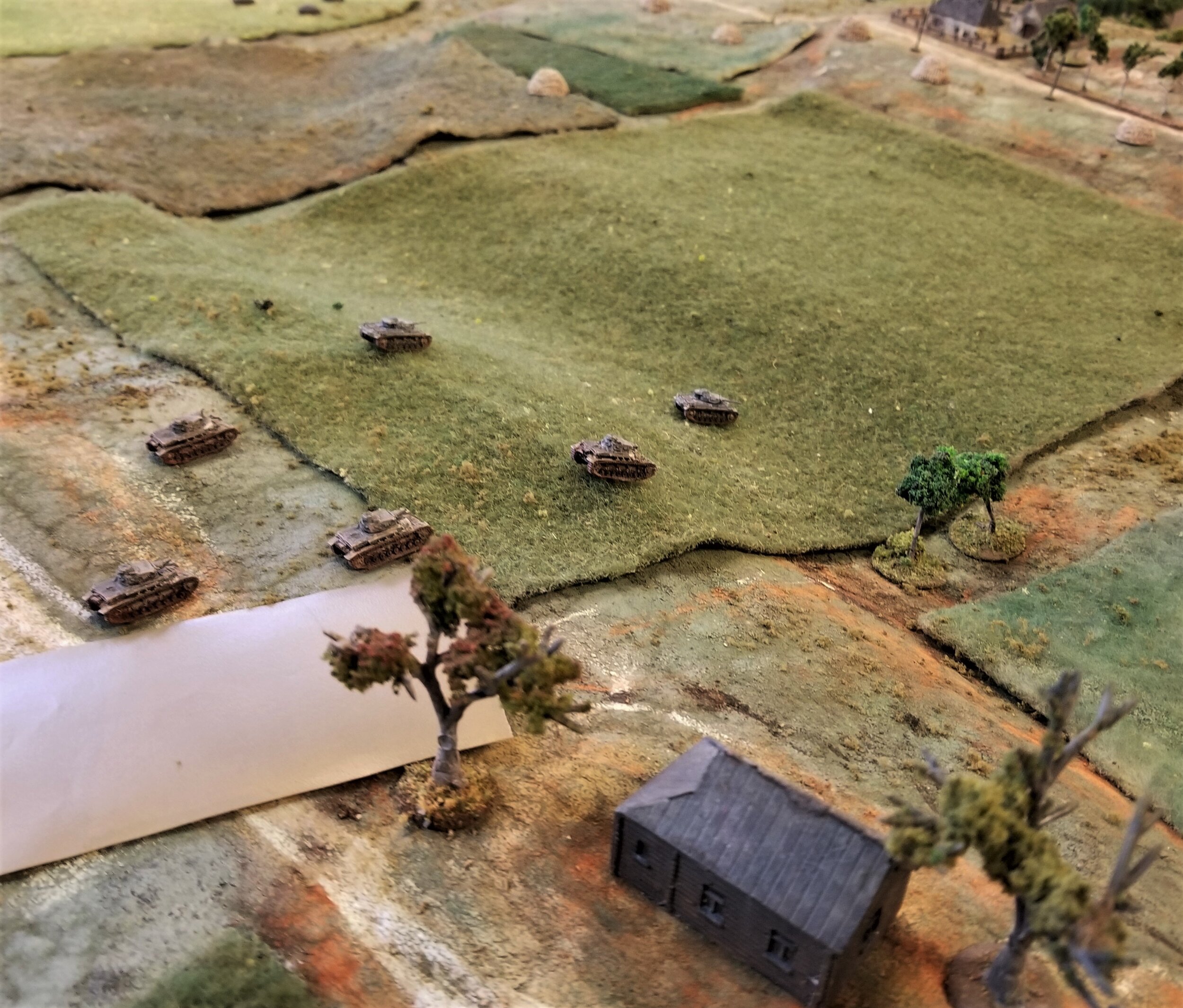
Plunging ahead
The Russians are dug in along the next slope in camouflaged trenches. The first group of T34s has finally arrived and is moving up behind the ridge on the Russian left.
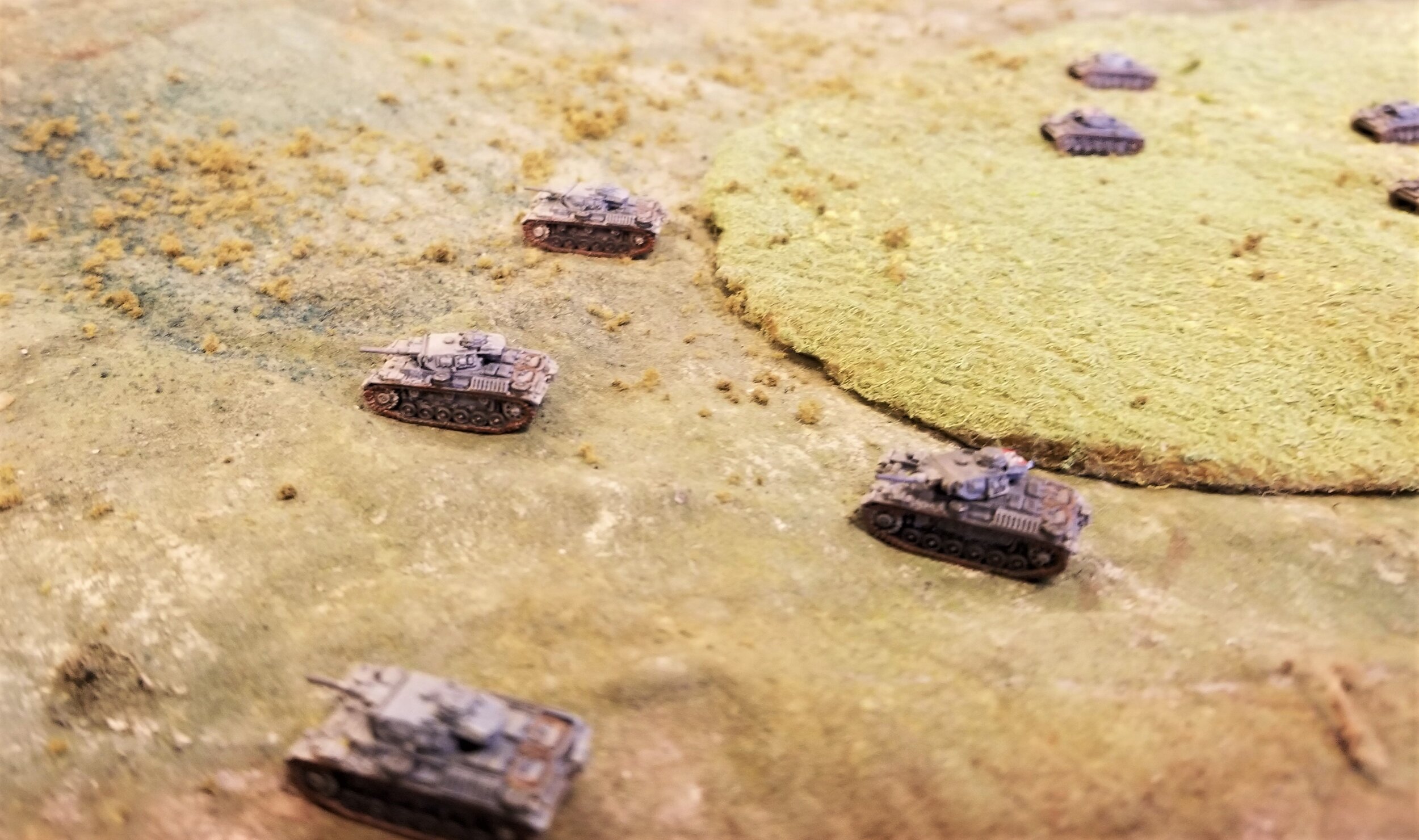
Panzers on the left flank
Sheridan had some 'blitzkrieg' moves which allowed these panzers to cover 3/4 of the table to get around the west edge of the slope.
Still no firing at this point. No Russian ATGs and no German soft targets so I kept my men hidden.
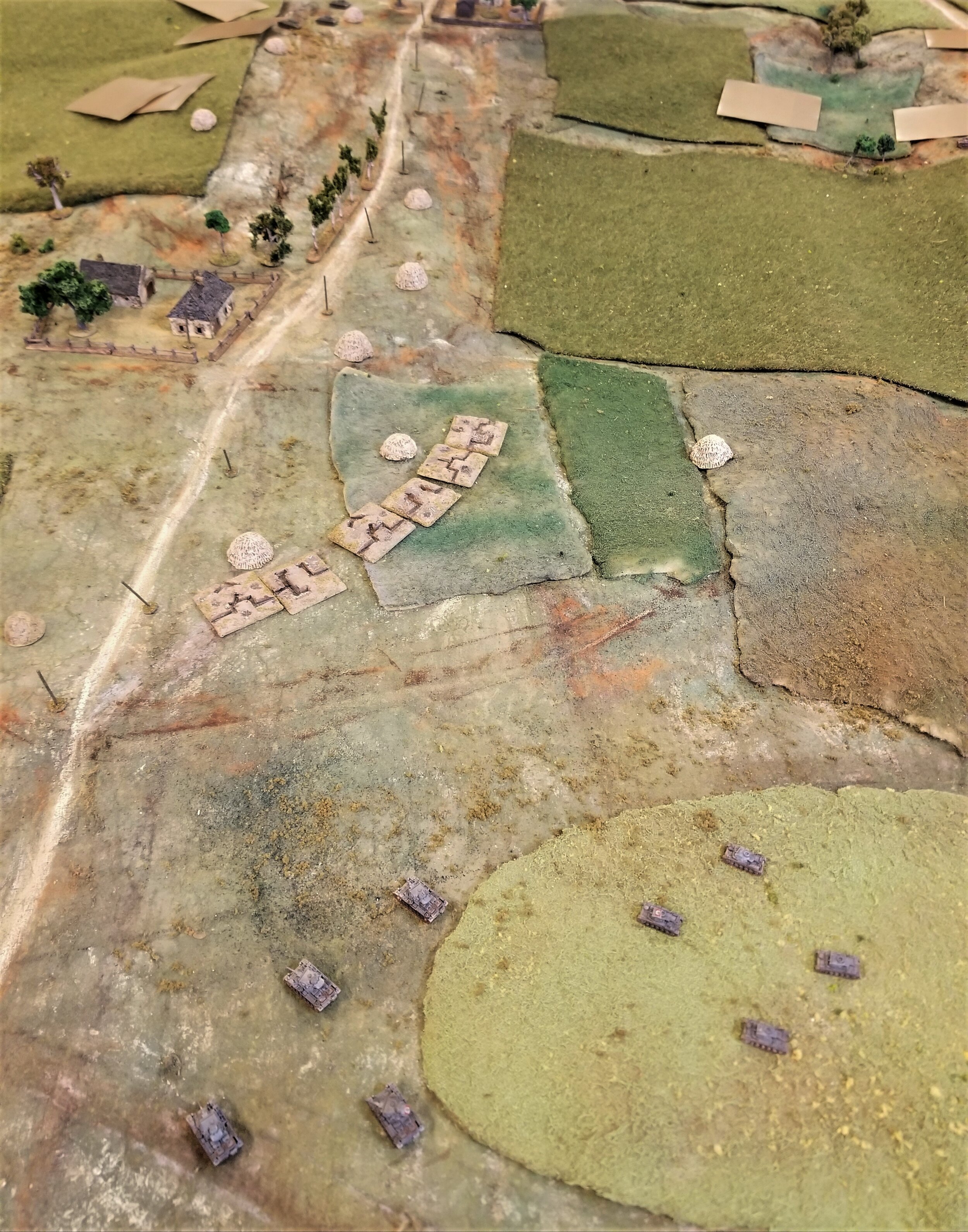
Trenches spotted
The dug in line is finally spotted. PzIIs in good position to start hosing them down with auto cannons.
The blinds on the top left are T34s moving up. Blinds in the center are German dummy blinds.
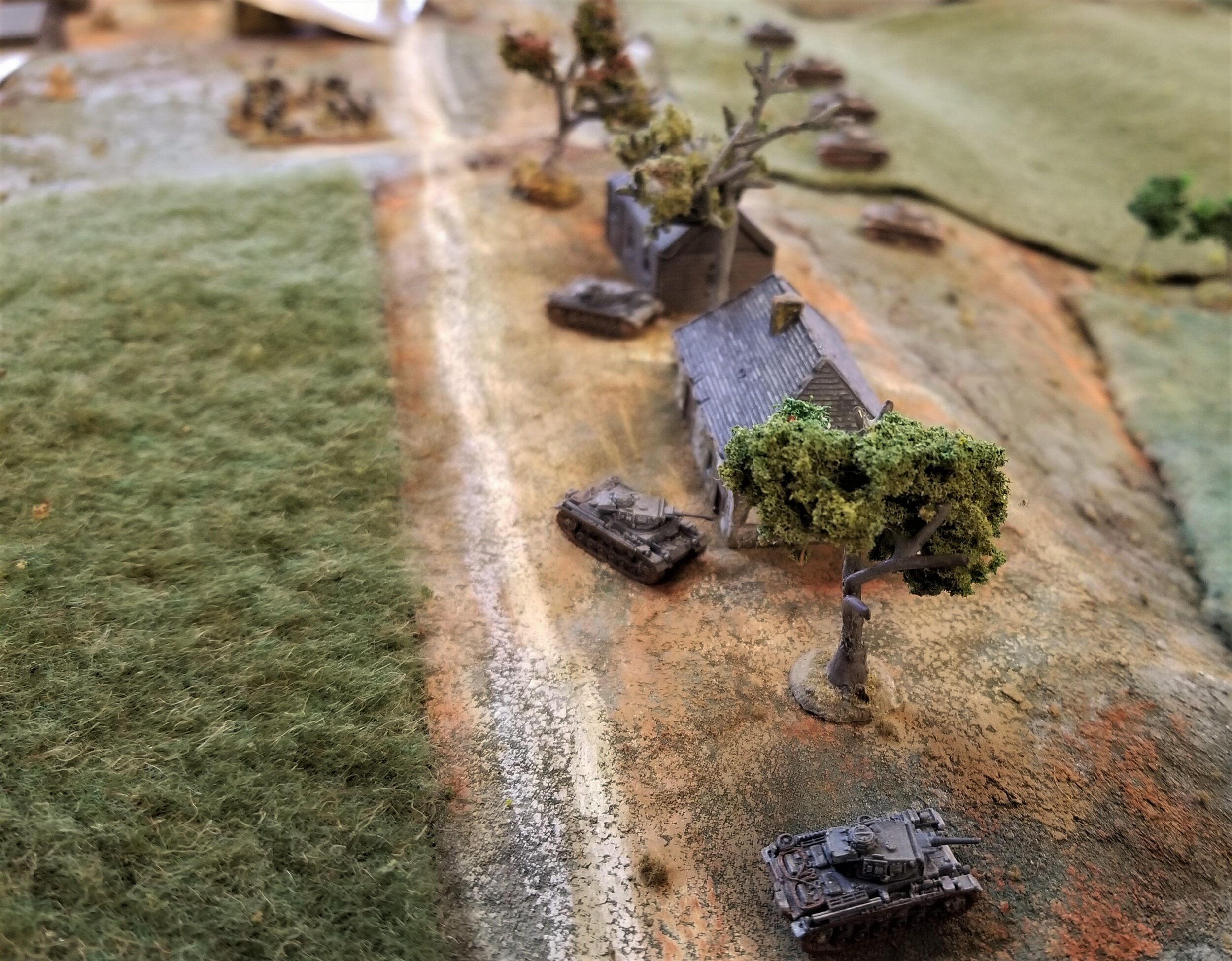
PzIIIs on the right
Overwatching the panzer advance in the center.
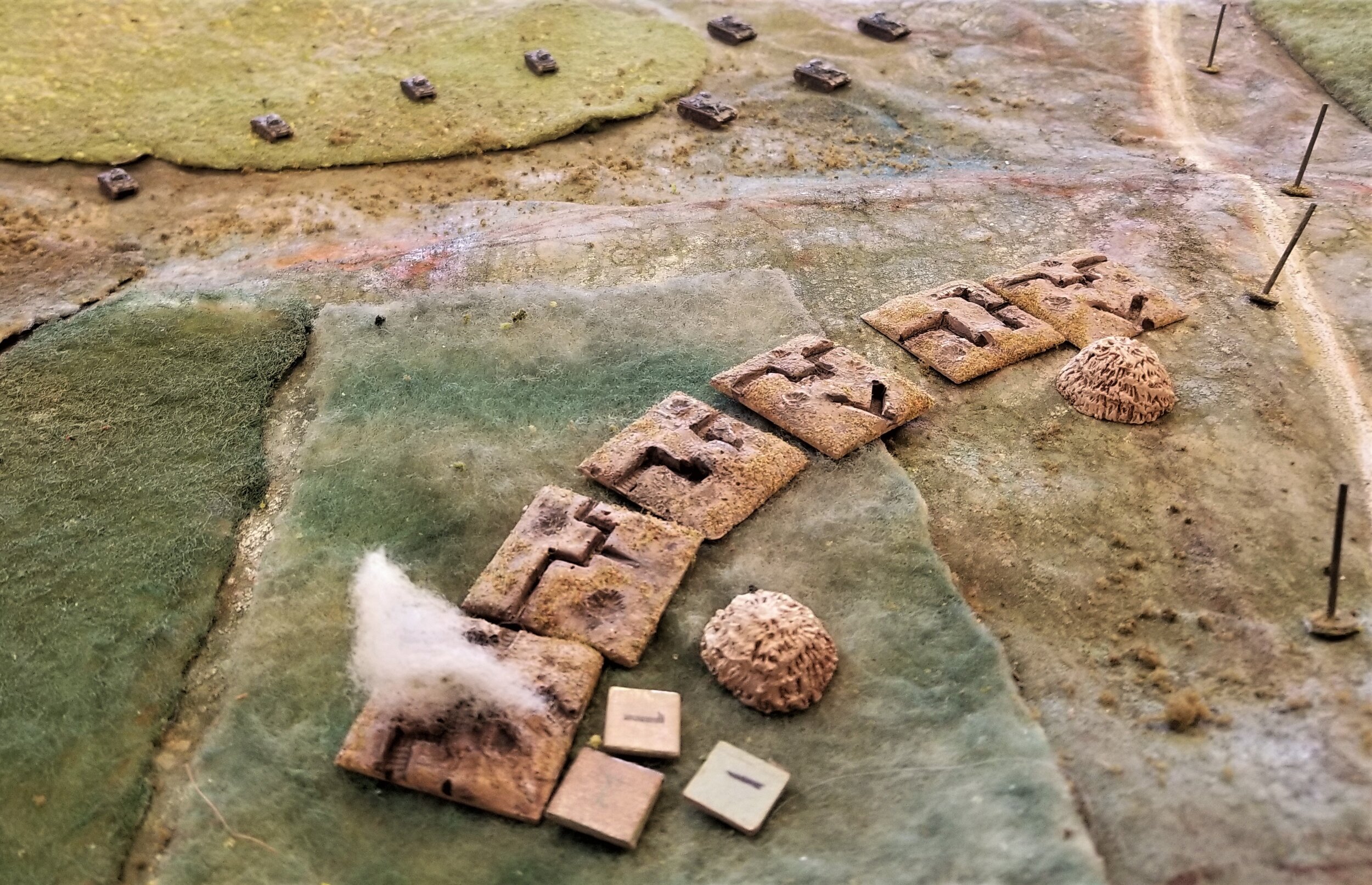
Trenches under fire from the PzIIs
And not much for me to do but take it.
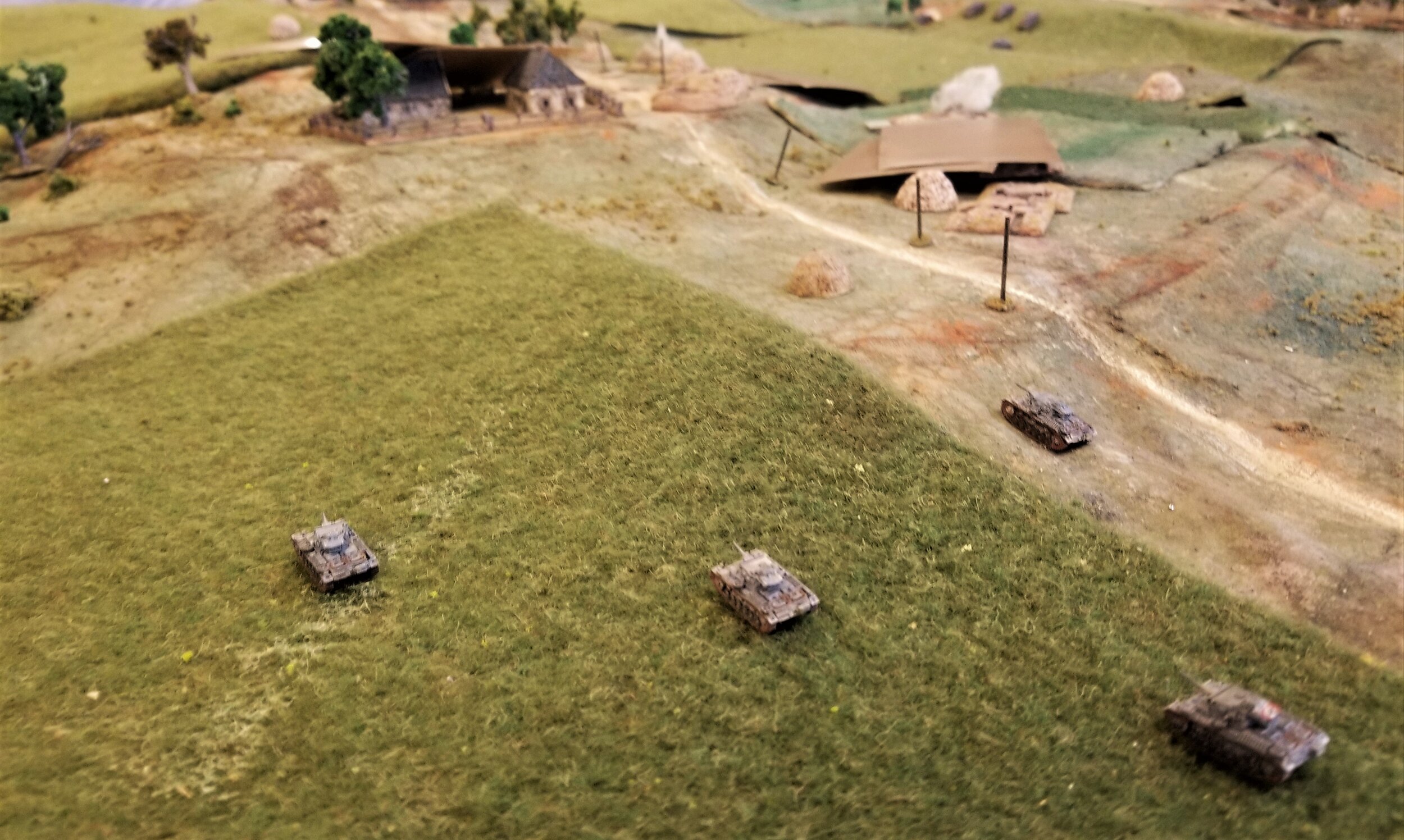
PzIIIs moving more cautiously now
I have moved up some T34s under blinds into the farm. The blinds above the trenches are dummies
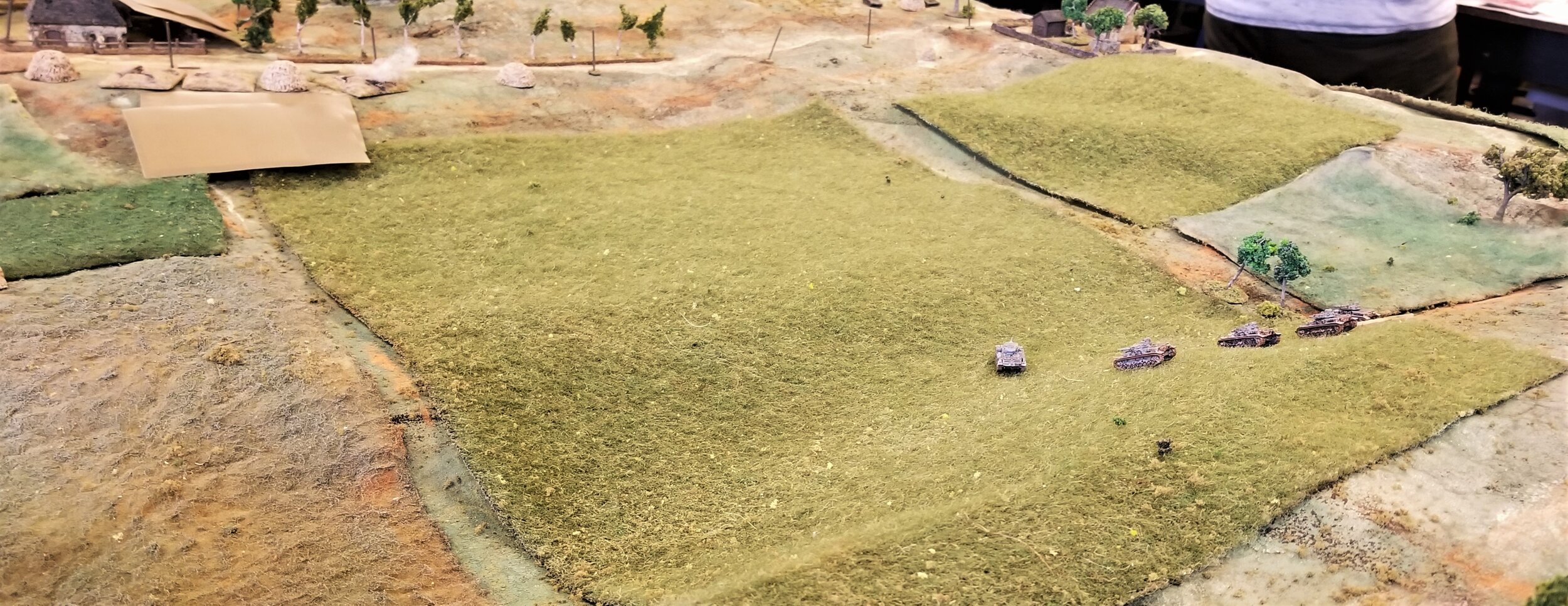
PzIVs moving down between slopes
Bad spotting rolls have not discovered more trenches across their front
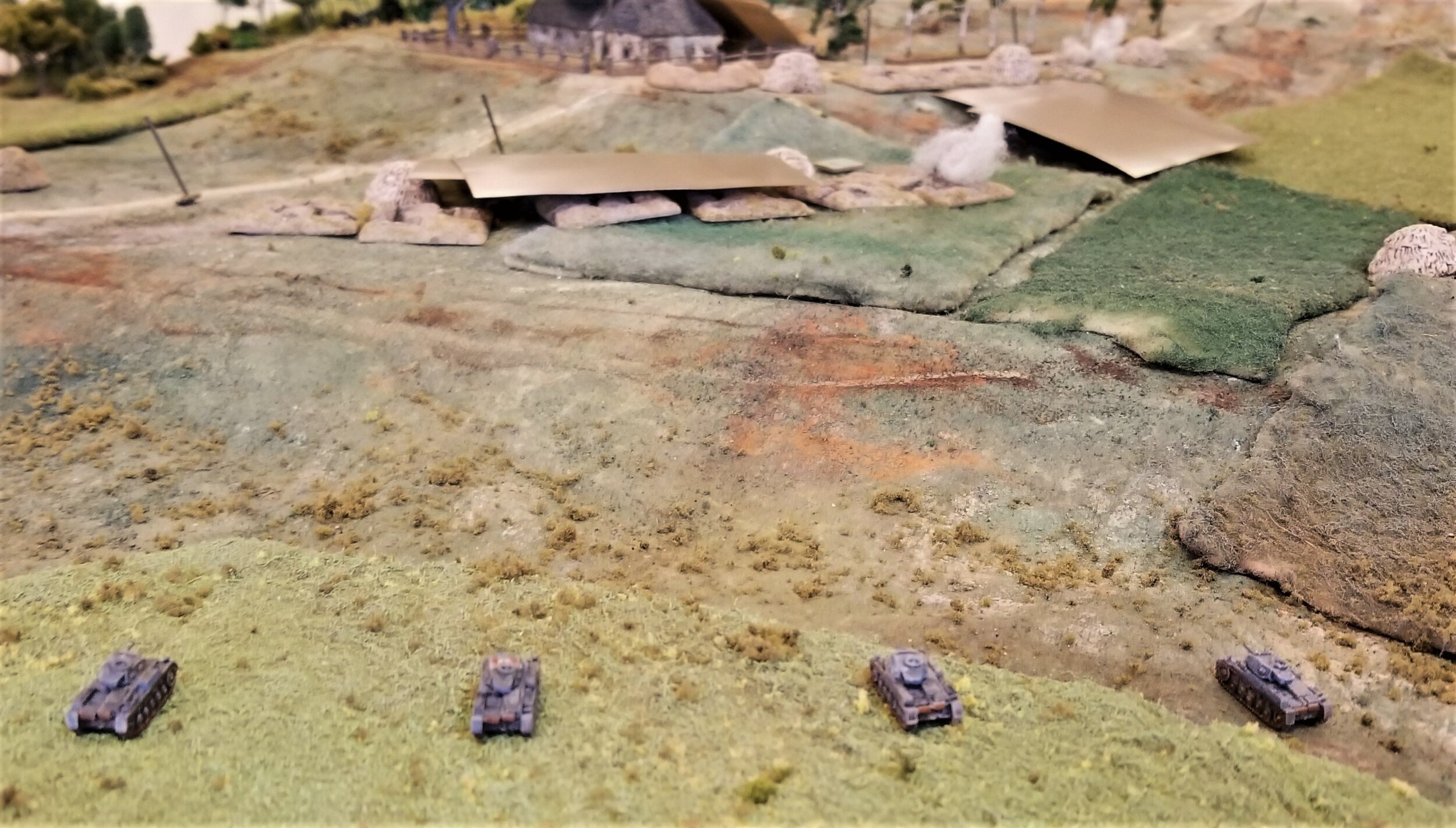
Pz IIs hammering away
They have spotted a second line of trenches further up the slope.
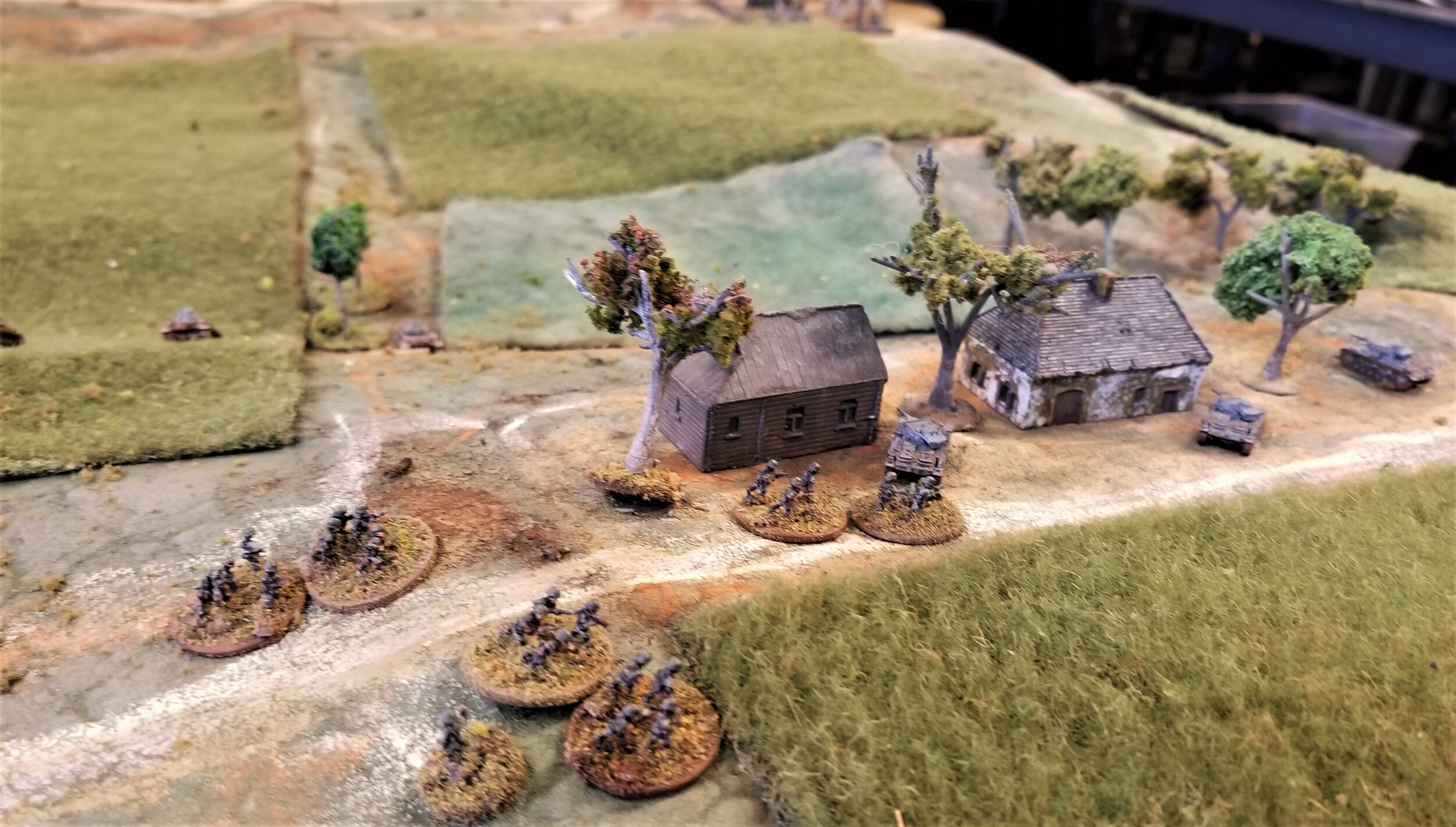
Grenadiers moving into the farm next to the 2nd Platoon of Pz IIIs
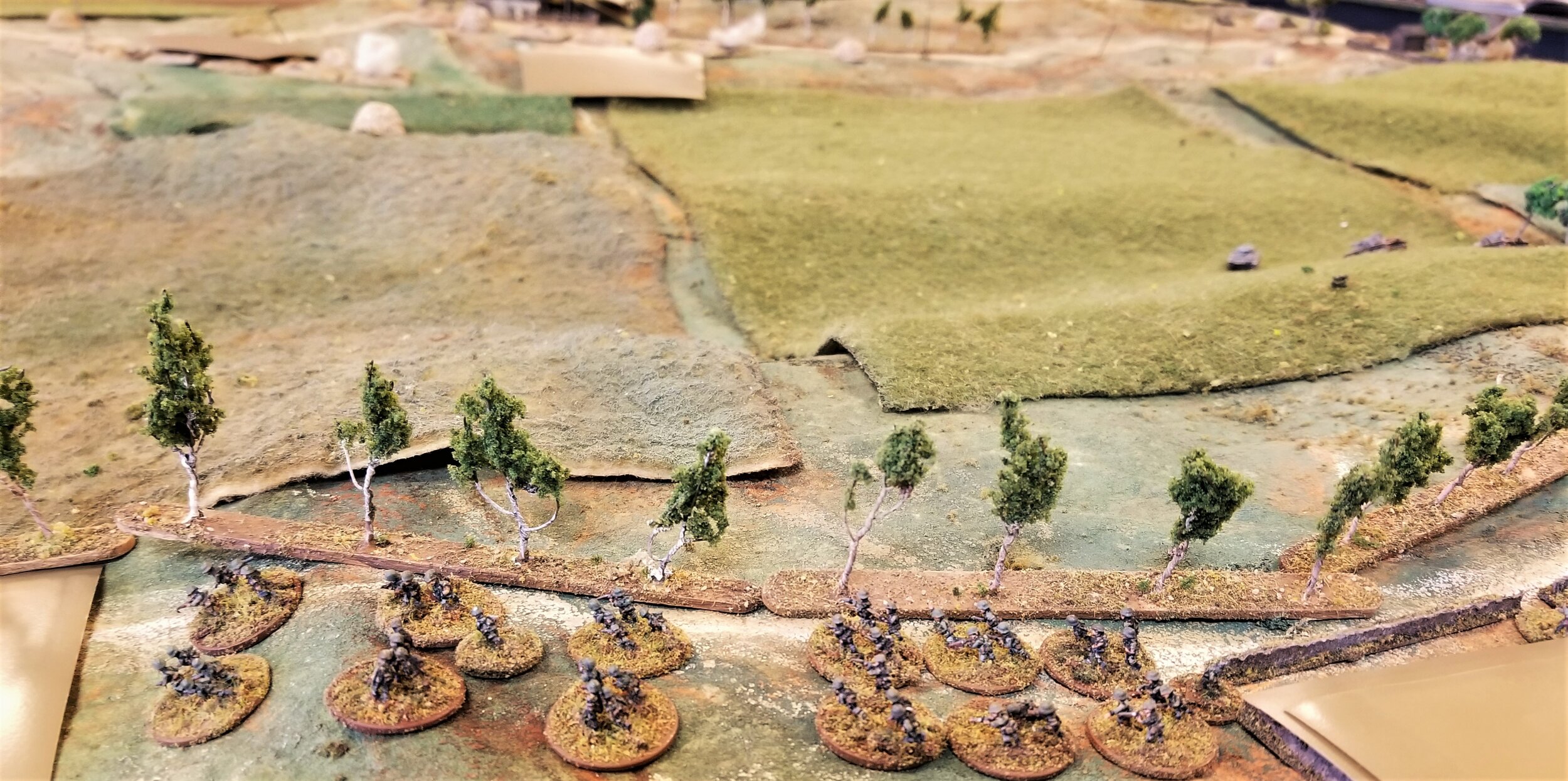
And the other Grenadiers on their left
Jess decided to send 2 platoons around the left in the path of the panzers to assault the trenches that the 20mm had softened up.
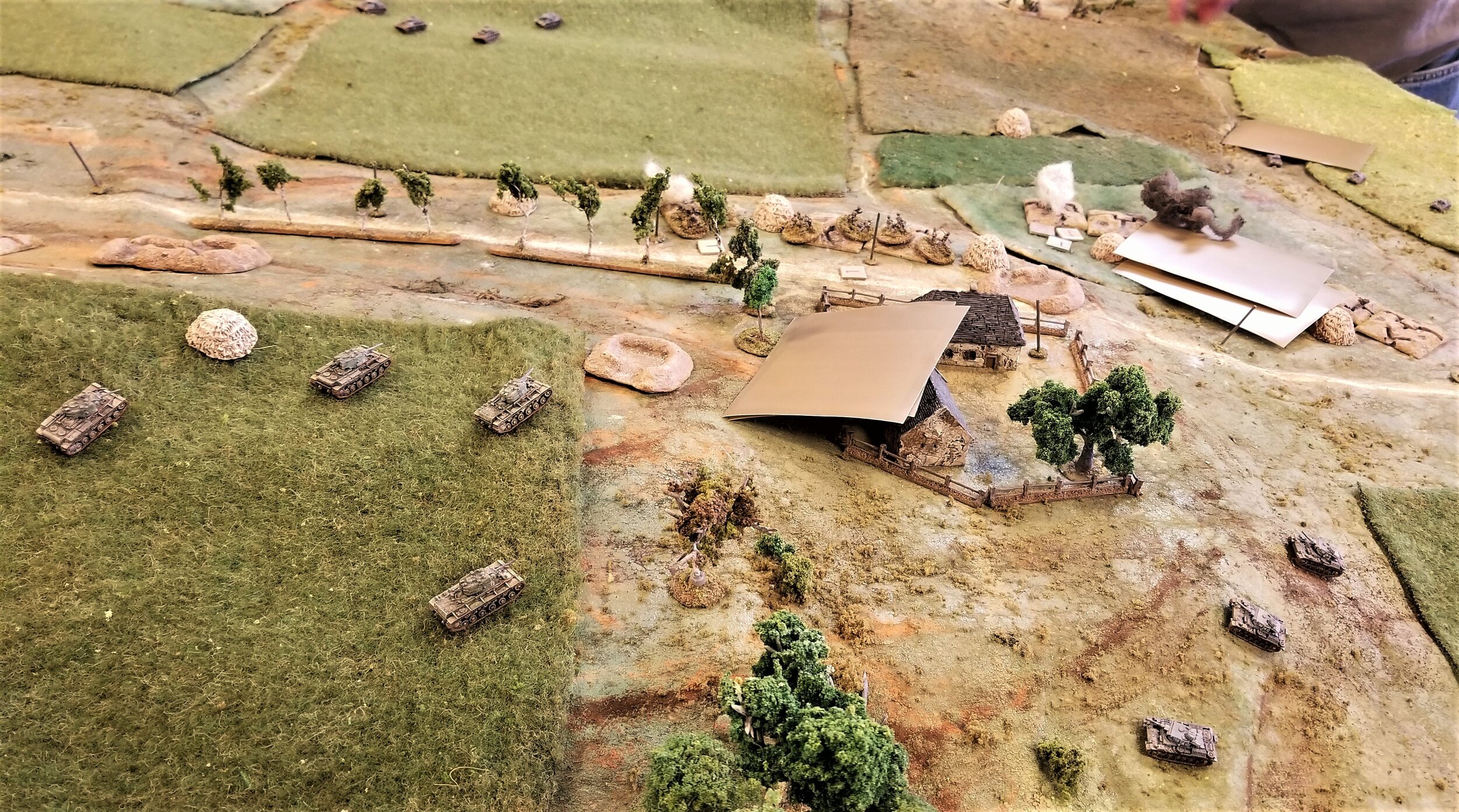
KVs arrive
Just as the 1st PzIII platoon was getting to the rear. A nasty surprise indeed. Unfortunately with green crews they can only move (slowly) or fire 1 round per phase. The PzIII have 4 action points. 3 T34s are still unspotted in the farm area. Meanwhile the center platoon of Russians in the trenches are id'ed now. The PzIIs still firing at the right hand trenches as Jess moves his infantry around to the left behind the light tanks.

Russian armor trying to kill the PzIIIs
Combined fire between the T34s and KVs KO 1 PzIII and damage another.
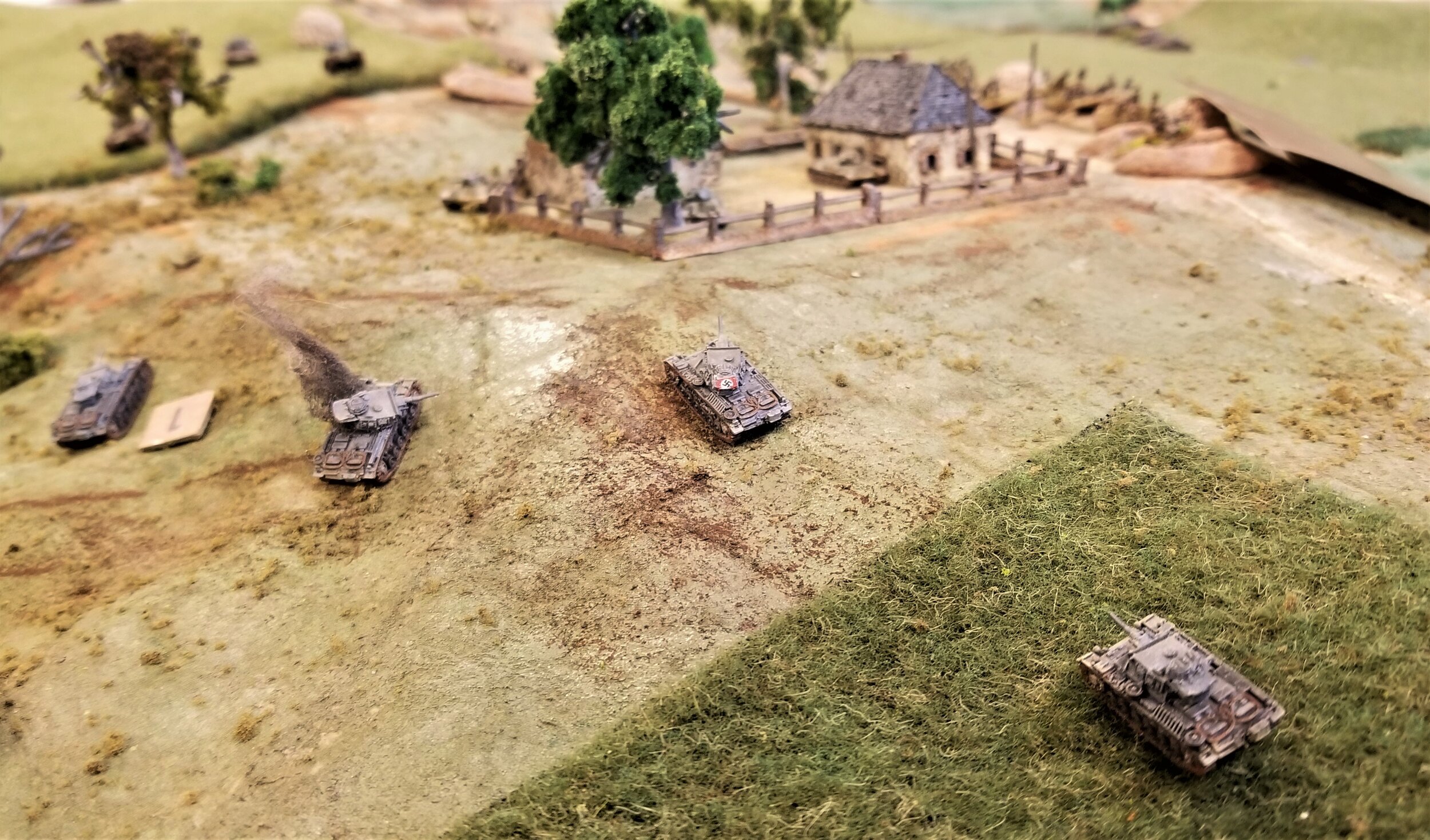
Nice armor combat here
Superior guns and armor and numbers slow the panzers.
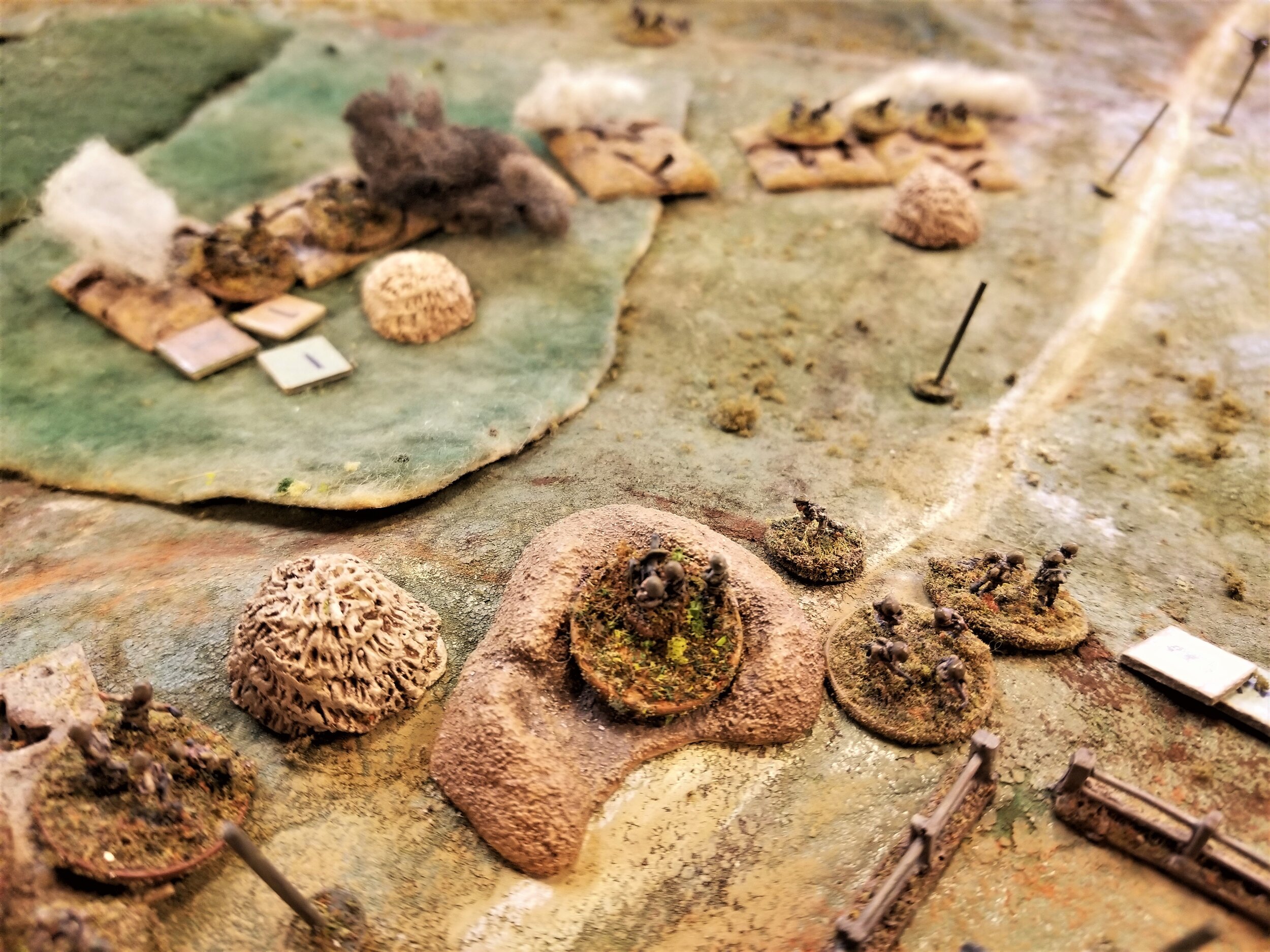
Russians running up slope from first line of trenches
After the softening from the 20mm fire, Jess close assaulted my trenches, The first section was easily defeated, but I sent the section next into the attack with their platoon CO. I lost that even fight and soon had to abandon my first trench line. A Maxim team keeps the grenadiers from getting any closer.
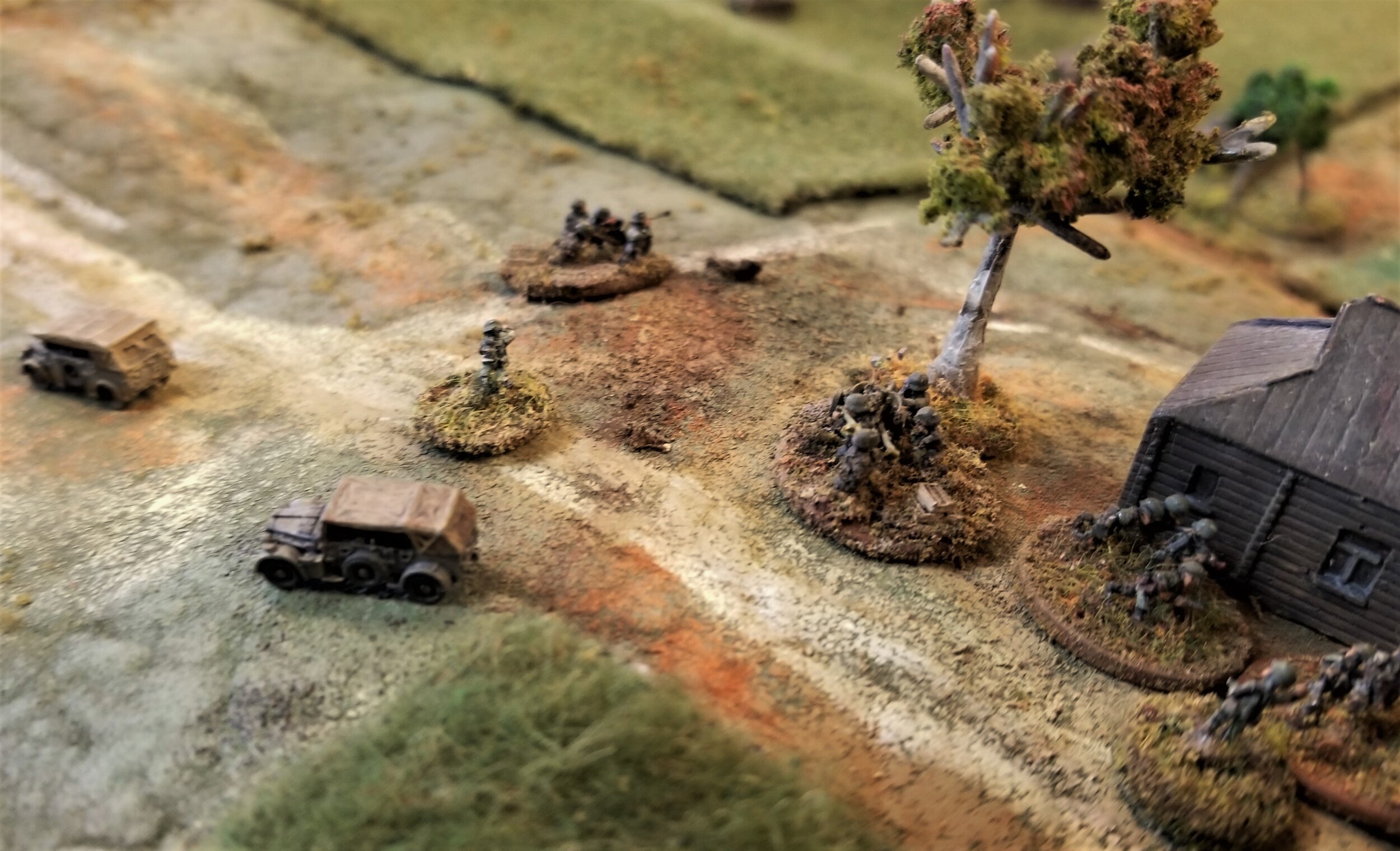
PaK 38s
The two 50mm ATGs set up and can see a KV on the next slope. Its a flank shot for them and they immobilize the beast. This and 2 shock points means that the green crew bails. I retaliate with my light mortars and a MMG.
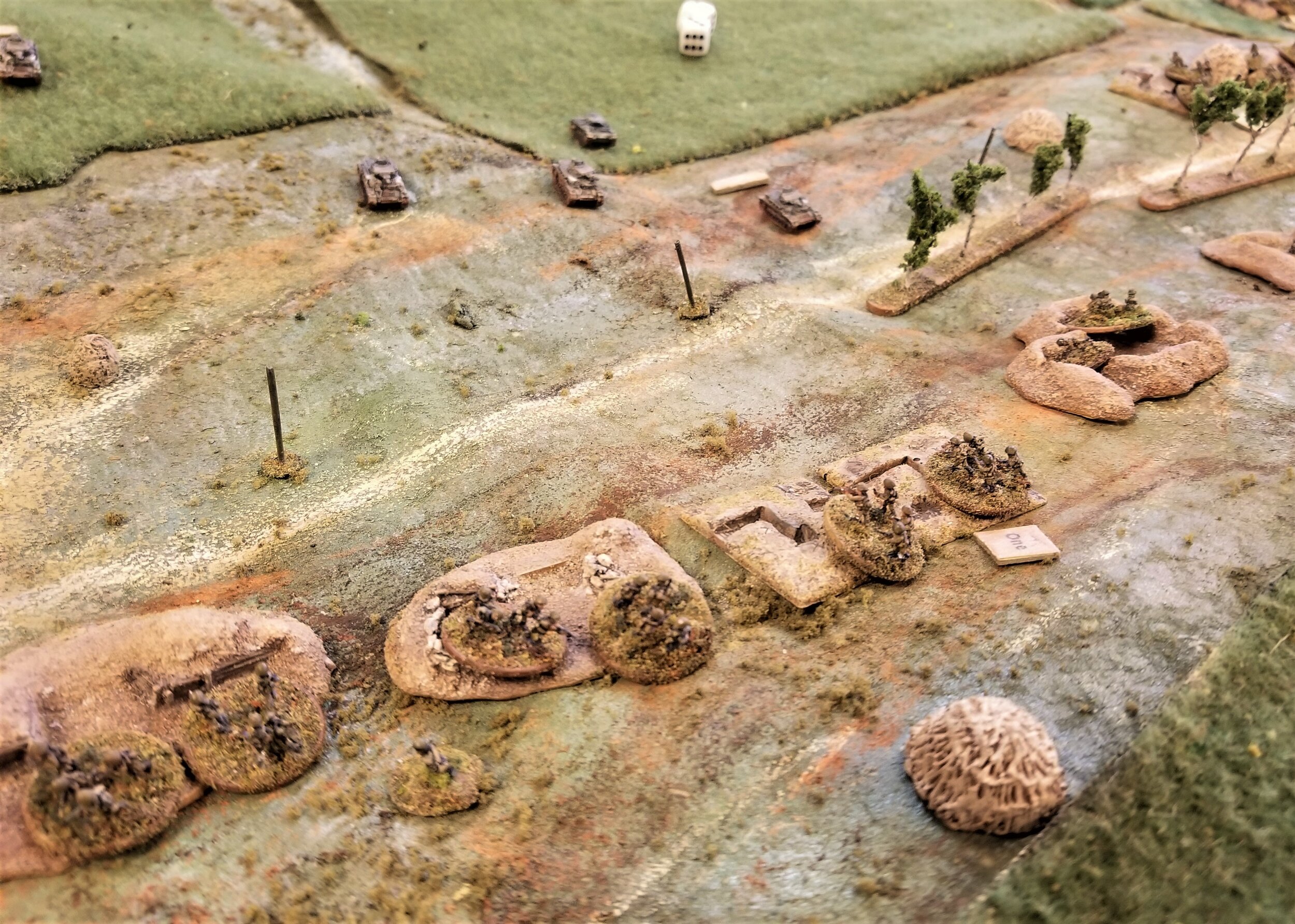
PzIVs heading up to my left trench
The panzers have taken some fire from another group of T34s to my left. The PzIIIs have made 2 of them bail already
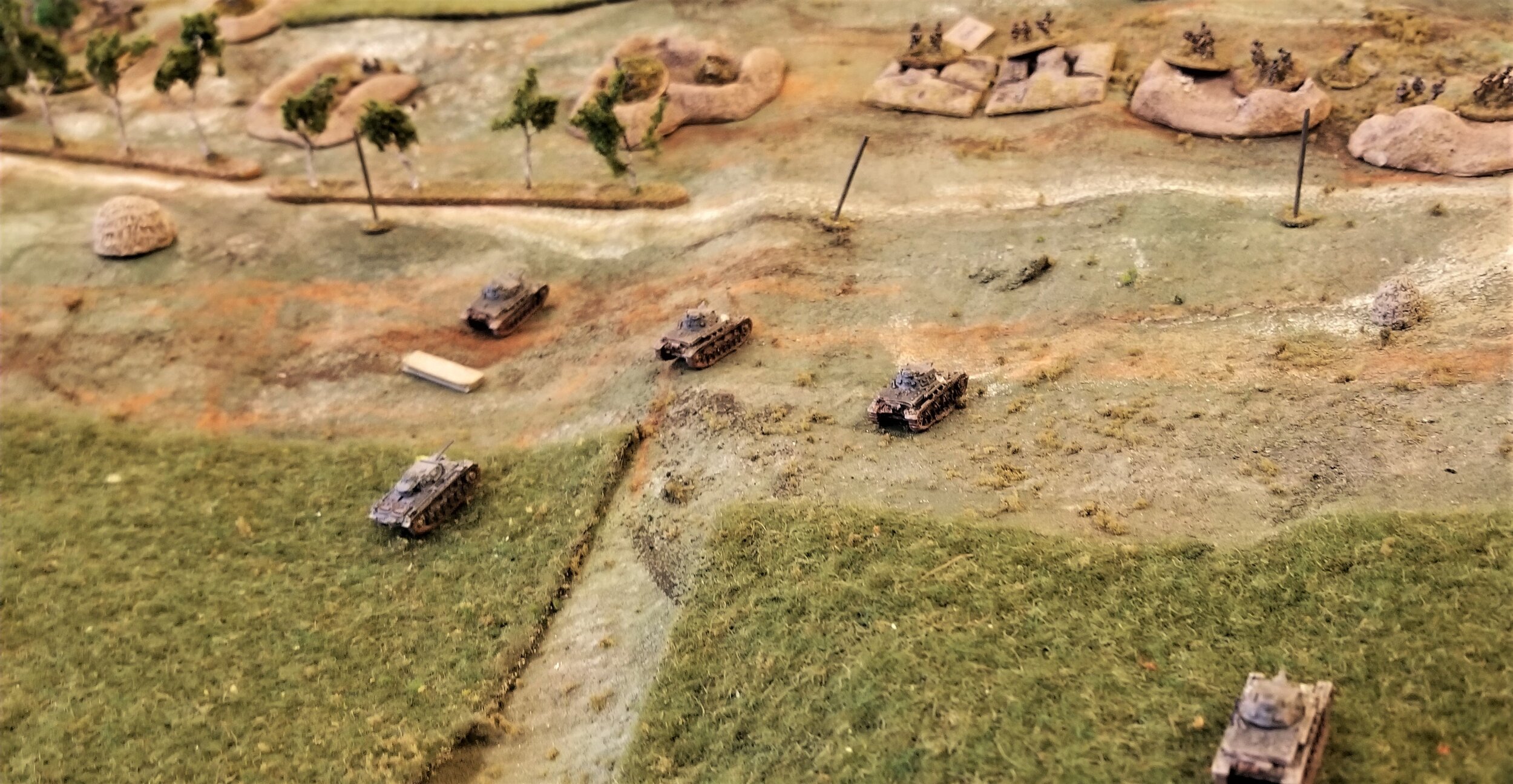
Center attack
The Panzer command PzIII is behind the Mk IVs. The IV on the right is trailing behind with engine damage.
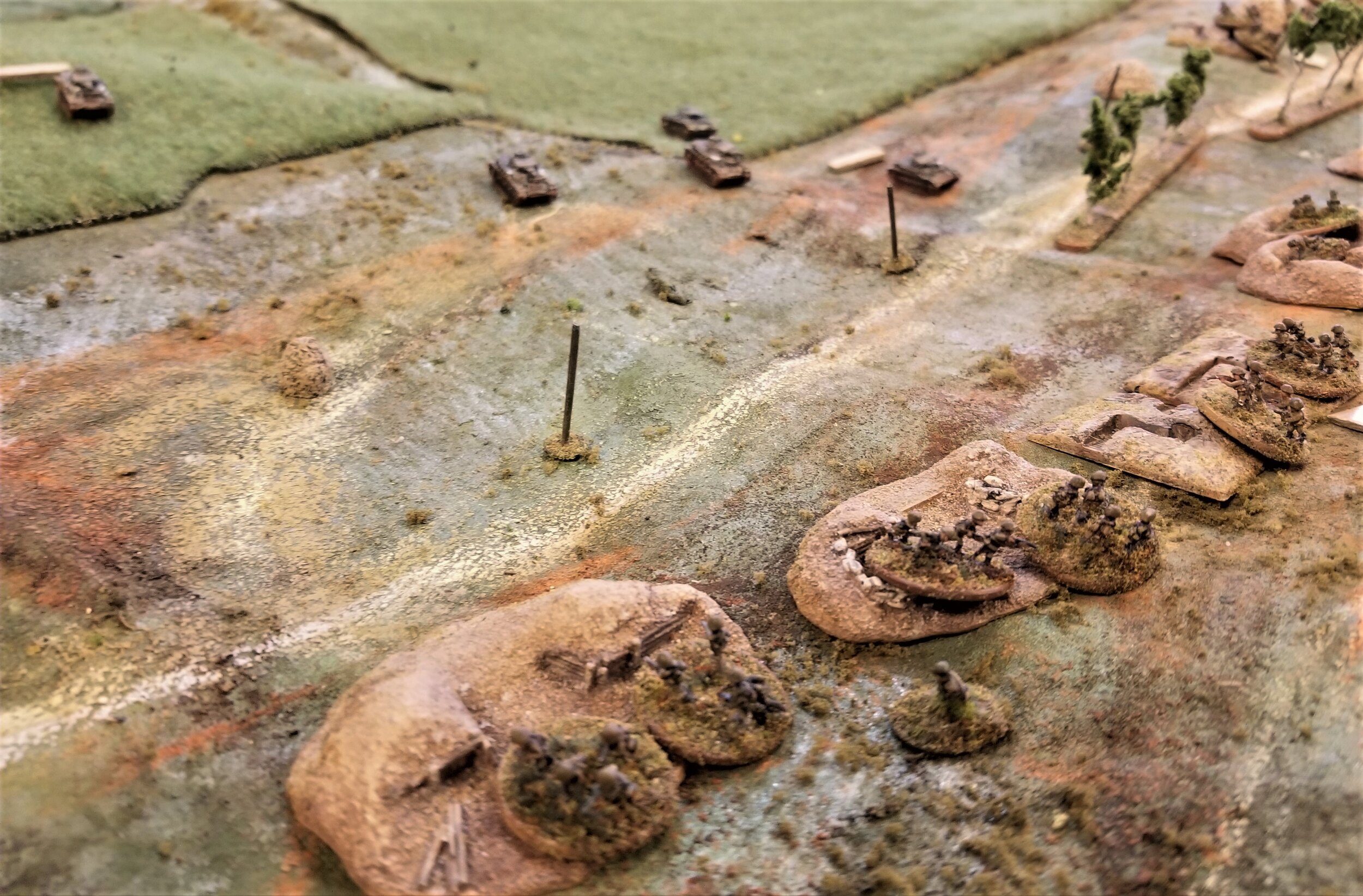
Looks like a tank overrun coming
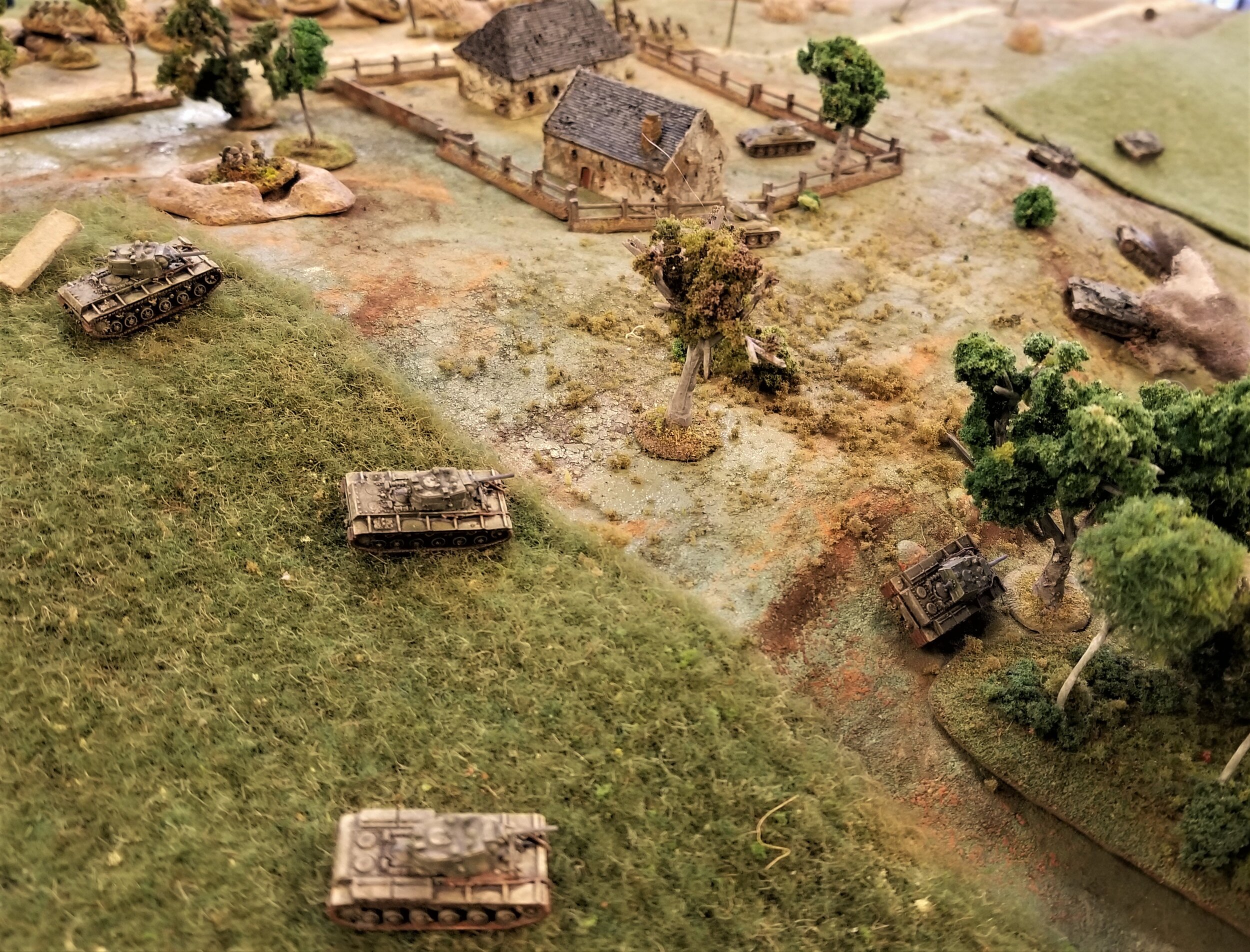
And lots of tanks shooting on this side
The KV on the left is abandoned due to PaK fire. The 2 KVs on the right keep moving to try to get shots on the panzers. The 3 T34s in the farm are .not having any luck hitting anything. 2 PzIIIs are destroyed from the KV fire.
I was keeping track of how many hits the Russian tanks took and the T34s in this farm had 12 hits on them altogether before they were forced to bail because of shock and 1 had a gun KO'ed. Green crews are at a distinct disadvantage even in well armored vehicles.
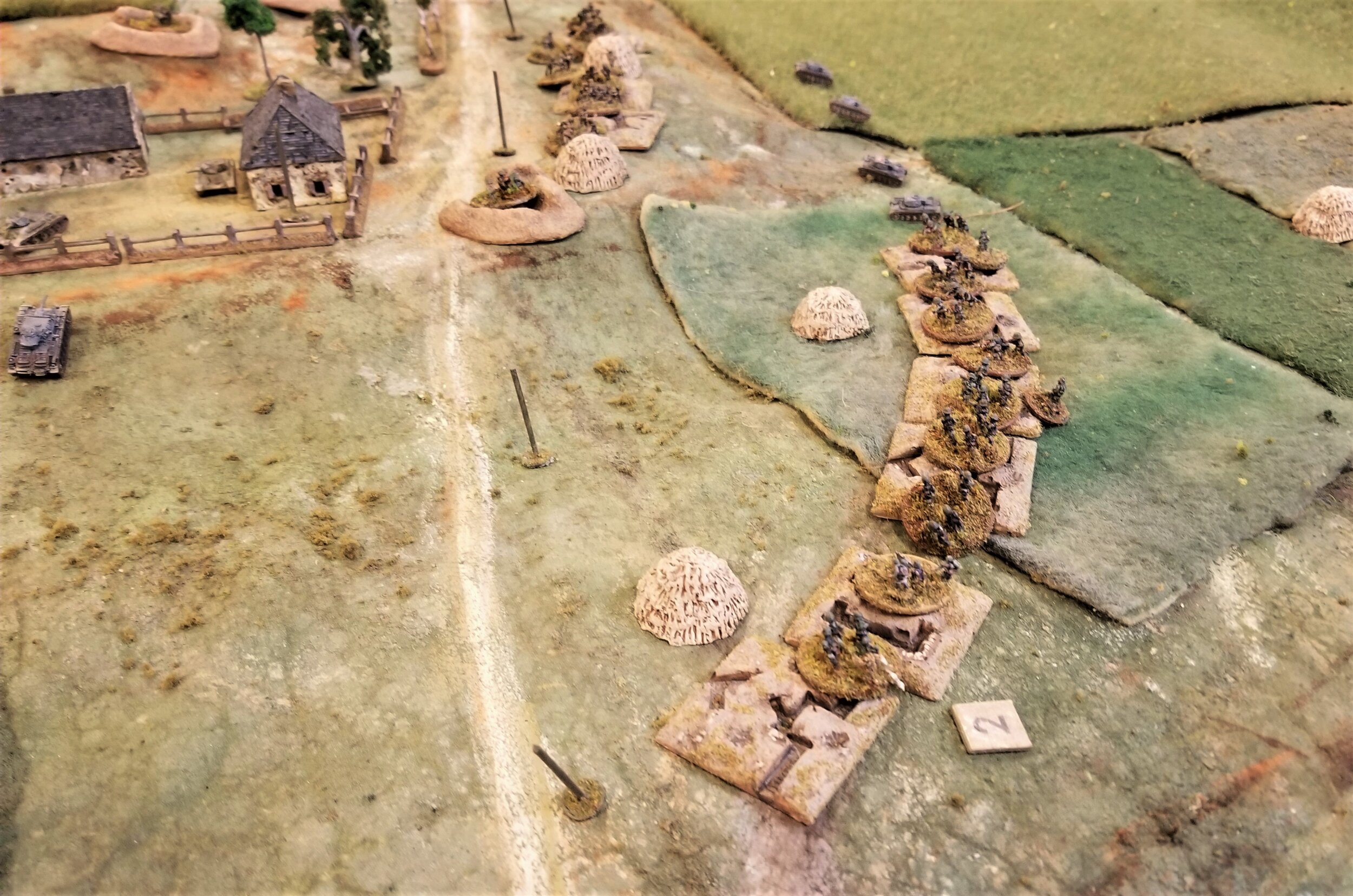
Germans in the trenches
Jess's 2nd platoon is in bad shape though. Its down to half strength. The supporting 3rd platoon has 1 section down to 4 men also. The Pz IIs are moved to the right to start to soften up the center group of trenches.
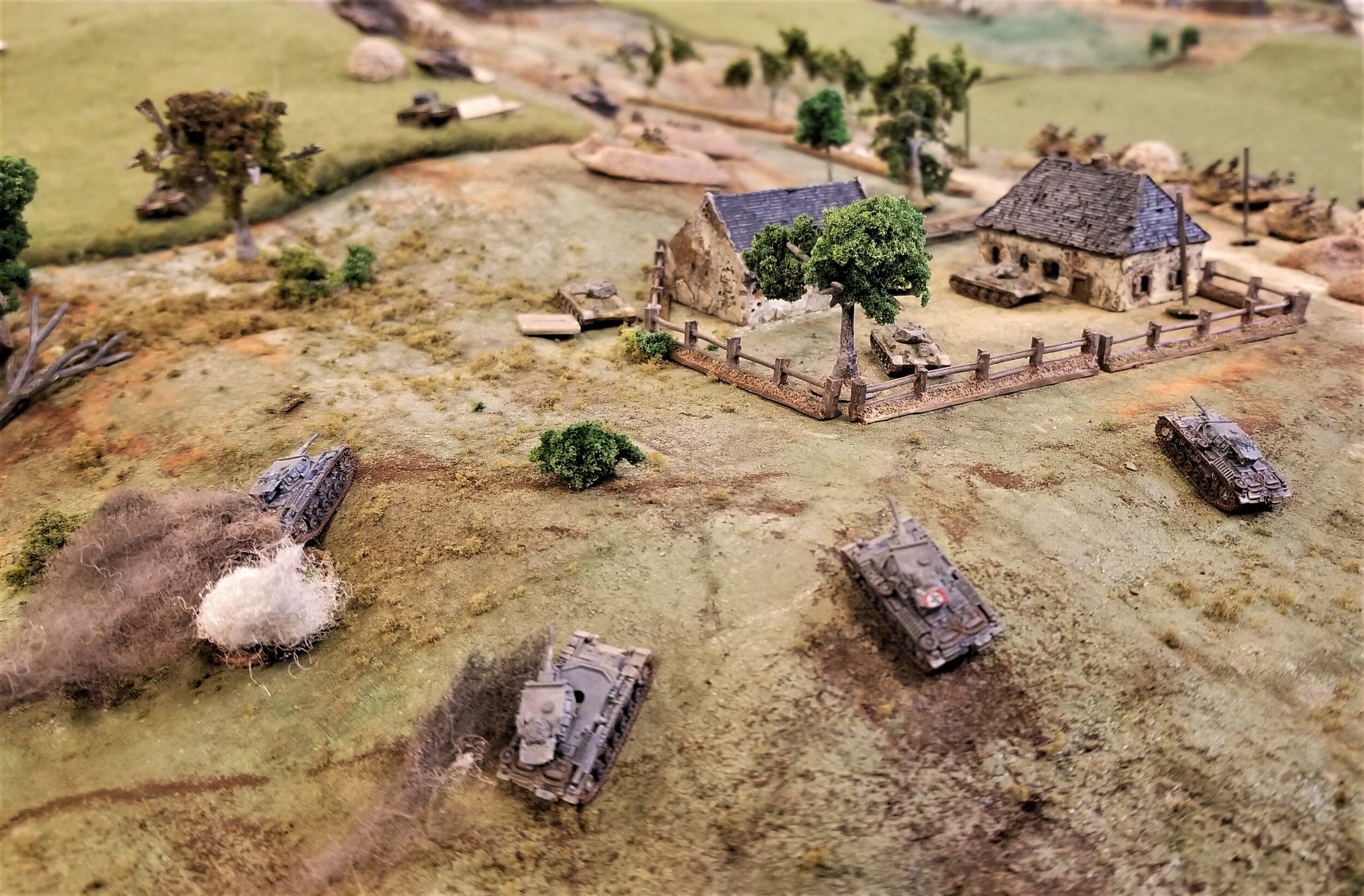
2 smoking Pz IIIs
Fire from the T34s in the farm ceases as they abandon their mounts
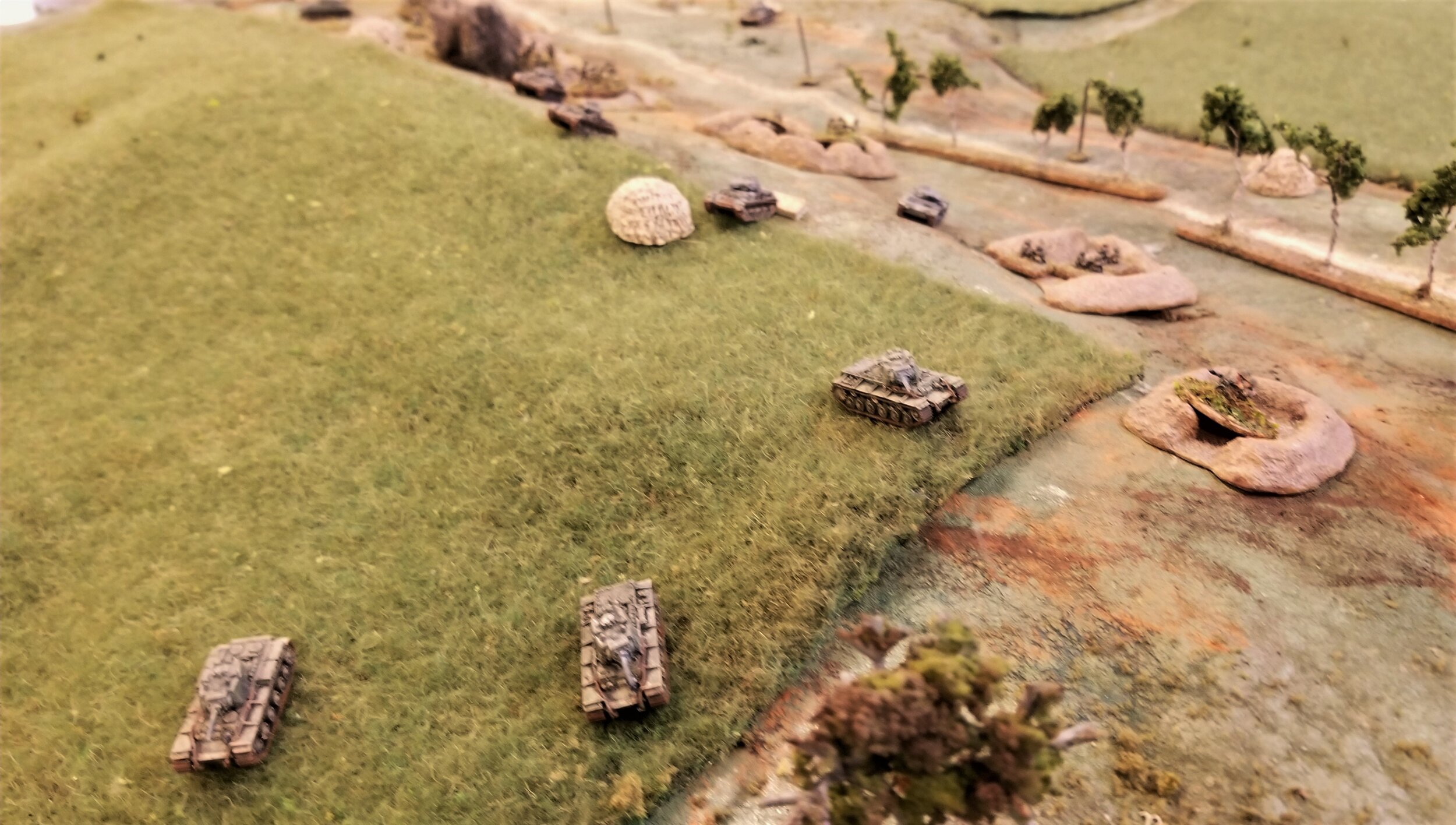
Don't turn around
The PzIV platoon has run through the trenches to get to the rear of the KVs. The left flank KV is now abandoned after taking 5 hits from the PaK38. 2 of the KVs have yet to even fire.
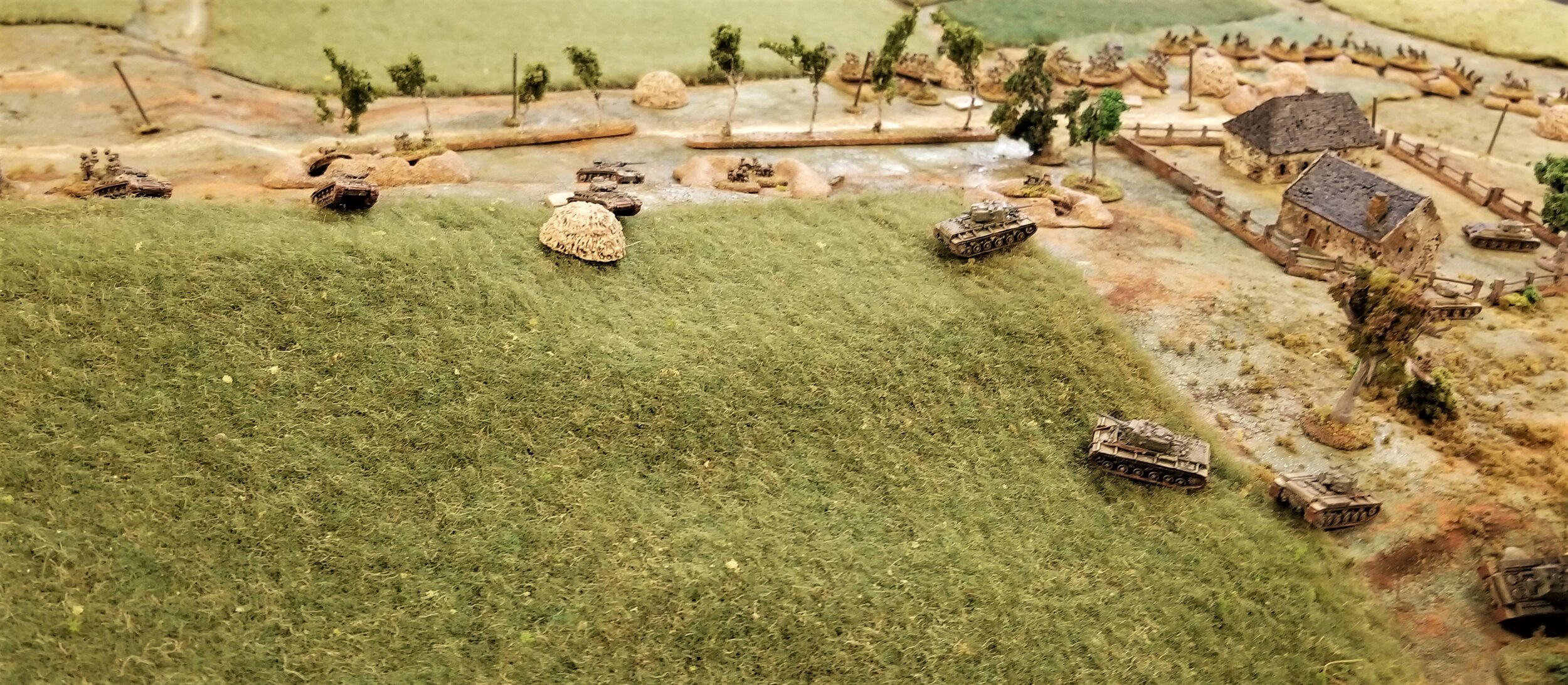
Surrounded
One KV manages to turn to face the new threat as the other 2 continue to try to get the PzIIIs.
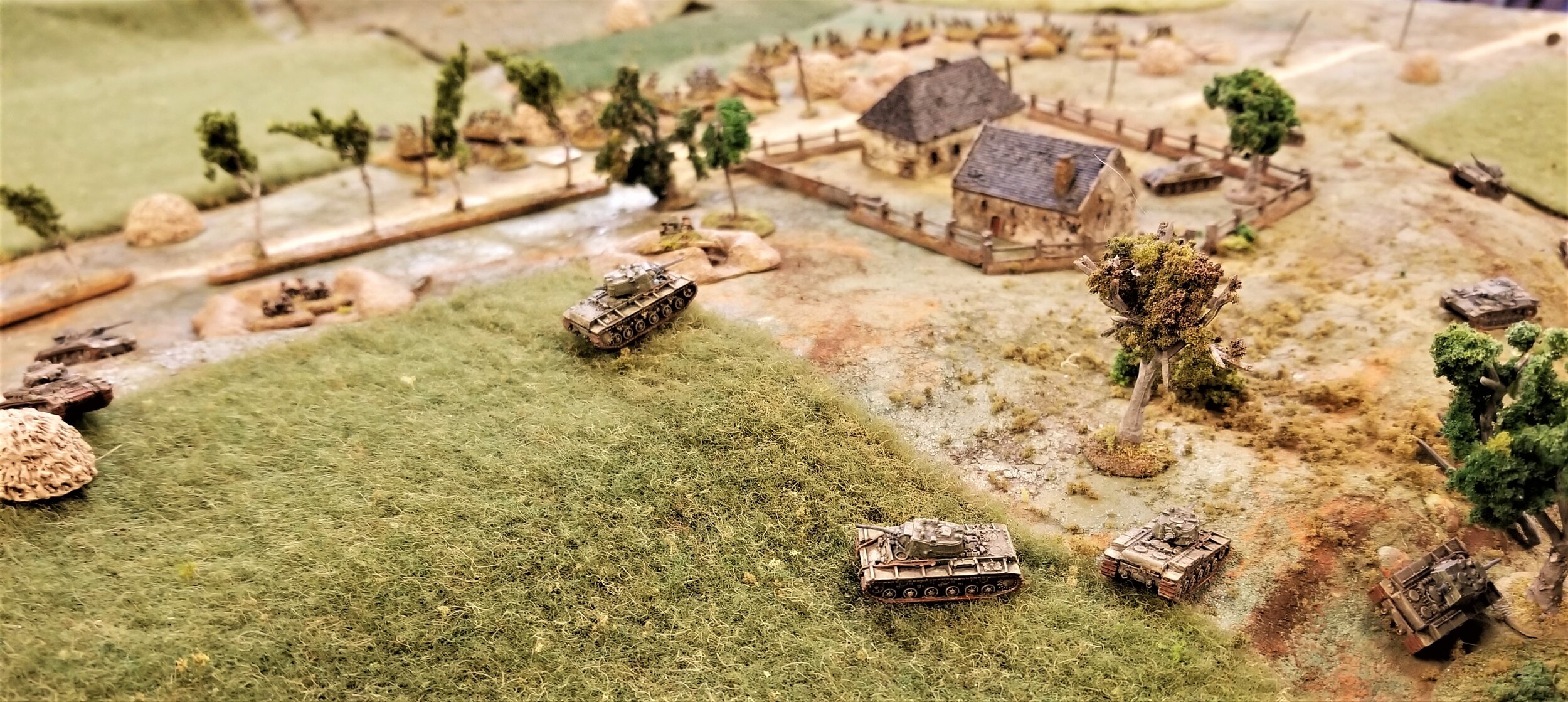
Confusion reigns
Its every Red tanker for themselves
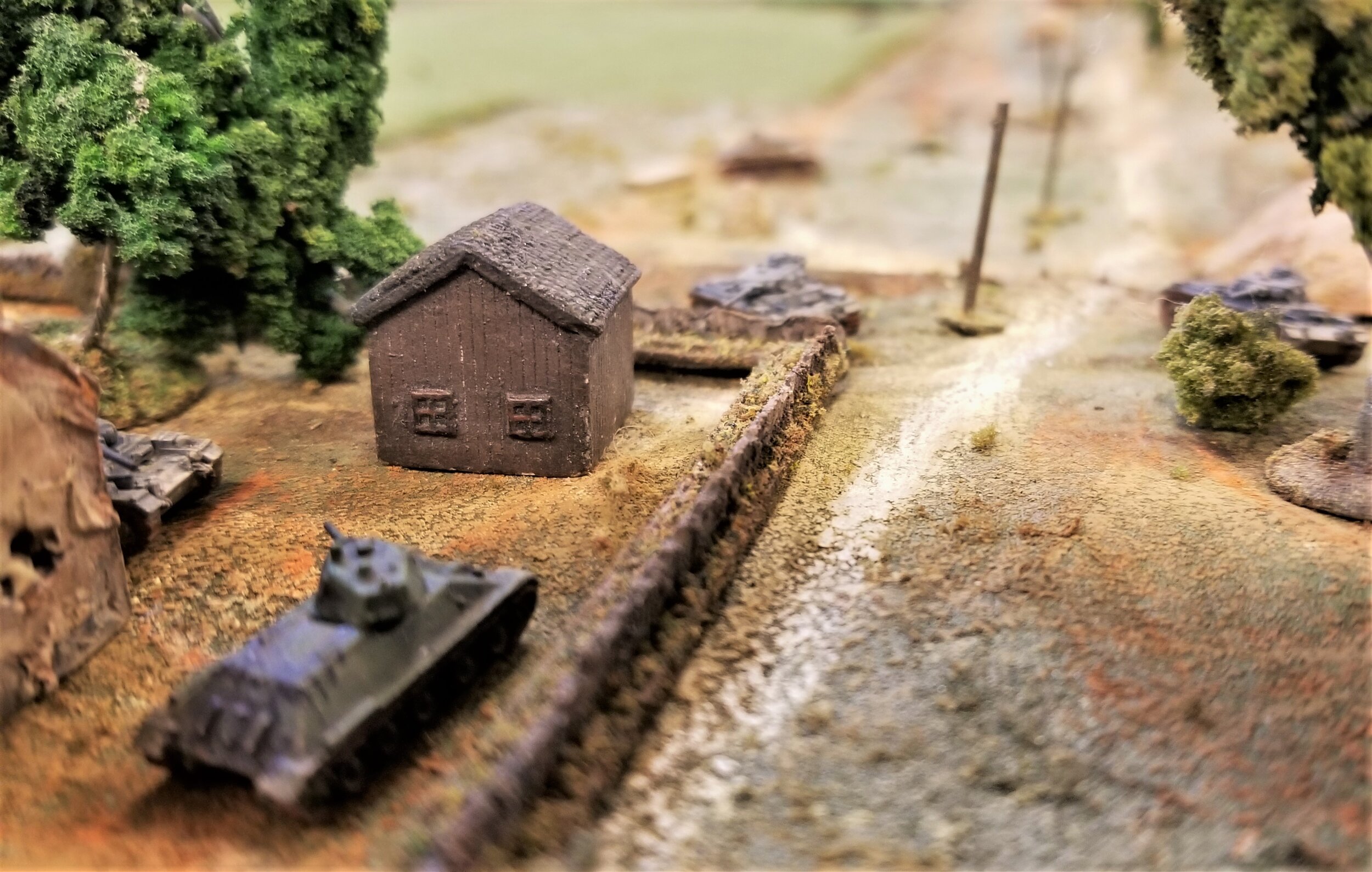
On the other flank
It was another situation of bad shooting by the Russians there, but fun The Soviet tank CO's tank was hit 8 times before he abandoned it and commandeered a mostly still functioning vehicle (-1 movement, after 4 hits) The other 2 T34s on this flank were each hit 4 times before being abandoned.
Here the brave tank CO is attacked by 3 PzIIIs and suffers 3 more hits. Net damage to these PzIIIs was 1 engine hit.





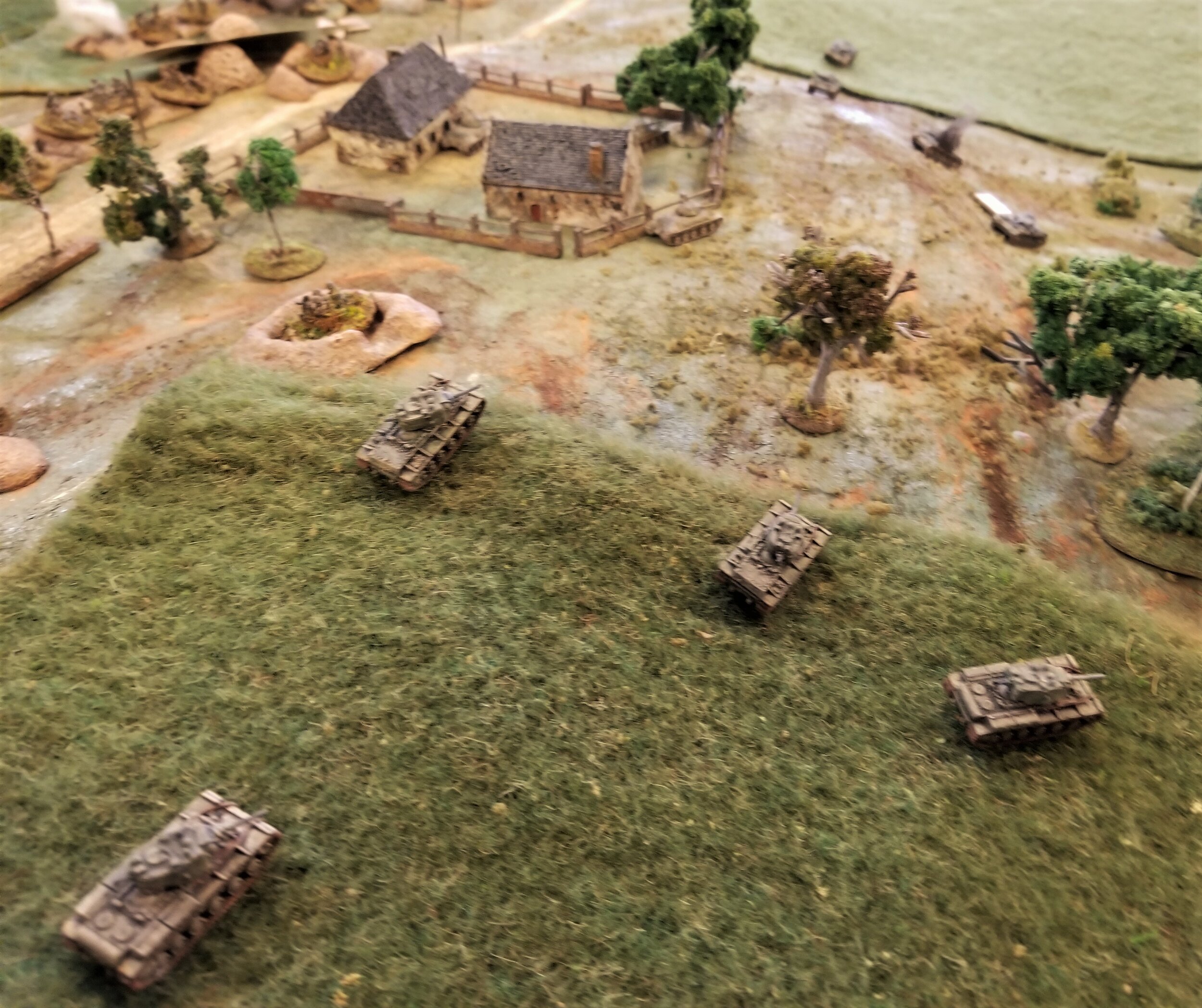







At this point we called the game. The Germans had overrun the dug in infantry and taken out 9 of 11 Russian tanks.
German casualties were 2 destroyed Pz IIIs, and 2 more damaged. 18 infantry casualties.
The Russians had only 24 infantry casualties-(out of over 100 men) mostly on the right hand platoon.
This was one of the best Barbarossa games that I've played. Some panzers covered almost the entire length of the table getting around the Russian defenses. And the untrained crew situation of the 'superior' Russian tanks was sufficiently demonstrated.
Mark Luther







































